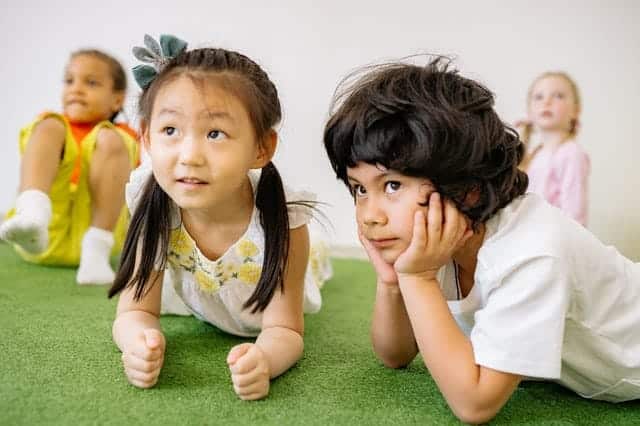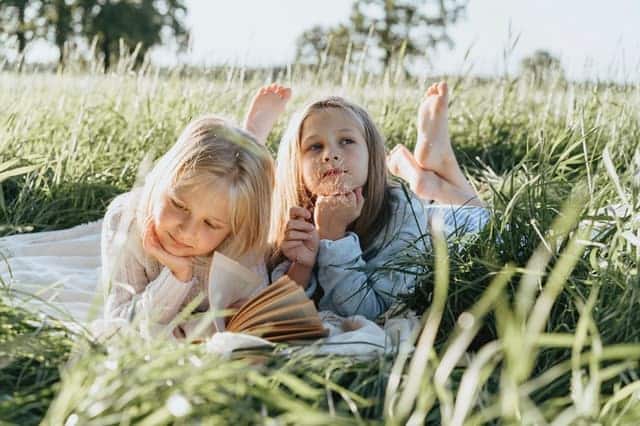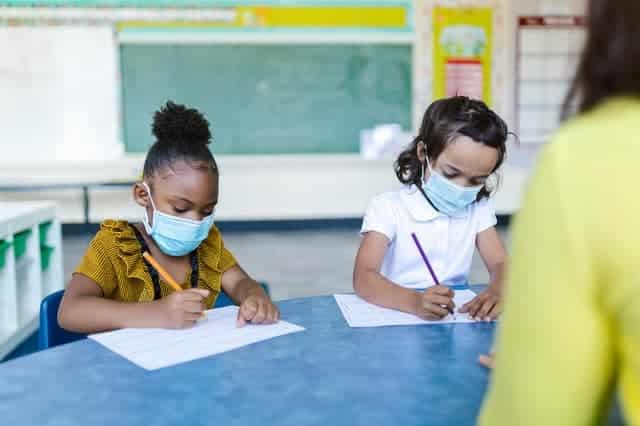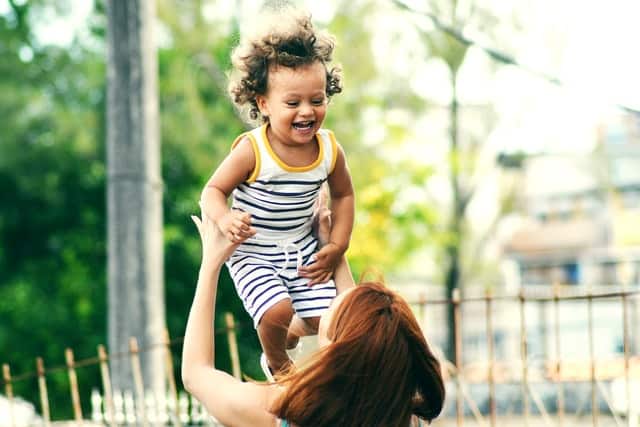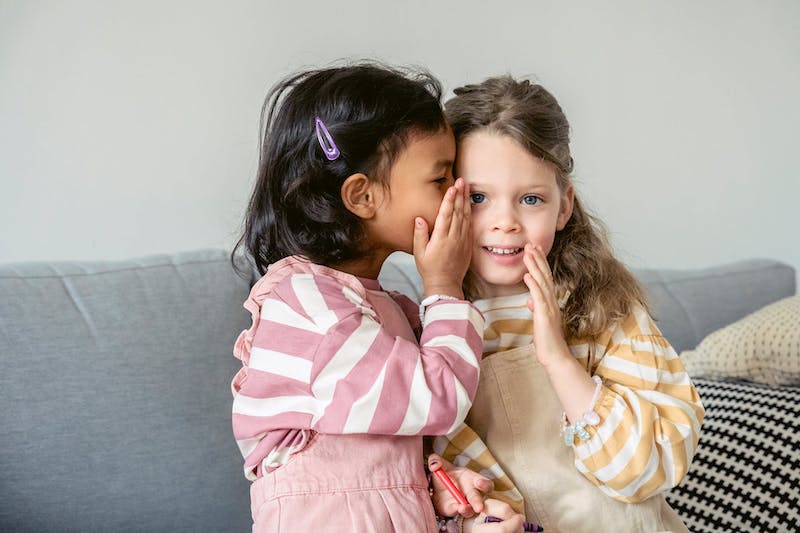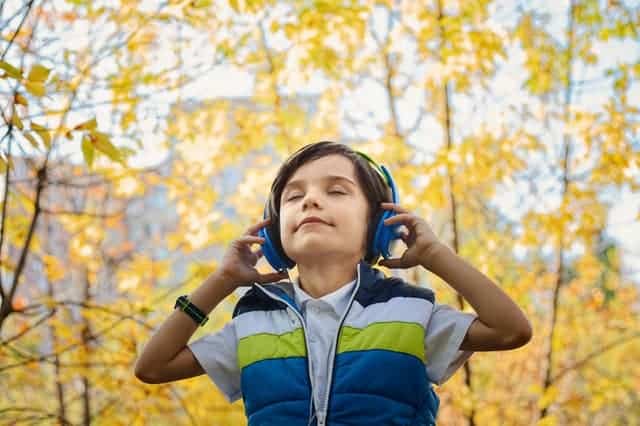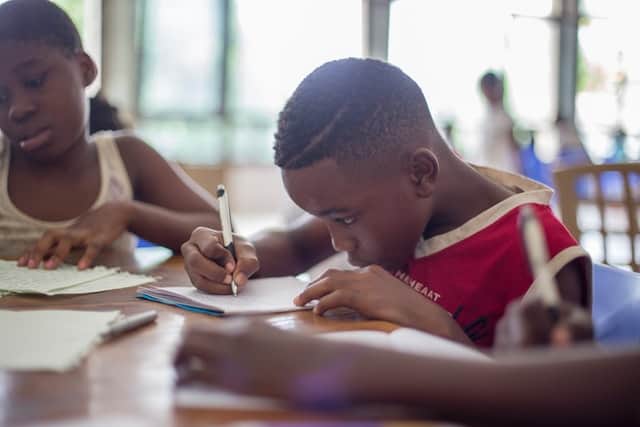Blog
Every classroom is a microcosm of the wider world—a place where students with different backgrounds, experiences, and identities come together to learn and grow. When educators are intentional about teaching diversity in the classroom, they help create spaces where all students feel seen, valued, and safe to be themselves.
At Soul Shoppe, we believe inclusion begins with compassion, understanding, and a willingness to see each student’s unique brilliance. It’s not just about acknowledging what is diversity—it’s about celebrating it in action.
What is diversity?
When we define diversity in the classroom, we’re talking about more than race, ethnicity, or language—though it does include those differentiators. Types of diversity in the classroom also include:
- Learning styles and abilities
- Socioeconomic backgrounds
- Family structures
- Gender identities and expressions
- Neurodiversity
- Religious beliefs
- Life experiences
Cognitive diversity in the classroom—how students think, solve problems, and view the world—enriches discussion and opens up multiple pathways to learning.
Why is diversity in the classroom important?
The importance of diversity in the classroom goes beyond representation. Students who feel accepted are more likely to:
- Engage in class
- Feel confident expressing themselves
- Show empathy and collaboration
- Develop leadership and social skills
Studies also show that classrooms rich in diversity and education improve critical thinking and reduce bias. When children grow up learning in diverse environments, they carry those lessons into the world, building more inclusive communities as adults.
Simple, everyday ways to celebrate differences
You don’t need grand gestures to create a diverse classroom. It’s often the small, consistent actions that make the biggest impact. Here are practical ways to weave inclusion into daily routines:
1. Use inclusive language
From morning greetings to classroom directions, language matters. Celebrate students’ names and identities with care. This reinforces that everyone belongs.
2. Highlight diverse voices and stories
Representation in books, posters, and lessons helps students see themselves—and others—as part of the narrative. Use diversity in the classroom examples through literature, history, and media.
3. Encourage curiosity, not assumptions
Create a classroom where students feel safe asking respectful questions and exploring differences. Teach them to say, “Tell me more” instead of assuming they understand someone else’s experience.
4. Acknowledge holidays and traditions
From Lunar New Year to Juneteenth to Día de los Muertos, recognize and honor a wide range of cultural celebrations. Let students share how they and their families observe meaningful traditions.
Inclusion in the classroom through SEL
Social emotional learning (SEL) gives students the tools to practice empathy, resolve conflict, and build positive relationships—foundations of an inclusive learning environment.
Soul Shoppe’s Respect Differences program directly supports teaching diversity in the classroom. It encourages:
- Acceptance of others
- Curiosity over judgment
- A culture of shared responsibility
Likewise, our Elementary SEL curriculum Tools of the Heart integrates emotional intelligence, active listening, and perspective-taking into the everyday classroom experience. These lessons help nurture inclusive spaces where kindness and community thrive.
Explore more about our full approach to social emotional learning.
Activities to promote diversity in the classroom
Let students explore their identities, and the identities of others, through engaging, thoughtful activities.
Identity Shields
Have students create a personal “identity shield” showing the things that make them who they are—family, interests, heritage, and more. Discuss what makes each shield unique and special.
Story Circles
Encourage students to share stories about a time they felt different, or a time they learned something new about someone else. This activity builds empathy and understanding.
“I See You” Affirmations
End each week with students giving one another kind affirmations that reflect appreciation for differences. For example: “I noticed how you shared your culture during our project. That was brave and cool!”
Teaching diversity in a way that feels real

Sometimes, conversations about diversity in schools can feel abstract. What makes the biggest difference is when inclusion in the classroom becomes part of the culture, not just a topic for special months or lessons.
That means:
- Making space for every student’s voice
- Responding to exclusion with curiosity and learning, not blame
- Reflecting and adjusting when something isn’t working
- Involving families and community perspectives
The long-term impact of diversity in the classroom
A positive classroom climate grounded in diversity helps students thrive—not just academically, but emotionally and socially. They become:
- More self-aware
- Better communicators
- More capable of working with others from different walks of life
This is the impact of diversity in the classroom: a ripple effect that shapes how children see themselves, each other, and the world around them.
Final thoughts: A place where everyone belongs
Teaching diversity in the classroom isn’t about perfection. It’s about presence, awareness, and the willingness to learn alongside your students.
At Soul Shoppe, we believe every child deserves to feel known and respected. Through programs like Respect Differences and Tools of the Heart, we help educators build classrooms where everyone belongs—and where every student grows into their full, unique self.
Dear Amazing Principals and Peacemaker Liaisons,
You are AMAZING!!!!
Dear Wonderful Peacemakers,
• Normally at this time of year, you would be having your End-of-Year Peacemaker Party with your Principal and Peacemaker Liaisons. Since that is not possible this time, we Peacemaker Trainers have a little something for you, by video instead. Whether you had Dara, Arek or Jill as your Peacemaker Trainer this year, all three of our vidoes are for ALL of you, below…and your entire family, too! 🙂
Arek shares stories and useful home practices for CHECKING IN WITH FAMILY, to help everyone get along wonderfully well.
Jill and some adorable friends share the benefits of DROPPING YOUR STORY, to help people (and puppets!) get back to peace and fun at home.
Before you watch the next video, grab some paper and things to draw and color with! Dara shows how to make your very own PEACEMAKER CELEBRATION CERTIFICATE, plus how to set up a Peacemaking Station or Peace Corner for the whole family to use and enjoy.
Whatever grade you are in, whatever peacemaking you have done, and whatever peace you continue to bring into the world, we are so proud of each and every one of you. You have worked so hard, with so much courage, dedication and love. You make this world a more beautiful, happy and peace-filled place for everyone.
Thank you, Peacemakers!!!!!
We want to send you gratitude for being part of our community.
At our celebration, we heard the voices of our AMAZING student peacemakers. We listened as our educators spoke to the deep transformation that happens in a school’s community over years of working with Soul Shoppe. And… we had a ton of fun dancing and winning fantastic prizes!
Just this week, a parent sent a donation with a note about Soul Shoppe’s positive impact on their family and home:
“Our 7yr-old matured in just a few sessions more than he did through most of virtual learning and has taught the methods in our household. Inspiring!”
Yes, we are INSPIRED!
We crunched some numbers… over these 20 years, we’ve supported 7,500 parents and 18,000 teachers to be empathetic adult role models for our next generation.
We have delivered over 48,000 workshops to schools… which for those of you who have seen our work means we have hit the play button on Aretha Franklin’s “Respect” 48,000 times 🙂
We have worked directly with over 560,000 individual kids, some of whom are now grown up… paying taxes, voting, and beginning their careers.
Of course it is our community (you!) who enables us to continue our work. You. Are. Amazing!
We’ve listed a few incredible ways you can take action to help Soul Shoppe launch into the NEXT 20 YEARS of big-hearted school programs.
- Donate! We’ve raised $14,750 towards our June 30 goal of $20,000! We are SO close to our goal. If you’d like to help us close the gap with a donation, please click here to support.
- Record a short video! Please let us know why you love Soul Shoppe! Record a 30-60 second video about our impact on your life! Click here to record your video!
- Connect us to more schools! Maybe your friends’ kid is starting at a new elementary school and you suggest they look into Soul Shoppe. Or… maybe you are at a barbecue and someone mentions they work in the local school district? This is a GREAT opportunity to tell them about Soul Shoppe, and maybe connect us all over email.
- Share our content online. We put a lot of work into our newsletter and social media efforts. Please spread the Soul Shoppe love by sending to friends and family! Good goes around when we all pitch in and engage when we are able.
Thank you again for what YOU have done to make our 20 years a success, and the next 20 years a reality!
Key adult figures in any child’s development include their parents, guardians, and teachers. Sometimes those are the same people if the children are homeschooled.
It’s valuable for every adult involved in the development and preparation of children to approach that responsibility seriously. It’s good to grow more familiar with the tools currently in use and to learn more about the other ways of doing things with proven value.
According to the National Library of Medicine, there are four different parenting styles (NIH). Parents will tend to default to one parenting style depending on their personality, but they will also use tools from the other parenting styles depending on the demands of a given situation. A balanced approach to parenting overall may prove most effective in the long run. So, it’s important to understand all four styles of parenting and the impact of parenting styles on child development.
4 Different Parenting Styles
What are the Four Basic Parenting Styles?
Let’s break down what the four basic parenting styles are and then take a look at their impact on the development of children.
These four different parenting styles were identified by the psychologists, Baumrind, Maccoby, and Martin (MDPI).
Here they are summed up briefly (NIH):
Authoritarian Parenting
Authoritarian parenting is rules-based parenting. It’s a parenting style based on structure and the understanding of consequences if rules are not followed. Authoritarian parenting tends to set high expectations and limits flexibility.
When children develop in an authoritarian environment, they are usually well-behaved, because they tend to grow up used to associating misbehavior with negative consequences. Children who grow up in an authoritarian parenting environment are generally good at following rules, since they develop a sense that things go well when they follow rules.
Children who grow up in an authoritarian parenting environment may also develop tendencies toward aggression. Or, they may develop shyness and social ineptness. It is possible that children developing in mainly authoritarian environments will develop poor self-esteem without the situation getting tempered with other parenting styles.
Authoritative Parenting
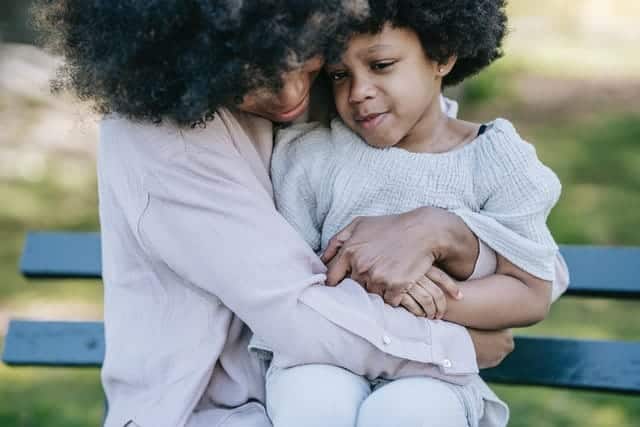
A communication-heavy style of parenting, authoritative parenting is based on guidelines and clear statements of expectations by both parents and children. In an authoritative parenting style, while parents retain their role as provider and primary decision-maker, children are encouraged to participate in decisions around setting goals and expectations.
Authoritative parenting strategies create a developmental environment where children gain confidence, responsibility, and a sense of self-regulation. Children who grow up in an authoritative parenting environment tend to develop a sense of their own value. As a result, they are more likely to aim for and achieve high performance in whatever endeavor they set their minds to.
Permissive Parenting
While the context of permissive parenting might create a warm and nurturing environment, it can also create an environment where children develop a sense that their actions have no consequences. Parents with tendencies towards permissive parenting styles often act more like friends than parents.
Growing up with few rules can encourage children to develop habits of indulgence with potential negative consequences. For example, poor self-regulation around snacks. Children who grow up in a permissive parenting environment may also develop lax habits about homework and excessive habits about entertainment. A lack of significant moderation in parenting can lead to an absence of sense of urgency in a child’s development.
Uninvolved Parenting

An uninvolved parenting environment is an environment with little to no structure or involvement between parents and children. Uninvolved parenting environments still provide for a child’s basic needs, but do not create much structure for the child.
Without any particular discipline or encouragement structure, children who develop in an uninvolved parenting environment often grow to possess a high sense of self-sufficiency and resilience. On the other hand, these children might also have trouble controlling and expressing emotions. Or, they might develop ineffective or relatively non-existent coping strategies. They may also have trouble academically and socially due to an untethered sense of accomplishment and consequence. Children who develop in an uninvolved parenting environment may also have trouble building strong relationships with their peers.
Impact of Parenting Styles on Child Development
It is fair to say that a child will develop in profoundly different ways depending on the most prevalent style of parenting.
Different children and different situations need different kinds of nurturing. Everyone with the responsibility of nurturing children should develop their own parenting skills in order to foster the best possible developmental environments for the children in their charge.
To learn about positive parenting strategies and workshops click here. For information on social emotional homeschool electives click here.
Soul Shoppe provides social emotional learning programs for children. For more than twenty years we’ve created tools and empowered educators to incorporate emotional intelligence into curriculum. Soul Shoppe strategies encourage empathy and emotional awareness in children. Whether helping in the classroom or assisting parents at home, Soul Shoppe brings social skills to the forefront of the discussion. Click for our parent support programs.
You May Also Like:
Here at Soul Shoppe, we believe that good goes around. That’s why we wanted to keep the good times rolling with more exciting events and innovative programs especially designed to help kids and adults navigate these challenging times.
November’s event was 5 Days of Fun!, a virtual recess series that brought together hundreds of kids every day. We want to express our deepest gratitude to the kids and adults who joined us to throw down some fresh beats, laugh it up, dance out our affirmations, and take an inside look at our emotions. Thank you for helping us spread joy and infuse the school day with more fun!
Recess gives kids the chance to flex their imaginations, develop complex social relationships, and consolidate the lessons they’re learning – not to mention get their wiggles out! But with distance learning, it can be hard to find the time to design activities that will genuinely engage your students.
Our facilitators will drew on kids’ real world skills to ground them in their physical environment and foster genuine connection with their classmates so they can continue to thrive whether they’re in the classroom or at home.
As countless studies show, that 15 minute midday break can mean the difference between academic breakthroughs and mid-lesson meltdowns. Kids aren’t designed to sit still, let alone stare at a computer screen for five hours a day. That’s why recess is more important now than ever! ⠀
Stay tuned for the highlights reel and read on to learn more about how Soul Shoppe is adapting to these uncertain times to help your kids thrive.
The phrases “tolerance” and “acceptance” are often used to talk about diversity. Sometimes, they are seen as words in posters around classrooms. Other times, their words are echoed in assembly rooms. However, teaching diversity requires meaningful, planned activities and discussions. There also needs to be a clear distinction between both words. Sometimes they are used interchangeably to mean the same thing. However, these words have their own unique meaning.
Diversity is defined as differences in race, ethnicity, sexual orientation, political beliefs, physical abilities, and more (CUNY). There is a philosophical divide on whether to tolerate or accept diversity.
In this article, we explore the difference between acceptance vs tolerance. Next, we include 10 fun ways to teach diversity concepts.
Acceptance vs Tolerance
There are significant differences between acceptance and tolerance. Let’s explore:
Tolerance
Tolerance is the “level of ability that someone has to recognize and respect other values and differences” (Psychology Today). This includes restraining oneself from negative expressions or opinions about people who are different. However, the word “tolerate” means to put up with something that is possibly painful, harmful, or is simply not wanted (Psychology Today). Consequently, it means something that must be endured. When we consider the root of this definition, we must consider the underlying implications.
Acceptance
Acceptance of diversity means to respect other people’s differences and backgrounds. Similarly, it means recognizing individual differences (CUNY). These differences can include race, ethnicity, gender, sexual orientation, religion, and much more. While tolerance simply endures people that are different, acceptance moves past that and promotes an environment of equity, mutual respect, and appreciation. Acceptance also encourages others to see people as individuals versus groups of people.
Which one is better?
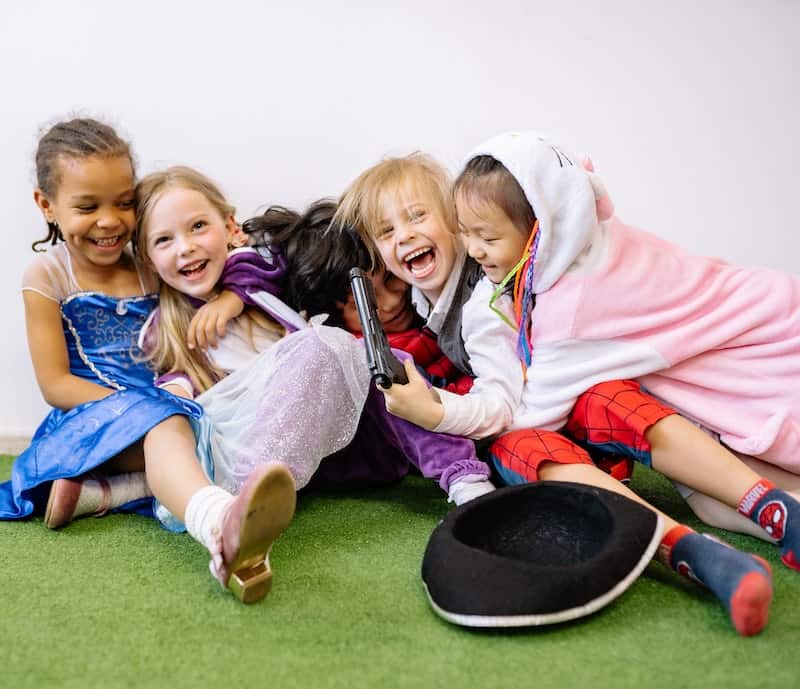
When it comes to tolerance vs acceptance, acceptance is the better concept to understand and apply. Anyone can tolerate another person or group of people. It’s acceptance that lets us see diversity as an asset, not a threat. When we strive for acceptance, we also strive for equality and mutual respect.
Best Ways to Teach Diversity
Some of the best ways to teach diversity are through activities. Here are 10 activities, grouped by age, that students can enjoy.
Elementary
- Listen to songs in different languages. Some of them can include nursery rhymes or fun learning songs. If the song is different from one they know, include lyrics so they can follow along. You can even teach your students a new song to sing to their families!
- Have students put together a world map puzzle in groups or as a whole-group activity. Discuss how big the world is, landmarks, and geography. (Naturespath).
- Make multicultural crafts like those listed here.
- Use online courses to supplement learning. Soul Shoppe’s Respect Differences course teaches elementary students how to appreciate the things that make us different and unique.
Middle School
- Go out and experience a local ethnic restaurant.
- Have students write to a pen pal abroad (penpalworld.com).
- Listen to multicultural music as students journal, or have a mini dance party. (Naturespath).
- Go on a field trip to a local museum to learn about different cultures.
High School
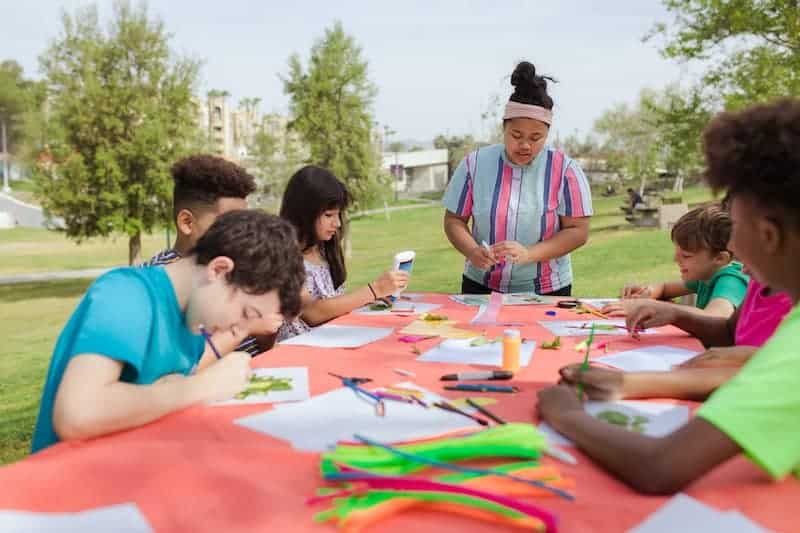
- Take students to a local cultural festival.
- Have students read books on other cultures.
- Have students cook foods from their own culture or different cultures and share dishes. (Be sure to offer resources for those who need them.)
There are many activities for kids that embrace diversity. Click for more activities for younger students and students of all ages.
Conclusion
It’s important to teach students to do more than tolerate diversity. Being accepting and striving to understand other cultures is an important part of childhood emotional development. Furthermore, it helps create a culture of inclusion where students of different backgrounds can reach their full potential. It is important for educators and caregivers to help children learn these skills.
Soul Shoppe has social emotional learning programs dedicated to the mission of creating safe learning environments. Soul Shoppe helps schools, parents, and businesses teach empathy, emotional literacy, conflict resolution, and more.
You May Also Like:
Virtual Social Emotional Learning Activities
Teaching Children About Diversity
Sources:
Childhood is an incredibly precious and precarious time in one’s emotional development. According to Rasmussen University, this development process can be characterized by three stages: noticing emotions, expressing emotions, and managing emotions.
The journey of managing the overwhelming emotions of childhood isn’t always an easy one, let alone a straightforward one. In fact, the process can become especially challenging to handle when implementing tools on anger management for kids.
If you want to know how to help your children with anger management, whether inside or outside of the classroom, here’s how you can respond to that anger within a compassionate, empathy-focused framework.
Anger Management for Kids
Anger Management in the Classroom
The classroom is a great source of togetherness and community as children learn alongside their peers and come to form their first friendships—bonds that could potentially last a lifetime. However, typical school stressors, from bullying to challenging work, can also turn the classroom into a source of tension.
Even older children encounter challenges with regulating and controlling their emotions in the classroom. In a study conducted a decade ago, nearly 1 in 12 American adolescents (nearly 6 million people) were found to exhibit traits of Intermittent Explosive Disorder (IED), a condition characterized by uncontrollable, particularly volatile outbursts of anger. (Harvard Medical School)
Anger often stems from intense feelings of being provoked, hurt, or wronged. Since it takes children some time to fully and properly discern the differences between right from wrong, it also takes them some time to formulate proper responses and strategies to cope with feeling wronged.
This is where effective, empathy-focused education plays a crucial role in demonstrating healthy examples of anger management for kids. Even planting a few positive seeds now can prove vital for promoting positive growth long into the future. One great strategy for cultivating these positive seeds could involve teachers facilitating group activities for anger management. Here’s what that would entail.
Group Activities for Anger Management
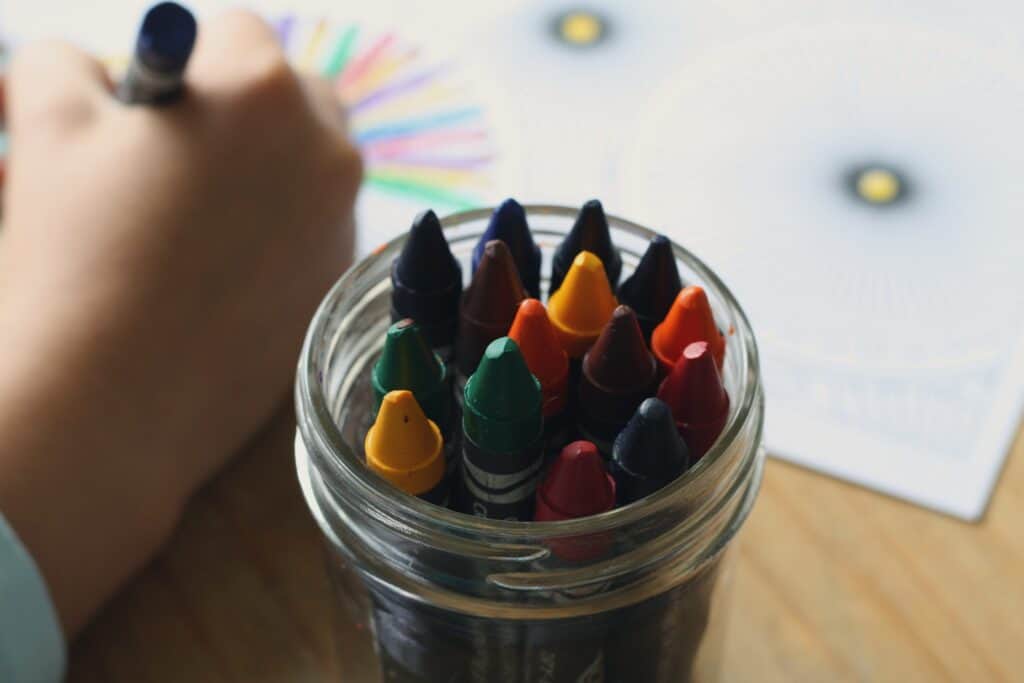
Group activities and games offer a myriad of insightful, fun opportunities for young students to learn the fundamentals of cooperation. These activities not only help with anger management in the classroom, but healthy emotional management at large.
As an educator, there are a number of creative group activities for anger management you could consider incorporating into your classroom. We hope these suggestions will help spark some inspiration.
Below are some popular group activities for anger management worth some consideration:
- Art Therapy: Drawing, painting, sculpting, and sketching all offer ways for children to let their expressive creative abilities flourish, and in turn, creatively visualize their feelings. Art therapy has been shown to effectively work with 68% of children. (Frontiers In Psychology)
- Role Play: Acting, charades, and puppet shows are all excellent options for children to externalize their emotions in safe, controlled environments. Rather than yelling or fighting, role-playing offers students a fun, healthy outlet to voice their anger.
- Anger Worksheets: Getting kids to express, process, and challenge angry thoughts through creative writing prompts and in-depth worksheets can offer an invaluable resource and means of therapeutic expression. You can find many printable anger management worksheets on the web.
- Mindfulness Exercises: Breathing exercises are a remarkably effective lesson to impart on students if you’d like to teach them how to better regulate their emotions. During break time, consider facilitating group meditations or breathing exercises, encouraging students to mindfully reflect on their emotions. Learn the Stop and Breathe technique from Soul Shoppe here.
- Board Games: Group-focused board games promote the ideals of collaboration, working together, and hashing out conflict.
- Safe Learning Environments: A safe learning environment is a calmer, happier one, where students are encouraged to implement research-backed conflict resolution techniques. You can find conflict resolution activities for kids here. Additionally, Soul Shoppe provides a peace path to help students learn how to work out their conflict and emotions in a healthy way.
These group activities can provide positive emotional benefits as kids learn to navigate challenging emotions in a safe environment.
But what if all else fails, and little Timmy’s still having trouble controlling his temper? Here are some key steps to keep in mind while trying to manage a child’s anger.
How To Handle An Angry Aggressive Child
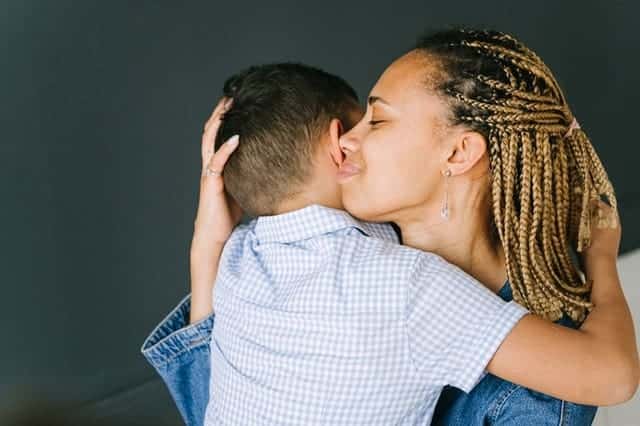
- Talk Calmly: A parent or authority figure may feel tempted to meet a child’s anger with anger of their own, by yelling back at them. This will likely exacerbate the child’s emotional tension even further. A quiet voice is a great tool to help minimize tension.
- Stay Present: While you shouldn’t meet anger with retaliatory yelling, you also shouldn’t capitulate to the child’s anger. Be firm, resolute, composed, and try to teach the child a more peaceful means of conflict resolution after they calm down.
- Discipline Appropriately: You can discipline the child with appropriate consequences when they choose bad behavior. However, you should not use overly harsh punishments. Disproportionate punishments will only make the child more angry. Instead, once the child is calm, talk about why they received the punishment they did and how it related to their choices in the given situation. It’s important that they understand cause and effect.
- Stay Connected: Connection is extremely important in a child’s life. Help encourage connection through social emotional learning programs. Validate their emotions and teach them how to channel them in a better way.
Anger management and emotional development is a lifelong journey, not only for kids, but well into adulthood. For roughly two decades, Soul Shoppe’s helped thousands of children find their first steps in that journey. We connect with over 60,000 children each year, teaching them new empathy-based approaches to conflict resolution and emotional regulation.
Our SEL programs for elementary schools have yielded proven results in helping teachers and parents teach emotional regulation. Contact us today if you’d like to learn more about our innovative social-emotional learning programs!
You May Also Like:
Teaching Children How to Self Soothe
How to Express Feelings in Words
In a turbulent world where stressors are abundant, (Harvard) providing students with sufficient anxiety coping skills is important. Stress has consistent mental and physical effects on one’s health. The classroom is one place where children can learn skills to cope with stress.
Anxiety Coping Skills for Kids in the Classroom
Creating classroom-appropriate coping skills activities for kids requires an imaginative approach. In principle, everyone needs to practice calming techniques to deal with stress. In practice, children are more likely to remember anxiety coping strategies when they’re incorporated into interactive activities.
Creating coping strategies for students requires a dual-pronged approach. On the one hand, it means creating activities with a foundation on the causes of stress and anxiety. On the other hand, every classroom is different, with different challenges and resources. Therefore, different stressors drive each student’s anxiety and may need to be addressed separately.
Here’s a quick rundown of stress and anxiety coping strategies to help educators teach activities around anxiety coping skills for kids.
Anxiety Coping Strategies
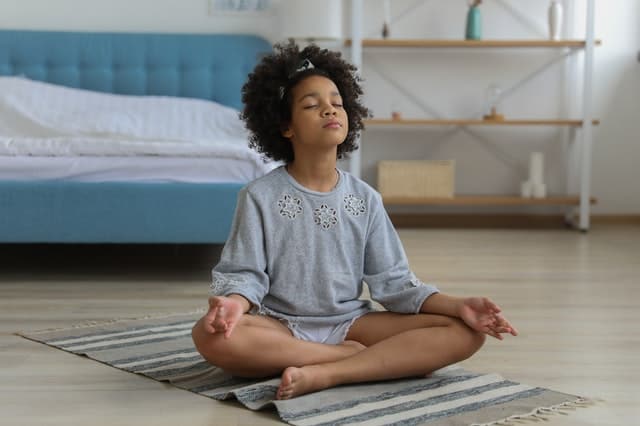
Stress and anxiety shadow the day-to-day lives of millions of Americans. Children are no exception. Stressors that cause anxiety are on the rise, and the prevalence of younger children dealing with them is also increasing. (HarvardGSE)
Recent studies were conducted on the most effective techniques for coping with stress and anxiety. It was found that coping with anxiety should be based on executive function through self-regulation (HarvardCDC).
In the context of teaching coping strategies to kids, this refers to a practice of cultivating the foundational mental capacities for active self-regulation. These are skills fundamental to a child’s development.
Cultivating executive function through self-regulation prepares children for success in life. There are technical bases for practicing executive function. (HarvardCDC) Put into usable terms, these bases are:
- Working memory. This includes the capacity to retain information learned from experiences and lessons. In this context, manipulation refers to an ability to examine the information from different perspectives, to synthesize the information with other information to come to new conclusions, and other mental practices useful for problem-solving.
- Mental flexibility. This refers to the ability to adapt to new circumstances. For children, a lot of their experiences are new experiences. Fortunately for them, children tend to have good mental flexibility. That’s why early childhood is such an opportune time to design activities to encourage children to cope with stress.
- Self-control. In the long run, self-control will be one of the most important fundamental skills children will need to practice to help them cope with anxiety. Self-control involves self-reflection on the part of children, as well as active decision-making regarding their behavior. Educators can create coping skills activities that cultivate opportunities for kids to practice self-control.
These processes for cultivating executive function through self-regulation will build strong foundations for developing coping skills activities.
Coping Skills Activities for Kids
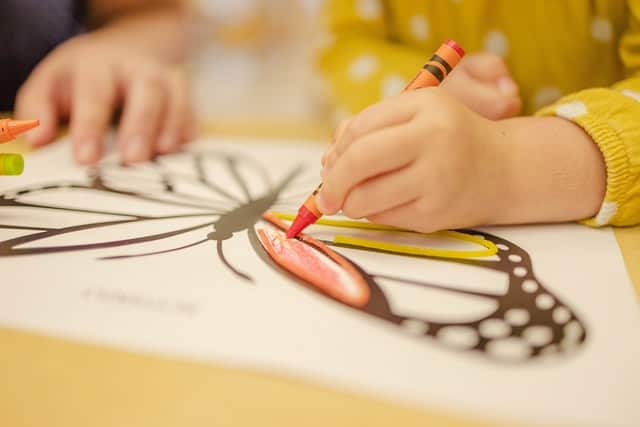
There are many potential coping skills activities for kids that educators can add to their curricula. Educators should bear in mind the foundations of anxiety coping strategies when developing classroom activities, and at the same time adapt any activities to the students in their individual classrooms.
Here are a few suggestions for activities that have proven effective in teaching anxiety coping strategies. Educators can start with this list and then develop their own activities from there (Pathway):
- Schedule daily emotional check-ins. These check-ins create the chance for students to practice self-reflection and self-awareness.
- Have children make something creative that shows them messiness is okay. Painting, coloring, or clay gives children something to focus on and control, helping them practice spatial reasoning, working memory, and active mental flexibility.
- Gratitude journaling/compliment list helps with positive thinking and reflection. This activity helps children cultivate a practice for seeing scenarios from calmer and more down to earth perspectives, helping them with working memory and self control.
- Practice deep breathing. This go-to strategy is important when coping with anxiety. A wide body of research has substantiated the benefits, both mental and physical, of deep breathing. (Routledge) At Soul Shoppe, we use the Stop and Breathe Technique. This is a valuable anxiety coping strategy that any educator can incorporate into their curriculum.
- Encourage children to read books that are age-appropriate with themes of stress and anxiety. Reading is a great way for students to see anxiety coping skills for kids in action through the stories of others. Dissect and discuss these stories to encourage deeper thinking.
At Soul Shoppe, we offer special social and emotional learning techniques for coping with anxiety. Learn more about the Stop and Breathe Technique and how to create a peace corner to help kids cope with anxiety and other big feelings. Soul Shoppe provides social emotional learning programs and encourages self-awareness and self-soothing techniques in children. Click for more information on SEL Programs for Elementary Schools.
You May Also Like:
Teaching Children How to Self Soothe
Conflict Resolution Activities for Kids
After Stoneman Douglas, making NEVER AGAIN a reality…
In the wake of the shootings at Stoneman Douglas High School, we at Soul Shoppe must confess a painful truth. We have been stunned, paralyzed and silent, wondering what else there is to say that hasn’t already been said. How could we contribute to lasting healing and change? But as we watched our young people say, “Never Again” and rise up to use their voices, we finally found ours. Two letters follow: one to young people and one to adults.
Dear Young People
We’re sorry. We, the adults in this country, have failed you in so many ways. When you were born, you looked to the adults in your world to meet your needs, to feed you, clothe you, keep you safe and give you love. We have not done our job (keeping you physically and emotionally safe) leaving you the task of doing that for yourselves.
We have created communities where a young person can feel isolated, depairing, and in such pain that they could inflict so much violence around them. Although we know the cycle of violence and how pain can be turned into healing when it is met with empathy, we did not respond to your cries for help.
As you stand up in larger and larger numbers, demanding action and accountability to keep our schools and all communities safe, you inspire us. We recognize that in our inaction, in our growing cynicism coupled with increasing numbness, we grew to believe that nothing could be done. Or maybe that we were doing all we could.
You shouldn’t have to do this. We don’t want you to wonder if you and your friends are safe at school. Taking your time to advocate to reduce weapons in our communities. We don’t want you to plan marches in order for people to notice what’s wrong— and that your voices matter–and that the time is now.
The power in your voice has been evident since the moment you started speaking as a child. Your leadership is an asset. We see you in communities planning innovative ways to raise your voices as well as speak truth to your power. And connecting to each other across geographic and racial divisions. We will surround you with all the love and care you need. As adults, we will be true allies and use our own power–our skills, our resources, our access–to shine more light on your brilliance.
We promise to do right by you.
In Solidarity,
Soul Shoppe

Dear Adults
We must have the backs of our young people in our schools, in our communities and in our homes. Let’s recognize the voices of our young people for they are always the best authorities on their own experience. Let’s listen deeply to what they say and then take action. Here are some suggestions on where to start:
-
Learn to listen with an open heart and mind. Sometimes it’s challenging to listen. We have opinions, ideas, and so much advice! Our young people need our listening, not our judgment or feedback. Cultivate our listening by taking a moment to slow down so we can truly hear. We might be surprised by what we learn. Emma Gonzalez Opens Up
-
Create safe spaces at home to talk about and work through conflict. Use I-Messages and learn how to clean things up when our words or actions have caused hurt.
-
Intervene in the persistent stereotype of young people as problems to be solved and break the cycle of adultism. Name and change our own participation in adultist behaviors.
-
Recognize when we are numbing out, overloaded or unable to be our full selves. Tap on someone else to carry the load until we are fully charged again. Model self-care so that this rising generation of activists will have the tools to thrive as activists in the long term.
- Have the backs of our young people as they lead and plan actions around the country. Become informed about student rights. Show our full support of their voices by joining them and following their lead through the March for Our Lives Petition and March for Our Lives on Saturday, March 24th.
Every day at Soul Shoppe, we witness brave, powerful young people who step into their vulnerability, share their experience and then receive the empathy and love of their classmates. We watch them stand up with courage and speak out, and as a result they inspire us. At the core of what we do is a commitment to be open and vulnerable, therefore having our young people move us with what they have to share. It’s time for all of us to stretch ourselves and have the same courage our young people are demonstrating. We promise to support these young leaders and their teachers, and to amplify their efforts as they show us how to create big-hearted communities where everyone belongs.
In Solidarity,
Soul Shoppe
Online learning shook up the way educators had to think about building community in the classroom. The effects of lockdowns and social distancing have created an aftershock that’s still present. Creating a sense of community and belonging has never been more important as students are more distanced than before the pandemic.
Building community in the classroom is vital because it allows students to form positive relationships and feel included. It also teaches them social skills and collaboration.
In this article, we’ll explore activities that help to build community in the classroom. We’ll also identify characteristics of successful community building to evaluate implementation.
How do you build community in the classroom
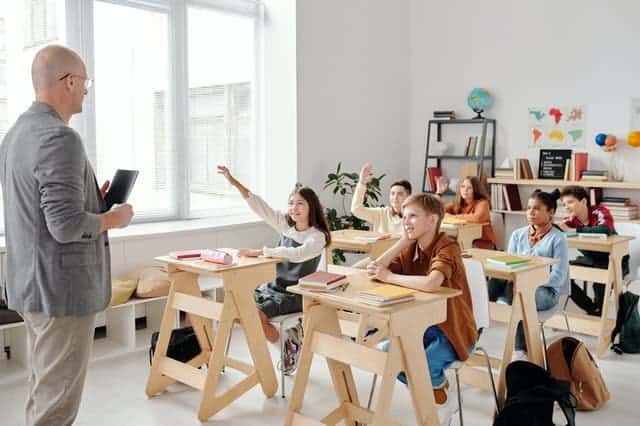
Building community in the classroom is more than assigning group work or teams. A community is created through sharing. Shared beliefs, shared values, shared ideas or attitudes all play a part. While classrooms are shared spaces, that doesn’t mean learners share the same ideals. When fostering community, it is important to encourage sharing, even when this leads to disagreement.
When utilizing small groups, sometimes it is best to let children choose their own groups to give them more autonomy. However, it is also important to assign groups on other occasions to get students interacting, who might not otherwise talk on the playground.
Community is about sharing but it’s also about compromise. This means that the best approach to building community is both fostering existing relationships and developing new ones. Use a balanced approach and keep it fresh.
Online learning and classroom community
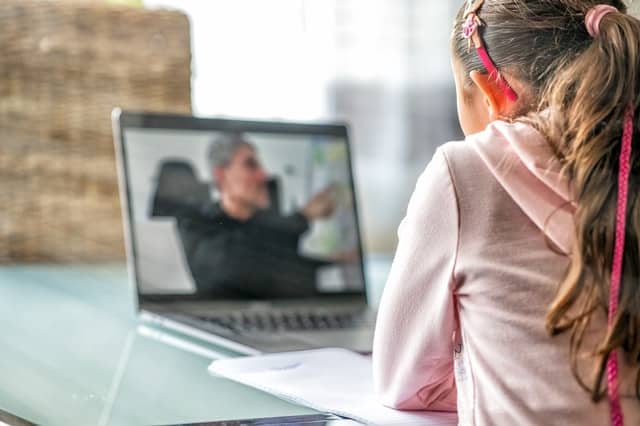
Online learning can make it difficult to replicate the methods used in classrooms pre-pandemic. Missing from virtual learning is the opportunity for children to regularly converse in small groups, not only to learn but also to develop their social skills. While some teachers do their best to create small group opportunities, there are fewer of them, and interaction is often limited. Social interactions are sometimes limited to typing on a keyboard or “raising” a virtual hand. While teachers work to nurture discussion, some students are less responsive to the new medium.
When online learning is present, it’s important to utilize breakout rooms and create social games to give students a sense of connection. Icebreakers like human bingo, where children record a short video introduction, and students must match listed interests on a bingo board to a name, are a great way to promote classroom community. In this activity, students discuss answers through microphones and typed messages. Find more examples of virtual social learning activities, here.
Activities to build community in the classroom

There are methods for creating community in the classroom that can be used both offline and online. Here are core ideas to create classroom community activities:
- Create classroom goals and rules together. To promote teamwork and community, have students help create group goals and rules together. This creates a shared purpose.
- Encourage your classroom to discuss their ideas. Through sharing beliefs and values or even approaches and methods, children are able to understand more about each other. They can also figure out their own position within a team. This helps them to become more aware and mindful in general. It also helps to combat assumptions to enable children to learn, rather than make judgments.
- Develop social awareness. Children require knowledge about their peers. They need to understand that differences are common parts of life and can be celebrated. Use a range of tools such as stories relevant to younger people to give them reference points and something to identify with. Implement games that encourage children to discuss likenesses and differences. That’s Me is a game where the teacher makes a statement, such as “I have a brother” and the children who can relate, chime in and say “that’s me” if it applies to them. Implement social icebreakers regularly throughout the year, rather than restricting to the beginning of the year. More substantive interactions may occur when used more frequently.
- Develop emotional awareness. Children need to grasp their own feelings to manage them. This also helps them to understand others through empathy. Ask your class to get introspective with creative writing and role play. Using their own feelings and emotions, and collaborating or sharing this with others will develop their personal and social awareness. Playing “Feelings Charades” where a child demonstrates an emotion and students guess the emotion is one activity that promotes emotional awareness.
- Take inspiration from businesses. Businesses are always looking to improve their working communities through team-building exercises. These are fantastic opportunities to create a social learning environment. Adapt online team-building games and activities meant for business to the classroom.
How to identify characteristics of classroom community
Characteristics of classroom community can be identified in multiple ways. Look for these moments to confirm that a classroom has indeed become a community.
- Note whether classmates are answering questions for others. Not only does this take a bit of pressure off of you as a teacher, but it also demonstrates that kids are willing to share with one another.
- Take moments to discuss things beyond the curriculum. If children are sharing details about their personal lives it shows that they are comfortable with each other. It also helps them to build trust because they begin to understand their differences and build their empathy skills.
- Use self-reflection to measure how well activities are working. After working in a group, children can fill out a worksheet to detail what they have learned, how they have learned it, and also indicate areas of improvement. This helps you plan future sessions that incorporate community building activities.
- Identify leaders in the classroom. Children might not always be confident in taking charge. Assigning a group leader, especially ones that wouldn’t normally occupy this position, gives them the opportunity to develop leadership skills and show that they are willing to engage. It also prevents children from being excluded when more confident kids automatically fill these roles. It’s a balancing act where you may reward natural leaders but also persuade others to take on the challenge.
About Us
These are just a few ways to build community in the classroom and evaluate the results. Soul Shoppe provides professional development for teachers online with social emotional learning opportunities for students. See how our online courses can help.
You May Also Like:
Effects of Social Isolation on Children
Sources: Facinghistory.org, Study.com, Wired.com, Edutopia, Study.com, NYTimes, Columbia.edu
It is often assumed that children are quick to bounce back from difficult situations by default. People tend to think kids have less stress and worries than adults. However, this is not the case. It’s important to implement actionable strategies to help your children grow into more resilient human beings. Emotional resilience is something that requires development. When children are resilient, it reduces anxiety and allows them to cope in healthy ways with life’s ups and downs. Additionally, this is a skill that is necessary in adulthood. In this article, we’ll provide ideas to nurture building emotional resilience in kids.
What is Emotional Resilience
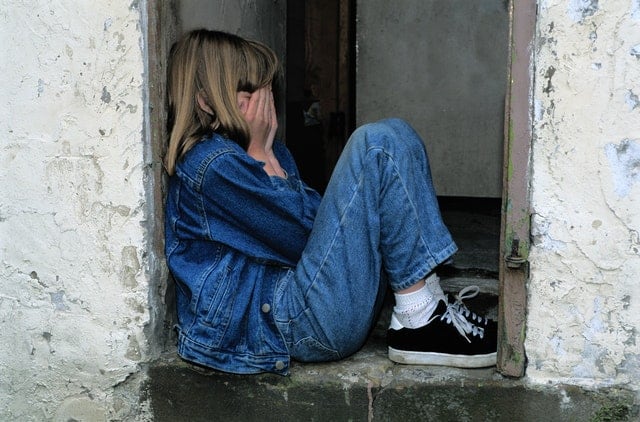
Emotional resilience is defined by the American Psychological Association (APA) as the ability to adapt to adverse, traumatic, or tragic events. It is a life skill to cope well with stress, anxiety, and emotional pain. For kids, this can come in a variety of situations from minor to more challenging cases.
Minor events that may trigger stress in children can include falling out with friends, taking tests, or managing difficult emotions. Major events that create stress can include moving houses, divorce, bullying, or dealing with the impact of COVID-19.
Building emotional resilience in kids is important because you cannot always be around to solve problems for them. Children must learn to cope with minor problems to help them when coping with major ones in the future. Teaching emotional resilience to kids helps them to lead a healthy, fulfilling life.
The Fulcrum of Resilience
There have been various depictions of emotional resilience in the academic community. Harvard furnishes the image of a seesaw with positive and negative outcomes, all balanced on a fulcrum. Even if a child has more negative outcomes than positive ones, as long as they have coping skills and some positive outcomes, this can shift their fulcrum. According to Harvard, “Protective experiences and coping skills on one side counterbalance significant adversity on the other. Resilience is evident when a child’s health and development tips toward positive outcomes — even when a heavy load of factors is stacked on the negative outcome side.”
We cannot always protect children from stressful events. However, we can teach children emotional resilience to make it easier for them to overcome problems when they occur.
How to Build Emotional Resilience
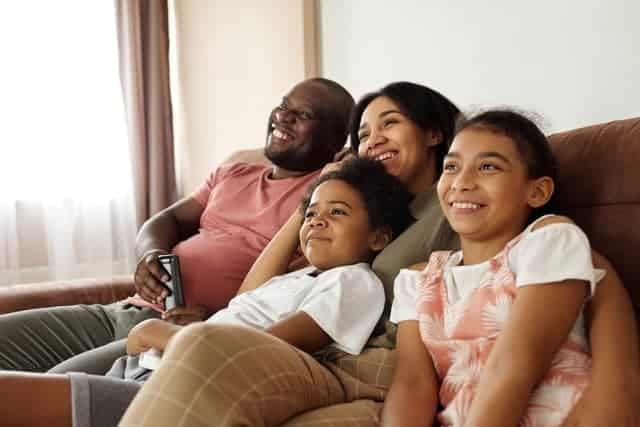
There are many different methods and strategies to help build emotional resilience in kids. The most common factor in children who are emotionally resilient is at least one stable, loving, and supportive relationship with a parent, caregiver, or other adult. These relationships have the benefit of buffering developmental disruption (Harvard).
The list below offers some examples and scenarios to help you identify when opportunities arise to nurture emotional resilience:
- Discuss the child’s feelings with them. When children face complex emotions, they might struggle to communicate their feelings. Use these situations as a chance for them to learn about resilience. For example, cancelled plans can lead to a child feeling disappointed and confused. Use this as leverage to explain that disappointment is a natural feeling and that they can expect to feel the same again in the future. Share times when you felt disappointed or let down to demonstrate that you can get over these kinds of feelings. Modeling emotional resilience and how to express feelings in a healthy way teaches your child how to do the same.
- Try not to rush a child’s feelings. This can create false expectations. It is important to teach children that getting over negative feelings can take time. Help them understand that patience is vital to recovery. The pandemic has made it difficult to provide certainty to all our lives and children are no exception. Help them to take things one day at a time so they can manage unknowns at a reasonable pace.
- Create milestones and goals. Breaking down resilience into small steps will help a child to have something to look forward to. It also helps them understand that resilience is a process.
- Help the child learn to accept change. Many situations in life are hard to control, no matter who you are or how resilient you have become. Encouraging children to accept change will enable them to build a more resilient attitude. Moving from elementary school to middle school is a common example of this. Focusing on the new and exciting journey they are embarking on will help them recognise a positive outlook rather than draw attention to what they have lost.
- Step back. We want to protect our kids from bad experiences. However, too much intervention may be detrimental to building resilience. Children must learn self efficacy to become more resilient individuals. This means supporting them where they need help, but making sure they have opportunities to find solutions by themselves. For example, if a kid falls out with their best friend, then point them in the direction of apologising or playing with others rather than picking up the phone yourself to call the best friend’s parents or getting teachers involved.
Parental Strategies for Building Emotional Resilience in Kids
- Spend one on one time with your child. Try spending 15 minutes reading to them every day, and playing their favorite board games. Other ways to build connection include floor play for younger children, cooking together, and creating art. For older children, card or board games, finding a family hobby, and playing music together are great options. Children who feel like they have an adult they can rely on tend to experience greater emotional resilience.
- Model emotional resilience. For example, if you are faced with a difficult life situation, show your child how to cope. Use tools like therapy, talking about feelings, and developing a self care routine. When kids see healthy ways of coping, they learn how to develop their own resiliency.
- Help kids keep a hopeful outlook despite tough times. Some strategies for this include maintaining as much normalcy as possible and fostering conversations to express their feelings. Some other tools include encouraging your child to talk about positive events and starting a family gratitude journal.
- Make monthly or yearly goals to help build confidence and resilience. Have your child write down goals. The goals should be measurable and reasonable for maximum success. By writing goals as a family and individually, and then following up for accountability, the whole family will become more connected.
- Keep the environment as similar as possible. Give as much warning before a change as possible. This will help your child to cope. Similarly, take time to talk to your child about the changes that are occurring and listen to their feelings.
- Sometimes, it is necessary to step back to let children learn coping skills. This strategy requires self restraint as a parent or guardian. However, it is necessary for developing their coping skills.
Resilience is like a muscle and must be exercised. The more children are able to exercise their coping skills to everyday life, the more resilient they will be.
Soul Shoppe provides social emotional learning programs for students, parents, teachers and schools.
You May Also Like:
Teaching Empathy to Kids and Teenagers
Effects of Social Isolation on Children
Teaching Emotional Intelligence
Sources:
APA, Harvard.edu, Open Access Government, Psycom, Understood, Washington Post
Creating a calm and focused classroom environment is essential for student success. Whether students are dealing with frustration, anxiety, or overstimulation, having structured calming activities for the classroom can help them regulate their emotions, refocus, and feel more at ease.
By incorporating mindfulness techniques, sensory strategies, and self-calming exercises, teachers can provide students with valuable tools to manage stress and stay engaged in learning. In this article, we’ll explore effective calming classroom ideas, relaxing activities for students, and structured mindfulness exercises that can easily be implemented in any classroom setting.
The Importance of Calming Strategies in the Classroom
Students experience a variety of emotions throughout the school day. Some may struggle with anxiety, others may feel anger or frustration, and many simply need moments to pause and reset. Providing calming strategies for teachers and students fosters an emotionally safe learning space while equipping children with lifelong self-regulation skills.
Benefits of Calming Activities for Kids
- Reduces Classroom Stress: Simple classroom stress relief activities help students feel more at ease, leading to better focus and engagement.
- Promotes Emotional Regulation: Teaching self-calming strategies for students helps them manage strong emotions and respond thoughtfully rather than react impulsively.
- Encourages Mindfulness and Focus: Implementing a structured lesson plan on mindfulness helps students practice staying present and aware of their emotions.
- Supports Sensory Needs: Many students benefit from calming sensory activities for the classroom, which help reduce overstimulation and improve concentration.
By incorporating intentional calming strategies for anxiety and anger, teachers can transform their classrooms into peaceful and supportive environments.
Mindfulness-Based Calming Activities for the Classroom
Mindfulness is a powerful tool for helping students slow down, center themselves, and build awareness of their thoughts and emotions. Below are calming activities for students that teachers can implement daily.
1. The Empty Balloon Exercise
One of the most effective calming strategies for anger and anxiety is mindful breathing. The Empty Balloon Exercise teaches students how to release tension and regulate their breathing to achieve a sense of calm.
How It Works:
- Ask students to imagine they are holding a balloon in their hands.
- Instruct them to take a deep breath in through their nose and slowly exhale through their mouth, as if they are filling the balloon with air.
- Repeat three to five times, encouraging students to focus on their breath and feel their body relax.
This simple yet powerful exercise helps students regain control of their emotions, making it a great calming activity for anger and anxiety.
2. Guided Mindfulness Meditation
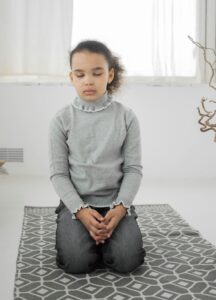 A structured lesson plan on mindfulness can include short guided meditation sessions to encourage self-awareness and emotional balance.
A structured lesson plan on mindfulness can include short guided meditation sessions to encourage self-awareness and emotional balance.
How to Implement:
- Start the morning with a two-minute mindful breathing session to set a calm tone for the day.
- Use a visualization exercise where students imagine a peaceful place and describe what they see, hear, and feel.
- Have students place their hands on their stomachs and focus on their breathing, noticing how their body moves with each inhale and exhale.
Regular practice of mindfulness strengthens students’ ability to manage stress and improves their ability to focus.
Calming Sensory Strategies for the Classroom
Many students benefit from sensory breaks in the classroom, which help them regulate their energy levels and refocus. Sensory-based calming activities for kids can be especially useful for students with sensory processing needs or those who experience anxiety.
Calming Sensory Activities for the Classroom
- Tactile Stress Balls: Squeezing a soft stress ball provides physical feedback that helps with emotional regulation.
- Weighted Lap Pads or Stuffed Animals: These provide a grounding sensation that can help students feel safe and secure.
- Calm-Down Jars: A jar filled with water and glitter can serve as a visual relaxation tool for students. Shaking the jar and watching the glitter settle can help them self-regulate.
Incorporating calming sensory strategies into daily routines ensures that students have access to tools that help them feel more at ease.
Movement-Based Calming Strategies for Students
Physical movement can also be an effective way to regulate emotions and promote relaxation. Encouraging students to engage in calming strategies helps maintain a balanced classroom atmosphere.
1. Stretching Breaks
- Seated Forward Fold: Have students sit with their legs extended and gently fold forward to stretch their backs and calm their nervous system.
- Butterfly Breaths: Sitting cross-legged, students gently flap their knees like butterfly wings while taking deep breaths.
- Star Pose: Students stand with their arms and legs stretched wide like a star, take a deep breath, and then bring their hands to their hearts.
A short sensory break in the classroom with stretching can significantly improve focus and relaxation.
2. Walk and Reflect
- Allow students to take quiet reflection walks around the classroom or hallway to reset their focus.
- Encourage them to walk slowly, notice their surroundings, and take deep breaths as they move.
- Pair this with reflective questions such as, “What are you feeling right now?” or “What’s something positive that happened today?”
These movement-based activities help students regulate their energy and encourages them to practice these self-calming strategies for students in a mindful way.
Using Tools of the Heart for Emotional Regulation
For a more structured approach to calming classroom ideas, Soul Shoppe’s Tools of the Heart Online Course provides teachers with step-by-step guidance for integrating mindfulness and emotional regulation techniques into the classroom.
This program includes:
✔ Interactive lessons on mindfulness and emotional intelligence
✔ Guided exercises for self-calming strategies
✔ Techniques for improving classroom communication and conflict resolution
By incorporating these strategies into daily teaching, educators can provide students with the skills they need to handle stress, frustration, and overwhelm effectively.
Creating a Calm and Supportive Classroom Environment
Establishing calming classroom ideas isn’t just about individual exercises—it’s about fostering an overall sense of peace and emotional well-being. Here are additional ways teachers can promote classroom stress-relief activities:
- Set the Tone with a Peaceful Classroom Design – Use soft lighting, neutral colors, and minimal distractions to create a calm atmosphere.
- Encourage Open Conversations About Emotions – Normalize discussions about feelings and self-care to build emotional intelligence.
- Implement Daily Mindfulness Practices – Incorporate a short breathing exercise, gratitude reflection, or movement break into each school day.
- Offer a Designated Calm-Down Space – Set up a quiet area where students can go to practice self-calming strategies for students when they need a break.
By prioritizing mindfulness and emotional regulation, educators can help students develop lifelong skills for managing stress and fostering well-being.
Bring More Calm to Your Classroom Today
Providing students with effective calming activities for the classroom is essential for creating a focused and emotionally balanced learning environment. By integrating mindfulness techniques, movement-based relaxation, and calming sensory strategies, educators can give students the tools they need to succeed.
Explore the Empty Balloon Exercise and Tools of the Heart curriculum today to bring more calm, mindfulness, and emotional resilience into your classroom!
You May Also Like:

The truth is we are all equal… The reality is we are not. ~Dr. Leticia Nieto
Sweet community,
In the history of Soul Shoppe, our Black and African-American staff have experienced racism – from being questioned about their purpose on campus from both staff and parents, to racist remarks from teachers, to the dismissal of comments and feedback.When forming a response to the tragic deaths of George Floyd and Breonna Taylor, here’s what our staff have to say.
What do we want our young people to learn during this time?
A seed can only produce that from which it comes. What seeds are we planting into the minds and hearts of our young people? We have to be sure the fertile hearts and minds of our children are sown with love, peace and respect for all humans, if we ever hope to produce a world that bears the same. Soul Shoppe teaches kids to Stop & Breathe in the face of fiery feelings, but we also know things happen in our communities that make it much harder for People of Color to breathe than others. This systemic oppression has a direct impact on the students we serve. We are an organization that facilitates essential tools of the heart, such as mindfulness, empathy, restoration, and “anti-bullying”. In October, we shared the definition of bullying: Bullying involves a power differential, has occurred consistently at least three times, and is intentionally meant to hurt or harm at least one of the individuals or communities involved. What happened to George Floyd and continues to happen to the Black community is beyond bullying, it is a revolting and repulsive display of hostility and disregard for human life and goes against everything our organization believes in and teaches.In the Stop & Breathe tool, we take the moment to
-
exercise our power to STOP and
-
allow one another the rights to BREATHE as a living human being
-
to THINK as an individual then
-
CHOOSE to unite on one peaceful accord
-
to ACT in the best interest of the entire human race.
We invite you to embrace any or all parts of our Stop & Breathe tool throughout the coming weeks to enhance your choices and actions.
We stand with our African AMERICAN citizens in defeating the ongoing oppression, unfair treatment, and social injustice to bring love, compassion, understanding and dignity to all.
With deep care,
The Soul Shoppe Staff
When students act out or withdraw, it can be easy to label their actions as misbehavior. But behind every challenging behavior is a deeper story—a need that isn’t being met or an emotion that’s difficult to express. As educators and caregivers, the opportunity is not in reacting with punishment, but in responding with curiosity, connection, and tools that nurture emotional growth.
This is the heart of social emotional learning, and the shift it encourages in how we view challenging behaviors in the classroom. This shift can change lives, both for students and for the educators who guide them.
What are challenging behaviors?
Challenging behaviors can take many forms: defiance, outbursts, shutting down, refusal to participate, aggression, or even excessive silliness. While some challenging behavior examples may appear disruptive, others are more subtle but still indicate a need for support.
The key is recognizing that these behaviors are communication.
Whether a child is feeling overwhelmed, unheard, unsafe, or simply dysregulated, their behavior is often the visible signal of something deeper happening within.
From control to connection: Reframing the response
Traditional discipline methods often focus on control—timeouts, detentions, or rewards and consequences. These strategies may suppress behavior in the short term, but they don’t address the root cause.
Shifting to a connection-based approach means we start by asking: Why is this behavior showing up right now?
Curiosity opens the door to understanding, while connection provides the safety kids need to learn new skills. This doesn’t mean excusing the behavior, but rather guiding students through it with compassion, boundaries, and tools for self-regulation.
How to deal with challenging behaviors in the classroom
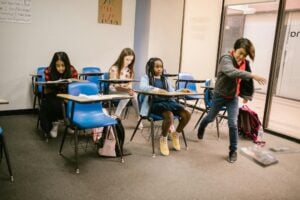
Here are practical ways to shift your approach to managing challenging behaviors:
1. Lead with empathy
Before responding, pause. Ask yourself what the child might be feeling or needing. A regulated adult helps regulate the child.
2. Name the emotion
Help students identify what they’re feeling. “You seem frustrated. Do you want to talk or take a break?” Naming emotions helps kids develop emotional literacy.
3. Offer choice
When students feel powerless, giving small, meaningful choices can restore a sense of control in healthy ways.
4. Use connection tools
Use community agreements, check-ins, and mindfulness tools like Tools of the Heart to reconnect students with their values and calm their nervous systems.
5. Create safe spaces for regulation
A cozy corner, a peace table, or a sensory box can give students a place to cool down and return to the group when ready.
Understanding the roots: Why behaviors show up
Understanding how to handle challenging behavior in the classroom means tuning into the reasons these behaviors arise. Some common causes include:
- Unmet needs (hunger, sleep, overstimulation)
- Stress or trauma
- Learning differences
- Social struggles or a lack of skills
- Feeling disconnected or misunderstood
By seeing challenging behaviors as signals rather than defiance, educators can respond with intention and help students build the skills they need to succeed.
Teaching through behavior: Opportunities for growth
Moments of dysregulation are also moments of opportunity. They’re a chance to teach:
- Self-awareness (What am I feeling?)
- Self-regulation (What can I do with this feeling?)
- Empathy (How does my behavior affect others?)
- Repair (What can I do to make things right?)
All of these are central components of social emotional learning and help lay the foundation for a safe and respectful classroom community.
Integrating SEL into your classroom culture
Proactive classroom management doesn’t mean stricter rules—it means deeper relationships and embedded SEL practices that meet kids where they are.
Some ways to make this part of your classroom:
- Morning check-ins to build emotional awareness
- Class meetings to talk about feelings, issues, and resolutions
- Role-playing to practice challenging behavior examples and better choices
- The Empty Balloon Exercise from our Tools of the Heart curriculum helps students learn emotional release
When students understand themselves and feel safe expressing big feelings, challenging behaviors in the classroom become less frequent and more manageable.
Support for educators and school communities
Responding to challenging behaviors with compassion and structure takes time and intention. But you don’t have to do it alone.
Soul Shoppe’s Elementary SEL curriculum includes tools and lessons that help educators integrate empathy-based strategies in their classrooms. These practices empower students to take responsibility, make repairs, and grow.
Learn more about how to build stronger relationships and safer spaces with social emotional learning.
Final Thoughts: The power of shifting focus
When a child’s behavior challenges us, it’s easy to feel stuck or frustrated. But by shifting from punishment to connection, from blame to curiosity, we meet children where they are—and help them rise.
Understanding how to deal with challenging behaviors in the classroom isn’t just about managing a moment. It’s about shaping a future where all students feel seen, safe, and capable of change.
You May Also Like:
“Helping Kids Tame Their Inner Dragon”

We were featured in Alameda Magazine for our work with Frank Otis!
Here’s a snippet of the article:
“On a recent Wednesday morning at Alameda’s Frank Otis Elementary, animated fourth-graders were seemingly spellbound by what they were learning. Many of them were also grinning ear to ear or laughing. The students were having so much fun that you’d hardly imagine that the lesson of the day was a topic many adults often find a bit painful and daunting to talking about: how to cope with the very messy feelings of anger, irritation, annoyance, and frustration that can cause you to blow up and lash out.
But instead of solemn or embarrassed faces, it was all joy and excitement as the guest speaker, Anthony Jackson, a facilitator for the Soul Shoppe program, taught kids to recognize their own emotions and their impact on others. He coached students on how to wrestle with the build-up of emotions that can overwhelm kids, from sadness and anger to irritation and loneliness, comparing them to a balloon that could burst if you don’t pay attention to what’s inside.
‘The balloon is a place inside of us where we put our feelings we don’t know what to do with,’ Jackson explained. ‘They are not bad or wrong feelings. They are just feelings. And if we don’t take care of them, they come out on someone else.’ ”
Want to read the full article? Read more here!
When we think of children developing skills, our thoughts often drift to milestones such as learning to ride a bike or acing their first test. However, children need more than physical achievements to thrive in life. Child emotional development includes several skills that help children understand themselves and others better. These skills help them navigate life in a fulfilling way. Furthermore, these skills promote future success well into adulthood.
What is Social and Emotional Development?

Social and emotional development refers to a child’s experience and expression of emotions and how they manage them. It also includes the ability to establish positive and rewarding relationships (Cohen and others 2005).
Social and emotional development is crucial in the first five years of life. However, emotional development continues well into adolescence.
Why is Teaching Child Emotional Development Valuable?
Nurturing a child’s emotional development helps to promote future happiness and success. Studies have shown that teaching emotional development improves students’ social and emotional skills and behaviors. Furthermore, it positively affects classroom organization, classroom management, and more.
4 Skills of Emotional Learning
Emotional development leads to five important skills, according to the National Center for Safe and Supportive Learning Environments. These include: emotional regulation, self and social awareness, learning how to establish positive relationships, and good decision making. These skills are vital to the success of children and adolescents.
Emotional Regulation
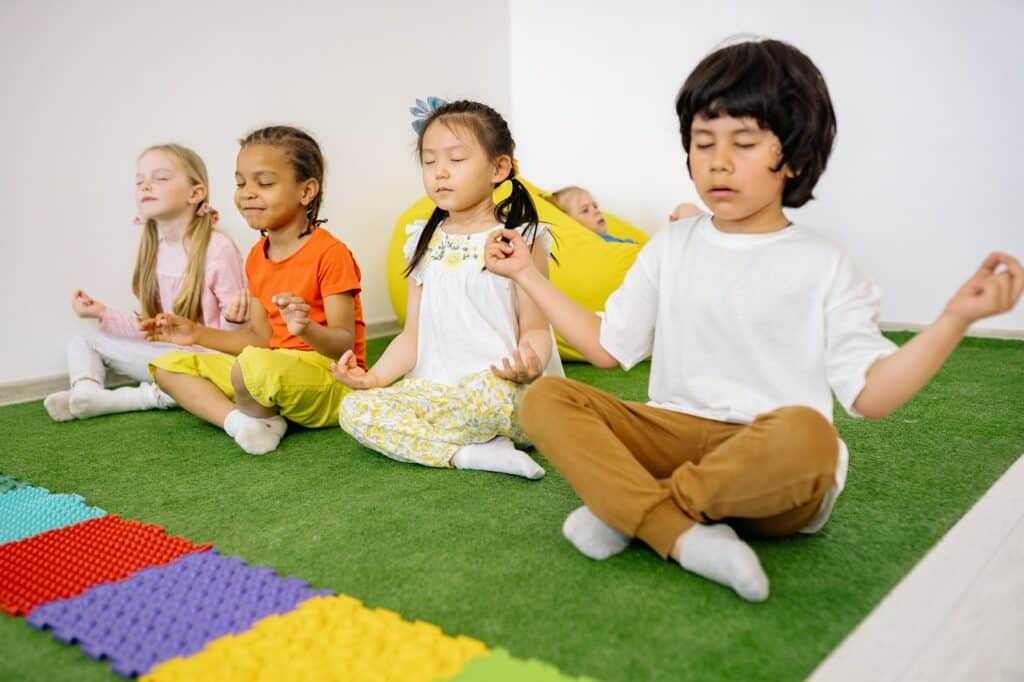
Emotional regulation is an essential part of development. It is defined as “The ability to exert control over one’s own emotional state. It may involve behaviors such as rethinking a challenging situation to reduce anger or anxiety, hiding visible signs of sadness or fear, or focusing on reasons to feel happy or calm” (PsychologyToday). Emotional regulation is critical to children’s relationships with themselves and others. Those that don’t have this type of regulation often experience emotional outbursts and isolation. It can also lead to depression and self-harming behaviors. However, it is a teachable skill. Through workshops and lessons in the classroom, we can teach children how to regulate emotions and have control over their thoughts and feelings.
Self and Social Awareness
Learning self-awareness is a critical aspect of emotional development. Self-awareness helps children acknowledge their strengths and weaknesses. This allows them to actively participate in their own success.
Self-aware children typically have more social awareness. Social awareness is the ability to have empathy for others. This leads to understanding the perspective of other cultures and social groups. Both self-awareness and social awareness are vital to the growth of each child and help children grow up to be conscientious adults.
Learning How To Have Positive Relationships
When children learn self and social awareness, they are better able to experience positive relationships. Building positive relationships encompasses several skills. One key aspect is knowing how to express emotions appropriately. At the same time, children need to learn how to respond to others with empathy. Empathy is the ability to emotionally understand the feelings of another.
Other skills children need to learn when building positive relationships include how to:
- make friends
- respond to conflict in a relationship
- listen to others
- give and receive feedback
These are just a few of the wide array of skills needed to build and maintain relationships. Successful relationships and rich social lives produce lasting benefits throughout life.
Good Decision Making
We tend to think good decision-making skills are developed through “trial and error.” However, that is a fallacy. Good decision-making is more than learning from successes and failures. It is a way of thinking about making decisions before a consequence occurs. This skill involves teaching children how to identify the problem, and possible solutions and consequences. By thinking critically about decision-making, they can make better choices.
Good decision-making affects children well throughout childhood and helps them to become more responsible and self-confident.
What are the Emotional Development Stages?
Early Childhood Emotional Development
Social and emotional development occurs rapidly in the first five years of life. This time of development is essential to the ultimate happiness and well-being of children.
In the early stages of child emotional development, children begin to learn self-awareness. In addition, they start exploring how to express emotions. They also learn how to interact with others. Furthermore, they learn how to safely explore their environment. In the early stages, children look to others to learn social cues. These cues help them navigate how to respond and play with others.
These building blocks of emotional development in early childhood are nurtured through positive reinforcement.
Elementary and Middle School Emotional Development
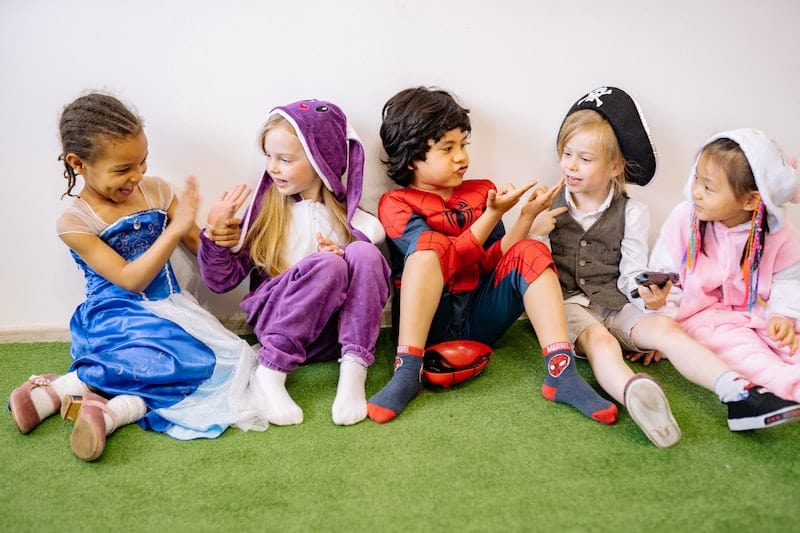
Between the ages of 5-13 emotional development progresses to include more self-regulation, problem-solving, social awareness, and more.
The child emotional development stages are listed below. Note that the time frame may be different for each child: (Source: Child-Encyclopedia).
Early Elementary (K-2nd Grade)
- Learning how to fit in with other children
- Continuing to learn self regulation
- Learning self conscious emotions (such as embarrassment)
- Needing support from adults but growing their self reliance skills
Middle Elementary (3rd-5th Grade)
- Increased problem solving skills
- Distancing self from adults and becoming more peer focused
- Focus on problem solving
- Understanding of multiple emotional states in the same person
- Typically following norms for behavior
Middle School (6-8th grade)
- Increased dependence on peers
- Focus on social awareness and roles
- Learning how to differentiate between close friends and acquaintances
- Becoming more fluent in problem solving with multiple solutions
- Increased emotional empathy
- Learning impression management
High School
- Learning how to communicate emotions and thoughts effectively
- Becoming more proficient with impression management
- Character integration and moral development
- Increased self awareness, particularly emotional awareness
Conclusion
We can increase children’s emotional intelligence to provide them with a better quality of life. Self-confidence, better relationships, and resilience can all be achieved through emotional development. When children are emotionally resilient, they can manage adversity and difficult times. In addition, research has demonstrated that intervening in children’s emotional development has a positive impact on their academic success. Whichever stage of emotional development children are in, there are appropriate lessons and support.
Soul Shoppe has workshops dedicated to the mission of creating safe learning environments. They help eliminate bullying, as well as teach empathy, emotional literacy skills, and conflict resolution. Learn more about social emotional learning for elementary students and social emotional development for middle school programs.
You May Also Like:
Teaching Empathy to Kids and Teenagers
Building Emotional Resilience in Kids
Sources:
Child-Encyclopedia, HelpMeGrow, PsychologyToday, Rasmussen, Understood, WorldBank, BeYou.edu
Walk into any classroom, and you can feel the difference. Some rooms hum with trust, laughter, and learning. Others feel tense, disconnected, or uncertain. That feeling? It’s classroom culture—and it matters.
At its heart, building culture in a classroom creates safety. A space where every child feels seen, respected, and part of something bigger than themselves. It’s not built overnight. But with intention, community agreements, and meaningful connection, it becomes the foundation for everything else: learning, risk-taking, creativity, and kindness.
Let’s explore how we can create a peaceful and welcoming classroom, grounded in social emotional learning and respect for all.
What Is Classroom Culture, Really?
Our definition of classroom culture:
The shared values, norms, and behaviors that shape how people interact, feel, and grow together in a learning environment.
It’s the invisible thread that ties together your classroom management, student relationships, and the overall classroom climate. When it’s rooted in empathy, consistency, and student voice, it helps children feel emotionally safe—ready to learn, share, and thrive.
Why Classroom Culture Is Foundational to Learning
Before academic growth comes emotional safety. A strong classroom culture supports:
✔ Emotional regulation and respectful communication
✔ A sense of belonging and inclusion
✔ Student agency and ownership of learning
✔ Resilience when conflict or mistakes arise
When students trust their environment, they’re more willing to take risks, speak up, and support one another. That’s how we begin creating a positive classroom climate—through consistent care and community.
Core Elements of a Positive Classroom Culture
Let’s break it down into what you can see, feel, and co-create with your students.
1. Community Agreements Built Together
Rather than posting classroom rules, invite students to co-create shared values:
- What helps us feel safe and included?
- How do we want to treat each other when things feel hard?
- What helps us solve problems together?
This classroom values list can become an anchor point for class check-ins, conflict resolution, and reflection. It’s not just a poster—it’s a living document shaped by the group.
Related tool: Explore how Soul Shoppe’s Tools of the Heart helps students develop the language and skills to communicate needs and repair conflict with compassion.
2. Respect and Empathy as Daily Practice
Respect isn’t a one-time lesson. It’s embedded in the tone of voice we use, the way we handle disagreements, and the opportunities we create for students to be heard.
Ways to practice:
- Daily check-ins to acknowledge how students are feeling
- Peer interviews to learn what classmates enjoy or struggle with
- Celebrating diverse perspectives and lived experiences
Inclusive classroom culture grows from everyday kindness and understanding—not just big, structured lessons.
3. Consistent Routines with Flexibility and Heart
Predictability gives students emotional safety. At the same time, flexibility shows students that their needs matter. Finding that balance is what shapes a supportive classroom climate.
Tips:
- Use visuals or rhythms to signal transitions
- Allow students to pause, breathe, or ask for breaks when overwhelmed
- Be clear about expectations, but compassionate with mistakes
Need inspiration? Soul Shoppe’s Elementary SEL curriculum offers adaptable routines for every classroom.
4. Trust-Building Activities That Help Student Voices Be Heard
Trust isn’t automatic—it’s built. And in the classroom, it grows through play, storytelling, and real listening.
Try these trust-building classroom activities:
- “I Wish My Teacher Knew…” (anonymous or shared)
- Compliment circles or “kindness shoutouts”
- Partner storytelling about times students helped someone else
These simple moments build bridges—and remind students they matter.
Classroom Culture Activities That Make an Impact
Here are a few easy-to-integrate classroom culture activities to spark connection and create space for reflection:
Culture Walk
Invite students to walk around the room and stop at stations with prompts like:
- “I feel most included when…”
- “One thing I wish grownups knew…”
- “Here’s what makes me feel brave…”
This fosters vulnerability and class empathy.
Games and Activities That Teach Emotional Awareness
Try Soul Shoppe’s quality tools for education, including SEL games that explore topics like:
- Active listening
- Emotional regulation
- Conflict resolution
- Team collaboration
See how these integrate into your positive classroom culture activities by connecting to our Planet Responsibility curriculum—an initiative designed to help students take ownership of their impact and role in the classroom community.
Bringing Social Emotional Learning into School Culture
It’s not just about the classroom—it’s about the entire school culture. When every adult models emotional intelligence, accountability, and compassion, we create ripple effects that reach every student.
Soul Shoppe’s programs are designed to support that journey—with curriculum like Tools of the Heart and school-wide practices that make SEL tangible, joyful, and meaningful.
Creating a Safe, Joyful Place to Learn
Strong classroom culture doesn’t require perfection. It simply asks for consistency, curiosity, and care. When we invite students to co-create the classroom experience, we give them ownership. When we model empathy and repair, we teach emotional strength.
And when we build together, every student gets to show up as their full self.
That’s the power of a peaceful, welcoming classroom.
You May Also Like:
How To Teach Kids To Include Others Even When It’s Hard
Among the highest goals of education is preparing children for rewarding lives and success in whatever field they choose. A large part of that comes from instilling a sense of confidence and faith in their own value. Because confidence is such an important life skill, it’s a good idea to incorporate confidence-building activities for kids into classroom curriculum.
Confidence-Building Activities for Kids
When creating confidence-building activities for kids, the unique personalities within a class will inform the development of the curriculum. At the same time, there are quite a few fundamentally useful thoughts to help you get started.
How to Build Self-Confidence in a Child

Self-confidence comes from several sources. Some learn how to be confident at home, and others from external accomplishments. Additionally, some children develop confidence more easily than others. In a classroom setting, understanding confidence as a teachable skill means approaching it directly, instead of trusting that it will come as a result of other experiences. Techniques indicating how to build self-confidence in a child begin with lessons in self-sufficiency. (Harvard)
For instance, when small children are provided with opportunities to be “big kids,” it shows them how to take responsibility and achieve growth. If children have choices for how they dress or decorate their spaces, or, if they are encouraged to ask questions when shopping or on field trips, then they have the chance to practice forming their own opinions and seeing those opinions rewarded with respect. Ultimately, autonomy and a sense of accomplishment can occur through choices and opportunities. This can lead to confidence.
Another example of this is introducing a chore chart. Chore charts are valuable learning tools from the earliest ages. If children get to participate in the upkeep of their space, especially if that upkeep is part of a community effort, then it gives children the opportunity to understand that their actions affect their environments, and at the same time they can intentionally change their environments. When children understand they can improve their world with purpose, they gain confidence.
You can design activities to boost a child’s sense of self-worth and self-sufficiency. When deciding how to build self-confidence in a child, there are many possible activities that educators can implement.
Classroom Activities to Build Self-Esteem

Designing classroom activities to build self-esteem will depend on the specific needs of the students in the classroom. That being said, there are plenty of fun games to boost self-esteem that an educator can use as a template to begin planning their own classroom activities.
Here are some self-confidence activities for students:
- Letter to yourself- In this activity, students will write a letter to themselves. Either to their future self or to their past self. Or, they can write a thank you note to themselves right now. The essence of this activity is to provide children with the tools to look at themselves with an encouraging eye and constructive self-critique.
- Gratitude journaling- In this activity, students will make regular entries into a notebook with the sole purpose of appreciating something about themselves or the world around them at a regular interval, such as every day or every week. Part of building a child’s self-esteem includes introducing the habit of believing positive things about themselves. Additionally, when children regularly note positive things around them, it can create a habit of gratitude and positive thinking.
- Goals journaling- Accomplishment in all its forms can contribute to confidence. A helpful activity is for students to regularly update a journal in which they write down the goals they would like to achieve in their lives. They should then note what kind of progress they have made in achieving those goals. As a bonus, incorporate a reward system when they achieve their personal goals.
- Cooperative board games- A sense of self-worth can come from feeling like you are a valuable member of the community. Children can feel empowered when they can see how their contributions improve their team. Cooperative games can also provide valuable self-reflection opportunities when children work with each other to accomplish common goals.
- Achievements collage or journal- When students can see evidence of what they’ve accomplished it can boost their self-confidence. They can create a collage of pictures or drawings. Older students can also create lists. Helping students to get into the habit of seeing the results of their achievements can help their self-confidence improve.
Building confidence is a skill that requires attention and nurturing. Children might not have the benefit of acquiring confidence elsewhere. Therefore, implementing ways to build self-confidence in the classroom gives students an advantage in academics as well as in life. People who are confident generally perform better at tasks, and they thrive in the workforce as they get older. (Chron)
Soul Shoppe provides online SEL programs such as building self-confidence, respecting differences, and more. Soul Shoppe encourages empathy and emotional awareness in children. Click for more information on SEL Programs for Elementary Schools or our parent support programs.
You May Also Like:
Conflict Resolution Activities for Kids
Self-Care Activities for Students
With the school year underway, it’s time to talk about conflict resolution for kids. The pandemic has made it difficult for children to engage with each other. Therefore, many have missed out on crucial opportunities to build and develop their skills for dealing with conflict.
Teaching kids about how to resolve difficult situations is important because it equips them with resilience and confidence.
Conflict Resolution For Kids
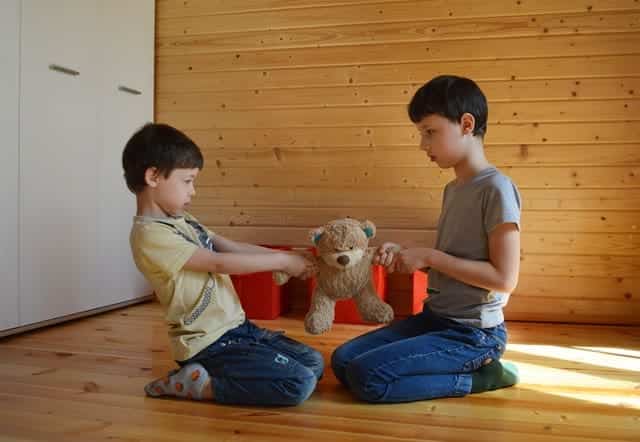
Conflict resolution education is the act of instilling problem-solving skills in children who are in a dispute. Teaching children about conflict helps them to identify problems. It also helps them choose the best solutions on their own.
A good place to start is demonstrating that problems start small and tend to grow. Teaching them to identify problems as soon as they take place makes it easier for kids to quickly overcome the obstacles they face.
Sometimes problems may go unnoticed in the early stages. This can lead to emotions becoming more intense. Therefore, it is important to teach children about their feelings. Having them identify their own emotions will also enable them to understand the emotions of others around them.
In cases where conflict has snowballed into a large problem, it is imperative that children understand responsibility as well as compromise. Knowing that conflict is a two-way street will encourage kids to act and will enable them to preserve their friendships when things go wrong. Practicing compromise will also help to resolve conflicts where children are not destined to be the best of friends. This will help create a peaceful environment and a productive learning space for everyone.
Occasionally two students will not be able to come to a satisfactory conclusion with their problem. There will be times, even though we want them to figure it out on their own, when adults have to step in and guide them further. Reassure your kids and students that they are able to talk to you about their problems.
Conflict Resolution Strategies in the Classroom
Students need to find strategies for resolving different forms of disagreement. Four major conflict resolution strategies identified by educators are: mediation, process curriculum, peaceable classrooms, and peaceable schools.
Mediation
Many schools use peer mediation programs to reduce conflict. Students have the opportunity to talk through conflicts with trained students or adult mediators. Mediation programs are put in place to reduce punishments such as suspension or detention. Learn about Soul Shoppe’s Peacemakers program.
Process Curriculum
Some schools dedicate an entire course to conflict resolution. This is called process curriculum. It introduces problem scenarios before a conflict ever arises.
Peaceable Classrooms
Peaceable classrooms integrate conflict resolution into the classroom daily through classroom management and daily tasks. This is not a separate curriculum but brings a lifestyle approach to teaching conflict resolution. This approach reinforces cooperation and the acceptance of diversity. It also teaches caring and effective communication.
Peaceable Schools
In peaceable schools, all three of the above approaches are implemented. Everyone in the school including teachers, students, and administrators work together to remain proactive about conflict.
These four conflict resolution strategies work together to reduce school absences, decrease referrals and suspensions while increasing self-confidence and self-respect among students.
Conflict Resolution Activities for Kids
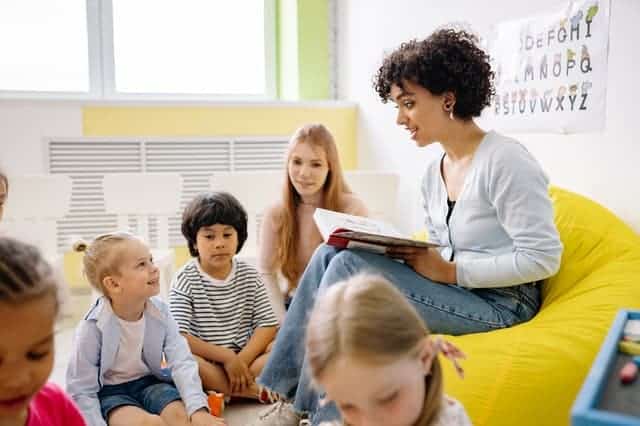
Conflict resolution for kids can also be fun. Here are some easy activities to get kids thinking and learning about conflict resolution:
- Brainstorm solutions to specific conflicts with your kids. Preparation will help them when any conflict arises. It will also help you gauge how much work you need to do to develop a child’s conflict resolution skills.
- Fill a mason jar full of popsicle sticks with solutions to problems. When a child is finding it difficult to find a way to resolve their issues, they can take a stick from the jar and try that. Kids will learn to think on their feet and use the jar less over time.
- Create stories individually or in groups. Ask the kids to think about a story that involves conflict and an ending with a solution. They can present the stories to the rest of the class or to their siblings if done at home.
Tip: Reward good conflict resolution by sending a letter home or by creating a gold-star chart.
Conflict Resolution Games for Kids
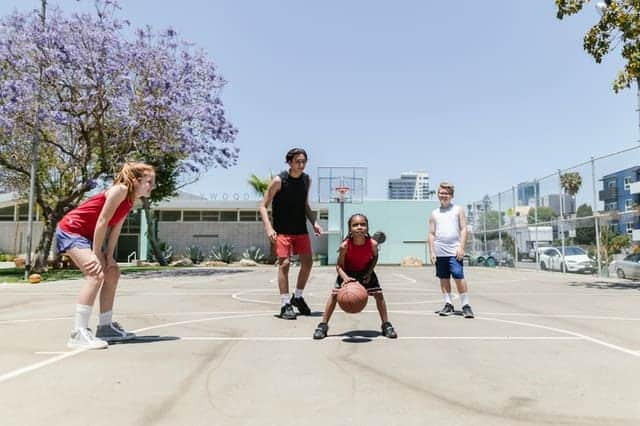
Gamifying a child’s learning is a good way to create a rewarding environment that will help to create a lasting impact. Here are some ideas you can use in the classroom or at home:
- Role-playing is a fun way for children to safely engage in conflict situations. This can be done with each other or with an adult for more challenging conflict scenarios.
- Create a simple game of pairs where children have to match the conflict to the solution.
- Play problem-solving baseball. This game is great for more complex conflict situations. Start with the conflict and then work through each base until they reach the solution.
Conflict resolution for kids is imperative for social and emotional success. Soul Shoppe provides conflict resolution training for educators through our Peacemakers program. The Peacemakers program aims to create schools where children are empathetic and peace thrives.
You May Also Like:
How To Resolve Conflict Between Students
Building Community in the Classroom
Building Emotional Resilience in Kids
Sources: PBS.org, Rutgers.edu, Childmind.org, Proudtobeprimary.com
Anyone who spends time with children understands that play is more than a frivolous pastime. It’s the work of childhood. Work through which the next generation learns skills like effective communication, conflict resolution, problem-solving, and cooperation.
In this article, we discuss learning through play, cooperative play, and provide examples of cooperative games for kids that can be used in the classroom.
Cooperative Games for Kids
The Six Stages of Play
American sociologist and researcher, Mildred Parten, dedicated much of her career to studying the art of play. As a result of her research, Parten identified six stages of play through which most children progress. She was careful to note that each child is unique and can progress at different rates. Even so, the stages do tend to follow one another eventually.
The six stages of play, as outlined in a study by Michigan State University include the following:
1. Unoccupied play (0-3 months)
Unoccupied play is that which we observe in babies or young children. In this stage, children explore materials around them in an unorganized fashion. The focus of this stage is learning how the world works.
2. Solitary play (0-2 years)
During this stage children are content to entertain themselves. The main skills they acquire as they are preparing to play with other children are new motor and cognitive skills.
3. Onlooker play (2 years)
Children involved in onlooker play are actively watching others. As they observe, children learn about the social rules of play and relationships–rules they will eventually employ when they feel ready to jump in for themselves.
4. Parallel play (2-3 years)
This play occurs when children play side-by-side but aren’t interacting with one another’s games. This stage does not include social engagement but it does teach children further social skills and gives them a framework for inviting others into their play in the future.
5. Associative play (3-4 years)
During this stage, children shift their focus from activities or objects of play to other players in the game. The focus of this stage is practicing what they’ve learned through observing others and building social skills with other children or adults.
6. Cooperative play (4+ years)
This is play categorized by cooperative efforts between players. Children become interested in both the game and the players. To this end, they begin to communicate desired outcomes and collaborate toward a common goal while understanding that each person has a distinct role to play.
The way our children learn to play is an excellent example of the constructivist theory of education. This theory is based on the idea that learners build on their existing knowledge to learn new information. As such, cooperative play is not only a capstone achievement for our students, it is also a catalyst from which they can grow into healthy adults and effective members of society.
The skills children derive from cooperative play that, in turn, provide the crucial foundation upon which they build future success include working together to achieve a common goal, developing the ability to problem-solve, sharing and exploring ideas, speaking and listening, and improving social, mental, emotional, and physical agility.
Additionally, Kathy Hirsh-Pasek, a professor of psychology at Temple University and co-author of Becoming Brilliant: What Science Tells Us About Raising Successful Children with Roberta Golinkoff, breaks down the skills kids need to succeed with the “six C’s,” which include— collaboration, communication, content, critical thinking, creative innovation, and confidence (NPR). Cooperative play helps children to learn these C’s.
Examples of Cooperative Games for Kids
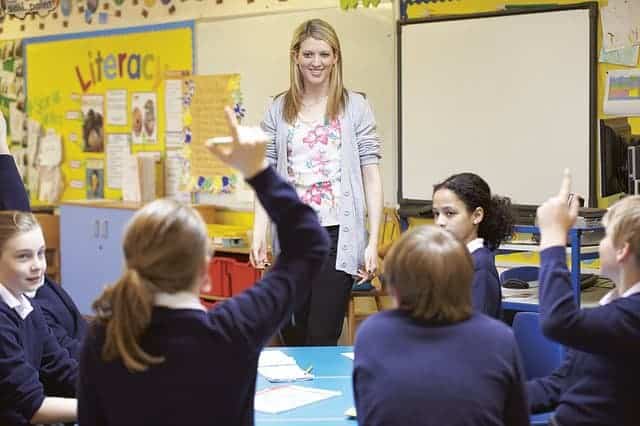
Chief among cooperative games for kids are those that teach team-building skills. To that end, we’ve compiled a list of team-building games that have been proven to build both confidence and skill. Those listed are mainly cooperative games for the classroom but can also be adapted for online learning.
Here are our top five cooperative games for kids from various resources:
Classification (WeAreTeachers)
Set-Up: For this activity, prepare a tray with 20 unrelated items. For example, a spool of thread, an eraser, a juice box, etc. Once you’ve selected your items, create a document with 20 images of your selected items to put up on the screen. Divide your class into even groups.
Instructions: Set a timer and have each group divide the 20 items into four categories that make sense to them. For example, they may put an earring, a glove, a headset, a sock, and a smile into the category “things you wear.” Have groups work quietly so that their ideas are kept secret. When the time is up, give each group time to present their categories and the rationale behind each category.
Connect This (Teachhub)
Set-Up: Provide each team with four different images and ask students to come up with a short story that connects all the objects together. For example, the images can be a person, an object, a location, etc.
Instructions: Give students about 15-20 minutes to discuss and come up with a story, then present their story to the class.
Guided Reciprocal Peer Questioning (The University of Tennessee Chattanooga)
The goal of this activity is to generate discussion among student groups about a specific topic or content area.
Set-Up: Faculty conducts a brief (10-15 minutes) lecture on a topic or content area. Faculty may assign a reading or written assignment as well. The instructor gives the students a set of generic question stems. Question stems help students to come up with or write questions about a text or topic.
Instructions: Students work individually to write their own questions based on the material being covered. They do not have to be able to answer the questions they pose. This activity is designed to encourage students to think about ideas relevant to the content area. The students should use as many question stems as possible.
Grouped into learning teams, each student offers a question for discussion, using the different stems.
Sample question stems:
What is the main idea of…?
What if…?
How does…affect…?
What is a new example of…?
Explain why…?
Explain how…?
How does this relate to what I’ve learned before?
What conclusions can I draw about…?
What is the difference between… and…?
How are…and…similar?
How would I use…to…?
What are the strengths and weaknesses of…?
What is the best…and why?
Three-step Interview (University of Tennessee Chattanooga)
Three-step interviews can be used as an ice breaker for team members to get to know one another or can be used to get to know concepts in-depth, by assigning roles to students.
Set-Up: The teacher assigns roles or students can “play” themselves. Teachers may also give interview questions or information that should be “found.”
Student A interviews Student B for the specified number of minutes, listening attentively and asking probing questions.
At the teacher’s signal, students reverse roles and B interviews A for the same number of minutes. At a second signal, each pair turns to another pair, forming a group of four. Each member of the group introduces his or her partner, highlighting the most interesting points.
Share Experiences and Feelings (University of Central Arkansas)
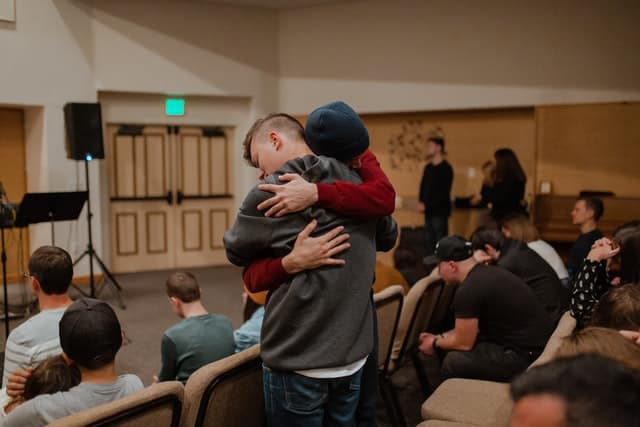
Set-Up: The teacher selects a short video (10-15 minutes) on the topic of their choice. The topic should have some relevance to the lives of the students watching.
Instructions: When the video is over, organize students into groups and ask them to discuss the following questions:
- What is my experience with [the topic]?
- What are the major feelings associated with the experience?
- Discuss how this affects our interactions with others.
At the teacher’s signal, the class comes together as a whole and one representative from each group shares the overall feelings expressed in the group. Once every group has been represented, the teacher can ask one debriefing question, “What are the implications of these experiences to you?” Or, for younger students, “How does understanding your classmates’ feelings about these experiences help you understand them better?”
Cooperative Games in the Classroom
As you plan to lead cooperative games for your students, be sure to choose games that are appropriate for their stage of development. Equipping our kids to engage with one another productively helps build healthy students, classrooms, and communities.
Soul Shoppe provides social emotional learning programs for elementary schools, parents, corporations, and more. We also provide a peacemaker program with both training and certification. View our online courses or contact us for more information here.
You May Also Like:
Conflict Resolution Activities for Kids
Educators might assume that their classrooms feel safe to all their students. However, creating an inclusive classroom requires active work and a plan.
Creating An Inclusive Classroom
The process of creating an inclusive classroom may come intuitively to some educators, while some features might be surprising. Actively creating an inclusive classroom requires educators and students alike to learn more about what’s going on in the lives of other people in order to more effectively create an inviting and inclusive classroom environment for children of all backgrounds.
To start, here are a few inclusive classroom examples to get educators thinking about nurturing a more inclusive classroom setting.
Inclusive Classroom Examples
Creating an inclusive classroom includes many different aspects of education. Active pursuit of fair-minded and empathy-driven educational practices requires a holistic approach to education and development. While in essence, inclusive education is as simple as being fair to everyone, like so many simple ideas it isn’t easy to implement.
So what does an inclusive classroom look like? According to Harvard University, educators have to, “Learn high-leverage Instructional Moves to make your classroom discussions more inclusive, student-centered, and purposeful.” (Harvard)
Here are some inclusive classroom examples to guide educators in their educational strategy (Harvard):
- Active learning: It might sound only obliquely related, but the pursuit of active learning strategies and incorporating active learning techniques into curricula will promote an inclusive learning environment. This is because active learning promotes complex thought processes and active attempts to understand other perspectives and ways of thinking.
- Growth mindset: The inability to accept alternative lifestyles tends to stem from a habit of seeing the world as restrictive and very much set in its ways. Promoting a growth mindset in the classroom enables students to see value in attempting to understand alternative perspectives.
- Get to know your students: Not every fix will work the same for every student. An educator can create a curriculum designed to promote inclusiveness, and with the very best of intentions, they might neglect the tools necessary for some group that they themselves might never have encountered, for instance. It’s essential for educators to get to know their students and make adjustments to their inclusive classroom activities.
- Build opportunities for work outside the classroom: The essential purpose of a classroom is to prepare students to succeed in life. However, there are other opportunities to grow ideas. Seek opportunities outside of the classroom to give students the chance to see how ideas work in the wild.
- Group expectations and guidelines: In order to make the environment safe for all students, it’s important to communicate to all students why it’s important to create an inclusive learning environment for everyone.
Educators may have to ask, “What does an inclusive classroom look like?” The answer will vary from one classroom to the next. In principle, however, the characteristics of an inclusive classroom will include the opportunities for students to learn empathy and the tools for understanding different perspectives.
Inclusive Classroom Activities
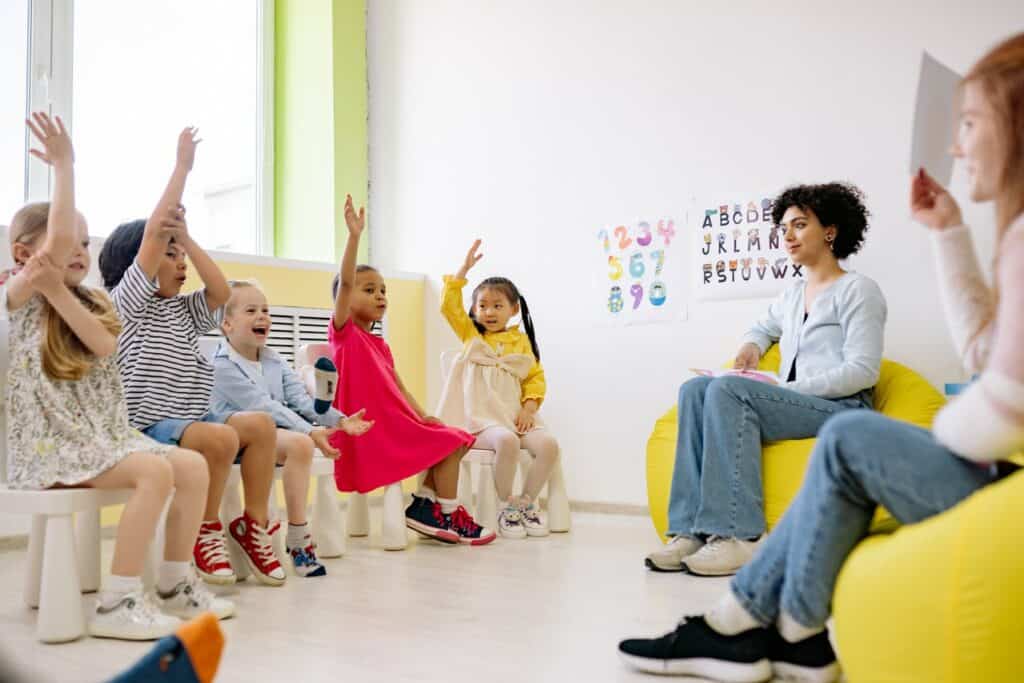
An inclusive classroom often looks like a thoughtful classroom. The characteristics of an inclusive classroom create a sense that all perspectives, and therefore all students, are embraced and valued. There has to be a sense of belonging achieved through an active pursuit of learning the values and perspectives of all students.
In the pursuit of this strategy of active learning to create an inclusive learning environment, here are a few activities to get educators started (LSA):
Core Values Exercise
Students may have never expressed their values before. While they might not need to define their values to the precision that some adults decide to define theirs, creating a sense of inclusiveness in the classroom might be easier if students have the opportunity to express what they value. This can help them recognize that some people share their values, and some people don’t. The goals of this activity include:
- Helping students determine their own values
- Helping students appreciate diversity in values
- Prompt discussion among students about values
How to do it:
- Moderated in-class discussion
Dialogue Blocker Exercise
Classrooms are microcosms of the greater community, and community runs on effective communication. Sometimes listening and empathically responding during conversations is excluded. This exercise is meant to create a scenario where students can learn to recognize dialogue blockers, or communication strategies getting in the way of effective communication. In recognizing them, students are better able to avoid them. The goals of this activity include:
- Helping students recognize dialogue blockers
- Encourage students toward more introspection during conversation
How to do it:
- Find an example from a book or show where a conversation was ineffective and left its participants dissatisfied with the results.
- Through moderated discussion, lead students through the poor communication displayed and talk about possible improvements.
Name Story Exercise
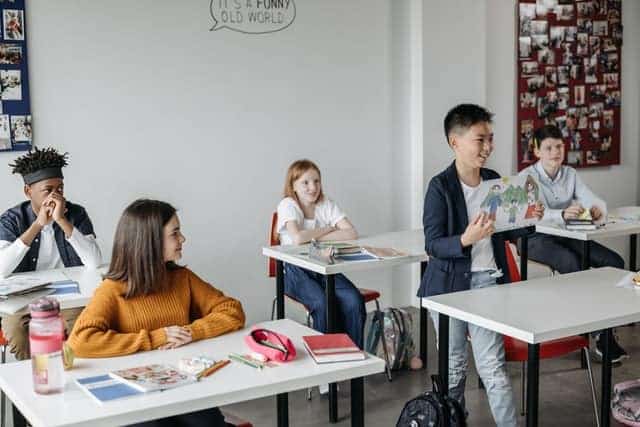
This inclusive classroom activity is designed to help students see each other and appreciate each other. At the same time, it gives every student the opportunity to feel like they have something inherently valuable about themselves that they can share with the class. The goals of this activity include:
- Building community
- Promoting a sense of diversity in the classroom
How to do it:
- Give every student a chance to tell everyone their first, middle, and last names.
- At the same time, every student has an opportunity to tell any story about their name that they know or like.
In addition, Soul Shoppe provides an online curriculum that can help promote inclusiveness and understanding within the classroom. Respect Differences, Tools of the Heart, and Allies Against Racism are all programs that help children overcome isolation and strengthen relationships. Find out more about Soul Shoppe’s SEL programs from elementary schools here.
Inclusive Classrooms in a Diverse World
Since every classroom and every set of students presents different needs and challenges, it may be necessary to design exercises more specific to a given classroom or set of students. Everyone comes from different backgrounds, and in order to prepare students for success in life, educators need to create inclusive classrooms to help students feel safe and connected.
Soul Shoppe provides social emotional learning programs and can help you learn how to create a safe space in the classroom or at home. Soul Shoppe encourages empathy and emotional awareness in children. Click here to get into contact with us.
You May Also Like:
Conflict Resolution Activities for Kids
Many schools already have some excellent anti-bullying and community-building practices, but these can be overly compartmentalized, occurring only at specific times of day. Emotions are happening all the time!

Here are some things educators can do to fill the gaps:
- Create multiple opportunities for class meetings or class moments where everyone has a voice and everyone gets to be seen.
- Create school structures so that adults at our schools are easily available for young people, where they have the time and the emotional space to give young people their full attention and empathy.
- Create time for teachers and adults at school to reflect, to notice if kids are being excluded and to work to create inclusion throughout the day.
- Build the critical skills of empathy and community within our kids.
- Model empathy and self-management skills. Kids learn from the example of the adults around them.
You May Also Like:
Virtual Social Learning Activities
A Culture of Inclusion
A culture of inclusion is defined as creating and maintaining an environment in which people of different backgrounds can achieve their fullest potential (Harvard). It is a culture where different strengths are valued and celebrated. Whether in schools or in the workplace, building a culture of inclusion benefits both students/workers and the classroom/organization as a whole.
The Difference Between Diversity and a Culture of Inclusion
Though a culture of inclusion and diversity can sound similar, they are very different. You can have a diverse classroom or work environment and still not have a culture of inclusion. Diversity is simply referring to demographics. A culture of inclusion means that everyone is contributing their different voices, ideas and experiences to the overall classroom or workplace culture. This contribution supports a richer and more successful environment.
How to Create a Culture of Inclusion
Importance of Respect and Empathy

Empathy is a critical skill and a building block of creating a culture of diversity and inclusion. It is defined as the ability to emotionally understand the feelings of another. Commonly, it is described as being able to “walk in another person’s shoes.” This skill is necessary in order to create emotional growth, as well as a culture of compassion and connection. When people learn empathy, they are better able to respect other people’s thoughts, feelings, and world experiences. It is a transformative skill that changes our behaviors and the way we see others. Consequently, this is a strong focus of creating a culture of inclusion.
Culture of Inclusion in Schools
Creating a culture of inclusion in schools is important because it’s the main place young people will learn and emulate team behaviors. They are likely to carry these behaviors into the workforce and society as a whole. In addition, a culture of inclusion creates a safe classroom environment where children from all backgrounds can academically thrive.
Building a culture of inclusion in schools requires all stakeholders to share responsibility for inclusion. Some ideas for creating a more inclusive culture include:
- Anti-bullying workshops
- Diversity training
- Writing a value statement
However, it goes beyond that. Even when enacting inclusive policies and practices, inclusive culture requires a shift of attitude. The entire school must embrace it and share the responsibility for it to come to fruition. This is where empathy and teamwork is important. Building a culture of inclusion takes everyone.
How to Promote Inclusion in the Workplace

Community building in the workplace is an important aspect of cultural inclusion. Workplace community is the culture of a company and its morale. It is influenced by individual perspectives and experiences. Therefore, it is critical that the workplace community is safe, productive, and cohesive. When workplace culture is positive, employees bring their authentic selves to the team and value their work. In order to build community, a sense of belonging and connection is required. This can be done by appreciating individual and group contributions, and being responsive to employee concerns. Similarly, holding spaces to listen to employees is necessary. Inclusive behaviors in the workplace begin at the leadership level first. Leaders can model empathy in their daily interactions, which demonstrates how employees should act. Actively demonstrating empathy and respect, helps businesses and individuals to thrive.
Creating policies that promote inclusiveness is an important first step. In addition to policies, empowering team members to solve problems and come up with new ideas promotes inclusiveness. Along with empowerment, a work culture that promotes courage is one that fosters inclusiveness. Employees should feel they can stand up for what they believe in. Lastly, promoting humility in the workplace is important for creating a positive workplace culture. Humility allows team members the ability to take constructive criticism and overcome limited viewpoints by listening to others.
Conclusion
Building a culture of inclusion is more than just a one time training event. It is creating a shift in the overall culture. It requires commitment from everyone from leaders to employees to students alike. By creating positive environments that foster empowerment, humility and courage, both schools and workplaces are more likely to succeed.
Whether you want to improve your school, community, or workplace, Soul Shoppe provides social emotional learning programs and resources. We offer programs on cultural inclusion from teacher professional development to workplace culture training. Our team is highly trained, informative, and makes training fun. We offer a transformative experience that will leave lasting results.
You May Also Like:
Virtual Social Learning Activities
Building Community in the Classroom
Teaching Children About Diversity
Sources:
Business News Daily, Talent Culture, UNC.edu
The effects of social isolation on children remain a complex issue. There are a variety of situations that can lead to a child feeling isolated. The impact of the global pandemic has made this all the more visible. The pandemic has increased the number of children who experience isolation — many for the first time in their lives.
How do you identify feelings of social isolation in your children? This article will examine the symptoms, and causes of social isolation to help you better understand the issue and how to reduce its effects.
What is Social Isolation?
Social isolation is when someone feels excluded from others and experiences loneliness (WHO).
Effects of Social Isolation on a Child

Social isolation can stunt a child’s development in numerous ways. It can make children anxious in social settings and unable to interact with their peers or adults. It can also prevent a child from learning. Humans are social beings that learn from one another. Therefore, the lack of interaction can reduce momentum in academics as well as hinder social and emotional growth. Social isolation has also been linked to negative impacts on mental health.
Causes of Social Isolation
COVID-19
The most obvious instance of social isolation is lockdown and other social distancing measures we’ve navigated due to the pandemic (Let There Be Health). This way of living has made it difficult for children to interact with others, including their own family members.
Mental Health
Mental health such as depression and anxiety can cause social isolation. Anxiety is a prominent instance of this because a child may find social situations uncomfortable (Tulane University). Depression and hopelessness can also prevent a child from finding valid reasons to engage, meaning they withdraw as a result.
Learning Disabilities
Some children learn differently from others. For example, children with ADHD may find it difficult to interact with others. Sometimes, this is due to acting differently than their peers in social settings. Difficult interactions can make a child feel they don’t fit in and it can sometimes lead to bullying, which discourages them from engaging with their peers (Contemporary Pediatrics).
Identity
Children may struggle with their identity. They may find it hard to engage with others if they are aware of their differences, or if they simply feel they are different (Beyond Differences). It is important to create inclusive environments to reduce the anxieties and fears children feel regarding their identity.
Symptoms of Isolation
Social isolation can present a variety of symptoms. Symptoms and causes of social isolation have long been researched (Psychiatric Times). Below we explore these symptoms.
Anxiety
A worried child may act out, such as whine or talk back more than usual. Irritability is an indicator that a kid is uncomfortable and they may find it hard to verbalize their frustration directly. This frustration and lack of verbalization can lead to more serious consequences in the future. Spotting signs of anxiety and addressing these early on helps to prevent the child from developing depression and becoming a socially isolated adult later in life (National Geographic).
Hopelessness and Depression
If your child begins to find it difficult to think positively about situations, they may be experiencing symptoms of social isolation. They may begin to feel hopeless because they are unable to deal with uncertainty or unknown situations. These feelings can alter a child’s cognitive skills making learning more challenging (Edutopia).
Self Exclusion
This one may not be so obvious. When a child experiences social isolation they may start to exclude themselves more often because it becomes an expectation. If a child always feels they are going to be the last to get picked for group work in class, then they are likely to retreat from engaging with others. The less they engage, the less they get to know others around them. Their expectations are then met and they end up in a vicious cycle of isolating themselves (BBC).
The Amplification of Social Isolation
Contributing factors enhance the likelihood of experiencing social isolation. Children with either physical or mental disabilities are more likely to feel socially isolated (Contact). Therefore, it is especially important to help these children feel included.
How To Reduce the Effects of Social Isolation
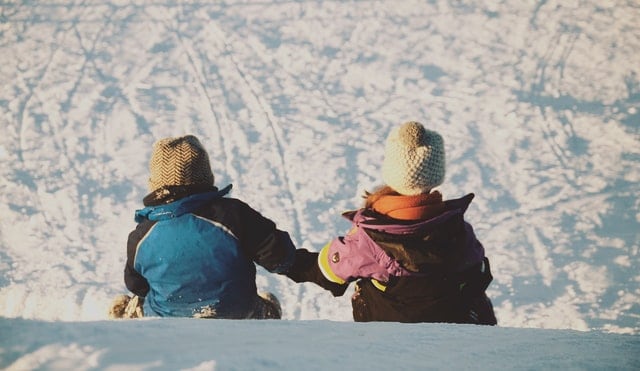
Prolonged social isolation impacts the mind, mood, and even the body. Therefore, it’s important to reduce the effects. Here are just some ways to help children deal with social isolation:
1. Create new ways to come together. Due to the pandemic, engagement is entirely different than it used to be. Children may be distance learning, or if they are learning in person, they are wearing masks and are socially distanced. Therefore, it’s important to create new ways to interact with friends online or in a small playgroup. Children need more interactions outside of school to help them cope.
2. Help children experience mindfulness. Mindfulness is about staying in the moment and not worrying about the future. It eliminates what-ifs and creates a sense of peace and calm (Rush.edu). Helping children to cut themselves some slack and stay grounded, helps them to deal with the impact of social isolation.
3. Encourage them to play outdoors. Staying indoors can amplify feelings of claustrophobia, and going outside can relieve that shut-in feeling. Getting some vitamin D may be just what they need. Vitamin D is a mood booster and has been linked with reducing depression (Healthline).
4. Engage in inclusivity programs. Inclusivity programs can help children feel less socially isolated due to physical or mental differences. These programs also help prevent bullying and intolerance, which means fewer children will experience social isolation caused by others.
5. Communicate with them. Let your child know that you are aware of additional stresses due to social isolation. Be available to listen when they need to vent so they know they have you to lean on.
Soul Shoppe provides social emotional learning programs for students, teachers, and parents. From programs on inclusivity, mindfulness, positive parenting programs, SEL programs for elementary schools, conflict resolution strategies for students, and more, Soul Shoppe helps children navigate healthy ways to interact in the world.
You may also like:
Embodiment practices are important for self-growth, learning, and awareness. Read about embodiment practices for kids in school and at home.
What is Embodiment?
The word embodiment can have several different definitions, depending on how it’s used. In the dictionary, it’s defined as having a tangible form of a feeling or an idea. While this leads to thoughts of mind-body connection, the idea of embodiment practices takes this definition a step further.
Embodiment practices suggest the idea that there is an unbreakable link between the mind and body. The University of Minnesota, defined it as, “our movement and body makes visible all of who we are.” Uniting mind and body is important work because it enhances our relationships with ourselves and others. Also, embodiment supports self-growth, awareness, and the development of mindfulness. As one therapist said, “we might say embodiment is a state in which your entire intelligence is experienced as a coherent unity attuned to the world” (EmbodiedPresent). Because our minds and bodies are strongly connected, we learn best when we use both.
To put it simply, embodiment practices in the classroom involve learning and connecting through both movement and thought.
Why Teach Embodied Learning?
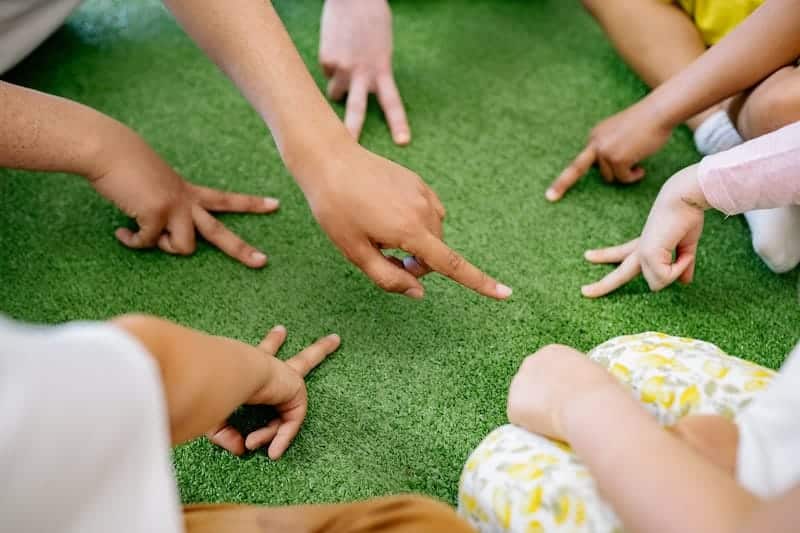
It’s easy to overlook learning through movement or mind-body exercises. However, implementing these practices can be extremely beneficial. Embodiment practices incorporate the relationship between the brain, academic achievement, and bodily movement (Educational Media International). Therefore, there is great value in teaching embodiment learning. It helps children develop kind, enriching relationships with themselves and others. In addition, it creates impressive results in cognitive abilities and short-term learning.
Research shows positive outcomes when implementing embodiment practices. In one study, 52 elementary students participated in embodiment learning activities. The students were tested before and after the duration of 4 months. Areas tested included cognitive and academic performance, general learning, observations from their teachers, and interviews. The results showed remarkable effects. Children’s short-term memory and academic performance improved dramatically (Educational Media International). There are additional studies that show similar outcomes.
In a study exploring embodied cognition, college students were given a math problem about a triangle. The students were then broken up into two groups. The control group sat in front of a computer that projected the problem. They had pens and paper available to use. The second group, however, had to stand in front of the computer and had no supplies, though they could use gestures. Those who did not use any strategies were the least successful (11.5%). Those who used pen and paper were more successful (27.3%). However, those who used hand gestures, or whole-body learning, did the best. Of those who used smaller gestures, 34.3% were successful. But those that used bigger movements, or “dynamic depictive gestures,” were correct 63.6% of the time (Shapiro and Stolz). In this instance, we can see that embodiment practices helped both academic performance and cognition.
Embodiment Practices in the Classroom or at Home
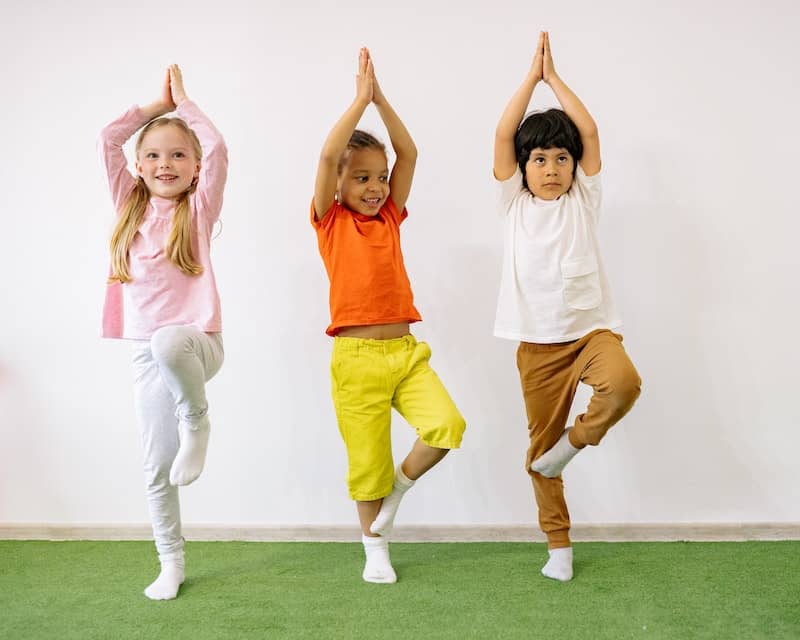
Embodiment learning involves the whole body during the cognitive process. As a result, there is a connection between new ideas and movement. One example of this learning style is children adding by tossing bean bags and counting. Another embodied learning activity is children singing and clapping out a spelling song. All of these methods combine movement with cognition. There are many ways to incorporate the mind and body, whether through academics or through other mind-body exercises such as yoga. Each activity has its own unique benefits.
Embodiment Learning Activities
There are many creative embodiment learning activities you can use at home or in the classroom. Some of them include:
- Acting: Act out a story, event, or article.
- Dance: Implement dance in your curriculum, using movement to express math, science, or other subjects. Whether stomping to create counts or dancing like wildlife ecosystems, it is a great way to connect the body and the mind.
- Mazes: Make a maze out of sticks, stones, rope, or other material and have children navigate through it.
- Music: The brain absorbs information extremely well through music. Whether teaching a formal music lesson, or implementing a musical activity, music is a great way to get students singing and moving. Sing songs for different subjects to assist with learning anything from science to social studies to math. Add hand movements to the songs for embodied learning.
- Yoga: Bring a little yoga into the classroom or your home. An easy way to start is to watch or download free yoga videos online.
- Sensory Play: Create with play-doh, make slime, and include a variety of other sensory play activities in your schedule.
- Games: Some motion censored games, such as using a Wii or virtual reality can help teach skills. They can even help with teaching English as a second language.
- Art: Draw comics, or paint a scene from a book or an event in history.
There are many easy, fun ways to incorporate embodied learning activities. They do not have to cost a lot of money, and yet they are well worth it to improve retention and understanding.
Soul Shoppe provides social emotional learning programs, including SEL programs for elementary schools, embodiment practices, positive parenting programs, peacemaker programs, and more.
You May Also Like:
Building Community in the Classroom
Teaching Empathy To Kids and Teenagers
Virtual Social Learning Activities
Sources:
Educational Media International, EmbodimentPresent, Saako, Shapiro and Stolz, University of Minnesota
Empathy is one of the most powerful skills a student can develop. It enhances communication, strengthens relationships, and creates a supportive learning environment where students feel seen and valued. When teachers focus on empathy in the classroom, they help shape a generation of compassionate, understanding individuals who can navigate diverse perspectives and challenges with kindness.
This article explores the importance of empathy in the classroom, provides actionable strategies for teaching empathy, and includes engaging empathy activities for elementary students. We’ll also highlight Soul Shoppe’s programs that provide teachers with the tools to foster a more connected and emotionally aware classroom environment.
The Importance of Empathy in Child Development
Empathy is more than just understanding someone else’s feelings—it’s the ability to connect with emotions and respond with kindness and care. The importance of empathy in child development cannot be overstated. Research shows that students with strong empathy skills are better at resolving conflicts, working in teams, and forming meaningful relationships.
When empathy is integrated into teaching and learning, it leads to:
- Improved Peer Relationships: Students practice kindness, making classrooms more inclusive.
- Stronger Conflict Resolution Skills: Understanding different perspectives helps students navigate disagreements peacefully.
- Higher Emotional Intelligence: Children who learn to recognize and process emotions develop better self-regulation and problem-solving skills.
- A More Positive Learning Environment: Empathy fosters a sense of belonging, reducing bullying and exclusion.
Schools that prioritize empathy education create compassionate environments where students thrive both academically and socially.
Can You Teach Empathy in the Classroom?
Teachers play a critical role in modeling and encouraging empathy. Whether through daily interactions, structured lessons, or immersive activities, teaching empathy in the classroom helps students develop emotional awareness and social responsibility.
1. Modeling Empathy in Teaching
Students learn by example. Teachers who practice empathy in teaching demonstrate active listening, patience, and understanding in their daily interactions. Some ways to model empathy include:
- Acknowledging students’ emotions and responding with care.
- Encouraging students to share their thoughts and feelings without judgment.
- Using positive language and reinforcing kind behavior.
2. Encouraging Empathy Through Storytelling
Stories provide powerful examples of empathy in the classroom by allowing students to see the world from different perspectives. Reading books that feature diverse characters and experiences helps children understand feelings that might differ from their own.
Some empathy learning strategies using storytelling include:
- Discussing how characters feel and what they might be experiencing.
- Asking students to relate a character’s struggles to their own lives.
- Encouraging students to rewrite a story’s ending to include a more compassionate response.
Programs like Soul Shoppe’s Tools of the Heart Online Course provide additional structured resources to help integrate empathy in schools through storytelling and real-life applications.
3. Using Empathy Scenarios for Students
Role-playing and real-life empathy scenarios for students help them practice seeing situations from different perspectives. Here are some examples:
- Scenario 1: A student sees a classmate sitting alone at lunch. How can they show empathy and include them?
- Scenario 2: A friend forgets their homework and is feeling stressed. How can another student respond with kindness?
- Scenario 3: A group project isn’t going well because one student is feeling unheard. What can the team do to make sure everyone’s voice is valued?
These exercises help reinforce how to foster empathy and encourage students to take compassionate actions in real-life situations.
Teaching Empathy Activities for Elementary Classrooms

Engaging, interactive activities can make teaching empathy more tangible for students. Below are some hands-on teaching empathy activities that teachers can incorporate into their lesson plans.
1. The Kindness Chain
Each student writes down an act of kindness they performed or received on a paper strip. As the strips are linked together, the class visually sees how their empathetic actions create a connected, caring environment.
2. Partner Perspective Sharing
Pair students and have them discuss a time they felt frustrated, excited, or nervous. Their partner must reflect on what they heard and share a similar experience, reinforcing active listening and emotional understanding.
3. Peace Path Conflict Resolution
Using the Peace Path, students can learn structured ways to navigate disagreements. This tool provides a step-by-step process for resolving conflicts while encouraging students to consider each other’s feelings and work together on solutions.
4. The Empathy Jar
Students write down moments when they saw or experienced empathy, then place them in a class “Empathy Jar.” At the end of the week, the class reviews and celebrates examples of kindness and compassion.
5. Respect Differences Discussion
As part of a larger conversation about empathy education, teachers can introduce lessons from Soul Shoppe’s Respect Differences program. Activities from this curriculum help students understand and celebrate diversity while practicing empathy for people with different backgrounds and experiences.
Empathy Training for Teachers: Tools for Educators
To successfully implement empathy learning, teachers need the right tools and resources. Soul Shoppe offers structured programs designed to help educators bring empathy in the classroom to life.
1. Peacemaker School Training
The Peacemaker Trainer Certification provides teachers with skills and strategies to foster conflict resolution, social awareness, and emotional intelligence in students. This program helps schools build a strong foundation for empathy education and compassionate leadership.
2. Free SEL Resources
Educators looking for additional materials can explore Soul Shoppe’s What’s New Blog, where they’ll find articles, tips, and activities focused on how to teach empathy in engaging and meaningful ways.
3. Planet Peace
The Planet Peace curriculum provides structured lessons on SEL topics, including conflict resolution, kindness, and teaching empathy in the classroom. This program helps reinforce empathy learning through interactive storytelling and community-building exercises.
The Lasting Impact of Empathy in Schools
Fostering empathy in schools creates a more supportive, inclusive, and emotionally intelligent learning environment. When students practice how to foster empathy, they become more understanding, patient, and connected to those around them.
By implementing teaching empathy activities, using empathy scenarios for students, and modeling empathy in teaching, educators lay the groundwork for lifelong emotional and social success.
Start Teaching Empathy in the Classroom Today
Soul Shoppe’s SEL curriculum for elementary schools provides everything educators need to successfully integrate empathy in the classroom. Whether through structured curriculums, teacher training, or hands-on activities, these tools help shape classrooms where students feel safe, respected, and connected.
Explore Soul Shoppe’s empathy-building programs today and create a classroom culture that prioritizes understanding, kindness, and emotional growth.
You May Also Like:
Did you know?
You can support Soul Shoppe every time you use your Amazon Prime account? All you have to do is:
- Sign in to your Prime account using smile.amazon.com
- Select Soul Shoppe Programs as the organization you want to support.
- Remember to use smile.amazon.com when you shop.
Details about Amazon Smile are here.

The classroom is a place that impacts a child’s social development greatly. Including friendship group activities in classroom curriculum can have a significant, positive impact on a child’s social emotional development.
Friendship group activities for elementary students, whatever form they take, can create positive associations between happiness and community engagement. (Harvard) These activities also promote important lifelong skills of cooperation, empathy, and respect.
Friendship Group Activities
We’ve provided a few friendship activity ideas below. They range in complexity between activities that only need a few minutes of prep and no supplies, to activities that require a longer timeline and need a few items. It would make sense to incorporate a handful of friendship group activities into classroom curriculum throughout the academic year.
The Greeting Game
Supplies:
- None.
How to do it:
- This game is good for the beginning of the school year when everyone is still learning names. The students take turns saying, “Hello, [name]” to everyone in the classroom. The student who remembers the most names without stumbling wins a small prize.
Why it’s a good idea:
For a lot of children, one of the most intimidating things they will face is starting a conversation with strangers. (Wired) Helping children create positive emotional associations with saying “hello” to people is a valuable skill they can carry throughout the rest of their lives. It will help them to get past nerves that come with meeting new people.
Group Art Activities
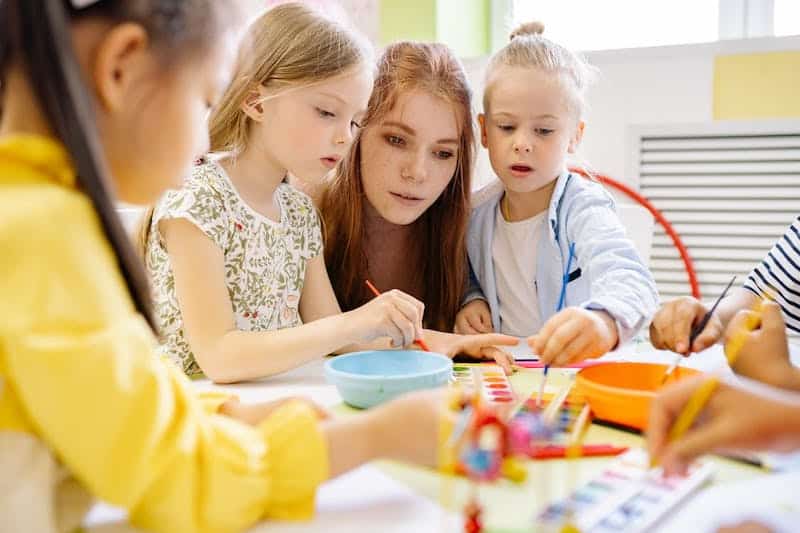
Supplies:
- Paints, sidewalk chalk, crayons, or other art supplies, and a big surface that children can work on together.
How to do it:
- Suggest a theme–birthdays, space, friendship, etc. Children will create a big mural on that subject.
Why it’s a good idea:
- There are a lot of reasons creative group activities foster a sense of community. (HarvardGSE) Students have the opportunity to plan together, to see how other students solve problems, and to share in contributing to something they can all feel excited about. A shared sense of accomplishment is impactful.
Group Storytelling Activities
Supplies:
- Notebooks, whiteboards, computers, or anything else where children can record the events of the story.
How to do it:
- Start with a prompt. Either ask for volunteers or call on students to contribute a sentence or event to a story. Work together to build a cohesive story. Ensure that every student gets a chance to contribute.
Why it’s a good idea:
- The stories that we tell hold our communities together. (Ed) When children cooperate to create a story, it promotes a sense of accomplishment and community. Because every child in the classroom gets a chance to contribute, every child receives the opportunity to feel a sense of personal accomplishment, as well as an opportunity to hear the ideas of their classmates. This activity also provides a give and take structure which is important in social interactions.
Blindfolded Obstacle Course
Supplies:
- Blindfold.
How to do it:
- First, have the children rearrange the furniture in the classroom into an obstacle course. Next, children will take turns putting on the blindfold and navigating the obstacle course. All the other students in the classroom call out instructions to the blindfolded child to help them get through the obstacle course. Take turns with different students and rearrange the course each time.
Why it’s a good idea:
- Learning trust, earning it, and instilling it in other people, is one of the most important emotional learning skills a child can develop. (Visibly) An activity where students have to help each other out and trust that the help they are receiving will provide a positive outcome provides a chance to create strong social bonds.
Finding Things in Common
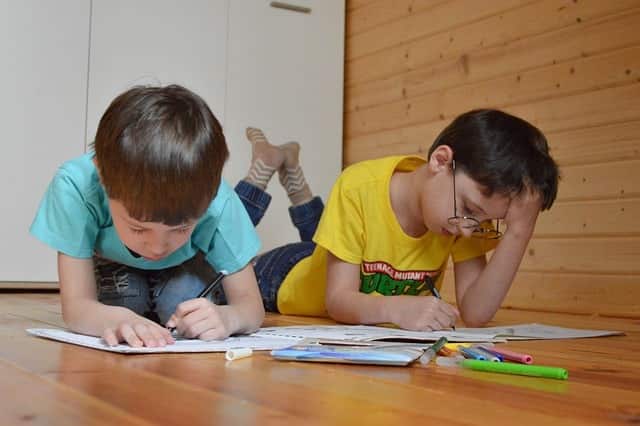
Supplies:
- None, or create a bingo card.
How to do it:
- Organize students into small groups. Children sit down with their groups and find out things they have in common (e.g. like pizza, have a brother, love dogs). Make it a game by setting a certain number of things in common they need to find. Whichever small group finds that number of things in common first wins a prize.
Why it’s a good idea:
- Finding common ground with others is an essential part of developing strong social bonds. (Gazette) A friendship group activity that encourages kids to learn more about each other is a great way to learn how to make friends in and out of the classroom.
Friendship Social Skills Group Activities
Educators who need assistance in developing friendship group activities for their students or other social emotional activities can receive help through Soul Shoppe. Soul Shoppe provides social emotional learning programs, online or in-person, for children and educators. Soul Shoppe strategies encourage children to build community and meaningful relationships with their peers. Whether helping in the classroom or assisting parents at home, Soul Shoppe focuses the discussion on social skills and emotional learning. Click for more information on SEL Programs for Elementary Schools, homeschool social emotional electives, or our parent support programs.
You May Also Like:
Conflict Resolution Activities for Kids
Virtual Social Emotional Learning Activities
Planning for the school year is an opportunity to add new educational layers to curricula. Adding elements of social and emotional learning through classroom activities is always a good idea. Social-emotional learning fosters better development that can improve the classroom environment and prepare children for challenges and opportunities in their futures.
Fun Indoor Classroom Games
Developing fun indoor classroom games for kids with social-emotional learning requires choosing and framing fun interactive activities. (MakingCaringCommon) Several common indoor classroom games already provide social-emotional learning opportunities. They just need to be framed so that students get used to approaching activities with the right mindset to practice social and emotional skills.
Here are a few suggestions to start with:
Social-Emotional Games for Students
Most games are already predicated on skills like paying attention, practicing memory, understanding how to use rules to make goals and follow through on decisions. As a result, turning a fun indoor game into a social-emotional learning game might be as simple as pointing out the skills the game asks the students to practice. (GSE)
For example…
I Spy
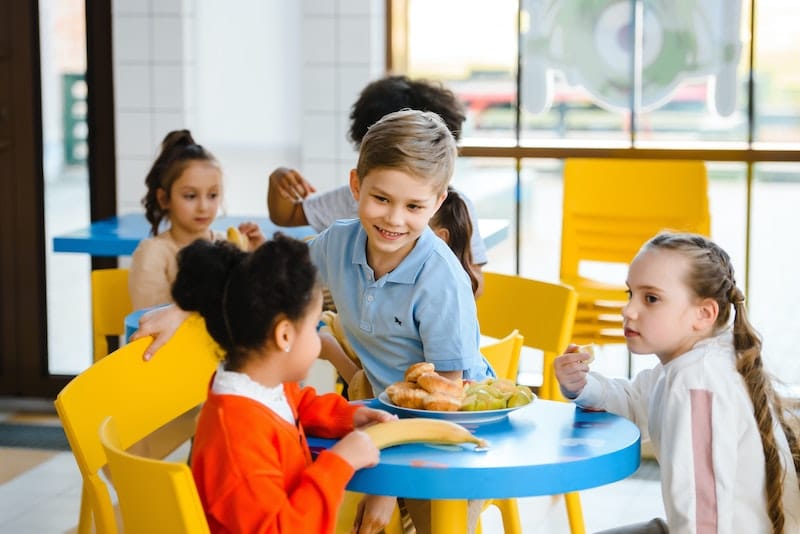
This reliable game is predicated on several important social-emotional skills. For example, it relates to focus, such as:
- Practicing filtering between senses and impressions
- Focusing in spite of distractions
- Reacting to detailed instructions in a timely fashion
Framing this game to turn it into a social-emotional learning game might look something like this:
Tell students that this game is about exercising their “focus power.” Additionally:
- Tell students they get to use “focus binoculars” to help them pay better attention to details. For younger kids, this might include miming holding a pair of binoculars to their eyes.
- Make it clear that “focus power” involves more than just their sense of sight. They need to look, but they also need to listen for clues, and they need to make a point of thinking about using their minds to hush distractions.
- When the game is over, moderate a conversation with the students. Get them talking about frustrations or distractions that made the game difficult, and discuss strategies for improving attention.
- An important aspect of turning a game into a social-emotional learning activity is the roundup at the end. Educators can ask students to think about other times they need to use their “focus power,” and what that looks like to them.
The Name Game
With this game, students will be able to practice paying attention to what other people say. Find out about more listening skills activities here. This game helps students:
- Practice active listening
- It helps with memory, in particular, as it relates to social interactions.
- It also helps with social skills.
Arrange students into a circle. Students take turns saying their name and accompany it with some kind of movement. Examples include raising their hand or sticking out a foot. Then all of the other students say that student’s name and imitate the motion. Go around the circle, repeating every new student’s name and motion and add it to a sequence. Frame this game by talking to students about engaging their “memory power.”
- Before starting the game, ask students why remembering is important in and out of school.
- Talk about all of the activities in life that involve “memory power.” Things like remembering where grandma lives, or which snacks you and your friends like in common, or the rules to games.
- When the game is over, review with students the challenging parts of the game–talk about the easy parts too.
- Talk with students about how to use memory power in their lives as it relates to making friends or other social skills.
Simon Says
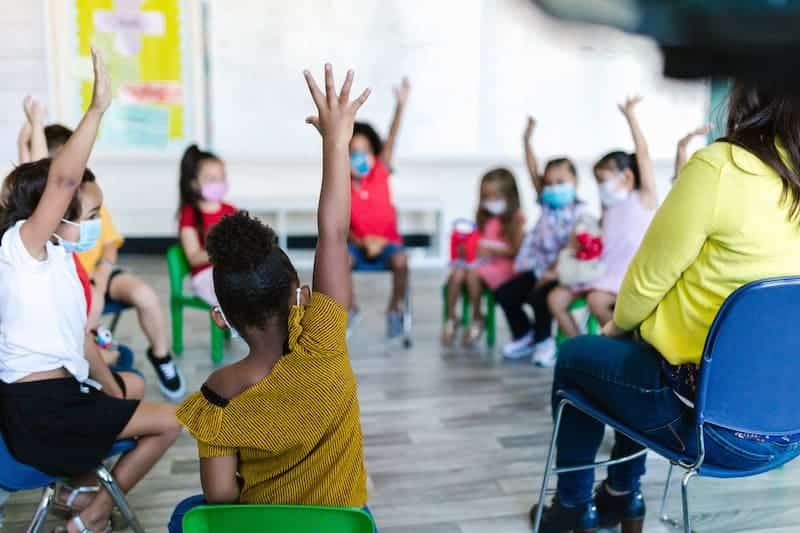
The game of Simon Says creates opportunities for students to practice the following skills:
- Community participation
- Active listening
- Paying close attention to what they’re doing
Frame Simon Says as a social-emotional learning activity by telling students how they can use their “stop and think power” to do well.
- Set it up by talking about how powerful our minds are over our bodies when we are in the habit of stopping to think about our actions.
- Talk through all the times, in and out of the classroom, that we need to stop and think about what we do.
- When the game is over, students can talk through how they paid attention and what they did to help themselves control their bodies.
- Have a class discussion about ways to practice stop and think power throughout the rest of the day.
Classroom Games for Kids
Games make excellent teaching tools. They create classroom bonding activities, and they provide learning opportunities that might not otherwise arise. In most cases, fun indoor classroom games can be turned into social-emotional learning experiences, if they’re framed correctly.
Soul Shoppe provides social emotional learning programs for schools and homeschooling families. Our in-person and online programs provide training to educators to help them learn how to create social-emotional learning classroom activities. Additionally, Soul Shoppe provides direct-to-student curriculum such as the online course Tools of the Heart. Contact us for more information here to learn more about our online courses.
You May Also Like:
Teaching Boundaries Activities
Conflict Resolution Activities for Kids
Sharing Games for Elementary Students
In order to become a change-maker, you must first learn to adapt to change in a healthy way.
Let’s be honest with ourselves for a moment — although change is necessary, it can also be extremely difficult.
It can cause our emotional balloons to fill up and be on the verge of leaking.
It can cause us to seek comfort in ways that are harmful to ourselves.
It can even cause us to have a negative outlook every time we are approached with something new.
But here is a reminder that how you adapt to change depends on how you react to change.
Read that again.
If we dig deep, lean into our resiliency and approach change with a curious mind, we can face big changes with more confidence, we can build better habits to manage uncertainty and most importantly, we can manage difficult emotions and empty our emotional balloons.
Then change not only becomes possible, it becomes fun!
And who doesn’t love fun?
In this month’s community event, we explored many healthy ways to cope with change that leave us feeling comforted, energized, and excited to move forward with the unexpected.
Get Your Change On! was a truly transformational experience where we played fun games, shared insightful stories, and even shook a tail feather!
Don’t just take our word for it! Check out this exciting recap video from Dr. Pooch:
Get Your Change On! centered on creating an open and safe space to hold important conversations around change and learn different ways to adapt, express emotions, and approach change differently in the future.
… and as you know, change is something we will have to constantly deal with it.
Something that has definitely shifted in the lives of our kiddos and even adults, is that there are now many conversations being had or shared in the media around the differences in the world — differences in cultures, race, and status. These conversations are far from easy but they are so necessary to have so that we can strive and hope for a future filled with community and compassion…
… a future where we can recognize and appreciate all differences.
The harsh reality is that when we recognize differences, we are forced to change how we look at the world.
And frankly, if you don’t know where to start with that shift, change can feel really scary and that’s okay.
Here at Soul Shoppe, we take pride in honoring, recognizing, and appreciating all the things that make each of us unique. Now, we want to share that same outlook with you and your kiddos.
We invite you to join Respect Differences, an on-demand course where kids are guided through lessons that will help them build up their self-esteem so that they can show more empathy toward people with ideas, appearances, likes, and dislikes different from their own.
This can ignite a beautiful change in our hearts, our lives, and our communities.
And that’s a change we’d love to see!
Interested in learning more about Respect Differences? Click the button below for more information!
WE WANT TO HEAR FROM YOU!
Now, we want to know what you thought of our virtual event. Whether you’re a parent, a teacher, or a school administrator, we’d love to hear from you so we can continue to improve our programs to best serve your kids and students.
Simply click here to take a very brief survey (only 3 questions!) and give us your feedback!
JOIN THE SOUL SHOPPE FAMILY!
Keep up with the latest at Soul Shoppe by signing up for our newsletter!
In this monthly email, we provide you with the tools and resources to help your kids learn how they can embody and express their truths. We’ll also share upcoming events and other opportunities to engage with Soul Shoppe’s rich community of educators on a deeper level. Simply sign up below.
Soul Shoppe’s virtual holiday celebration – Gifts, Giggles & Goodness – made it an incredible week for us. We hit record numbers of participants with well over 1200 kids joining in over the course of 3 days!
Together we got crafty with homemade holiday gifts, giggled in more ways than we could count, and shared how small acts of kindness can make a big difference. Thanks to all who participated, our days have been a whole lot more joyous and bright.
The Good Goes Around! All it takes is one small act of kindness to turn someone’s day around and light up their face with a smile. Our big-hearted facilitator Ryan taught us to get creative with crazy gifts and how we can practice more kindness to spark joy this season. Our big-hearted facilitator Dara helped us get our giggles out!
Now we want to know what you thought of our virtual events this year. Whether you’re a parent, a teacher, or a school administrator, we’d love to hear from you so we can continue to improve our programs to best serve your kids and students.
Simply click the button below to take a very brief survey (only 3 questions!) and give us your feedback.
We wish you lots more laughter, love, and joy this holiday season, and look forward to seeing you again on Zoom in the new year!
Students can quickly become overwhelmed when they have a lot of work to do but haven’t yet been equipped with the skill of goal setting. Overwhelmed students may act as though they are disinterested, aloof, or even lazy. They may appear to engage in an approach-avoidance cycle that adults interpret as a lack of motivation when the reality is that they aren’t sure how their present assignments will lead them to achieve their future goals.
Goal setting for students is vital. Every child needs to be equipped with a clear objective, as well as tactics to help them achieve their objectives when obstacles arise.
This article will discuss the importance of goal setting for students and practical ways to teach it.
Goal Setting for Students
The Importance of Goal Setting
EducationWeek states, “Goal setting helps students to be more aware of the learning that they are expected to experience. This awareness helps students to be engaged in the learning process. Mastery-oriented goals give students the opportunity to focus on learning standards and their own growth.”
As indicated above, there is a strong connection between a student’s understanding of their trajectory in the classroom and their ability to self-assess their learning progress.
For example, most teachers clearly define the student objective inherent within any given lesson plan. Most lesson plans begin with the words, “At the end of this lesson the students will be able to . . . “ Or some such similar statement. Clearly defining the objective of the lesson helps guide the teacher in their planning.
Why not share the objective of your lesson with the students?
Research shows that when you write the day’s objective on the board for all the students to see, they learn how to compare and contrast the day’s goals with their own experience. If a teacher writes, “At the end of this lesson, the students will be able to list the elements of a structured essay,” you are giving clear instructions as well as setting clear goals for your students. Students can, in turn, learn what goal setting looks like and how to measure their progress.
When objectives are social emotional rather than task-based, the objective may sometimes go unspoken. When implementing activities related to social-emotional learning, sharing goals is important. In addition, creating a chart of classroom goals together can help students see what outcomes the classroom wants to achieve while taking an active role in deciding the desired outcome. In this case, the class may come up with ideas like “be respectful to others.” Because the goal is their own and not just given to them, they may take a more active role in ensuring that outcome.
The importance of goal setting for students is that they learn to recognize a goal and outcome so they can eventually create roadmaps for themselves in any area of their lives.
Practical Ways You Can Teach Goal Setting for Students
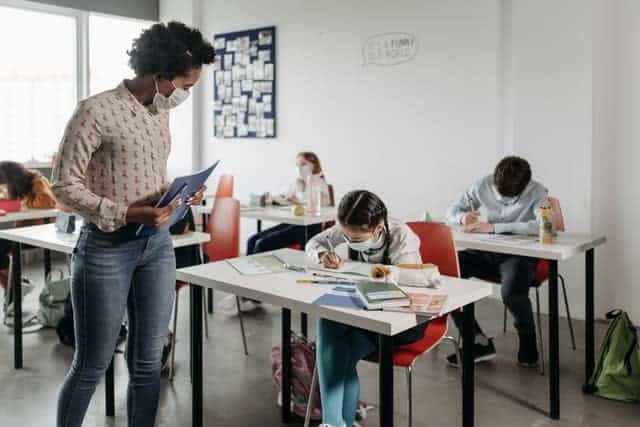
Goal Setting for Older Students
One of the most widely accepted and practical approaches to goal setting for students is found in the acronym SMART.
Smart goals for students include the following tenants:
- Specific
- Measurable
- Attainable
- Relevant
- Time-based
Let’s get more specific about how to set a smart goal.
Specific
The career search website Indeed discusses smart goals at length. Indeed explains, “By setting objectives and creating a clear roadmap for how you’ll reach your intended target, you can decide how to apply your time and resources to make progress.” This sentiment is a good reminder that what we teach our students about setting goals will follow them into their adulthood and careers.
When you are teaching smart goals for students, you can begin with helping them understand what it means to make a specific goal. The guidelines for setting a specific goal include the 3 S’s:
Simple. Sensible. Significant.
For example, if a student struggles with the concept of long division in math class, they might make a specific goal to help focus their efforts and feel motivated to achieve it. In this case, the student might decide they want to become better at long division because they want to master the skill to move onto the next level of math.
Measurable
Measurable goals help students track their progress and stay focused.
Using the example above, the student might set a goal to practice long division for 20 minutes a day. This is a measurable goal because it includes a specific amount of time and defines a piece of evidence that can prove progress.
Attainable
Setting attainable goals means the goal should stretch your student’s abilities but remain possible.
An attainable goal for a student who wants to become better at long division might be to get a better grade on their next math quiz. So, a student who earned a 60% on one quiz might set the goal of achieving a 70% on their next quiz. This goal is attainable because it is realistic and not overwhelming.
Relevant
Relevant goals are those that matter to your students. Part of the importance of goal setting for students is that they learn to recognize which tasks are essential to spend time on and which are not as relevant to their future endeavors.
Your students’ goals should align with their values and larger, long-term goals. In the example of a student who is struggling with long division, you might encourage them to think about how mastering the skill of long division will help them move on to the next level of math, which will, in turn, help them achieve the goal of graduation to the next grade level.
Connecting tasks to specific outcomes that relate directly to a student’s vision for their future works as a motivator and a source of inspiration!
Time-Based
Setting a clear and specific end-time or end-date for each goal helps students maintain stamina and focus because they know there is an end in sight–especially when they’re working on something they might not be interested in.
The math student might decide, “To achieve my goal of mastering the skill of long division, I will practice these math skills every day for 20 minutes until the next math quiz. Then, I will reassess the amount of time I spend practicing math.”
Short-term goals can help students keep the end in sight, and they also give you, as the teacher or parent, an opportunity to reward their efforts. If they achieve their goal of earning a 10% higher grade on the following math quiz, you can celebrate their success, thus motivating them further. If they don’t achieve their goal, you can celebrate the work they put in and help them reassess their strategies.
Students must learn early on that not reaching a goal the first time is a natural part of learning and growth. Celebrating their determination is just as important as celebrating their victories.
Goal Setting for Younger Students
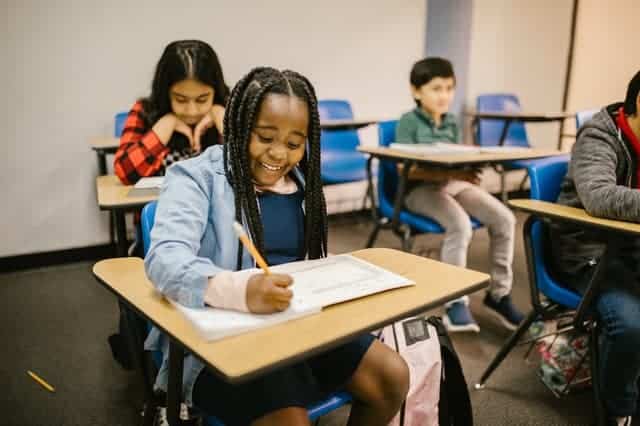
Goal setting for younger students often needs a more hands-on approach and more practice. In this case the SMART acronym will need to be broken down further. Younger students will need regular instruction on how to set effective goals. Here’s how to break down SMART goals for younger students:
Specific: What exactly do you want to accomplish?
Measurable: How will you know when your goal is set?
Attainable: Is it possible to meet this goal?
Relevant: Is the goal worth your work and effort?
Timely: What is the deadline you want to set to achieve your goal?
To help younger students understand concepts of specific, measurable, attainable, relevant, and timely, it’s helpful for them to explore opposites. For example, “What is specific versus vague,” or “What is measurable versus non-measurable.” This activity can help them better understand the meaning and importance of each term.
Conclusion
Actively having your students participate in classroom goals, having them set specific goals for their tasks, and leading by example are all great ways to introduce goal setting into the classroom. Implementing SMART goals is also helpful because it gives students a framework that is easy to remember and repeat.
At Soul Shoppe, our mission is to transform schools and communities by cultivating awareness, empathy, and connection. Soul Shoppe transforms learning communities into inclusive, empathy–based environments by teaching kids and adults the social–emotional skills they need to navigate life’s difficulties with compassion and self–awareness. From the Peacemakers program to online elementary school SEL programs, and parent programs, Soul Shoppe brings social emotional programs directly to you.
Reach out to us for more information on supporting you as you support our kids and communities!
You Might Also Like:
Conflict Resolution Games for Kids
Virtual Social Emotional Learning Activities
Do you believe your intelligence and talents are set in stone?
Or, do you believe you can improve them with hard work, commitment, and good strategies?
If you believe you can enhance your intelligence and abilities, you have a growth mindset. Conversely, if you think your potential is finite instead of fluid, you have a fixed mindset.
Research has shown that children and adults can develop and improve their intelligence. The most critical factor is believing that intelligence results from hard work and study (Very Well Mind). Those who think this, enjoy learning because they know they can succeed with effort. This knowledge creates a positive cycle of perseverance and belief in oneself.
A growth mindset for kids is essential in helping them become resilient and lifelong learners. It also has other benefits, including improving overall health and development (Harvard School of Education).
This article will list and explain the qualities of a growth mindset for kids. Next, we will compare that to a fixed mindset. Then, we will share five ways to help children develop a growth mindset at home and school.
Growth Mindset for Kids
It is critical to help instill a growth mindset in kids. The work begins at home, where children typically spend most of their time. If their home is a supportive, warm, and responsive place, children can focus on their intellectual development (Forbes). Therefore, having a stable, happy environment accelerates children’s learning ability.
Children of all ages can develop a growth mindset. Here are some of the qualities we see in kids who have a growth mindset:
- They have a passion for learning
- High self-esteem
- They tend to be open-minded
- View failure as an opportunity for growth
- Enjoy increased self-awareness
- Believe effort leads to mastery
- They can self-regulate
- Consider failures to be temporary setbacks
- They have empathy for themselves and others
- Willingly embrace change
- They are emotionally resilient
- View feedback as an opportunity to learn (Mindset Health).
These qualities help children succeed in academics and other activities, even when faced with setbacks.
How a Growth Mindset Increases Intelligence
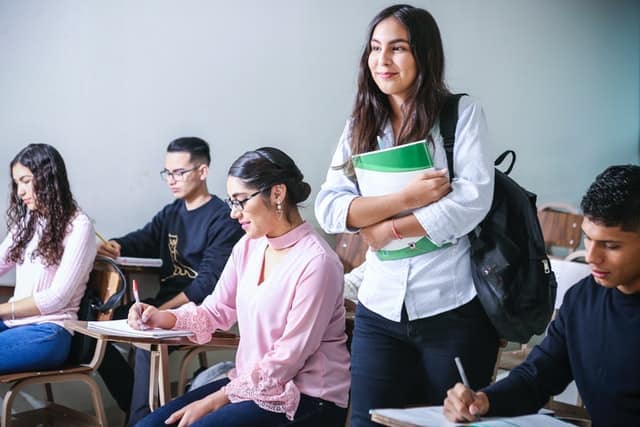
A growth mindset can increase intelligence in a few different ways. A research study by Carol Dweck from Stanford included studying thousands of children for 30 years. Dr. Dweck separated them into two categories: those with a growth mindset and those with a fixed mindset. She discovered after years of research that our brains are malleable.
Brain plasticity can improve and form new connections with practice while strengthening existing ones. This process of practice and growth rewires the brain to make people smarter; when students believe they can improve their intelligence, they put more effort into their learning. More significant effort leads to higher levels of achievement and success.
Additionally, we can improve the speed of the transmission of information by having good habits. Some helpful practices include using good strategies, asking questions, healthy eating, and good sleep schedules (Mindset Works). Consequently, we have more control over our abilities than we may have initially believed.
What is a Fixed Mindset?
A fixed mindset believes that children are born smart or talented, and no amount of effort will change that. This belief is incredibly limiting. As a result, children with a fixed mindset did not have the same results as those with a growth mindset.
A fixed mindset negatively impacts children’s resilience, academics, relationships, and other areas. It makes them less resilient because they believe they can’t improve. These children may develop negative thinking patterns and have a deep fear of failure or making mistakes. They typically avoid challenges, give up quickly, and feel threatened by other people’s success.
How to Teach Students to Develop a Growth Mindset

Teaching a growth mindset for students is essential for their success. Here are five ways to teach a growth mindset for children at home or in the classroom.
- Have established routines.
Routines are important because they give children stability and structure. This predictable family and classroom climate supports child development and academic success (Forbes).
2. Give specific feedback.
Researchers discovered that the type of feedback children receive matters. When encouraging a growth mindset, praise children for their effort and hard work. Resist the temptation to praise children by telling them that they are “smart,” as doing so encourages kids to believe in a fixed mindset, decreasing motivation and achievement. (Mindset Works). You can praise children for their effort and work ethic instead!
3. Erase the word “can’t” from your classroom.
Take away the word “can’t” and replace it with the phrase: “yet” (6seconds). The word can’t is dangerous because it discourages children from trying. Instead of allowing your students to say, “I can’t read,” encourage them to say, “I can’t read yet.” This change encourages kids to believe they WILL learn to read with enough time and effort.
4. Model a growth mindset for your students.
It’s important to talk aloud while you’re going through challenges so your students can hear how you handle them. For example, you can say, “I’m struggling to finish this task, but I’ll complete it.” Such sentiments exemplify a growth mindset.
Other phrases you can avoid include, “I can’t do this,” or “it’s too hard.” Continue to show a growth mindset, and eventually, your students will emulate.
5. Teach children about the brain.
Teach your students about the parts of the brain responsible for learning. Understanding the mechanics of the mind helps children know that they can improve their brains with practice and dedication. Also, teach that it is possible to become smarter with effort.
You can use the following lessons as a guide:
Two lesson plans for elementary: #1 and #2
Lesson plan for middle school #1 and #2
Lesson plan for high school
Final Words
Children can improve their intelligence with dedication and effort. A growth mindset allows children to reach their full potential and their goals. The most successful people are lifelong learners, resilient, and view failure as room for growth. Teaching this skill to children empowers them with the tools they need to have a bright future.
Soul Shoppe provides social emotional learning programs such as positive parenting programs, SEL programs for elementary schools, a peacemakers program, online courses, corporate training, and more.
You May Also Like:
How To Teach Empathy To Kids and Teenagers
Conflict Resolution Games for Kids
Virtual Social Emotional Learning Activities
Sources:
6seconds.org, Focused Kids, Forbes, Growth Mind Institute, Harvard, Harvard School of Education, Mawi Learning, Mindset Health, Mindset Works, Very Well Mind
Developing a growth mindset in the classroom is essential for helping students embrace challenges, persist through difficulties, and see mistakes as learning opportunities. When students believe their abilities can improve with effort and practice, they develop resilience and motivation that extend beyond academics into all areas of life.
By integrating social-emotional learning (SEL) and teaching growth mindset, educators can empower students to develop the confidence and problem-solving skills they need to navigate obstacles with a positive outlook. In this article, we’ll explore growth mindset strategies for students, classroom growth mindset activities, and ways teachers can create a growth mindset for the classroom through structured SEL practices.
What Is a Growth Mindset?
A growth mindset for students is the belief that intelligence, abilities, and talents can develop through effort, persistence, and learning from mistakes. This contrasts with a fixed mindset, where students believe their intelligence and skills are unchangeable.
Growth Mindset Definition for Students
A simple way to explain growth mindset in schools to young learners is:
“When you practice and keep trying, your brain gets stronger, and you get better at things over time!”
Why Is Growth Mindset Important for Students?
Students with a growth mindset in education:
✔ Take on Challenges: They see obstacles as growth opportunities rather than roadblocks.
✔ Develop Resilience: They bounce back from misses and keep trying despite setbacks.
✔ Stay Motivated: They understand that effort leads to improvement.
✔ Enjoy Learning: They are more open to feedback and new learning experiences.
By fostering a growth mindset for students, teachers help them develop the perseverance they need for both academic and personal success.
The Connection Between Growth Mindset and SEL
 SEL (Social-Emotional Learning) plays a critical role in growth mindset in the classroom. SEL teaches students essential life skills, including emotional regulation, self-awareness, and perseverance—traits that directly support teaching growth mindset.
SEL (Social-Emotional Learning) plays a critical role in growth mindset in the classroom. SEL teaches students essential life skills, including emotional regulation, self-awareness, and perseverance—traits that directly support teaching growth mindset.
Through structured SEL programs like Tools of the Heart, students learn to:
- Recognize and manage emotions when facing challenges.
- Develop self-confidence in their ability to improve and grow.
- Practice empathy in learning environments by encouraging peers and embracing collaborative problem-solving.
By integrating SEL principles into growth mindset classroom activities, teachers create a supportive space where students feel safe to take risks, learn from mistakes, and push beyond their comfort zones.
Growth Mindset Strategies for Students
1. Encourage the Power of “Yet”
Students often say, “I can’t do this,” but adding “yet” transforms their mindset:
🔹 “I can’t do this… yet.”
🔹 “I don’t understand… yet.”
This small change shifts their thinking toward progress rather than limitation.
2. Reframe Mistakes as Learning Opportunities
Instead of leaning into fears of failure, students should see mistakes as part of the learning process. Teachers can:
✔ Share personal stories about overcoming challenges.
✔ Celebrate mistakes as evidence of effort and growth.
✔ Encourage reflection by asking students what they learned from their struggles.
3. Praise Effort, Not Just Results
Rather than saying, “You’re so smart!”, focus on effort-driven praise:
🔹 “I love how you kept trying, even when it was hard!”
🔹 “That was a great strategy—you’re improving because of your practice.”
This reinforces a growth mindset for the classroom by highlighting persistence over natural ability.
4. Use Growth Mindset Language
Help students develop a strong growth mindset in education by modeling positive self-talk:
- Instead of: “This is hard.” → Say: “This will take time and practice.”
- Instead of: “I made a mistake.” → Say: “Mistakes help me learn.”
- Instead of: “I’ll never get this.” → Say: “I can improve with effort.”
Language shapes mindset, and consistent reinforcement makes a lasting impact.
Growth Mindset Classroom Activities
1. The Growth Mindset Journal
Encourage students to keep a journal where they:
✔ Write about a challenge they faced and how they handled it.
✔ Reflect on what they learned from a mistake.
✔ Set personal learning goals and track their progress.
This simple activity builds self-awareness and perseverance.
2. Brainstorm “Famous People Who Succeeded With Challenges”
Show students growth mindset examples by discussing people who faced setbacks before succeeding. Examples include:
- Thomas Edison (tried and missed 1,000+ times before inventing the lightbulb).
- Michael Jordan (was cut from his high school basketball team).
- J.K. Rowling (her book was rejected by 12 publishers).
Discuss how these individuals embraced challenges, persisted, and ultimately achieved success.
3. The Growth Mindset Challenge Board
Create a classroom board with weekly challenges that encourage effort and persistence, such as:
✔ “Try something new and share what you learned.”
✔ “Work on a skill you struggle with for 10 minutes a day.”
✔ “Help a friend when they feel stuck.”
This activity promotes growth mindset strategies for students while reinforcing peer encouragement.
4. Fixed vs. Growth Mindset Sort
Provide students with statements and have them sort them into “Fixed Mindset” vs. “Growth Mindset” categories. Examples:
✔ “If I’m not good at something, I should stop trying.” (Fixed)
✔ “With practice, I can improve at anything.” (Growth)
This helps students recognize unhelpful thought patterns and shift toward a growth mindset in schools.
Creating a Growth Mindset Classroom Environment
Incorporating a growth mindset for the classroom goes beyond activities—it’s about creating a culture that values persistence, curiosity, and resilience.
Classroom Growth Mindset Tips
- Model Growth Mindset Behavior – Share your own learning experiences and struggles.
- Normalize Effort Over Perfection – Encourage students to try their best rather than fear failure.
- Celebrate Small Wins – Acknowledge incremental progress in learning.
- Encourage Peer Support – Teach students to uplift and encourage each other when facing challenges.
By consistently reinforcing these principles, teachers can create a classroom growth mindset that helps students develop lifelong learning habits.
Empower Your Students with a Growth Mindset
Developing a growth mindset in the classroom transforms the way students approach challenges and setbacks. By integrating growth mindset strategies for students alongside SEL principles, educators help students cultivate perseverance, resilience, and confidence in their ability to grow.
Looking for more structured SEL resources? Check out Soul Shoppe’s Tools of the Heart Online Course for interactive lessons that support student emotional growth and resilience.
Together, let’s create classrooms where students believe in their potential and embrace every challenge as a stepping stone to success!
You May Also Like:
Every student deserves to feel seen, valued, and understood. For neurodiverse students, this means being supported in ways that honor how they think, process, feel, and learn.
In a classroom that centers around social emotional learning (SEL), students aren’t asked to fit a mold—they’re invited to grow as they are. And for neurodivergent students, this kind of inclusive, emotionally aware environment can make all the difference.
This article explores how SEL can be adapted to support neurodiverse students and offers strategies for creating a neurodiverse classroom that’s welcoming, flexible, and deeply compassionate.
What Does Neurodiverse Mean?
Before diving in, let’s revisit the neurodivergent definition:
Neurodiversity refers to the natural variation in how human brains work. It includes people who are autistic, have ADHD, dyslexia, sensory processing differences, and more. In contrast, neurotypical describes those whose brains function in ways considered “typical” by societal standards.
In any classroom, there’s a blend of neurodiverse and neurotypical learners—each with their strengths, challenges, and ways of connecting with the world.
The Struggles of Neurodiverse Students in Traditional Classrooms
Many neurodiverse students experience obstacles in school settings not because they are incapable, but because the environment isn’t designed with them in mind.
Common struggles of neurodiverse students include:
- Sensory overwhelm from lights, noise, or crowded spaces
- Difficulty with rigid schedules or transitions
- Challenges with social cues or group dynamics
- Feeling misunderstood or unseen by peers or educators
These challenges can lead to anxiety, isolation, and disengagement—unless the classroom is structured to support their emotional and sensory needs.
How SEL Supports Neurodiverse Students
Social emotional learning gives all students the tools to recognize emotions, self-regulate, and navigate relationships. For neurodivergent students, it also offers the opportunity to:
- Build self-awareness in a safe, validating way
- Practice communication skills through modeling and repetition
- Receive consistent emotional coaching
- Access calming tools and predictable routines
- Feel empowered, not “corrected”
Through programs like Tools of the Heart, educators can embed emotional literacy and empathy into daily life, not as an add-on, but as a foundation for inclusive connection.
Creating a Neurodiverse Classroom with SEL at the Center

A truly inclusive classroom doesn’t just allow for differences—it welcomes them. Here’s how to use SEL to create a neurodiverse classroom where everyone thrives.
1. Make SEL Multi-Sensory
Use visuals, movement, and audio to teach SEL concepts in a way that speaks to all learners.
- Visual feeling charts and sensory toolkits
- Breathing exercises with physical cues (like Soul Shoppe’s “Empty Balloon” strategy)
- Role-playing to practice emotional responses
When SEL is accessible, it becomes a tool that’s not only effective but empowering for neurodivergent students.
2. Build Predictable Routines with Emotional Check-Ins
Consistency helps reduce anxiety and sensory overload. Create daily rhythms that include:
- Morning check-ins (with verbal or nonverbal options)
- Transition warnings and flexible breaks
- Time to reflect or process through drawing, writing, or a quiet space
This routine supports both neurodiverse and neurotypical students, offering grounding for those who need structure and options for those who need space.
3. Normalize Emotional Coaching and Self-Regulation
Neurodivergent symptoms may include difficulty with impulse control or processing social cues. Rather than punishing these moments, SEL invites us to teach skills like:
- Naming emotions without shame
- Asking for space or help
- Practicing calming strategies before reacting
These skills benefit the entire classroom and strengthen peer understanding.
4. Encourage Peer Empathy and Responsibility
Programs like Planet Responsibility help students understand that they all contribute to the classroom community—and that inclusion is an active practice.
Try:
- Kindness interviews between classmates
- Small group discussions on how we support one another
- Reflection questions like, “How did we show respect today?”
This helps shift the culture from “accommodating” to celebrating difference.
The Role of Educators (and the Future of Special Education)
As more teachers embrace inclusive SEL strategies, the future of special education teachers is evolving. It’s no longer just about individualized support—it’s about creating classrooms where emotional tools and flexible frameworks are built in for everyone.
Collaboration with a neurodiversity consultant, inclusive curriculum planning, and SEL-infused environments help teachers meet students where they are and stretch the system to serve more children well.
Classroom Culture That Embraces Neurodiversity
To truly support neurodiverse students, we need more than checklists—we need connection. SEL helps create a classroom culture that says:
“You belong. Just as you are.”
This means:
- Listening to the student’s voice
- Offering choice and autonomy
- Teaching emotional tools in every lesson
- Valuing rest, repair, and regulation as much as academics
Soul Shoppe’s Elementary SEL Curriculum provides the structure, language, and resources to do just that—while centering dignity and connection in every step.
Supporting Every Mind, Every Day
Every brain is different—and every student deserves to feel like they matter. By using SEL to support neurodiverse students, we’re not only helping them succeed in school—we’re honoring the diversity that makes classrooms more thoughtful, compassionate places.
Because when students feel emotionally safe, they don’t just survive.
They thrive.
You May Also Like:
Education in general, but especially for children, rests on an assumption that new ideas will be explored–new thoughts will be thought. Some ideas cause discomfort, and some thoughts feel dangerous. When encountering new ideas or thinking new thoughts, children will worry sometimes whether what they think is somehow bad or wrong. Even if the thought isn’t wrong or bad, if it feels uncomfortable children are less likely to speak about them out loud or ask questions to better understand the new information. This new information might be an unsettling experience in life. Other experiences might include interactions with discrimination which makes environments feel unsafe.
For this reason, it’s essential to create a safe space in every classroom setting where children feel they’re allowed to ask any question without attracting negative reactions. In this article, we’ll explore what makes a safe space and how to create a safe space in the classroom.
How To Create A Safe Space
What is a Safe Space?
Safe space can refer to actual space, such as a classroom, or can even indicate a safe space ideologically. These can also be the same thing. Regardless, it’s important to create some clear and specific context where the boundaries clearly define where and when there will be no judgment.
There are different schools of thought around how to create a safe space, inside and outside the classroom. It’s vital that classrooms are safe spaces, and that they lend themselves to becoming safe spaces. Ideas are being tested already, and so some thinkers push a narrative of embracing a strategy of turning classrooms into “brave spaces.” In a brave space, educators tackle controversy with civility and moderate conversation to aid in ownership of intentions and their impact.
How to Create a Safe Space in the Classroom

Creating a safe space in the classroom starts with the teacher. An educator sets the tone of their classroom before students even set foot in there.
Since the crux of safe spaces stems from First-Amendment rights, it’s possible to begin with a conversation about the First Amendment. Every student–every person–has to understand the content and the implications of the First Amendment of the U.S. constitution. At the same time, it weighs on an educator to mediate productive dialogue, rather than permit a conversation that goes anywhere. While the goal is to create a classroom environment where students feel free to speak their minds, there are ways to be honest while showing respect.
Understanding how to speak both freely and respectfully is a necessary step in creating a safe space.
Educators might moderate this dialogue about First Amendment rights by…
- Leading conversation on the subject of hurtful terms and what terms to use instead. If a child has never had an opportunity to learn that a given term may offend in some cases, then it is valuable to hear that in a safe environment.
- Cultivate empathy. In the context of the classroom, conversations about understanding and empathizing with the perspectives of others turns into a skill. Skills have technical aspects, and they can be improved by practice and repetition. Discussions about what other people might think or feel helps create an environment of mutual respect.
- Moderate conversations between peers when one of them has offended the other. Sometimes children haven’t learned the tools to communicate their feelings honestly and with empathy. Educators are in a position to use social situations as teaching opportunities.
- Encourage students to speak up when they hear potentially damaging or derogatory speech. Children are more likely to speak up and honestly appraise what they hear if they’re not worried about possible negative consequences of speaking up. So, make it clear that nothing punitive happens when people do speak out about derogatory speech.
- Create opportunities for open discussion, like “circle time” or otherwise age-appropriate contexts that enable a sense that this time is protected–i.e., a safe space.
Project Empty
Try our Project Empty Challenge and create a Peace Corner. Somewhere in your home or educational space, create a protected place with tools that promote calm. Tailor it to the needs of your students (and yourself). Any art, comfy cushions, or art supplies that promote a sense of calm can create a space that feels safe and welcoming.
Creating Safe Spaces
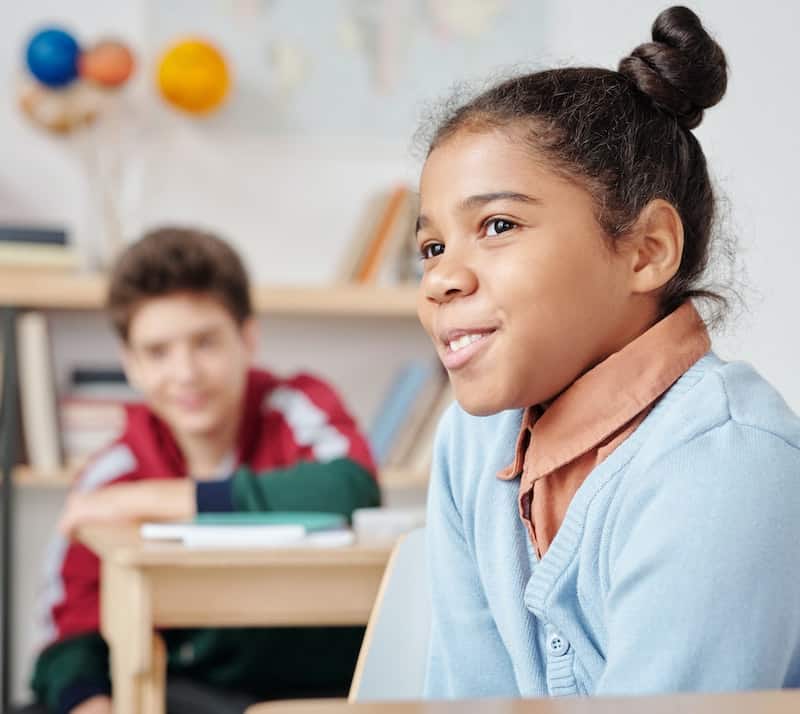
A classroom has to be a place free of fear, or at least somewhere that encourages bravery. If an educator wants to prepare their students to have rewarding lives, then it is essential to create a safe space where all students feel welcome, seen, and embraced. To do this means teaching techniques for respect and empathy and talking about some hard ideas. In the end, creating a safe space in the classroom empowers students for the rest of their lives.
Soul Shoppe provides social emotional learning programs and can help you learn how to create a safe space in the classroom or at home. Soul Shoppe encourages empathy and emotional awareness in children. Click for more information on SEL Programs for Elementary Schools.
You May Also Like:
Conflict Resolution Activities for Kids
How to Teach Empathy to Kids and Teenagers
Feelings can be complicated, and especially as a child, they can be difficult to navigate and express. It’s therefore important to help children find the words they need to vocalize their feelings.
When we talk about expressing feelings, a few clarifications are needed. Feelings and emotions are not the same. It’s tempting to use the words interchangeably, but it isn’t quite accurate to do so.
According to an article from Wake Forest University, feelings result from many different sensations, such as hunger or weariness. Feelings can come from emotions as well. Feelings are always conscious experiences, even if sometimes it’s unclear what’s causing them. (Wake)
Emotions are more complicated and unconscious. They are responses to layered experiences. According to the book, Discovering Psychology, they include “a subjective experience, a physiological response, and a behavioral or expressive response.” (Very Well)
The first major step in discovering how to express your feelings in words is distinguishing whether the sensations are feelings or emotions.
How To Express Your Feelings in Words

Words to Describe Emotions and Feelings
In general, expressing emotions takes fewer words. At the same time, it requires courage. Children might find it difficult to voice the emotions they’re experiencing.
Help your child or students with vocabulary that enables communication of emotions.
The six basic emotions are:
- Anger
- Fear
- Joy
- Love
- Sadness
- Surprise
After a child identifies one of these emotions, then it becomes easier to start talking about feelings.
Feelings can come from emotions. For example:
- Envy can be a feeling that comes from anger.
- People feel panic as a result of fear.
- Relief can be a feeling proceeding from joy.
- Sometimes people feel longing because of the emotion of love.
- Humiliation can be a feeling that comes from sadness.
- Silliness can come from surprise.
Expressing Emotions Examples
Feelings and emotions can be complex. Panic might come from fear, but then it might lead to anger. Feelings of shame can sometimes stem from a moment that started as joyful.
Once an emotion or feeling has been identified, it’s easier to choose appropriate coping mechanisms.
Among the most effective tools for expressing feelings in healthy ways is the, “I feel…When people…I need…Will you please…” formation. (SoulShoppe)
This formation may need to be broken down, especially for younger children.
Start with just the “I feel…” part.
For example…
- I feel frustrated.
- I feel worried.
- I feel nervous.
After children get used to identifying their feelings and emotions, start asking them to identify the cause of their feelings. Use the formation, “I feel…when people…”
For example…
- I feel frustrated when people talk about how I pronounce words.
- I feel worried when people remind me I have a math quiz.
- I feel nervous when people talk about how I wear glasses.
Once they start getting the hang of associating their feelings with things happening in their lives, start asking them to begin looking for the reason those events matter. Use the “I feel…when people…I need…” formation.
For example…
- I feel frustrated when people talk about how I pronounce words. I need to feel safe when I talk.
- I feel worried when people remind me I have a math quiz. I need to learn my math problems.
- I feel nervous when people talk about how I wear my glasses. I need to feel safe wearing my glasses.
The point of this formation is to give children more tools to communicate what’s going on inside them.
The last step is giving children the tools to ask for what they need. For example…
- I feel frustrated when people talk about how I pronounce words. I need to feel safe when I talk. Will you please stop pointing out how I pronounce words?
- I feel worried when people remind me I have a math quiz. I need to learn my math problems. Will you please help me study?
- I feel nervous when people talk about how I wear my glasses. I need to feel safe wearing my glasses. Will you please stop talking about my glasses?
Why a Child has Difficulty Expressing Emotions

The reason a child might have trouble expressing emotions and feelings is simply that they’ve experienced fewer things than an adult, and some feelings are new. As a result, they’ve had fewer opportunities to learn the terminology necessary to express their emotions and feelings. According to Vanderbilt University, “Children get angry, sad, frustrated, nervous, happy, or embarrassed, but they often do not have the words to talk about how they are feeling. Instead, they sometimes act out these emotions in very physical and inappropriate ways.” (Vanderbilt) Children can end up experiencing frustration when they haven’t yet learned the words necessary to explain what they are feeling.
Therefore, teaching your child to identify and express emotions and feelings is of paramount importance. Gently helping children to better grasp the vocabulary and tools to identify and express emotions will prepare them for a far more rewarding life. This is because when they learn how to express their feelings in words they can then progress to learning coping mechanisms to express their feelings in healthy ways.
Soul Shoppe provides social emotional learning programs for children. For more than twenty years we’ve created tools and empowered educators to incorporate emotional intelligence into curriculum. Soul Shoppe strategies encourage empathy and emotional awareness in children. Whether helping in the classroom or assisting parents at home, Soul Shoppe brings social skills to the forefront of the discussion. Click for more information on SEL Programs for Elementary Schools or our parent support programs.
You May Also Like:
Anxiety is one of the most common challenges students face, affecting their ability to focus, participate, and thrive in the classroom. Whether it’s test anxiety, social worries, or academic pressures, understanding how to help students with anxiety is essential for educators. By providing the right support, teachers can create a classroom environment that helps students feel safe, empowered, and capable of managing their stress.
This article explores the causes of anxiety in students, the impact of anxiety in the classroom, and practical interventions for students with anxiety that teachers can implement to support their emotional well-being.
Understanding Anxiety in Students
Anxiety in students can manifest in many ways, from physical symptoms like stomachaches to avoidance behaviors such as refusing to participate in class discussions. While occasional nervousness is a natural part of growing up, persistent anxiety can interfere with a child’s ability to learn and engage with their peers.
How Anxiety Affects School Performance
Students with anxiety may struggle with:
✔ Concentration and Memory: Stress can make it difficult to focus on lessons and retain information.
✔ Participation and Engagement: Fear of making mistakes or speaking up in class can lead to avoidance.
✔ Social Interactions: Anxiety can make forming friendships or working in groups overwhelming.
✔ Test Performance: Performance anxiety can cause students to freeze or struggle to demonstrate their knowledge under pressure.
Recognizing these challenges allows teachers to provide helpful resources for students with anxiety and create a supportive learning environment.
Common Causes of Anxiety in Students
Understanding the causes of anxiety in students helps educators anticipate triggers and provide meaningful support. Some of the most common causes include:
- Academic Pressure: High expectations and fear of failure can make students anxious about tests, homework, and class participation.
- Social Anxiety: Worries about fitting in, making friends, or speaking in front of others can be overwhelming.
- Change or Uncertainty: Transitions such as moving to a new school, changing teachers, or adjusting to new routines can cause stress.
- Sensory Overload: Noisy, busy environments can be difficult for students with sensory sensitivities.
- Perfectionism: Some students set extremely high standards for themselves, leading to frustration when they don’t meet their own expectations.
By identifying specific stressors, teachers can implement interventions for students with anxiety that address individual needs.
How Teachers Can Help Students with Anxiety
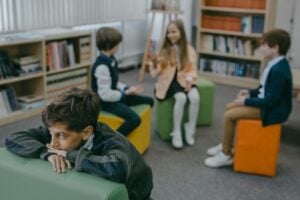
Educators play a critical role in supporting students with anxiety by fostering a calm, inclusive, and predictable environment. Below are key strategies to help anxious students feel more at ease.
1. Create a Safe and Supportive Classroom Environment
A welcoming classroom helps reduce anxiety in the classroom by making students feel secure and valued. Strategies include:
✔ Consistent Routines: Predictability can ease stress, so establish clear schedules and expectations.
✔ Flexible Seating Options: Let students choose quiet spaces when they need a break.
✔ Encouraging Words: Offer reassurance and positive reinforcement, even for small achievements.
2. Teach Mindfulness and Relaxation Techniques
Mindfulness helps students regulate emotions and manage stress. Simple techniques include:
✔ Deep Breathing Exercises: Teach students to take slow, deep breaths when they feel anxious.
✔ The Empty Balloon Exercise: The Empty Balloon guides students through mindful breathing, helping them calm down in moments of stress.
✔ Grounding Activities: Encourage students to focus on their senses (what they see, hear, and feel) to stay present in the moment.
3. Provide Emotional Support and Validation
Students with anxiety need to feel heard and understood. Teachers can:
✔ Check In Regularly: A quick “How are you feeling today?” can help students open up.
✔ Normalize Anxiety: Let students know that it’s okay to feel nervous and that they are not alone.
✔ Offer a Calm-Down Space: Create a designated area where students can take a break when needed.
4. Encourage Positive Self-Talk and Growth Mindset
Help students reframe anxious thoughts with encouraging messages:
🔹 Instead of: “I’ll never get this right.” → Say: “I’m still learning, and I’ll get better with practice.”
🔹 Instead of: “Everyone will laugh if I make a mistake.” → Say: “Everyone makes mistakes. That’s how we learn.”
5. Offer Flexible Participation Options
Some students may feel overwhelmed speaking in front of the class or participating in group activities. Support them by:
✔ Allowing written responses instead of verbal answers.
✔ Pairing them with a trusted friend for partner work.
✔ Giving them the option to present privately or in small groups.
6. Promote Social-Emotional Learning (SEL) Strategies
SEL helps students build confidence, emotional regulation, and resilience. The Tools of the Heart curriculum provides structured lessons that teach students how to recognize, process, and manage emotions effectively.
Interventions for Students with Anxiety
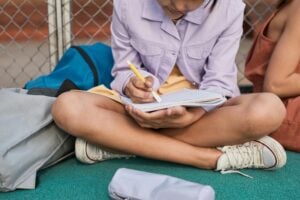
1. Sensory Breaks in the Classroom
Short sensory breaks can help students reset and manage their emotions. These include:
✔ Stretching or movement breaks to release built-up tension.
✔ Fidget tools for students who need to channel nervous energy.
✔ Listening to calming music during quiet work times.
2. Journaling and Expressive Writing
Encourage students to write about their feelings in a journal. Writing helps students:
✔ Process emotions in a safe and private way.
✔ Identify patterns in their anxiety triggers.
✔ Reflect on positive moments and growth.
3. Teaching Emotional Vocabulary
Many students struggle to articulate their emotions. Teach them phrases like:
✔ “I feel nervous because…”
✔ “I need help with…”
✔ “When I get anxious, it helps me to…”
The more students can express their emotions, the easier it is to find solutions.
4. Peer Support and Classroom Community
Encourage peer support by:
✔ Practicing kindness and empathy in classroom discussions.
✔ Using buddy systems to help students feel included.
✔ Reinforcing the idea that classmates should support, not judge, each other.
Resources for Students with Anxiety
Helping students with anxiety requires ongoing support and accessible resources. Teachers can integrate structured programs like:
- The Empty Balloon: A guided breathing tool that helps students self-regulate.
- Tools of the Heart: A social-emotional learning curriculum that builds confidence and emotional resilience.
- Classroom Relaxation Stations: Create a space with calming tools like stress balls, quiet reading materials, or soft lighting.
- Mindfulness Apps for Kids: Apps like Headspace for Kids or Calm can provide guided relaxation exercises.
By providing these resources for students with anxiety, teachers create a more inclusive and supportive classroom environment.
Supporting Students with Anxiety in the Classroom
Understanding how to help students with anxiety goes beyond academic support—it’s about creating a safe space where students feel heard, valued, and equipped to manage their emotions. By implementing interventions for students with anxiety, offering SEL resources, and building strong teacher-student relationships, educators can help students develop resilience and confidence.
Want to bring structured emotional learning to your classroom? Explore Tools of the Heart for evidence-based strategies to support students with anxiety in meaningful ways.
You May Also Like:
School is a natural environment for children to make friends. Many children have a natural social instinct, though some do not. Putting several kids together and giving them activities in common creates an environment for children to develop friendships naturally at school. However, children won’t only make friends at school. After-school activities and sports, church, and other environments that encourage teamwork and socialization are also places where children will build their social circles.
Educators can help children improve their friendship-building skills. Providing strong social skills to all children in the classroom helps the whole classroom by leveling the playing field for both the socially awkward children and the socially outgoing children. Teaching children how to make friends at school and providing effective conversation starters will prepare them for one of the most useful and most frequently important experiences: connecting with people.
As for homeschooled children, it might not be as easy to teach children how to make friends while at home unless in a co-op. However, homeschooled children will still be able to learn how to make friends through learning social skills taught by the parent or third-party educator. Learning effective conversation starters, and strong social skills, in general, will prepare homeschooled children for successful and rewarding social lives as well.
How to Make Friends at School
According to WebMD, “Healthy friendships are also linked to better cardiovascular health, lower blood pressure, less depression, and a longer life. So it never hurts to try to make new friends.” (WebMD)
It’s a comfort to know that there are health benefits for friendships. However, children don’t need to know that there are health benefits to recognize that making friends is a good idea.
The job of educators is to create environments where children have equal opportunities to make friends, regardless of whether children are shy or outgoing.
Skills to teach children how to make friends include:
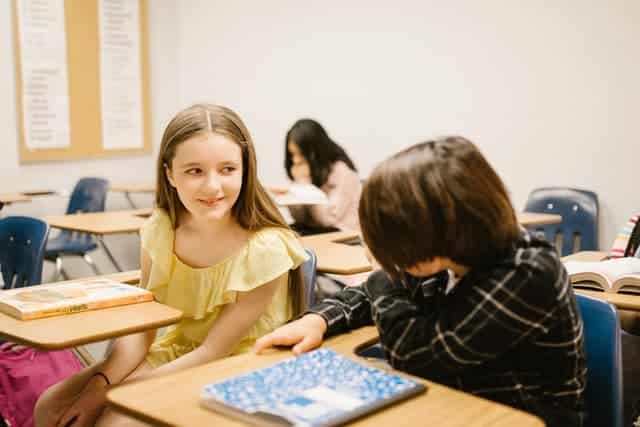
- Saying yes to invitations
- Taking initiative in social situations
- Starting conversations (Sharing something about themselves is a good way to start.)
- Showing interest in what other people are saying
- Smiling and making eye contact
- Share details about themself
- Practicing small acts of kindness
- Demonstrating persistent interest
Social skills aren’t necessarily obvious to some children. In fact, some children might find the prospect of trying to make friends both frustrating and intimidating. Even outgoing children might not have any natural instincts for how to pursue a rewarding relationship. Designing classroom activities that encourage the social skills listed above will help children start pursuing rewarding friendships.
While children learn what skills help them make friends, some children will also benefit from learning a few things not to do in a conversation to foster stronger friendships.
For instance:
- Act with honesty.
- Avoid bragging. While educators should try to show children they can be proud of their accomplishments, there should be some distinction made between talking about things they’re proud of themselves for and bragging about them.
- Limit aggressive conversation tactics. Children might need to learn not to be too forceful with new acquaintances. They may also need to be introduced to spacial boundaries.
- Learn patience. Children might need to learn that friendships can take a long time and need to be nurtured.
Another important and not necessarily intuitive skill that children need to learn about making friends is recognizing when they have successfully made a friend.
For instance:
- Another child takes the initiative in the relationship
- When it feels comfortable to be around a person and talk to them
- When it becomes natural to share feelings with the person
The skills involved in learning how to make friends might not seem like teachable skills. However, nothing could be further from the truth. There are objective and clear indicators related to making friends, and anything objective and clear can be taught.
Conversation Starters
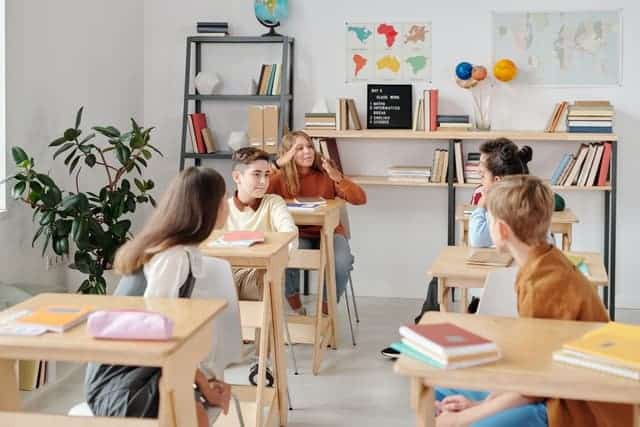
A fairly straightforward skill educators can create activities around is conversation starters. It’s a mystery to some children how to initiate a conversation. It may be an effective use of classroom time to design an activity where children come up with conversation starters.
For example:
- What animal would you like to be and why?
- What’s the longest walk you’ve ever taken?
- What would you do if you didn’t have a TV?
- If you could go anywhere, where would you go?
- What’s your favorite story?
- What’s your favorite song and why do you like it?
- If you had a superpower what would it be?
Implementing this activity in the classroom allows children to think of things they would like to use in conversations without the pressure of performing on the spot.
A follow-up activity to this is roleplaying these conversation starters with other kids in the classroom. Roleplay provides the opportunity of helping children practice starting a conversation and thinking about what happens after the conversation continues.
Conversation skills are just as important as any other life skill. Activities that foster learning opportunities for children to learn how to make friends will prepare children for success in life.
For an online program on social emotional learning that includes social engagement exercises, view Tools From The Heart.
If unable to teach social skills in the classroom, or if an educator would like assistance teaching social skills, you can receive help with virtual social learning activities. Soul Shoppe provides social emotional learning programs for children and educators that can be completed online. Soul Shoppe strategies encourage empathy and emotional awareness in children. Whether helping in the classroom or assisting parents at home, Soul Shoppe brings social skills to the forefront of the discussion. Click for more information on SEL Programs for Elementary Schools, homeschool social emotional electives, or our parent support programs.
You May Also Like:
Conflict Resolution Activities for Kids
Virtual Social Emotional Learning Activities
A key aspect to understand in social and emotional learning is the importance of managing emotions. Incorporating ways to manage emotions in a classroom setting can help teach children skills necessary to live rewarding lives. If children can get an education that teaches them how to deal with emotions in a healthy way, they are more likely to thrive.
Managing emotions in a positive way has far-reaching benefits. Not only will a kid with the ability to self-regulate their feelings experience better social interactions, but there are also health benefits to effective emotional management. People who know how to manage their emotions in a positive way will have better cardiovascular health. (HHP) Good emotional health quite literally gives people good hearts.
While there are many techniques that might prove effective for positive emotional management, we have a favorite. The Empty Balloon is an exercise we often implement here at Soul Shoppe.
The Empty Balloon Exercise — How it Works
The Empty Balloon Exercise is an emotional management tool. It begins by having students visualize emotional states as big balloons. As the emotion expands, the imagined balloon expands. And what happens to balloons when they overinflate?
They pop.
In an effort to avoid emotional explosions, the idea is to find ways to release pressure from your emotional ballon before they pop.
The Empty Balloon Exercise serves as a teaching metaphor to describe the psychology and physiology behind effective emotional management. Click here to learn more about the Emotional Balloon Exercise.
Improving Emotional Intelligence for Elementary Students
Emotional intelligence is a critical factor in the effective management of emotions. The practice of improving emotional intelligence is a lifelong challenge for most of us. It’s valuable to prepare children with a solid foundation in understanding how to interpret and manage emotions. This includes their own and those of other people.
In order to improve emotional intelligence, teachers and parents can incorporate certain activities into their curricula. Such as: (DCE)
- Self-awareness activities. Activities like journaling and role-playing help children learn self-awareness. Reading is also a good tool for learning self-awareness.
- Practicing self-regulation. Exercises like pausing to breathe before reacting and recognizing your own emotions are important. Board games and active games like Simon Says help kids learn and practice self-regulation skills.
- Empathy is an important part of improving emotional management. It may not come naturally for children to think about how other kids feel. Activities like check-ins including the whole class, or role-playing help students practice empathy.
- Cultivating social skills. Nothing teaches emotional intelligence better than social interaction. Providing children with opportunities to practice social skills gives them practical experience in developing emotional awareness. Team sports and playing games as teams provide good aids in teaching social skills.
A lot goes into emotional intelligence. With a strong grounding in emotional awareness, students can learn lessons to help them manage and control their emotions in healthy ways. (HBS)
Sometimes children find it challenging to differentiate between feelings and emotions. It is important to develop the skills to identify when it is an emotion and when it is a feeling. Feelings are generally immediate reactions to situations, while emotions often involve a deeper psychological reality. (iMotions)
How to Manage and Control Emotions in Healthy Ways
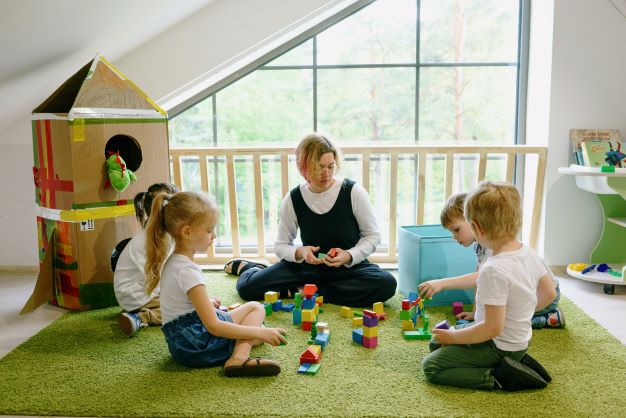
Emotional balloons will inflate. Being human means having emotions. Developing emotional intelligence is a lifelong skill. When kids can identify what they’re feeling, they will have better luck deflating their emotional balloons.
There are a handful of good ways to deflate your emotional balloon. Here are a few: (SoulShoppe)
- Hang out with friends. Social interaction helps raise emotional awareness and helps turn negative emotions into positive ones.
- Dance it out. Engaging the body with an activity unrelated to a negative emotion helps reduce the pressure in your emotional balloon. Plus…
- Listening to music is always a good emotional outlet!
- Stop and breathe for a second before doing the next thing.
- Read a book. If the problem is getting too deep into your own head, books are great ways to change how you’re thinking.
- Give someone a hug. As naturally social animals, humans heal from positive physical contact.
- Find a chuckle. Laughing stimulates endorphin production and helps with mood regulation.
- Do something creative. Drawing a picture, singing a song, and writing some poetry, are all ways to redirect emotional energy in a positive way.
- Talking to someone trustworthy will also help relieve emotional stress a lot of the time.
- Cry if you need to!
There are a lot of ways to relieve pressure from your emotional balloon, or even empty it completely.
Peace Corner
Where can students go during the school day when they need a moment to empty their emotional balloons? A peace corner is a safe space that can be created in the classroom or at home where children can empty their emotional balloons. Find out how to create a peace corner here.
There are many opportunities for children to learn how to manage emotions in a positive way, at home and at school. Through creating and sharing social and emotional learning techniques, Soul Shoppe helps teachers and parents at home or in the classroom. Our SEL curriculum for elementary school students help children learn positive emotional management. We have developed tools like the Empty Emotional Balloon exercise and the Peace Corner to bring SEL tools to your curriculum. To learn about online SEL programs for elementary schools, click here. For home school social emotional programs, click here.
You May Also Like:
Conflict is a natural part of student interactions, and when handled correctly, it becomes a powerful learning opportunity. Understanding how to resolve conflict between students effectively, equips kids with essential life skills such as problem-solving, empathy, and effective communication. Rather than simply stepping in to resolve disputes, educators can guide students toward independent conflict resolution in the classroom, helping them develop confidence in their ability to manage disagreements constructively.
This article explores the causes of conflict among students, offers examples of conflict between students, and provides actionable strategies for resolving conflicts in the classroom. We’ll also introduce tools like the Peace Path and Peacemaker School Training that empower students to take ownership of their conflicts with guidance and support.
Understanding Classroom Conflict: Common Causes and Examples
Before educators can effectively teach classroom conflict resolution, it’s important to understand why conflicts occur. Conflicts in the classroom often stem from misunderstandings, differences in perspectives, or emotional reactions.
Common Causes of Conflict Among Students
- Miscommunication: A simple misunderstanding can escalate into a conflict if not addressed.
- Competing Interests: Whether it’s a disagreement over shared resources, group work, or recess games, students often struggle to balance their individual needs with those of others.
- Personality Clashes: Students with different temperaments or problem-solving styles may find it challenging to work together.
- Unmet Emotional Needs: Feelings of frustration, stress, or exclusion can lead to defensive behavior and conflict.
- Cultural and Social Differences: Students from diverse backgrounds may have different ways of expressing emotions and resolving disagreements.
Examples of Conflict Between Students
- A Disagreement Over Group Work: Two students working on a project may argue about who should take the lead. One student feels unheard, while the other is frustrated by a lack of participation.
- A Playground Dispute: A game of tag leads to an argument about fairness, with one student feeling they were unfairly tagged out.
- A Personal Insult or Teasing: One student makes a joke at another’s expense, not realizing it is hurtful, leading to a tense exchange.
- Exclusion from Activities: A student feels left out of a social group, leading to resentment and avoidance of group activities.
By recognizing these common scenarios, educators can better equip students with classroom conflict management techniques that turn these moments into learning opportunities.
Steps for Resolving Conflicts in the Classroom

Teaching students how to resolve conflict in the classroom requires a structured approach that emphasizes respect, active listening, and collaboration. Here’s a step-by-step guide for student conflict resolution that educators can implement:
1. Create a Safe Space for Conflict Resolution
Students need to feel emotionally safe before engaging in classroom conflict resolution. Establish a classroom culture that encourages open discussions and respectful disagreement.
- Set clear expectations for behavior during conflict discussions.
- Encourage students to view conflicts as opportunities for learning rather than as negative experiences.
- Designate a specific area in the classroom, like a “Peace Corner.”
2. Teach to Identify the Problem
Many conflicts escalate because students struggle to express what is bothering them. Guide them in defining the root issue by asking:
- What happened?
- How did it make you feel?
- What do you need to feel better?
3. Encourage Active Listening
Students should practice listening without interrupting, ensuring they truly understand each other’s perspectives before responding. This is key to conflict resolution in the classroom.
- Have students repeat what they heard to confirm their understanding.
- Encourage empathetic listening by asking, “How would you feel if this happened to you?”
- Model this behavior by actively listening when students bring up conflicts.
4. Guide Students to Find a Solution Together
Rather than dictating a resolution, empower students to find their own solutions. Ask them:
- What can we do to make things better?
- How can we make sure this doesn’t happen again?
- What is a fair outcome for both of you?
Encouraging students to take responsibility for their actions fosters independence and enhances classroom conflict management skills.
Additionally, conflict resolution tools can help students work through the problem. Tools like the Peace Path provide a structured way for students to articulate their thoughts and emotions while working through student conflict resolution independently.
5. Follow Up and Reinforce Positive Conflict Resolution
After a resolution has been reached, check in with students to ensure they are following through with their agreements. Reinforce positive behaviors by acknowledging when students successfully navigate a conflict.
- Praise students for their efforts in resolving conflicts respectfully.
- Use group reflections to discuss what worked well and what could be improved.
- Introduce ongoing social-emotional learning activities to help students continuously develop their conflict-resolution skills.
Tools to Support Student-Led Conflict Resolution
Helping students become independent problem solvers requires the right tools. Soul Shoppe offers two exceptional resources that support classroom conflict resolution:
The Peace Path: A Step-by-Step Conflict Resolution Tool
The Peace Path is an interactive guide that walks students through the conflict resolution process. By using structured prompts, students learn to express their emotions, listen actively, and collaborate on solutions.
How It Works:
- Students stand on designated spots and take turns speaking.
- They use prompts to describe their feelings and needs.
- Together, they identify a fair solution and move forward.
Teachers can integrate the Peace Path into daily routines, ensuring that students have a clear and familiar process for resolving conflicts independently.
Peacemaker School Training: Creating a Conflict-Resilient Classroom
For educators who want to implement a long-term conflict resolution strategy, the Peacemaker School Training offers a comprehensive program to teach conflict resolution skills school-wide.
This training equips educators with advanced techniques in resolving conflicts in the classroom and provides structured activities that help students take an active role in fostering a peaceful learning environment.
Key Benefits:
- Empowers students to take responsibility for their actions.
- Creates a school culture rooted in problem-solving and mutual respect.
- Helps students develop emotional intelligence and resilience.
The Lasting Impact of Student-Led Conflict Resolution
Teaching students how to resolve conflict in the classroom is an investment in their future. When students develop strong conflict resolution skills, they gain:
- Stronger Relationships: Respectful communication fosters deeper friendships and teamwork.
- Increased Confidence: Learning to resolve conflicts independently boosts self-esteem.
- Lifelong Problem-Solving Skills: These skills benefit students beyond the classroom, preparing them for success in personal and professional relationships.
By integrating the Peace Path, encouraging student-led solutions, and incorporating structured SEL practices, educators can create classrooms where conflicts become opportunities for learning and growth.
Empower Your Students to Navigate Conflict Successfully
Supporting students in resolving conflicts in the classroom doesn’t mean solving problems for them—it means guiding them to develop the skills to solve them on their own. Soul Shoppe’s Peace Path and Peacemaker School Training provide educators with the tools to transform classroom conflicts into positive learning experiences.
By prioritizing student conflict resolution, we create classrooms filled with empathy, respect, and empowered young problem-solvers.
Explore Soul Shoppe’s conflict management classroom tools today and take the first step toward a more peaceful and collaborative learning environment.
The world can sometimes feel overwhelming—not just for adults, but especially for children. Whether it’s a natural disaster on the news, a loss in the family, or big changes at home, kids rely on the adults around them to help make sense of life’s hardest moments.
Talking about these experiences isn’t always easy, but when we hold space for honest, age-appropriate conversations, we give children a chance to feel heard, grounded, and supported.
At Soul Shoppe, we believe every moment is an opportunity for connection. This includes the tough ones. In this article, we’ll share gentle, SEL-informed guidance for how to talk to your child about difficult topics, from natural disasters to grief and beyond.
Why These Conversations Matter
When children face uncertainty or distress and don’t have the language or support to process it, their emotions can build up and show up in unexpected ways, like outbursts, anxiety, or withdrawal.
They may not ask directly, but they are listening. They’re watching how we react and what we say (or don’t say). By being present and honest in a developmentally appropriate way, we model emotional resilience and invite children into safe, supportive conversations.
A Gentle List of Tough Topics to Talk About
Below are some hard topics to talk about that children may experience or hear about in school, at home, or through the media.
- Natural disasters (e.g., earthquakes, wildfires, hurricanes)
- Violence in the news or community
- Death of a pet, loved one, or public figure
- Divorce or separation
- Illness or medical emergencies
- Big changes like moving or changing schools
- Environmental issues (e.g., climate change)
- Global conflict or war
Each of these can prompt big feelings, confusion, and questions, especially when they’re unexpected.
How to Talk to a Child About Difficult Topics
 Let’s walk through a few ways to open up these conversations with care and connection.
Let’s walk through a few ways to open up these conversations with care and connection.
1. Start with a Check-In
Before diving into any tough topic, create space to see how your child is already feeling. You might say:
- “Have you heard anything about what happened today?”
- “How are you feeling about everything?”
- “I noticed you’ve been quiet lately—want to talk?”
Children may not always have the words, but asking opens the door for connection.
2. Keep Language Clear, Honest, and Age-Appropriate
You don’t have to explain everything, but children do need clarity. Speak truthfully, using simple language that matches their developmental stage.
Example:
- For a natural disaster: “There was a big storm in the city next to us. People are helping to keep everyone safe.”
- For death: “That means their body stopped working, and they won’t come back. It’s okay to feel sad.”
Avoid overcomplicating or minimizing. Honesty, even in small doses, builds trust.
3. Reassure, Without Overpromising
Children want to know: Am I safe? Are the people I love safe?
- Offer comfort with facts: “We’re safe right now.”
- Remind them of the helpers: “There are so many people working to help others.”
And let them know it’s okay to have big feelings: “It’s normal to feel scared or sad about this.”
4. Let Emotions Have Space
Tears, silence, anger—these are all natural responses to stress or grief. Rather than rushing to “fix” the feeling, be a calm presence beside it.
- “It’s okay to cry. I’m here with you.”
- “You don’t have to talk right now. Just know I’m here when you’re ready.”
When navigating children and grief, know that it doesn’t follow a straight line. Some days will be heavy, others lighter. Keep the door open for ongoing conversations.
Examples of Difficult Topics in Real Life—and How to Talk Through Them
Here are a few real-world scenarios with sample language you can adapt:
A Natural Disaster on the News
“Something big happened, and lots of people are working hard to help. It might feel scary, but we’re safe here. Would you like to talk more about it or ask questions?”
When a Pet or Family Member Dies
“[Name] died, and that means we won’t see them again. It’s okay to feel sad or miss them. I miss them too. Want to remember a favorite story together?”
Divorce or Separation
“Things are changing, but what stays the same is how much we both love you. You’re not alone in this—we’ll go through it together.”
These conversations are hard, but they’re also deeply healing.
How Social Emotional Learning Supports Tough Conversations
SEL gives children the tools to name their emotions, regulate their bodies, and connect with empathy—skills that are essential during times of stress or change.
At Soul Shoppe, our social emotional learning programs, like Tools of the Heart, offer age-appropriate activities that help children build inner resilience.
Whether it’s learning to breathe through strong emotions, practicing kindness, or navigating peer conflict, SEL makes space for the kind of emotional growth that supports kids during life’s hardest moments.
Helpful Tips for Grown-Ups Navigating These Topics
Be okay with not having all the answers. Saying, “I don’t know, but we can find out together,” is powerful.
Limit overexposure to media. Curate age-appropriate news and take breaks when needed.
Use art, storytelling, or play to help kids express themselves.
Model emotional regulation. Let them see you take deep breaths, pause, or ask for help.
Check in later. Conversations around childhood stress or grief are ongoing—don’t make it a one-time event.
You Don’t Have to Do It Alone
If a child is dealing with grief, fear, or ongoing distress, it’s okay to seek support.
- Speak with school counselors
- Share grief resources for students
- Reach out to community programs and educators trained in SEL
Even small steps—like a breathing exercise or a reassuring word—can mean everything to a child.
Be the Safe Place
Learning how to talk to your child about difficult topics isn’t about having all the answers—it’s about being the steady, supportive presence children can trust.
By meeting kids with honesty, empathy, and calmness, you show them that even when the world feels big or uncertain, they are not alone.
And in that safe space, healing can begin.
You May Also Like:
Taking responsibility for one’s actions can be a challenge for both children and adults. To our lower brains, voluntarily taking responsibility for actions feels like attracting consequences on purpose. It isn’t necessarily a natural instinct. On the other hand, higher executive functions tell us something different. Those functions help people live successful lives as contributing members of their communities. (DevelopingChild) Therefore, developing strength of character, to make taking responsibility for their actions a habit, helps children grow into strong community members. But how do we teach a child to take responsibility for their actions at home or at school? Let’s explore.
How To Teach a Child to Take Responsibility for Their Actions
Modeling
Taking responsibility for actions as well as approaching tasks responsibly requires the development of higher executive functions. Functions like working memory, mental flexibility, and self-control. (DevelopingChild)
In a classroom setting as well as in the home, the most effective teaching method for higher executive functions is modeling them. (MCC)
- It’s important for teachers and parents to develop caring relationships with their children.
- Adults should make an effort to be strong and healthy role models. Children see everything and they’re always learning.
- It should be made clear by parents and teachers that caring matters.
- Additionally, children need to be given opportunities to practice caring. This might include volunteering opportunities or other activities that teach responsibility.
- Expose children to a wider understanding of the cares of the world, within reason, to help them to build empathy.
Modeling healthy behavior will teach children higher executive functions, such as taking responsibility for their actions. Educators and parents can reinforce the lessons through activities and games that teach responsibility.
Here are a few examples. (PetitJourney)
Activities & Games To Teach Responsibility
Role-Playing
Role-playing helps to teach children about outcomes of scenarios that haven’t occurred yet. Set up a scenario where the person in the scenario did something that affected others negatively. Prompt the child to take responsibility for their actions, and then demonstrate a positive outcome. Praise the child in the scenario. You might say something like, “Sometimes it can be hard to tell the truth. I’m so glad you were honest and told me about what happened. Let’s work together to fix the situation.”
Tidying up their Workspace
Nobody likes cleaning up the workspace at the end of the day. Right?
What if it’s turned into a game? Maybe at the end of the day, turn tidying up the classroom into a game. Perhaps race to see who can clean up their space first.
It’s possible to reframe tidying up as a positive and rewarding activity. It can easily become an effective technique for teaching responsibility to students.
Help in the Kitchen

Kids can learn a lot about responsibility from cooking. Kitchens are full of tools that have to be used responsibly in order to be useful and not dangerous. Cooking requires attention to detail and effective planning. It also comes with an automatic reward for doing it right in the form of a cake, or a batch of cookies, or a meal.
Because most recipes also come with several jobs and tools, parents or educators can assign responsibilities to different children. One kid can be in charge of the recipe. Another kid might be responsible for the measuring cups or measuring spoons. There might be a child entirely in charge of setting and watching timers.
Kitchens come ready-made with tools that teach responsibility.
Reorganize the Workspace
Maybe a classroom, a playroom, or a reading area isn’t the most sensible layout and has the potential for restructuring. Children can learn a lot about taking responsibility for their own space if the following question is raised: “How would you reorganize this space?”
Students can learn higher cognitive skills from an exercise involving reorganizing their classroom or workspace. They will need to practice planning in order to think about making changes to the current layout. Reorganizing might involve negotiation and compromise if one kid has one idea and another kid has a different idea.
The end result will be rewarding to all children involved. They get to feel like they were responsible for a positive change in their environment.
Animal Care
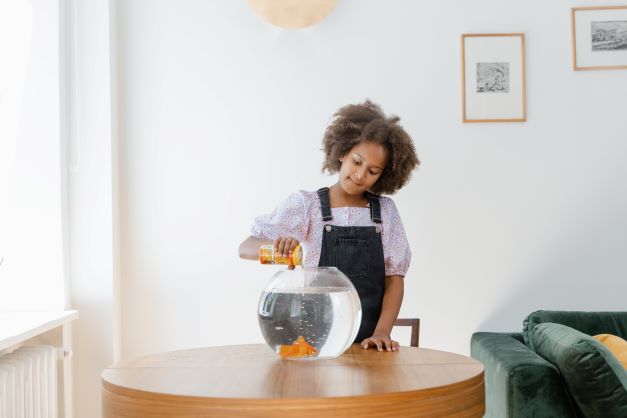
If there is a class pet or animal at home, then caring for the animal will help teach responsibility. Children will have to learn how to make adjustments in their schedules to take care of the animal. There are also lessons in remembering to keep to a schedule. Caring for an animal comes with a sense of responsibility since a child’s actions affect the well-being of another living thing. Children can also learn community interaction skills if the whole class bears responsibility for the class pet.
Corporate Garden
Similar to caring for an animal, planting a garden as a class, or at home, helps children learn how to take responsibility for their actions. This activity requires that they pay attention to the care and needs of the plants, attending to the everyday requirements of weeding and watering. Children will need to think about how the weather might affect their garden. They might have to take responsibility for creating shelter for the plants or checking the soil. Gardens teach time management skills as well as working memory.
Teaching Responsibility
It’s important to teach a child how to take responsibility for their actions. By using games and activities that teach accountability, teachers and parents can help children develop higher cognitive skills. It is also important to live the lessons being taught. Kids learn by example. If their teachers and parents demonstrate responsible behaviors, children will likely model them too.
At Soul Shoppe we teach social and emotional skills to students, educators, and parents. Click for more information on our SEL programs for elementary schools and social-emotional homeschool electives.
You May Also Like:
Humans are naturally social creatures. Community helps with mental health. While we have a need for community, not everyone has the same abilities to connect with others. Educators are often responsible for sharing the best techniques on how to teach social skills to help create confidence. At Soul Shoppe, we specialize in helping educators and parents learn how to teach and model social skills and social-emotional learning techniques.
Strong social skills create a solid foundation for long-term success in life. A holistic teaching approach includes exercises, lessons, and learning opportunities for children.
How To Teach Social Skills
It’s good to review appropriate social skills with children frequently. As adults, it’s been a long time since we’ve learned appropriate social skills, and we might take for granted that social skills are obvious, when to a child they might not be.
As far as teachable skills go, social skills have an advantage in the classroom. Learning how to socialize in a diverse environment can help skills grow and they will get stronger with practice. Additionally, there are ways to practice them virtually.
How to Teach Social Skills to a Child in the Classroom
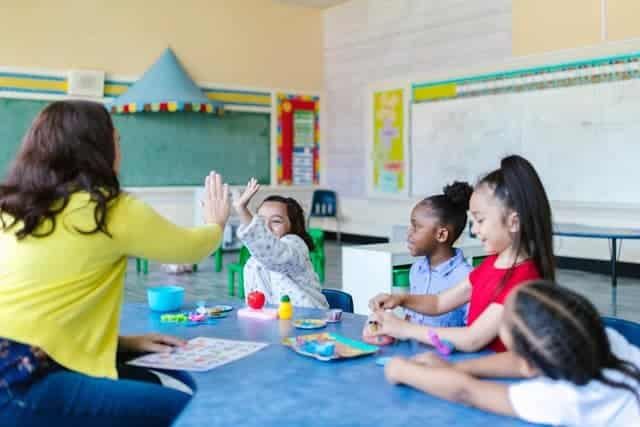
The method for deciding how to teach social skills to a student is similar to teaching other skills. It also has differences.
Teaching social skills to a child is the same as teaching other skills in that it requires demonstration, imitation, and repetition. After all, that’s how we teach math or reading skills.
Designing how to teach social skills is a different process in its particulars.
In order to do it well, an educator must follow the interests of the child. Children come from different backgrounds, and an educator must adjust and respond to this.
An educator must learn to ask the right questions, discovering what social skills the child needs to strengthen and which ones they already understand.
Roleplaying can be a powerful tool for an educator who teaches social skills to elementary school students. With demonstrations of example scenarios, children can practice social skills in controlled settings.
A more complicated, but essential, aspect of teaching social skills to a child includes teaching empathy. Asking questions like, “Can you imagine how that makes them feel?” will encourage this.
Children have not yet learned all the coping skills that they will eventually need, and social skills involve so many emotions that they will inevitably create strong emotions. Work within the limitations of the students involved. Practicing to the point of frustration can hinder results. (Harvard)
In the end, the most important aspect of teaching social skills is being a good role model. Children learn so much by watching that the most powerful teaching aid for any educator is their own behavior.
List of Social Skills to Teach
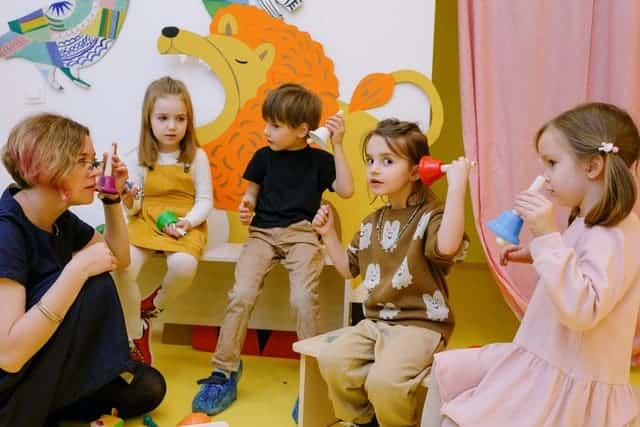
It’s important not to assume that social skills might come naturally to someone. No one knows the assumptions by which anyone else is raised, and it is the responsibility of educators to create a setting where children can learn the skills they need to prepare for a rewarding life.
When deciding how to teach social skills to students, begin with a list of subjects. Treat it like any other discipline. Here is a list of subjects to help you get started:
- Sharing. For some children, sharing their thoughts and feelings doesn’t come naturally. Or, they might be nervous about sharing thoughts and feelings. Additionally, they might not know when it’s socially acceptable or appropriate. Encouraging sharing is like granting permission, which helps to foster this.
- Listening. Children typically have the natural ability to absorb what’s going on around them. However, not all children have a natural instinct to quietly listen and pay attention to the people around them. You can use listening skills activities such as those outlined here, to help children develop these skills.
- Following directions. Cooperating with community expectations is a large part of developing social skills. Children shouldn’t necessarily learn to follow instructions without thinking, but it’s valuable to learn how to cooperate with the goals of the group and recognize when an authority figure has a reasonable direction for their goals.
- Collaborating and cooperating. Children must learn to collaborate and cooperate with their peers. This is a large aspect of creating strong social skills. It’s valuable for children to learn how to respect and participate in community activities. We provide some ideas for cooperative games for kids here.
- Patience. This is an important skill and can be particularly challenging to develop in a world of instant gratification. Many social situations require waiting calmly and graciously. Intentionally slowing some things down in the classroom and creating situations where children must wait will help them practice patience.
- Empathy. Understanding how others may feel and the ability to consider these feelings is a pillar of social awareness. Teaching empathy can be incorporated through everyday interactions and through planned activities. We provide some ideas here.
- Respecting boundaries. We don’t necessarily need to know why people have certain boundaries. However, it’s important children learn to respect the boundaries that people set.
- Positivity. It’s amazing how powerful it can be to put a positive spin on realities and how much this can improve social interactions.
For some children, a few of these social skills will seem intuitive. When deciding how to teach social skills to a child, it’s important to recognize that not all social skills are intuitive, and yet all social skills should be learned and exercised. (Homer)
Teaching Social Skills Virtually
If unable to teach social skills in the classroom, or if an educator would like assistance teaching social skills, you can receive help with virtual social learning activities. Soul Shoppe provides social emotional learning programs for children and educators that can be completed online. Soul Shoppe strategies encourage empathy and emotional awareness in children. Whether helping in the classroom or assisting parents at home, Soul Shoppe brings social skills to the forefront of the discussion. Click for more information on SEL Programs for Elementary Schools or our parent support programs.
You May Also Like:
Enseñar a los niños cómo calmarse a sí mismos
How to Manage Emotions in a Positive Way
Cómo hacer amigos en la escuela
Dear Soul Shoppe Community,
Thank you again to the 300+ kids and families who showed up for our Live Lesson last Monday to talk about racism.
Conversations about racism are hard and we are grateful that so many of you are willing to lean in to talk, listen, share and learn together! Together we are better!
We took a big step by participating in an initial session… and there’s so much more we can experience together. We invite you to join our 3-part “The Power of Allyship” series for more conversation, sharing and supporting.
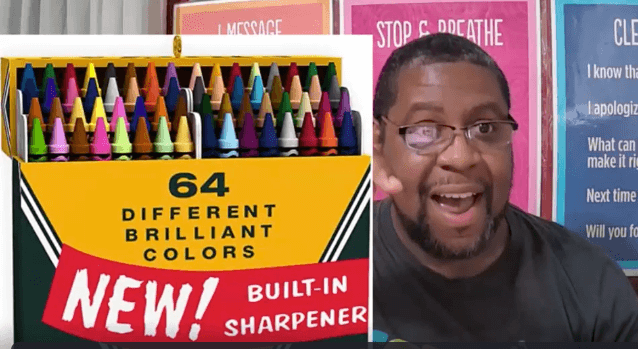
What is “The Power of Allyship” series?
With the big events around racial justice taking place in our country, young people may feel confused and fearful. How do we supply them with the tools they need to grow in healthy ways? Young people are observant and need supportive context and expressive outlets. In this three-part series, children will have a chance to express their feelings, think about relevant actions, and take a stand as allies with one another. This is a powerful way for families to begin and deepen their conversations around racism.
Appropriate for ages 5-12 years old, though all are welcome! Even if you missed a lesson, you can still join. Recordings will be sent when you register so you can catch up.
Dates:
Session 1: The Power of Allyship, Thursday, June 18 from 1:30-2:15
Session 2: Raising Youth Voices, Thursday, June 25 from 1:30-2:15
Session 3: Standing Together, Thursday, July 2 from 1:30-2:15
Each live session will have a digital follow up activity for the family to continue the learning at home together.
Please join Soul Shoppe co-founders vicki! abadesco! and Joseph Savage and big-hearted facilitators Arek Bryant and Anthony Jackson as we continue the conversation with young people about racism, protests, allyship and belonging.
We are offering this 3-part special series for young people and families on a sliding scale from $20-$100.
Join here.
Thank you for attending Soul Shoppe’s virtual game show, Kids Say the Smartest Things!
We had a blast sharing superhero trivia and imitating animal sounds, talking about polar bears and playground problems, but more importantly: your kids had a lot of wise insights to share.
They showed us how to navigate tough conversations, how to face overwhelming emotions, how to stand up to peer pressure, and much, much more. All this just goes to show that kids have innate peacemaking and problem solving skills. We adults could probably learn a thing or two!
Thanks to your little ones and their profound kid wisdom, we feel that we have a much brighter future ahead of us.
Now we want to know what you thought of our virtual events this year. Whether you’re a parent, a teacher, or a school administrator, we’d love to hear from you so we can continue to improve our programs to best serve your kids and students.
Simply click the button below to take a very brief survey (only 3 questions!) and give us your feedback.
If you missed out, we’ll be sharing the recap video soon.
It takes more than academic skills to sufficiently prepare children for rewarding lives. It is the responsibility of parents and educators to provide learning experiences designed to foster life skills for children, including social and emotional skills. In this article, we’ll explore life skills for students and provide activities that help children develop in these essential areas.
Life Skills for Children
The classroom is a place where children learn both how to think and how to behave. Nurturing social and emotional skills helps to shape child behavior. It also helps to promote the long-term success of a child.
In academia, some “softer” life skills necessary for living a rewarding life are referred to as executive function and self-regulation. These are terms that refer to skills like focus, switching focus, and coping with distractions. They also refer to self-control, working memory, and mental flexibility.
These soft skills are important life skills children will grow up and use to function well in society, hold a job, and connect with peers.
Additionally, these core skills provide the underpinnings for other life skills like empathy and acceptance, or social skills like politeness and cooperation. All of these skills help children to thrive in group settings while building confidence in themselves. Exercises designed to encourage children to practice empathy, acceptance, politeness, cooperation, etc., create opportunities for children to develop core skills of executive function and self-regulation.
Teaching activities that promote life skills for children can be incorporated into the classroom or implemented at home. These activities can help prepare children for success.
Examples of Life Skills Activities
There are many life skills activities educators and parents can incorporate into the education of the children in their care. Educators might find it more useful to tailor life skills activities to the specific needs of the children in their particular classrooms. It’s not only possible to do this, it might prove essential in many cases. Different groups of children have different specific needs, and the principles of teaching core skills will be similar. Here are a few examples to give educators and parents a place to start thinking about designing life skills activities for primary school children:
Bake a Snack
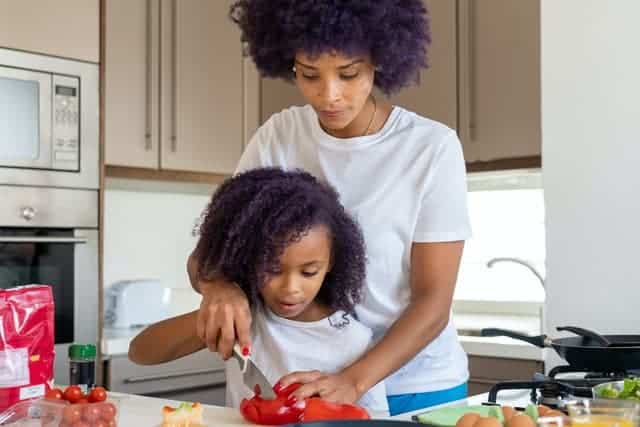
Every aspect of baking contributes positively to a child’s development. It gives a child a sense of accomplishment and gratification that they can do something both positive and constructive for themselves. Baking provides an opportunity for children to practice patience and to practice recognizing the connection between actions and results. Bonus: make it a group activity and build in chances for children to cultivate social skills and communication.
Learn Emergency Numbers
There are a lot of things considered by adults to be common knowledge. As a result, it can be a worrying thing for a child to feel unprepared. Helping children with knowledge such as the numbers for their local police departments and fire departments can provide a sense of security.
Learn to Use Simple Tools
Understanding the use of tools, like screwdrivers and socket wrenches, fosters a broader understanding of how the world is put together. It encourages imagination in addition to providing a sense of self-reliance.
Grow Plants from Seeds

Growing plants from seeds provides children a chance to cultivate patience and sustained attention over weeks. Furthermore, growing living things provides an opportunity for children to develop nurturing instincts towards other living things. Make it a group activity and give children a chance to practice mutual accountability and working together.
Sew Buttons on Clothes
Culturally, many of us are getting further and further away from the source of our commodities. We don’t typically think about where our stuff comes from. As a result, children might develop a sense that if their stuff breaks they can’t do anything about it. Learning a skill like putting buttons back on clothes provides children with the opportunity to learn that they can take care of their things. In turn, this creates a sense of confidence and contribution.
Play Games as a Group
We know that playing is an integral part of childhood learning. Additionally, when children play in a group they learn social skills and how to cooperate with others. Pull out a board game, play charades in teams, or enhance listening skills with the game of telephone. Because social emotional skills are so important in a child’s development, interacting with peers in a cooperative setting promotes important life skills.
Teaching Life Skills in Primary School
It’s important to prepare children in multiple areas of life. The whole concept of life skills may include practical skills, social skills, and academic skills which all prepare children for success in adulthood. Here are some activities you can implement to enhance social emotional life skills:
Self Care Activities for Students
Social Skills Activities for Kids
Conflict Resolution Activities for Kids
When educators need assistance with lessons that encourage core skills like executive function and self-regulation, Soul Shoppe helps with online SEL programs. Soul Shoppe encourages empathy and emotional awareness in children. Whether helping in the classroom or assisting parents at home, Soul Shoppe brings social skills to the forefront of the discussion. Click for more information on SEL Programs for Elementary Schools or our parent support programs.
You May Also Like:
Self-Control Games & Activities for Parents and Teachers
How to Manage Emotions in a Positive Way
Confidence-Building Activities For Kids
How to Teach a Child to Take Responsibility for Their Action
When people think of mindfulness, they often think of meditation for adults. However, children can learn mindfulness with incredible emotional, physical, educational, and social benefits. In this article, we discuss the benefits of mindfulness for children and provide examples of mindfulness activities for the classroom.
What is Mindfulness

The practice of mindfulness was developed by Jon Kabat-Zinn over 30 years ago. This practice is also known as Mindful Based Stress Reduction (MBSR). It is defined as: “paying attention in a particular way: on purpose, in the present moment and non-judgmentally.” (Child Mind Institute) This mindfulness practice is well known for teaching children to focus on the present moment while easing anxiety.
Benefits of Mindfulness
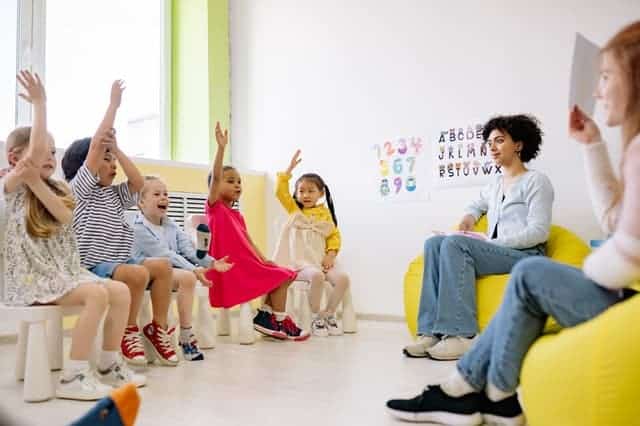
The benefits of mindfulness in the classroom are vast. School environments may present stressful situations for children, both socially and academically. However, these stressors can be mitigated with mindfulness. Furthermore, studies have shown that learning mindfulness helps increase students’ focus, which helps them academically, while also helping them avoid negative behaviors (Harvard).
One study, conducted by researchers at the Boston Charter Research Collaborative, showed incredible promise. The researchers included staff from MIT, Harvard, and others. They studied 6th graders who learned mindfulness in an 8-week course. The results showed that the students who participated in the research study had lower stress, and were more able to focus and regulate their emotions. Brain scans also demonstrated that the part of the brain that responds to stress had responded less to stressful stimuli.
In a similar study, Stanford University studied students in 4th to 6th grade over 8 weeks of mindfulness training. They found that the participants had significant decreases in anxiety, and were less emotionally reactive. Additionally, students felt more able to handle challenges in their daily life, and also felt control over their behavior. Lastly, like the Harvard study, students had increased focus and experienced a sense of well-being (Child Mind Institute).
These results are so important because it shows that children thrive academically and emotionally when they are able to focus and be present. Reducing anxiety and stress increases students’ ability to focus and retain information, which is critical to their success. On a social-emotional level, children experience more acceptance and positive interactions with mindfulness. By avoiding negative behaviors and reactive emotions, their interactions with peers and teachers improve. This fosters a rich dynamic where students can grow academically, socially, and emotionally. Therefore, a mindfulness curriculum can play an important part in the classroom.
Mindfulness in the Classroom Activities
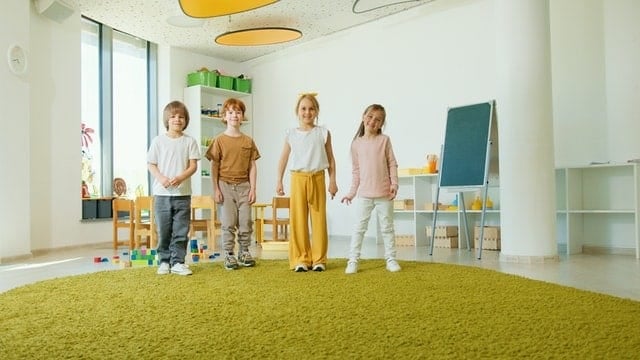
How can you teach mindfulness in the classroom? There are numerous ways to incorporate mindfulness activities. Many of them take 5 minutes or less and provide an excellent start to each students’ day. Here are some mindfulness in the classroom activities you can incorporate into your classroom:
1. Guided Meditation
This is surprisingly easy with apps that do the work for you. Have students sit or lie down with the lights dimmed, and encourage all students to participate in a guided meditation. If students do not want to participate, simply have them sit quietly. Praise the students who did the activity and ease back into the classroom setting by discussing how they feel afterward (VeryWellMind).
2. Guided Activities
One example of a guided activity is to have students mindfully eat a raisin or piece of fruit (Vanderbilt). Students can touch, look at, and chew a raisin for a full 5-10 minutes. This activity encourages self-awareness and increases their attention span. Additionally, this activity can teach children to slow down and appreciate life moment to moment. Students can journal afterward about the experience or discuss it in a large group.
3. Journal Writing
This activity is appropriate for children ages 6 and up. However, younger children can draw pictures instead. Appropriate writing prompts can include questions such as: what are three beautiful things you heard today? Or, what are three urges you resisted today? For older students, these prompts can become even more thought-provoking and challenging to get them thinking introspectively. (Positive Psychology).
4. Mindful Breathing
Teaching students breathing techniques is another great way to teach mindfulness. Helping students to focus on their breathing is an important technique for stress reduction. Students can sit or stand, and inhale air through the nose for 3 seconds, hold for 2, and exhale for 4 out of the mouth. For best results, it is important that students stay focused and aware of their breath and how they feel during the exercise (Berkeley).
5. Mindful Body Scan
In this activity, students should either sit or lie down. This activity begins with focusing on breathing to relax. Then, students are asked to relax their bodies bit by bit. Instruct them to start at their feet and move upwards slowly to their head, until every part of their body is relaxed. It requires concentration and commitment, and rewards students with deep relaxation while providing relief from stress and anxiety. (University of Minnesota).
Vary mindfulness activities to help students stay engaged and focused.
Mindfulness curriculum does not have to take long—in fact, just 5-10 minutes a day. The time spent on these activities is often returned, as student behaviors and focus are improved. Less time is needed to address behavioral issues. This allows the teacher to teach and the students to learn. By providing mindfulness in the classroom, we empower children to be successful socially, emotionally, and academically. That is worth a few minutes each day!
Soul Shoppe provides social emotional learning programs, including SEL programs for elementary schools, and programs on mindfulness, inclusivity, allyship, conflict resolution strategies for students, and more.
You May Also Like:
Sources:
Child Mind Institute, Harvard, HelpGuide Harvard, Positive Psychology, Stanford, University of Minnesota, Vanderbilt, VeryWellMind
The pandemic has caused major disruptions in routines and social activities for children. These disruptions have led to social isolation and a crisis that is reaching into 2022.
Many children have missed their sports games, music lessons, birthday parties, and other activities. At the same time, they’ve been kept from friends and family, making it more difficult for them to enjoy much needed social support. All this has taken a toll on children’s social and emotional health. Additionally, it has affected their academic performance and led to a stark situation overall.
It is imperative that adults understand the pandemic effects on children. The more clearly we see the big picture and its overall effects on kids, the more we can help them cope with the changes and difficulties they have faced. Our ability to relate to their current trauma can improve the accuracy and effectiveness with which we embolden children with resilience and the ability to navigate the unknown.
In this article, we will explain pandemic effects on children and provide strategies to help you support your kids at home.
What are the Pandemic Effects on Children
Childhood Development

The pandemic effects on children are broad and far-reaching. Children have been one of the most adversely impacted demographics internationally, as they have experienced disruptions, fear, and social isolation during a most vulnerable time in their lives.
Some skills that can only be developed in the company of other children have been disrupted. For younger children especially, the inability to access daycare and play dates has been problematic. Being separated from their peers and teachers has slowed their social and emotional development. For older children, the isolation has made it harder to build vital relationships (Children’s Hospitals).
According to Children’s Hospitals, the main list of childhood development skills being interrupted by the pandemic include:
- Self and social awareness
- Learning to have positive relationships
- Self regulation
- Good decision making
- Problem solving
Also at risk are learning skills, which have been halted abruptly with the need for distance learning. COVID has affected every child; it’s resulted in a collective traumatic event.
Academics

Children have been unable to regularly attend school in person. Consequently, they have fallen behind academically.
During the first year of the pandemic (2020), children’s grades and ability to learn new information began to decline. Unfortunately, they have not yet caught up in 2022.
One study by the NWEA studied 8th graders. They found that 1out of 3 8th graders are testing at lower levels than normal in both math and reading (NY Times). Additionally, the students whose test scores are suffering most are Black, Hispanic, and living near or under the poverty level. According to Michael Petrilli of the Thomas B. Fordham Institute, “We haven’t seen this kind of academic crisis in living memory” (NY Times).
Behavior Problems at School
Although many people believe that children’s lives have gone back to normal since being allowed to go back to school on a limited basis, they have not.
Our “new normal” is rife with uncertainty, less social interaction, and a sense of loss. As a result, behavior problems in school have increased. Children have struggled in a variety of ways. Some have become more aggressive and started fights in both the classroom and online. Similarly, some children have taken up swearing while others are vandalizing their schools. Still others are running out of their classrooms as a result of built-up pressure and panic attacks, or have stopped participating in class altogether.
School used to be a haven for many students. Over the course of the pandemic, they have become microcosms of international chaos caused by the pandemic.
Furthermore, practices such as making children sit apart from their friends at lunchtime, social distancing at school, and fear of the virus are making the situation worse. According to the NY Times, the car rides to and from school have even become fear-laden since they have been recognized as an opportunity for the virus to infect children.
The trade off of protecting children from the virus at the expense of their academic and social development is wreaking havoc on our children’s emotional well-being.
Mental Health

Students’ mental health has suffered. Being isolated from their friends, activities, and routines has had a profound effect. In addition, as economic effects worsened, families are experiencing a greater degree of poverty. In turn, children are witnessing more family stress. The culmination of these adverse consequences of the pandemic has led to a large increase in anxiety and depression.
It was reported in one study in late 2020 that 22% of children showed increased signs of depression, anxiety, and stress (KFF). At the same time, children have had less access to mental health services so parents have had to bring their ailing children to emergency rooms in the midst of a mental health crisis.
As a result, the American Academy of Pediatrics declared a national state emergency for children’s mental health. This was based on the number of emergency room visits for mental health crises.
At the same time, suicide attempts have risen primarily in children aged 12 to 17 (KFF). In particular, the number of ER visits for suspected suicide rose by 51% for girls aged 12-17 since 2019 (NY Times). For younger children aged 5-11, there was a 22% increase in ER visits for mental health (Yale Medicine). It’s evident that children are suffering greatly from the pandemic.
In the midst of this chaos, there are ways to help re-establish order and safety for your children at home.
How to Support Children at Home

There is a wide variety of activities that can help support your child’s cognitive and behavioral development at home during the pandemic. Here are 5 activities you can complete in less than 10 minutes a day.
1. Teaching emotional intelligence by labeling emotions.
Help them label their feelings, and then empathize with why they feel that way. If they need help, offer words to help them articulate their feelings. Questions such as, “Do you think you feel frustrated or angry, or sad?” will help them label their feelings.
2. Encourage self care activities for mental health.
Teaching your children the tenets of self-care is an important way to combat anxiety and depression. Activities such as having a dance party at home, drawing or painting, or taking a hot bubble bath are all useful. There are many self-care activities you can incorporate into your daily routine at home depending on your family’s time limitations.
3. Teach your children how to adapt to change.
The pandemic has increased stress on children. As a result, teaching your kids how to adapt to change is an important tool. Keep routines at home as consistent as possible and discuss change before it happens, if you can. Acknowledge your children’s worries and fears, and allow them to feel their emotions (WISC). It can be helpful to write a list of to-do’s for each day with your child so they know what to expect.
4. Work on mindfulness with your children.
Mindfulness is very effective at lowering stress. It teaches children to accept and pay attention to what is occurring in the present moment. This, in turn, helps them face daily challenges. There are many apps that teach mindfulness practices. There are also age-appropriate activities provided on numerous child development websites.
5. Utilize positive parenting tips.
For as long as the pandemic lasts it is crucial to be supportive of children at home. We recommend parents utilize positive parenting tips. These help children cope, build emotional skills, and adapt during difficult times. Chief among these tips is nurturing your children and building connections with them so they know they can come to you with their questions, concerns, and burdens.
Soul Shoppe provides social emotional learning programs for schools. homes, and businesses. In addition, we teach a variety of self-care activities. Please reach out to us with questions.
You May Also Like:
Virtual Social Learning Activities
Effects of Social Isolation on Children
How To Teach Empathy To Kids and Teenagers
Sources: Children’s Hospitals, KFF, Positive Psychology, WISC, Yale Medicine
This month, we’re celebrating Kirstin
Lenane, Counselor and Peacemaker
Liaison at Westlake Elementary.
Parenting is one of the most rewarding jobs in life. However, it can also be one of the most challenging. Because children do not come with instructions, it is up to parents to learn the parenting style that works best for them.
There are several parenting methods that help children develop into successful, happy adults. However, others can leave children feeling anxious with low self-esteem. That’s why we suggest the positive parenting method. It helps children become capable and resilient while bonding them to their caregiver. Although some people consider this a “fluffy” way to parent—it is not. Rather, it is effective in holding children accountable for their actions in age-appropriate ways. This system uses clear expectations and rewards to empower children to make responsible decisions.
In this article, we will detail what positive parenting is and how it benefits children. We’ll also provide positive parenting tips.
What is Positive Parenting
The movement for positive parenting began in the 1900s. Previously, it was believed that children should be “seen but not heard.” However, psychotherapist Alfred Adler declared that children should be treated with dignity and respect. He also declared that children should not be spoiled. Otherwise, they would be riddled with self-entitlement and would be devoid of empathy. Furthermore, Adler asserted that children need connections to adults and an emotionally safe environment to thrive. These ideas helped form the positive parenting method.
This style of parenting focuses on several ideas. Some of the most important include:
- Parenting children in age-appropriate ways
- Being sensitive to children’s needs, temperament, and developmental stage (Parenting for Brain)
- Nurturing children emotionally
- Having clear boundaries and limits
- Building connections with children
- Understanding that misbehaviors are underlying symptoms of problems. They are simply a cry for help. Once underlying symptoms are identified and dealt with, problem behaviors will cease (Positive Parenting Solutions)
- The idea that a misbehaving child is not bad, mean, uncontrollable, or defiant
- Having empathy for children and showing consistent love and warmth
- Focusing on the children’s best interests
- Rewarding good behavior and accomplishments
- Having clear communication between parents and children (Positive Psychology)
- Building children’s self-esteem and independence
Benefits of Positive Parenting
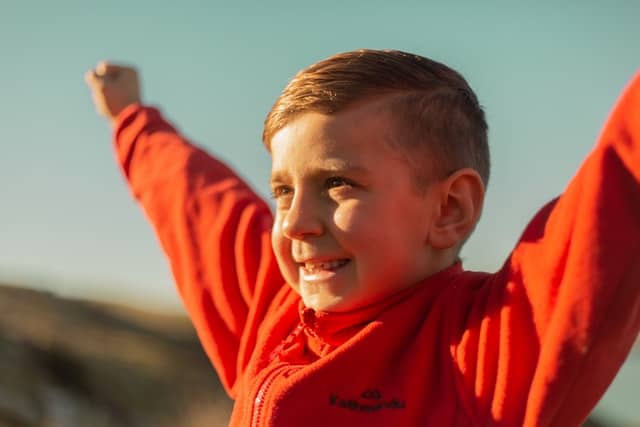
Research strongly supports positive parenting. In a 7 year-long study in 1997, researchers studied this method. Researchers examined supportive parenting (positive parenting) and contrasted it with less supportive parenting styles. The supportive style was defined as parent and child warmth, proactive teaching, positive involvement, and inductive discipline. Less supportive styles were harsher and had colder interactions between parent and child.
The study showed that the positive parenting style increased school performance and led to fewer behavioral problems. Furthermore, this type of parenting actually mitigated the impact of trauma and child stress (Positive Parenting). Supportive parenting was also able to overcome adversities such as single parenting, divorce, poverty, and more.
Similarly, a study on emotional coaching by Bath Spa University discovered positive outcomes for families trained by emotional coaches. Parents reported an average of 79% improvement in children’s behaviors. (Positive Parenting).
Additional research has shown that positive parenting improves social-emotional development. In fact, children increase their emotional, physical, and behavioral health. At the same time, problem behaviors, such as aggression and hyperactivity, are reduced. These benefits are shown as early as 1.5-3 years of age. Benefits last a lifetime as children have a better chance of academic success. (NCT).
The research overwhelmingly shows that positive parenting works.
Positive Parenting Tips
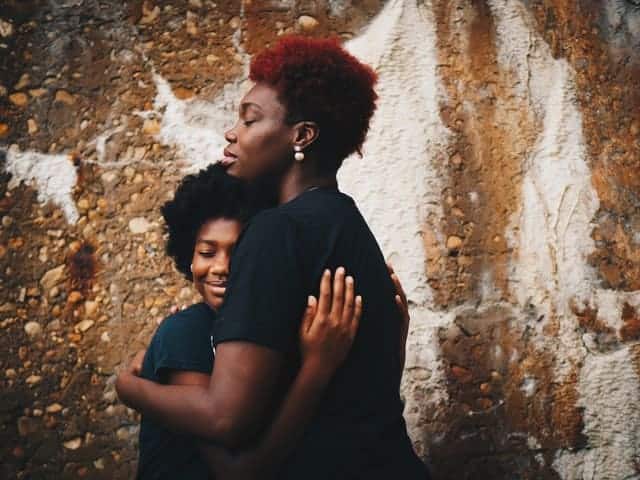
Here are some positive parenting tips that will enhance your relationship with your child and encourage their success.
- Teach children to self-regulate when upset. For example, if they receive a bad grade on a test, empathize with them. Say things like, “I can imagine that must be very frustrating. You must feel upset.” Hugs are appropriate if the child wants one. Respect their bodily autonomy if they do not. Also, do not try to fix the situation for them by calling their teacher. Instead, encourage your child to brainstorm ways to help themselves.
- Model behavior that you wish to see. When frustrated, count to 10 out loud, or take a 5-minute break. If children disrupt your self-regulation time, respond calmly. Tell them, “Mommy is taking a 5-minute break to calm down. I will help you when I am done.” (Colorado Parent)
- Catch children behaving well. Too often we focus on what our children are doing wrong. Instead, watch for opportunities when children are doing what they are supposed to do. Then reward them with verbal praise, a sticker on a reward chart, or other methods. For example, if a child is playing nicely with their sibling, be sure to use specific praise. Say, “I love the way you are sharing when playing together. That’s exactly what I like to see!” (NCT)
- Don’t just say “no” to their requests. If they ask to go to the park but it’s impossible to go, then use other words. For example, say “I’d love to take you now but I have to work. I can take you tomorrow instead.”
- Use distraction tactics. Distraction tactics are an excellent behavior management tool in positive parenting. They help prevent meltdowns or negative behaviors. For example, if a child is getting ready to knock over another child’s toy building, use this technique. Give the child alternative things to do, such as a different activity. Also, it could be a signal that they have energy to burn. Taking them to the park is a better option than allowing the events to unfold and then punishing them later. (NCT)
- Take care of yourself as a parent. Parenting is a difficult job, and it’s important for caregivers to use self-care methods. This helps ensure parents are the best version of themselves for their children. A hot bath, spending time in nature, taking time out with friends, and other strategies are important for self-care.
The goal of parenting is to offer children ways to develop into healthier, independent, and successful adults. These positive parenting tips are just the tip of the iceberg when it comes to positive parenting successfully.
Soul Shoppe provides social emotional learning programs for parents, schools, and businesses.
You May Also Like:
Teaching Empathy to Kids and Teenagers
Virtual Social Learning Activities
Sources:
Colorado Parent, NCT, Parenting for Brain, Positive Parenting Solutions, Positive Psychology
Young children tend to have psychological elasticity, and they can handle a lot. Believe it or not, childhood is the ideal time for kids to learn as many positive thinking exercises and coping mechanisms as possible.
With a foundation in positive thinking techniques, children will have a better chance of living more fulfilling and successful lives. Positive thinking is connected with lower rates of depression, longer life spans, less distress, and psychological and physical well-being. (Mayo Clinic) As a result, it’s important to routinely incorporate positive thinking exercises for students into the curriculum.
Positive Thinking Exercises
Positive Reframing and Evidence-Based Reappraisal
One of the more powerful lessons that students can learn at school is the different ways of processing information and experiences. The power of perspective is among the skills that students can use to cultivate positive thinking.
Reappraisal is an essential positive thinking technique. Two valuable reappraisal strategies for positive thinking techniques are positive reframing and examining evidence.
Positive Reframing
One positive thinking technique for students is positive reframing. (Harvard) When children encounter negative experiences or challenging situations, it can be a powerful way to reframe their experiences in a positive way. For instance, when a student doesn’t do as well as they’d hoped on a piece of homework, they might be inclined to think of that experience as a failure.
Positively reframing that experience creates a learning opportunity. A grade that doesn’t quite meet a child’s hopes and expectations indicates where a student needs to improve in upcoming assignments. However, it also indicates the areas where a student is doing well. Positively reframing the experience of getting a different grade than they expected could ultimately help that student figure out how to improve.
It can be challenging for students to think of something positive about a situation that seems negative. However, with some practice, children can learn how to find things to feel grateful for. Feeling gratitude is a great way to stoke the flames of positive thinking.
Examining Evidence
Another positive thinking exercise for students is examining evidence. (Harvard) Typically, reacting emotionally comes as a first instinct. This is especially true for children who haven’t had as many experiences making decisions before they react. As a result, many students will react emotionally without considering the evidence. In many cases, a perceived negative outcome is the result of complex thinking.
This positive thinking exercise for students is meant to help them pause and consider aspects of an experience that they might not instinctively take into consideration. Once they begin to develop a habit of examining the evidence produced by a perceived negative situation, then it will be possible to start teaching positive thinking techniques.
For example, suppose a student doesn’t obtain the grade on a piece of homework that they would like to achieve. It can be a discouraging experience, and a student’s first instinct might be to view it as an unfair reflection of them.
A reexamination of the evidence, however, might reveal that the student has some areas for improvement in their studying techniques, maybe, or in their decisions about where to place more energy studying in the future.
Reappraisal is a powerful positive thinking technique for students. As educators, it is of paramount importance to instill that even when they can’t control outcomes, they can always control their reactions to those outcomes.
Other Positive Thinking Exercises and Positive Thinking Activities for Students

Reappraisal is an effective strategy for students to learn the skill of positive thinking. However, reappraisal also necessitates abstract thinking and abstract conversation. Therefore, children might learn positive thinking strategies more easily from salient activities instead of abstract concepts.
Designing positive thinking activities for students will require different approaches for each and every unique classroom. Here are a few ideas to get educators started.
Finding Examples of Forgiveness
For this activity, students will find an example of forgiveness from a movie or book. In order to contribute to a classroom discussion, students will explain why they believe they have found a good example of forgiveness, and they will go on to give a brief explanation as to why their example speaks to them.
The purpose of this positive thinking activity is to provide students with an opportunity to practice slowing their anxious thoughts down to examine each situation. At the same time, it will provide children with a chance to think about the intricacies of forgiveness from more than one perspective.
Finding and Naming Benefits
In this positive thinking exercise, children are asked to think about an experience they had that they didn’t enjoy. Then through guided conversation, the children are asked to think about whether they experienced any positive effects from the experience they didn’t enjoy. Children then name specific benefits.
This positive thinking exercise encourages children to think about experiences along longer timelines. The benefit of this activity is learning to think about experiences as thoroughly as possible and to approach them with different perspectives.
Positive Reminiscences
Like any other life skill, positive thinking is something we can practice. In this exercise, students will tell a story of something they enjoyed, either as a writing exercise or verbally in a class discussion. Encourage students to reflect on things they find particularly fond of in the memory.
The benefit of this positive thinking strategy for students is the practical nature of practicing a positive thought process. If students have more opportunities to repeat positive thoughts, then they’ll be able to practice the act of thinking positively about new experiences when they encounter them.
Positive Thinking Techniques for Students
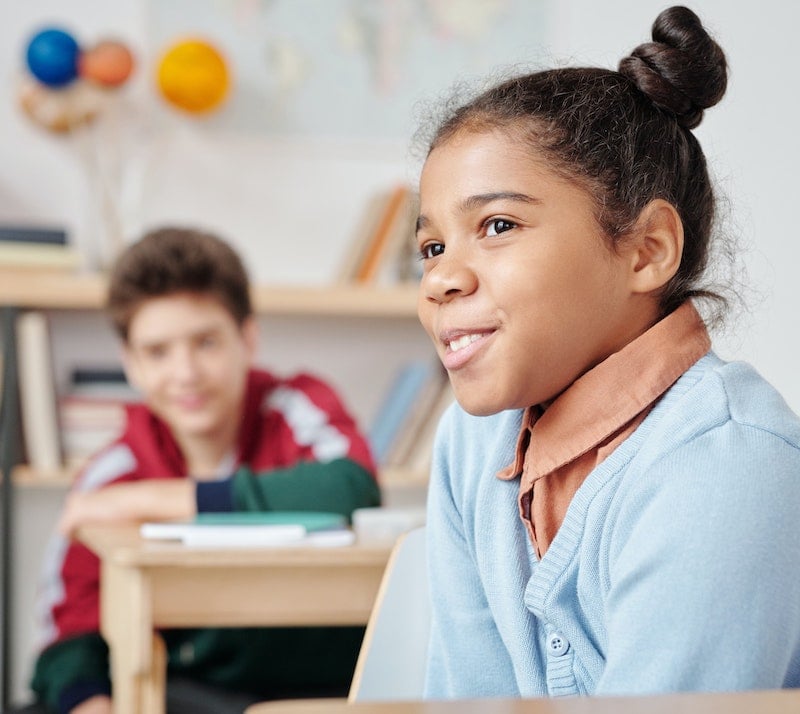
Students can learn to change their thinking by focusing on positive aspects of their experiences. If children can learn positive thinking strategies in the classroom, it will better prepare them for seeing the positive aspects of new experiences as they grow and age. The result is that children will be better prepared for life’s hurdles and more likely to appreciate the good things around them.
When educators need assistance with lessons that encourage social emotional development, Soul Shoppe helps with online SEL programs. Soul Shoppe encourages empathy and emotional awareness in children. Whether helping in the classroom or assisting parents at home, Soul Shoppe brings social skills to the forefront of the discussion. Click for more information on SEL Programs for Elementary Schools or our parent support programs.
You May Also Like:
Virtual Social Emotional Learning Activities
How To Teach Empathy to Kids and Teenagers
In today’s classrooms, fostering social-emotional learning (SEL) is essential for creating inclusive, supportive, and thriving learning environments. Teachers play a pivotal role in modeling and integrating SEL into daily lessons, helping students develop empathy, self-awareness, and strong interpersonal skills. To support educators, Soul Shoppe offers a wide range of SEL resources for teachers, including interactive curriculums and tools that make implementing social-emotional learning in the classroom accessible and impactful.
Whether you’re looking for comprehensive programs, SEL tools, or easy-to-use activities, this guide highlights the social-emotional learning resources available through Soul Shoppe to help you create meaningful change in your school.
Core SEL Curriculums for Teachers
Soul Shoppe’s signature curriculums are designed to help educators embed social-emotional learning into their classrooms with ease. Each program combines research-backed strategies with engaging lessons to help students develop critical life skills.
- Tools of the Heart Online Course: This comprehensive program introduces students to key SEL concepts, such as empathy, self-regulation, and effective communication. With interactive activities and lessons, this course equips teachers with practical strategies to nurture a classroom culture of kindness and understanding.
- Free to Be Online Course: Designed to address bullying and promote empathy, this course empowers students to create a safer, more compassionate school environment. Teachers gain access to ready-to-use SEL resources and activities that help students manage challenging social situations.
- Respect Differences: This program focuses on teaching students the value of diversity and inclusion. Through activities that emphasize respect and acceptance, educators can foster meaningful conversations about appreciating differences and creating stronger connections.
- Planet Peace: A comprehensive SEL curriculum designed to help students learn conflict resolution, teamwork, and problem-solving skills. This resource supports social-emotional learning in the classroom by encouraging students to be active contributors to a peaceful school community.
Certification for Teachers: Become a Peacemaker Trainer
For educators who want to take their SEL expertise to the next level, Soul Shoppe offers the Peacemaker Trainer Certification. This program trains teachers to become facilitators of SEL practices, empowering them to lead transformative SEL initiatives in their schools. Certification includes advanced SEL tools and strategies to create inclusive spaces where students feel supported and inspired to grow.
Shop SEL Tools for Hands-On Learning
Soul Shoppe’s shop offers a variety of practical social-emotional learning tools to enhance your teaching:
- Peace Path with Tutorial: This interactive tool helps students resolve conflicts collaboratively, teaching them essential problem-solving skills in a fun and engaging way.
- Leadership Truth or Dare: This activity encourages students to explore leadership qualities through interactive challenges, fostering teamwork and self-confidence.
- The Empty Balloon: A creative tool for teaching students how to manage emotions and practice mindfulness, helping them build emotional resilience.
These SEL tools are designed to be easy to implement, making them perfect for both in-class activities and small-group work.
Free SEL Resources for Teachers
 Soul Shoppe understands the importance of accessible resources for teachers. That’s why we offer free materials and blog posts packed with social-emotional resources to inspire your lessons and classroom activities. Explore these resources to gain valuable insights and strategies:
Soul Shoppe understands the importance of accessible resources for teachers. That’s why we offer free materials and blog posts packed with social-emotional resources to inspire your lessons and classroom activities. Explore these resources to gain valuable insights and strategies:
- What’s New Blog: Regularly updated articles provide tips on integrating social-emotional learning activities into your classroom, promoting inclusivity, and building positive relationships.
From practical advice to inspiring success stories, this blog is a must-read for educators looking to expand their SEL knowledge.
Why SEL Resources for Teachers Are Essential
Integrating SEL resources for teachers into your classroom helps students develop essential life skills that go far beyond academics. When students are taught social-emotional learning tools, they become better equipped to manage their emotions, build meaningful relationships, and navigate challenges confidently.
By combining programs, such as Respect Differences and Tools of the Heart, educators can provide a well-rounded SEL experience that fosters empathy, resilience, and collaboration among students. Whether you’re a seasoned teacher or new to SEL, these resources make it easy to bring transformative learning to your classroom.
Real-Life Applications of SEL in the Classroom
Soul Shoppe’s SEL resources for teachers aren’t just theoretical—they are designed for practical, hands-on application in classrooms to create meaningful change. By integrating social-emotional learning tools into daily lessons, teachers can transform their classrooms into safe, supportive environments where students feel empowered to thrive.
Examples of SEL in Action:
- Conflict Resolution with the Peace Path: Teachers can guide students in using the Peace Path to resolve disagreements collaboratively. For example, two students who disagree about a group project can use this tool to share their perspectives and find a solution together. This process not only addresses the immediate conflict but also equips students with lifelong problem-solving skills.
- Developing Leadership Skills Through Truth or Dare: Activities like Leadership Truth or Dare allow students to explore their potential while building confidence. Teachers can use this resource during team-building exercises to foster collaboration, trust, and communication among peers.
- Emotional Regulation with The Empty Balloon: When students feel overwhelmed, teachers can introduce The Empty Balloon to help them practice mindfulness and self-regulation. A quick mindfulness exercise using this tool can help students refocus and return to their work with a calm mindset.
Integrating SEL into Daily Routines:
- Morning Check-Ins: Start the day with a brief check-in, asking students how they’re feeling and encouraging them to share. This fosters a supportive classroom culture and helps teachers identify students who may need extra support.
- Collaborative Learning: Incorporate group projects that encourage students to apply social-emotional learning activities, such as listening to peers’ ideas, practicing empathy, and resolving disagreements constructively.
- Reflective Journals: Encourage students to reflect on their emotions, experiences, and interactions through daily or weekly journaling, using prompts inspired by Soul Shoppe’s SEL tools.
By weaving these activities into daily routines, teachers can create an environment where social-emotional learning in the classroom becomes second nature, benefiting both students and educators.
Start Your SEL Journey Today
Soul Shoppe’s diverse range of social-emotional learning resources for teachers offers everything you need to create an inclusive, supportive classroom. From comprehensive curriculums and shop tools to free blog resources, every item is designed to help teachers integrate SEL activities seamlessly into their daily teaching.
Explore SEL curriculums, shop for hands-on tools, and discover free materials on our blog. With the right SEL resources, you can inspire a generation of compassionate, emotionally intelligent learners.
We know that social distancing, schedule changes, quarantine, and all-around uncertainties can take their toll on everyone, especially our little ones. It may feel like things are spiraling out of hand. In these times, it’s important to take care of yourself and to teach kids how to establish self-care activities of their own.
Take your arms and reach them out wide. Now wrap them around your chest and give yourself a big hug. You have just completed a simple self-care activity. Doesn’t that feel good?
What is Self-Care?
Self-care is the practice of taking action to preserve or improve one’s own health, well-being, and happiness, particularly during periods of stress. Psychology Today adds that self-care is “the joy of recharging our tanks”. For adults, it can include going to the gym, a concert, or experiencing a quiet night at home. For children and young students there are easy activities that can help with their overall enjoyment of life and help them shrug off stress.
Self-Care Activities for Students
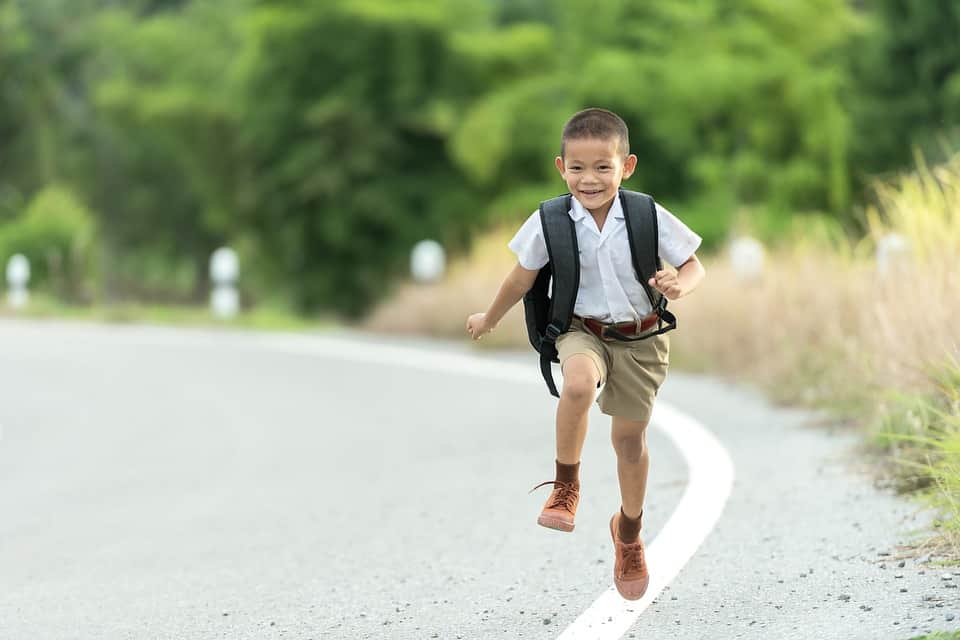
Go Outside
The weather can dictate how much we want to be outside, but studies show that being outside, even for a little bit, has massive benefits. If it’s snowing, have your little ones build a snowman. If it’s raining, build a paper boat and float it down the street. Or, if the sun is shining and the weather is nice, go for a walk and enjoy the world without electronics. Being outside can lower the stress hormone cortisol, raise endorphins, decrease depression and anxiety, and strengthen the immune system. Your self-care activity for students doesn’t have to be expensive or elaborate when it’s right outside your door.
Let It Rain
Sometimes the stress builds up inside and makes students (and adults) feel like they might burst. Instead of trying to hold it all in, tell your kids that it’s okay to let it out. A good cry just might be the relief that is needed. Talk with your children about their emotions and why they are feeling this way. After the crying has finished, check on them again. Crying is shown to improve spirits and mood, stimulate the production of endorphins, and restore emotional balance.
Laughter Is the Best Medicine
Doctor Patch Adams said it best: Laughter enhances the blood flow to the body’s extremities and improves cardiovascular function. Laughter releases endorphins and other natural mood elevating and pain-killing chemicals, improves the transfer of oxygen and nutrients to internal organs. Laughter boosts the immune system and helps the body fight off disease, cancer cells as well as viral, bacterial and other infections. Being happy is the best cure of all diseases.
While telling someone who is stressed or overwhelmed to just “be happy” isn’t going to work (and possibly met with a severe glare), the facts are that laughter does help with elevating someone’s mood and reduces stress. Tell a joke to get that grin. Watch a silly show or movie to turn that frown upside down. A good chuckle, belly laugh, hy-yuck yuck, hee hee, ha ha will help alleviate any dampened mood. As far as self-care activities for students go, this one is easy and doesn’t cost a dime…only a smile.
Dance Your Cares Away
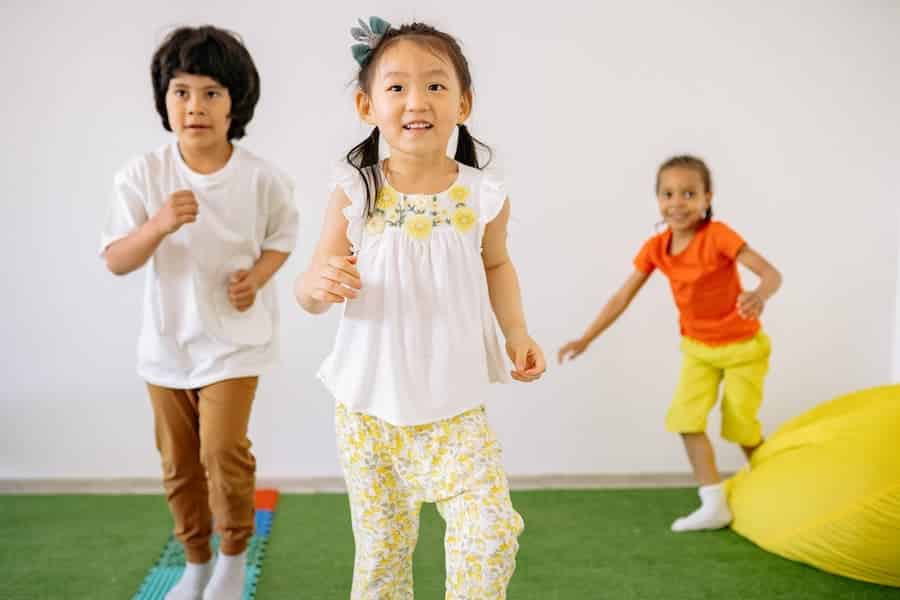
Sometimes words alone cannot express what’s going on inside. Our minds and mouths don’t seem to work as one and we are left without the ability to convey what is really going on. So what can children and adults do when words fail us? We can dance. Not a dancer? Dance anyway! No choreography? Dance anyway! Never took lessons? DANCE ANYWAY! Dancing isn’t just for the ballroom, the stage, the movies, or the superstars. Dance can help everyone to let loose and free themselves of their stress and worries.
Not only does dancing lower stress, but it’s also a workout that burns calories and improves cardiovascular health (that’s what’s called a two-fer). If you can’t seem to get your child to a dance studio, there are plenty of dancing games at home that the whole family can use. Games, such as Just Dance, have a wide variety of songs for all ages, so you can get that self-care for your students without them even knowing it. If a gaming system is out of the question, just pick any song and get groovin’! After the moves have been busted and the dance floor cleared, you will see a much-improved attitude and overall feeling in the room.
Eat Healthy Foods
Your students might be tired of hearing “eat your vegetables” or listening to talking points on the five food groups, but the truth is that healthy eating does fall in the realm of self-care. We aren’t talking about going on a diet, but rather taking into consideration what’s being put into our bodies. If a student is observed with stress or fatigue, a proper meal may be the key to lifting their spirits and energy levels.
Stress can affect how your body processes foods and absorbs water. This can lead to feelings of fatigue or lagging. Adopting a proper meal plan can greatly improve spirit and health. A variety of fruits and vegetables along with proper hydration is a self-care activity for students that everyone can get behind.
Find Your Path
While there are many options of self-care activities for students, it’s ultimately up to you and your students to determine the best course of action that will yield the best outcome. No one thing works for everyone, and every self-care activity will not work for each and every instance. Like your diet, go through a variety of things to find out what benefits you and your kids the most. What works one day might not work the next, so switch it up and keep things interesting. Stress rears its head in very unusual and unpredictable ways, so be ready to challenge and defeat it, no matter where it turns up.
Soul Shoppe provides social emotional learning programs for schools. homes, and businesses.
You May Also Like:
Virtual Social Emotional Learning Activities
Self-control is one of the most important life skills anyone can learn. By providing lessons that nurture self-control skills, parents and teachers can set children up for success later in life. (UsableKnowledge)
Classroom games are a great way to teach self-control as a social and emotional skill. Social and emotional learning skills that contribute to self-control help children succeed in academia and outside the classroom. In this article, we’ll explore the functions of self-control as well as self-control games and activities that apply those functions.
Self-Control Functions
First, it is necessary to understand the functions contributing to self-control. With an understanding of those functions, it’s possible to begin developing games and activities that create learning opportunities for children.
The functions contributing to the development of self-control are: (DevelopingChild)
- Working memory. This is when a person knows how to effectively store information in their mind and use it effectively when necessary.
- Inhibitory control. This is the ability to pause and reflect on compulsions and impulses. Inhibitory control is mastery over temptations, distractions, and behaviors that might develop into habits.
- Cognitive flexibility. Identifying priorities, adjusting perspective, and adapting to the demands of new situations are all under the umbrella of cognitive flexibility. A capacity for this mental resilience is a necessary part of self-control.
Incorporating practices for working memory, inhibitory control, and cognitive flexibility will be essential in creating self-control activities for students.
It’s a good possibility that parents and teachers already have activities and games in their resources that teach self-control. Many activities and games children find fun are already good teaching opportunities for self-control. They just need a little more context in order to become more effective self-control strategies for students.
Here are some self-control games that teachers and parents can use:
Self-Control Games
Card Games and Board Games
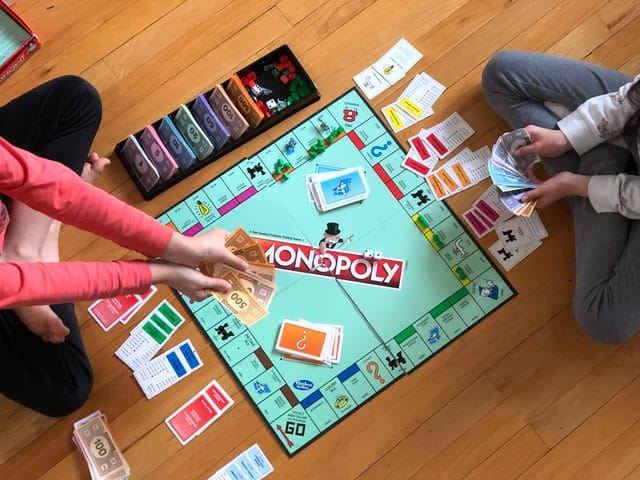
Card games and board games are excellent aids in teaching self-control strategies to students. Rule-based and goal-oriented card games and board games help children to practice using executive functions to achieve goals. At the same time, card games and board games are social. They put children in scenarios where they have to interact with other children to reach their goals. Children are well-served by practicing a habit of approaching problems with an understanding of how behaviors relate to results. (HBS)
For example:
- Card games require children to keep track of numbers and rules and exercise their working memory.
- Board games need fast decision-making in challenging situations.
- Games are built on strategic thinking, where a decision now relates to an abstract event in the future. These are especially valuable because children have to make decisions involving other people’s actions. Children will start to understand how their own choices relate to the decisions of other people.
- Complex rule sets. The mere practice of learning and playing within a complex set of rules gives children practice for higher functions.
Implementing these games with a more intentional approach will better teach self-control strategies. When children are playing, compliment how they are being cooperative and following rules. When they are frustrated, praise them when they aren’t having an outburst. This will help encourage them to continue having self-control while playing.
Physical Activities or Games
In addition to indoor activities, parents and teachers can use outdoor activities for teaching children self-control.
- Organized sports place children in situations that teach them higher cognitive functions. When children play sports they are regularly practicing the functions of self-control. Remembering rules and habits of play practices working memory. Avoiding cheating and channeling energy practices inhibitory control. Practicing ingenuity and imaginative solutions helps children with cognitive flexibility.
How much self-control children learn from physical activities like organized sports will depend on how those activities are framed for them. Organized sports already have all the teaching elements. They just need to be explained in a social and emotional learning context.
Music, Singing, Dancing, and Other Creative Pursuits
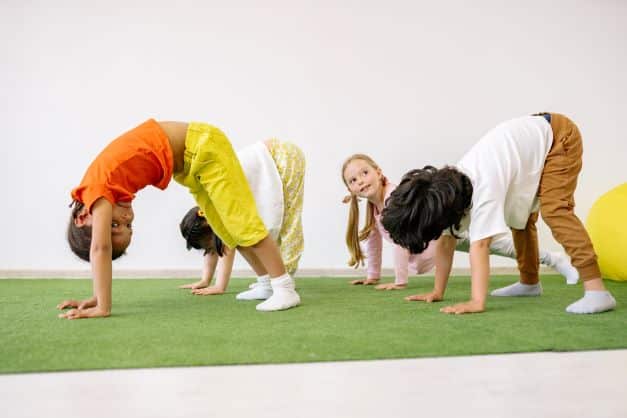
The discipline and emotional engagement of various creative pursuits create a positive learning context for self-control. Pursuing a creative discipline teaches children many higher cognitive functions. (Harvard)
For example:
- When children learn a musical instrument, it helps them practice self-monitoring and selective attention. Learning a musical instrument also teaches working memory as they memorize songs and practice using the instrument correctly.
- Musical classes can also provide social opportunities for children. Playing in a band or orchestra helps students to practice cognitive flexibility in order to cooperate with the other children.
- Dancing provides similar opportunities to practice higher cognitive skills that contribute to self-control strategies for students.
These creative activities, and others, provide students the ability to practice skills that contribute to self-control. Painting, writing, woodworking, sculpture–pretty much every creative activity has an element of disciplined goal-orientedness that helps children practice self-control. Teachers and parents can use all creative endeavors as social and emotional learning tools.
Stop, Breathe, and Think
Sometimes normal games aren’t enough to help students regulate self-control. In moments when students are having an emotional moment, they can be taught how to expel their energy in a positive way. Using the Stop, Breathe, and Think Technique children are taught to realize when their emotional balloons are full and retreat to a designated corner to control themselves. They can use fun breathing exercises like the bees breathing technique that James uses here to release that emotional energy.
Learn about creating a peace corner for your classroom or home here.
Social and emotional learning means everything to us over here at Soul Shoppe. We have developed teaching tools and techniques to help teachers and parents at school and at home. With tools like our Stop and Breathe Technique and our peace corner, we give educators everywhere the resources they need to help students with social-emotional learning. Click for information on SEL programs for elementary schools or social emotional homeschool electives.
You May Also Like:
Conflict Resolution Activities for Kids
Respect Differences Online Course
How to Teach a Child to Take Responsibility for Their Action
Conflict Resolution Strategies for Students
If children leave school with a belief in their ability to successfully set then accomplish their goals, then their education has helped boost them towards success. Creating lessons that teach self-efficacy in the classroom can be some of the most valuable lessons that educators can provide. (GSE) We have created a guide for self-efficacy in teaching for elementary students.
Self-Efficacy in Teaching
Teaching self-efficacy in the classroom means showing students how to plan their actions while feeling confident in their ability to carry out their plans. (SERC) Using engaging tactics will reinforce a sense of self-determination and personal effectiveness.
Here are some things to consider when setting out to incorporate self-efficacy into a teaching curriculum. (TheEducationHub)
1. Create Opportunities that Capitalize on Successes
Few moments reinforce confidence like experiencing successes. Often children, because of fewer experiences in their lives, haven’t yet experienced as many independent successes. Therefore, beginning a habit of believing that they can succeed is a valuable lesson.
Practicing extra gestures of positive reinforcement for both minor and major achievements is a great opportunity to improve self-efficacy. (TeachStart) For example:
- Send children a letter or postcard praising them for their achievement.
- Create an award where students can nominate each other for achievements they recognize.
- Designate an achievement wall, where students can display their achievements for the class.
Creating a positive reinforcement feedback system goes a long way toward teaching children to believe in themselves.
2. Peer Modeling

Peer modeling is the practice of recognizing students who will step forward to provide clarity in classroom dialogue. Students who are asked to rise to the challenge may be viewed by their peers as someone to trust to have the right answers on a given subject. This can bolster a child’s confidence. Encouraging peer modeling in the classroom is a great tactic in building self-efficacy. This process must be approached carefully, but if done well it can be an effective aid to self-efficacy in education.
3. Goals and Feedback
Setting goals is a key skill. Implementing exercises where students have to set goals, follow through with them, and deal with windfalls and setbacks will give them a valuable skill to carry forward into the rest of their lives.
Educators should help students set and keep goals, and at the same time they should create feedback opportunities so that students can learn how to assess their plans. Additionally, this will help them learn how to make adjustments to goals where necessary.
Goal-setting journals, worksheets, visual boards, and goal-tracking sheets are all helpful tools. Read more about goal-setting for students here.
4. Self-Assessment
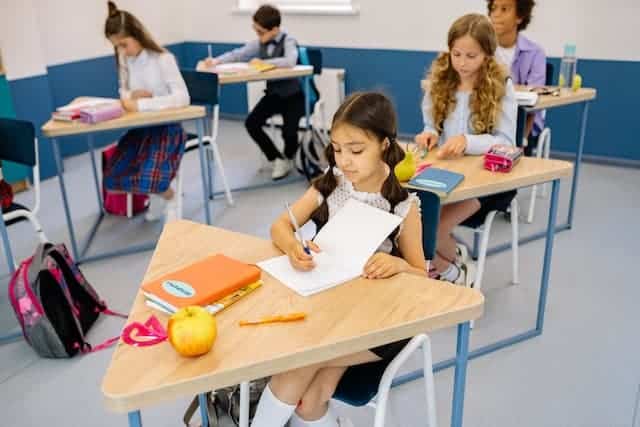
The practice of self-assessment isn’t always used in curricula driven by test scores and grades. If children are encouraged through classroom activities to develop a practice of self-assessment, asking themselves to make critical appraisals of the quality of their own work, it will serve them well for the rest of their lives. Using self-assessment sheets that are reviewed, or even simply put into an anonymous dropbox, can help students learn how to assess themselves on a given task. Self-assessment is a powerful tool in self-efficacy teaching.
5. Create Problem Solving Opportunities
Perhaps the single most effective skill any educator can impart to their students is the ability to problem solve. When students are empowered to approach every experience in life with a problem-solving mindset, they will be prepared to cope with many of the puzzles life throws their way.
An example of a problem-solving activity is the pyramid activity. (Wrike) Arrange students into groups and have them form a pyramid. Tell them they can only move two people but must reverse the pyramid.
6. Support Affirmation
A student’s self-confidence is affected by more than academic achievement. Since children spend a lot of time in school or engaging in school-related activities, it’s important for educators to help their students learn self-affirmations, as they pertain to parts of their personality other than academic achievement. Their social skills, hobbies like juggling or origami, their creative skills, or even their skills in being a good helper, are all examples. Self-affirmation is a large part of self-efficacy.
Teachers Teaching Self-Efficacy to Themselves
Kids learn a lot by example. Children are watching us all the time, and one of the most effective ways to teach them social and emotional learning skills is by living the lessons we wish to teach.
Educators who demonstrate self-efficacy will teach self-efficacy.
Educators who need help building lessons in social emotional learning can turn to Soul Shoppe SEL programs. Soul Shoppe encourages agency, self-confidence, self-affirmation, and other skills that prepare children for success in life. Click for more information on SEL Programs for Elementary Schools or our parent support programs.
You May Also Like:
Confidence-Building Activities For Kids
Self-Esteem for Kids
Merriam-Webster defines self-esteem as a feeling of having respect for yourself and your abilities, or a confidence and satisfaction in oneself. Self-esteem helps children face challenges, try new things, learn well, and develop well in general (Raising Children).
A child with healthy self-esteem is more likely to be successful academically, socially, emotionally, and even physically. Conversely, low self-esteem can contribute to mental illness such as anxiety and depression, and is often a cause of poor physical health. Low self-esteem negatively affects all types of relationships: friendships, work relationships, romantic relationships, to name a few. It also impacts work and job performance, and creates a predisposition toward abusing alcohol and drugs (CMHC).
Read on to learn what self-esteem is, why it is important, and some of its characteristics. Then we’ll share actionable ways that caregivers and teachers can promote healthy self-esteem for kids.
What Self-Esteem Means for Kids
Self-esteem has been called “the mainspring that slates every child for success or failure as a human being” (CHHS). That said, nurturing self-esteem in a child is one of a caregiver’s most important responsibilities.
Children need to feel proud of themselves for what they can do, see the good in themselves, and accurately assess their own strengths and weaknesses. This will help them believe in themselves and be resilient when facing adversity (Kids Health).
Why Self-Esteem Is Important
Mental Health
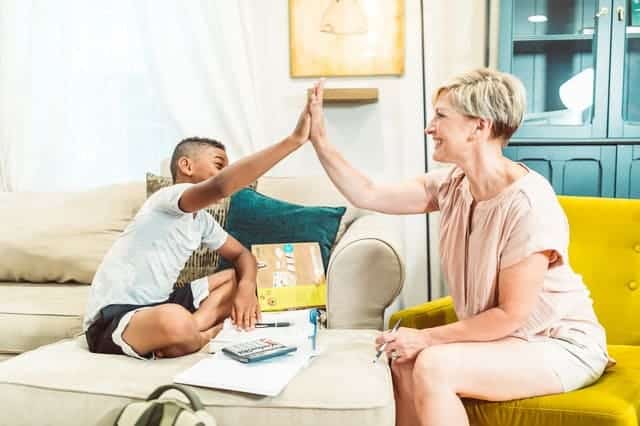
Research by the American Psychological Association has shown that having good self-esteem is essential for positive mental health and well-being. It also helps children develop empathy and perspective, as well as coping skills and perseverance (Very Well Mind). And, as stated above, having poor self-esteem contributes to a variety of mental health issues (Positive Psychology).
Academic and Life Success
Self-esteem often means that kids hold high standards for themselves. This manifests itself in several different ways. First, these high standards can help kids set goals—in school, and beyond. As a result, they improve their ability to cope with the setbacks and difficulties in reaching their goals. They learn to persistently try until they achieve success, ultimately have more opportunities and broader life experience.
Relationships
Good self-esteem is an essential component of high-quality relationships. When a child sees their own value, it allows them to better see the value in others. This leads to better interactions, which in turn leads to better self-esteem. The result is a cycle of growth that can last a lifetime.
Physical Health
Children who like themselves treat their bodies well. They typically take care of their physical health and are healthier in general. They are more likely to exercise regularly and subsequently recover faster from illnesses (Positive Psychology).
Characteristics of Self-Esteem
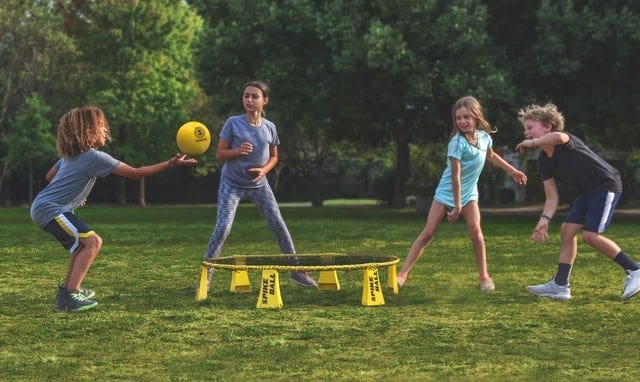
Kids with self-esteem often exhibit the following characteristics:
- Trying new things, including those that they might not be good at
- Facing challenges instead of avoiding them
- Persevering in spite of difficulties
- Coping with stress, anxiety, and pressure, whether at home or school (Very Well Mind)
- Believing in themselves (Raising Children)
- Accepting themselves for who they are
Ways to Build Self-Esteem for Kids
It is possible to build self-esteem at any age. While earlier is better, supportive parenting can change the trajectory of a child’s life no matter where they are in their development.
Warm and loving parental relationships are the basis of self-esteem. They make children feel worthy and valued. Here are some specific suggestions for strengthening your relationship with your child and building their self-esteem.
1. Set boundaries and limits.
Set boundaries and limits to help your child feel secure and grow emotionally (Sanford Health).
2. Show interest in what your child values.
If they love music, listen to or play music with them. If they love books, take them to the library. Engaging with your kids shows them they are worth your time and attention (Raising Kids).
3. Have them do chores or help around the house.
This can include helping prepare meals, making their beds, feeding pets, or washing dishes. Contributing to the household makes kids feel accomplished and shows that you trust them to help (Kids Health).
4. Treat each child as a unique individual.
Remember, one size never fits all…so parent each child in a way that works for both of you.
5. Give balanced feedback.
This means praising your child for trying their best or doing something new, not for being the best. This teaches children to value their own efforts, and to be a good teammate (Raising Children).
6. Listen to and acknowledge your child’s thoughts and feelings.
Teach them how to deal with uncomfortable feelings and, ultimately, to self-regulate.
7. Give your child choices.
Give options and allow your child a feeling of reasonable control over their life (CHHS).
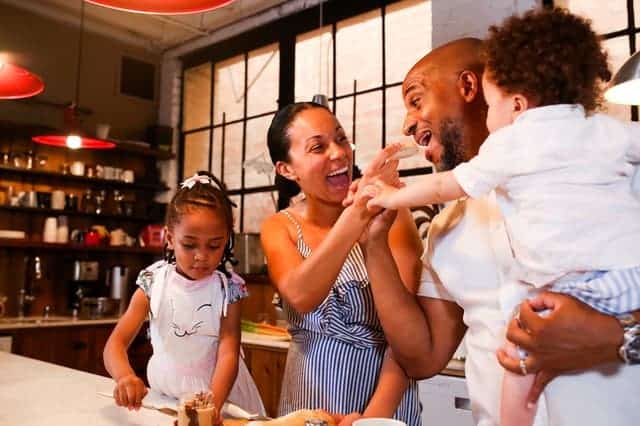
8. Make family meals together.
This strengthens family ties and allows everyone to contribute to the meal. Children can set the table, chop vegetables or cut fruit, or wash lettuce for salad. Meals also give everyone a chance to connect as a family (Raising Children).
9. Show love and affection to your children regularly.
Exhibit love and affection including physical affection—hugs, kisses, etc. Do not withhold affection even if they are misbehaving. To be effective, your love must not be conditional. Continue reinforcing that your child is lovable (CHHS).
10. Encourage them to keep trying even when things are hard.
Praise the effort. Reward perseverance. This builds their resilience.
11. Coach children through difficult social situations.
Children can experience difficult social situations at school or elsewhere. Role-play them, talk through them, etc. This helps prepare children for these situations and build confidence (Raising Children).
12. Keep children connected.
Keep children connected to family friends and extended family as much as possible. This helps develop their sense of belonging and identity. Other options include being part of a religious community, sports club, or another group (Raising Children).
13. Allow them to make mistakes.
Do not expect children to be perfect. Instead, let their mistakes be learning opportunities (Sanford Health).
14. Keep realistic expectations of your child.
This helps them meet the expectations or exceed them. Their self-esteem will grow as a result.
15. Focus on the positives.
Notice what your child is doing right, and praise them for those actions. This reinforces positive behaviors and discourages poor choices (Sanford Health).
Conclusion
Self-esteem can be nurtured in children during their childhood development. It is essential in helping them feel worthwhile, secure, and develop self-worth. This affects every area of their life.
Soul Shoppe provides social emotional learning programs for parents, schools and businesses. Soul Shoppe helps children with empathy, emotional literacy, conflict resolution and more.
You May Also Like:
Teaching Empathy To Kids and Teenagers
Virtual Social Skills Activities
Self-Care Activities for Students
Sources:
CHHS, CMHC, Kids Health, Positive Psychology, Raising Children, Sanford Health, Very Well Mind
We learn by doing. It’s true of everyone, especially children. And for certain things, behavioral learning is the most effective way to learn. Skills that depend on data and knowledge, such as mathematics, can start with data and theory, which might get strengthened with practice. Emotionally dependent skills, such as self-esteem, may be better suited for an activity, and an experience-based learning environment for the lessons to land.
Life experiences are the sources of self-esteem. Children want to feel included in communities, and experiences of rejection or acceptance into communities dramatically impact their sense of self-esteem. There are any number of reasons children might feel accepted or rejected by their peers. Children might highlight differences between each other, or affirm similarities. Some children may make decisions based on observations of what they see in the world, such as self-identifying that they are different. This may lead them to make judgments about themselves without any direct interactions. So many factors contribute to the development of self-esteem that educators can never anticipate all of them.
Self-esteem is among the most important factors in the development of any child. Good self-esteem can be the determining factor in the long-term success of a child, while damaged self-esteem can leave children struggling for the rest of their lives.
For these reasons, it’s imperative to include worthwhile self-esteem-building group activities into educational curriculum.
Self-Esteem Group Activities for Youth
Group activities are excellent for building self-esteem in children. Though it’s not the only deciding factor in developing self-esteem, community integration has a powerful determining effect on developing self-esteem.
The “I’m afraid to…” activity
This is an activity based on…
- Cultivating confidence that it’s safe to express feelings aloud.
- Recognizing there are people out there with the same fears.
All the students in the class write down something they’re afraid of. Then there’s an open discussion where the question is posed, “What would it be like if that happened?” It can be helpful to adopt an attitude that if the fear came to pass, it might not be as bad as anticipated.
The Gratitude Journal
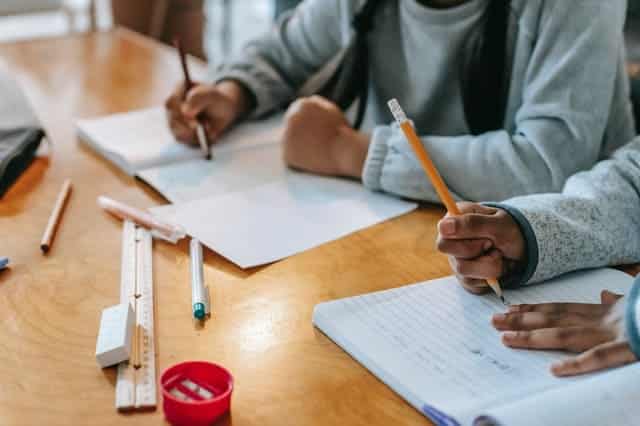
Creating a habit of looking for good things happening around them encourages children to look for positive aspects of themselves. For this activity, every child has a designated journal for this purpose. On a weekly basis, they are encouraged to write positive things they notice about other people. Then, two or three times every month, have a discussion with the whole class on the highlights from their gratitude journals.
Positive Rephrasing
In this activity, children will say their statements of self-challenge. Things like, “I am a bad writer,” or “I don’t have a lot of friends.” Then the student rephrases the statements into more positive statements. I.e. “I come up with creative ideas when I write” or “I have a great best friend.”
What are Good Traits Discussion
For this activity, students write down traits that they consider “good.” I.e. Good at sports–funny–kind–etc. After making the list, have a discussion in class about the traits. What do these traits look like in a person? How do you cultivate them?
Cooperative Boardgames
Games are fun, and they can either encourage individual conflict, or they can be tools for developing cooperation and a sense of being a valued part of the community. Play board games, and put children into small teams so that they can cooperate on decisions and work together.
Write the End Goal
It can be frustrating being a child. Children can have trouble feeling certain about having any agency in their own lives. With this activity, children write down outcomes they would like to see in their lives. Treating a child’s plans seriously affirms their sense that their actions and thoughts matter.
How to Build Self-Esteem in Students
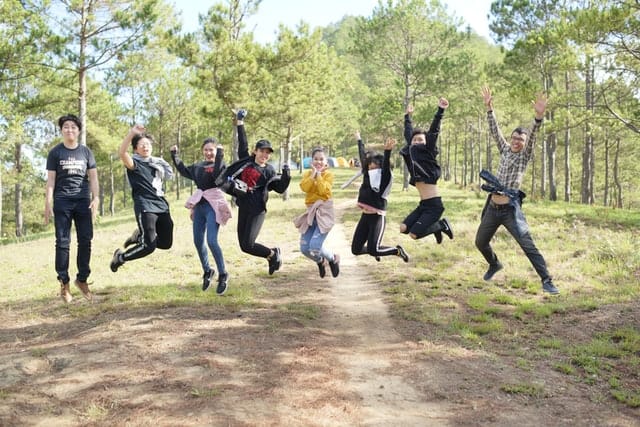
In the end, there are a lot of potential self-esteem group activities that encourage growth. Determining which ones are best to choose will depend on the educators, the students, and many other factors. Take into consideration factors that contribute to self-esteem when creating activities. Factors such as…
- Definitions–who am I? What does that say about me?
- Relationships–who am I in my relationships? How do they change me?
- Accomplishments–what do I do well? How have I shown improvement? And, alternately, do I wish to change any of my habits?
Self-esteem is complicated, but the factors contributing to positive self-esteem tend toward common experiences. If that’s true, then it’s possible to create environments that encourage improved self-esteem.
Soul Shoppe is a social emotional learning company. For more than twenty years they’ve been devoted to creating tools and empowering educators of all stripes to incorporate emotional intelligence into their curricula. Their strategies are effective in encouraging empathy and emotional awareness in children. Through these strategies and their Peacemaker Program they help decrease conflicts in playgrounds across the country. Click for more information on SEL Programs for Elementary Schools.
You May Also Like:
Virtual Social Emotional Learning Activities
Sharing Games for Elementary Students
Games create excellent teaching and learning experiences. Through games, we create microcosms of the world as a whole. In games, students can set rules and can practice setting and achieving goals. Perhaps among the most important advantages of games is the opportunity to practice behaviors. These behaviors are important for navigating life on so many levels.
The basic teaching technique of “see one, do one, teach one” is often the format of games. Additionally, games engage students on emotional and nonverbal levels. Therefore, students can learn social and emotional skills.
Games are particularly valuable for behaviors like sharing. Teaching sharing skills in the classroom through sharing games will give students a tool to develop stronger relationships.
Sharing is one of the fundamental behaviors of a well-socialized community. However, the act of sharing can cause internal conflict in children. Children below a certain age find it natural to share. At the same time, there’s a point when children discover that too much sharing means they have less for themselves. (GSE)
Designing Sharing Games for Elementary School Students
For kindergarten students, it’s important to design activities that give them a chance to practice sharing in a straightforward way. As children age and their minds develop more, lessons in sharing must also grow in complexity. More advanced lessons in sharing teach more complicated life skills. Sharing games, if designed well, can teach skills like negotiation, resource management, and community engagement. (PON) Well-designed sharing games for elementary students create layered learning opportunities.
Here are a few examples of sharing games for elementary students.
Resource Sharing Game
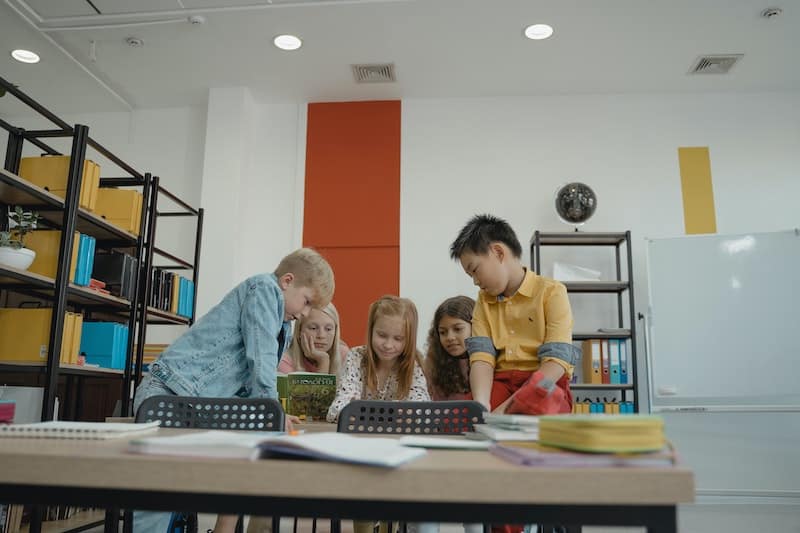
Based on studies made on the interplay of game theory and community, the Resource Sharing Game can be incorporated into other activities. (arxiv)
The basic idea is that some resource is controlled by an individual or subset of the main group. Maybe they control all the art supplies, cleaning supplies, or building supplies. Then the whole group is given a task to accomplish. The class is divided into groups, each with a part of the task to accomplish.
Every group will need to get supplies and tools from the kids with the job of distributing the supplies and tools.
This game creates an environment where children think about the nuances of sharing resources within a community. Nuances like:
- Temporal realities. Sometimes the resource isn’t available at the moment and they’ll need to wait until it is available.
- Scarcity. If there isn’t quite enough of a resource–such as there’s not quite enough purple paint–they might be required to come up with an imaginative solution. Maybe the community will need to be more careful with its sharing. Maybe the community will need to find some replacement resources. Maybe the community will need to find an alternative source of the resource such as finding red paint and blue paint and mixing them together.
- Organization of sharing. At a basic level, sharing is transactional. (I.e. You and I share our toys.) In a more advanced setting, sharing might have a broader implication. For instance, learning how to share with members of the larger community rather than their immediate circle may require a little more persuasion. They might also have to learn how to share with people outside of that community.
- Negotiation. Children generally grow to be more successful adults when they learn from an early age how to get what they want and need through polite negotiation.
The Pizza Sharing Game
Also known as the Concurrent Graph Sharing Game, the Pizza Sharing Game has a simple setup. However, in spite of its simplicity, it provides a fertile learning environment for teaching kids the social and emotional depths of sharing. (arxiv)
To start, two kids get a handful of objects put between them. It can be toys or snacks, or construction paper made to look like pizza. They take turns taking one or two objects from the middle. The game is over when the last object is picked up.
The Pizza Sharing game can be played in a couple of ways:
- Make the end goal to take the last piece or item.
- Or have the person they’re playing with take the last item.
The game provides children with the experience of making plans with their resources. Sometimes sharing is more complicated than “you get some and I get some.” In adulthood, sharing sometimes means making strategic and sometimes difficult decisions about who gets what. It also challenges the idea of making sure the right people get the right stuff. The Pizza Sharing Game encourages students to approach sharing with a problem-solving attitude.
Cooperative Board Games
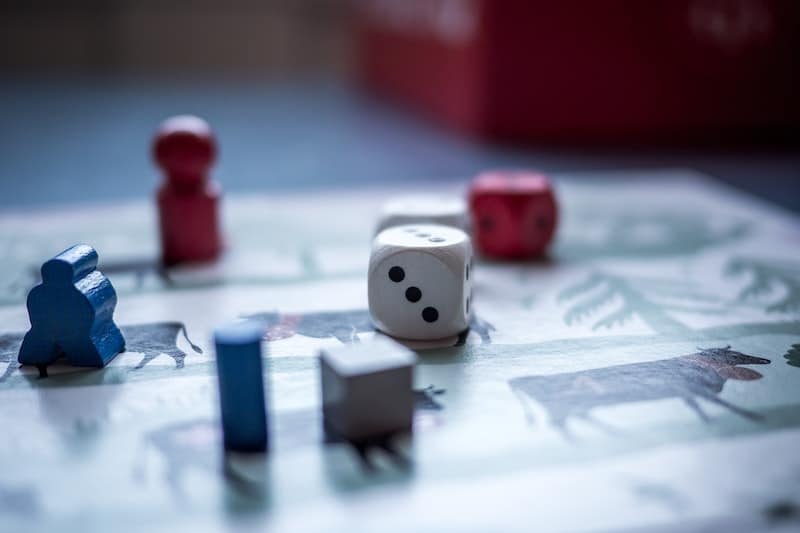
Stuff isn’t all that’s shared. Playing board games in a cooperative way helps students learn how to share less physical things like:
- Responsibility
- Goal setting
- Authority
- A sense of success or failure
It’s important that students rotate roles when they play board games cooperatively. Some kids have a natural tendency to take charge. Other kids might naturally give way to other students. That is a perfect dynamic to interrupt for educational purposes so that all children can learn more diverse social and emotional skills.
Teaching Sharing in the Classroom
The classroom is a place to stretch ideas and grow. Sharing can go far beyond what children learn in their preschool years.
For more social emotional learning ideas, click here.
From in-school visits to virtual learning activities, Soul Shoppe creates social emotional learning programs and resources for children, educators, and parents. Click for information on SEL programs for elementary schools, social emotional homeschooling, or our parent support programs.
You May Also Like:
Stress is a natural part of growing up, but it can impact a child’s emotional, physical, and academic well-being when it becomes overwhelming. Recognizing the signs of stress in children is crucial for parents and educators to provide the right support and help students develop healthy coping mechanisms.
In this article, we’ll explore 10 signs of stress in children, the effects of stress on child development, and practical strategies for how to help a child with stress and anxiety.
Why Understanding Childhood Stress Matters
While some stress can be beneficial—helping children develop problem-solving skills and resilience—excessive stress can have lasting negative effects. Research on child stress statistics suggests that:
- 1 in 5 children experiences significant stress that affects daily functioning.
- Chronic stress can lead to behavioral issues, difficulty concentrating, and long-term emotional challenges.
- Untreated stress increases the risk of anxiety and depression later in life.
By identifying the warning signs of stress early, educators and caregivers can implement strategies to help children manage their emotions and build self-regulation skills.
10 Signs of Stress in Children
Children may not always verbalize their emotions, so it’s essential to recognize both behavioral and physical signs of stress in children.
1. Increased Irritability and Mood Swings
If a child is suddenly more irritable, short-tempered, or prone to outbursts, stress may be the underlying cause. Small frustrations may trigger big reactions, signaling emotional distress.
2. Difficulty Sleeping or Frequent Nightmares
One of the most common signs of anxiety in children is trouble falling asleep or staying asleep. Frequent nightmares or night waking can indicate that stress is affecting their subconscious thoughts.
3. Changes in Appetite
Stress can lead to loss of appetite or, in some cases, emotional eating. A child who suddenly eats significantly more or less than usual may be experiencing stress-related changes in their body.
4. Physical Complaints (Headaches, Stomachaches, or Fatigue)
Unexplained headaches, stomach pains, or constant fatigue are physical signs of stress in children. Stress can cause muscle tension, digestive issues, and general discomfort.
5. Avoidance of Activities They Once Enjoyed
A child who once loved playing outside, participating in art, or attending social events but now avoids these activities may be struggling with stress or emotional overwhelm.
6. Trouble Focusing in Class
One of the biggest effects of stress on child development is difficulty concentrating. Stress makes it harder for students to retain information, complete tasks, and stay engaged in learning.
7. Social Withdrawal or Increased Clinginess
Some children retreat inward when stressed, avoiding friends and family. Others become overly clingy, seeking constant reassurance from parents or teachers.
8. Increased Nervous Habits (Nail-Biting, Hair-Twirling, or Restlessness)
Stress often manifests in fidgeting or repetitive nervous behaviors. If a child is suddenly biting their nails, tapping their feet excessively, or twirling their hair more than usual, it may be a stress response.
9. Expressing Negative Self-Talk or Feeling Overwhelmed
Statements like “I can’t do anything right” or “Nobody likes me” are signs of emotional distress in a child. When children struggle with stress, their self-esteem often takes a hit.
10. Increased Crying or Emotional Sensitivity
If a child is crying more frequently or reacting strongly to minor disappointments, they may be struggling with feelings of stress and anxiety.
How to Help a Child with Stress and Anxiety
 Once you recognize childhood stress, it’s important to provide supportive interventions. Below are effective ways to help students manage stress and build resilience.
Once you recognize childhood stress, it’s important to provide supportive interventions. Below are effective ways to help students manage stress and build resilience.
1. Create a Calm and Supportive Classroom Environment
Teachers play a vital role in reducing stress in children by making the classroom a safe and predictable space.
✔ Use calming activities: Encourage mindful breathing, quiet reading time, or sensory breaks.
✔ Keep routines consistent: Predictability helps students feel secure.
✔ Provide emotional check-ins: A simple “How are you feeling today?” can go a long way.
2. Teach Healthy Coping Strategies
Encourage children to develop self-regulation skills with stress relief techniques, such as:
✔ Mindful Breathing Exercises – Try using the Empty Balloon Exercise to teach students how to manage stress through deep breathing.
✔ Movement Breaks – Simple stretching, yoga, or a short walk can release tension.
✔ Journaling or Drawing – Encouraging students to express emotions through writing or art can be therapeutic.
3. Encourage Open Communication
Children need a safe space to talk about their worries.
✔ Validate their feelings: Instead of saying “Don’t worry about it,” try “I see that you’re feeling worried. Let’s talk about it.”
✔ Encourage problem-solving: Help them brainstorm solutions rather than focusing on stressors.
4. Incorporate Social-Emotional Learning (SEL) Strategies
SEL curriculums like Tools of the Heart teach children resilience, self-awareness, and emotional regulation—essential skills for managing stress.
5. Promote Healthy Sleep, Nutrition, and Exercise
✔ Encourage movement – Physical activity helps reduce stress hormones.
✔ Monitor sleep habits – Encourage parents to help students get enough rest, as sleep deprivation can worsen stress.
✔ Provide brain-boosting foods – A balanced diet supports emotional regulation.
6. Help Students Recognize and Express Emotions
Many children don’t yet have the words to express their stress. Teaching them emotional vocabulary can be powerful.
✔ Use an emotions chart to help them identify their feelings.
✔ Teach them calming phrases like “I can take a deep breath when I feel overwhelmed.”
7. Encourage Positive Peer Relationships
Having a strong support system is one of the best defenses against stress. Encourage:
✔ Peer support groups where students can talk openly about challenges.
✔ Team-based activities that promote collaboration rather than competition.
The Long-Term Impact of Stress Management on Child Development
Helping children manage stress early in life has long-term benefits:
- Better academic performance – Students can focus and retain information more effectively.
- Stronger emotional intelligence – They learn how to regulate emotions and interact positively.
- Improved mental health – Early stress management reduces the risk of anxiety and depression.
By recognizing warning signs of stress and providing the right support, educators and caregivers can help children build resilience that lasts a lifetime.
Helping Children Navigate Stress in a Healthy Way
Understanding the signs of stress in children is the first step in creating a supportive environment where students can thrive. By implementing stress-reducing activities, fostering open communication, and using SEL techniques, teachers and parents can make a lasting impact on children’s emotional well-being.
For structured social-emotional learning strategies that help students manage stress, explore Tools of the Heart. With the right tools, every child can learn to navigate challenges with confidence and resilience.
You May Also Like:
Building social skills helps children develop strong friendships, and encourages better peer and adult relationships. Read about social skills activities for kids and how they can help children improve their interactions.
Social Skills Activities for Kids
Social skills are a critical part of child emotional development. With attention, children begin building social skills from birth to age three. Then these skills are enhanced throughout childhood. However, students of any age can improve their social skills and benefit from them. Social skills are developed with both effort and practice.
What Are Social Skills?
Social skills are the tools necessary for children to form and maintain relationships. These skills help children self-regulate and take responsibility for their actions. According to 8,000 teachers and 20 years of research, here are the top 10 most important skills:
- Listen to others
- Follow the steps
- Follow the rules
- Ignore distractions
- Ask for help
- Take turns when you talk
- Get along with others
- Stay calm with others
- Be responsible for your own behavior
- Do nice things for others
When children are able to listen to others and take turns they improve their communication skills. That interchange is important for positive relationships with others. Likewise, following the rules, ignoring distractions, and being responsible for behavior show self-control. Additionally, getting along with others and staying calm are important skills for cooperation. Asking for help and following directions show independence. Lastly, doing nice things for others signifies empathy. Social success is intertwined by many other skills. However, these are the core social skills that will benefit children for a lifetime.
Benefits of Learning Social Skills

Social skills are incredibly important for many reasons. Researchers found that when these skills are taught, problem behaviors are reduced and learning time is maximized (Vanderbilt).
Long-term benefits are also noted. For example, schools with strong social emotional programs have higher graduation rates. This translates to better employment opportunities and wages, as well as improved physical and mental health (PBIS).
Learning social skills is just as important as learning academics. In fact, it is a precursor to any kind of learning. Students who learn social skills learn communication and are better at conflict resolution. They learn how to advocate for themselves, and implement emotional management tools. Other benefits include:
- Reduced rates of bullying
- Improved school climate and a culture of inclusion
- Increased self-awareness
- Better active listening skills
- Ability to set and achieve goals
- Enhanced ability to communicate with peers and adults
- Cooperative teamwork
- Improved school safety
- Decreased probability of health problems
- Development of persistence
- Lower likelihood of substance abuse (PBIS)
In contrast, when students do not learn social skills, they can suffer from loneliness and mental health problems. They tend to have poor relationships with others. Similarly, students who have inferior social skills may have school and behavioral problems (Behavioral Sciences). Other issues include difficulty completing academic work. Therefore, students are far more likely to thrive at school when taught social skills.
Social Skills Activities for Kids
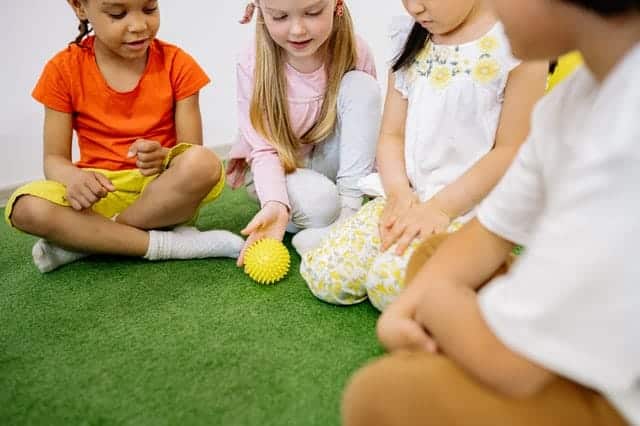
There are many fun and engaging ways to teach children social skills. Here is a list of social skills activities, and how to implement them.
-
Turn-Taking Games
One example is throwing a ball and naming the student you are passing it to. Another idea is playing a board game and having students say, “My turn,” at the start of their turn.
-
Role-Playing
Practice scenarios where children do not know anyone. Start by discussing phrases they can say. Some of them could include, “My name is…” and “Can I play with you?” (Child Development)
-
Making Friendship Cards
First, discuss friendships and what makes a good friend. Then have students write a card to a friend. (PBIS)
-
Playing “Simon Says”
This game helps with attention skills and self-regulation. In this game, one person at the front must say an action, such as “raise your hand.” However, if they do not say, “Simon Says,” then the children who perform the action are out. Every action must be said like this: “Simon Says: ___ “.
-
Playing “Red Light, Green Light”
In this game, students must work on self-regulation and following directions. This game is best played outside. The teacher or a student must stand at the finish line, and everyone else has to stand at the starting line. When the announcer says, “Green Light!” students can walk or run towards the finish line. However, when the announcer says, “Red light!” students must stop at once. Any students moving after that command are out.
-
Seeing Something From Someone Else’s Perspective
Gather children in a circle and tell students it’s important to see things from another’s perspective. Then demonstrate how to do this. Say something like, “I noticed that (the student) was having a difficult day when their friend wasn’t in class. I thought it must have been sad for them to miss their friend.” Model both their perspective and how you think they felt. (Child Mind Institute)
-
Discussing Social Norms by Watching a Clip or a Short Show Together
Before starting the show, discuss that the children will be watching for characters and the setting. Ask what they know about the show or characters. Additionally, ask what they expect to happen in the scene. After discussions begin watching but keep the remote handy. Pause the video at important parts and discuss character actions. You can also point out body language or facial expressions (Child Mind Institute).
-
Playing Board Games
Before starting, discuss appropriate ways to win and lose. Also, discuss appropriate commentary. Comments such as, “That was a great move!” and “Great game!” are encouraged. Then have students play with each other, and positively reinforce self-regulation and social skills (Child Development).
-
Having Students Work with Mentors
This can be done with peers or different age groups. Students should work on pro-social activities, such as reading together, working on projects, art, or more.
-
Having Students Create Videos
Children can learn new skills with imitation. Practicing these techniques in the classroom is a safe way to learn them. First, discuss the primary social skill, such as self-regulation. Explore what it means, and the body language and words associated with it. Next, group children in small groups (3-6) and encourage them to act out a scene showing cooperation. Then create the video. Lastly, share the video and discuss the body language and skills shown. This can be done with younger students if the teacher or a volunteer video records for them (Positive Action).
There are many ways to teach social skills to children. This is not an exhaustive list. Please see below for additional resources.
Soul Shoppe provides social emotional learning programs to enhance children’s social skills. Soul Shoppe programs help schools and parents teach mindfulness, inclusivity, allyship, conflict resolution strategies for students, and more.
You May Also Like:
Virtual Social Learning Activities
Embodiment Practices for Kids In School or at Home
Building Emotional Resilience in Kids
Sources:
Behavioral Sciences, Childhood Development, Child Mind Institute, PBISRewards, Positive Action, Scholastic, Vanderbilt, Education, Parenting Science, PBS, Positive Action, Positive Psychology
Host Timothy Regan welcomes you to learn peacebuilding skills along with the people and stories of Soul Shoppe – our own Bay Area peacebuilding children’s educational fun-team! This nonprofit teaches healthy relationship and conflict management skills to thousands of children K-8th grade every year, with colorful, fun events.
Soul Shoppe team members Anthony Jackson and Paul Himmelstein share stories and demonstrate what we all needed to learn in grammar school – simple, powerful, reliable skills to understand ourselves and eachother, and to handle conflict so we can thrive together.
Soul Shoppe is a Bay Area nonprofit with a beautiful VISION: “A world where respect and empathy are the norm, and every child can thrive and shine!” Their MISSION is: “to create safe learning environments that bring forth a culture of compassion, connection and curiosity—eliminating bullying at the roots.”
On June 7, 2022, from 6 – 7 pm PDT, join us for inspiration as we honor Peacemaker legend Dolores Huerta, President and Founder of the Dolores Huerta Foundation, and visionary Peacemaker Angel Acosta, PhD, ground-breaking leader of the new philosophy of healing-centered education.
Dolores Huerta, Founder & President of the Dolores Huerta Foundation (DHF), is a world-renowned civil rights activist and community organizer. She has worked for labor rights and social justice for over 50 years. In 1962, she and Cesar Chavez founded the United Farm Workers union.
Ms. Huerta is a two-time US Presidential Award Recipient; she received the Medal of Freedom Award from President Obama in 2012, the highest civilian award in the United States, and the Eleanor D. Roosevelt Human Rights Award from President Clinton in 1998.
Dr. Acosta is the founder of “Healing-Centered Education” and is currently the Director of the Garrison Institute’s Fellowship Program. Angel Acosta has worked tirelessly to bridge the fields of leadership, social justice, and mindfulness.
We will also honor Bay Area Peacemaker champions:
- Peacemaker Administrator, Stephanie Martinez, from Jefferson Elementary School District, Daly City, CA
- The Student Peacemaker Team from James Franklin Smith Elementary, San Jose, CA
- Peacemaker Trainers from John F. Kennedy Elementary, Daly CIty, CA
Soul Shoppe’s Peacemaker Awards 2022 is a free, virtual event. Please register so we can send you the zoom link.
In just one hour, event attendees can take a significant step toward peace, honor Peacemakers, learn more about conflict resolution for kids, and help Soul Shoppe bring more fun, safety, and peace to kids and playgrounds everywhere.
A recent graduate of our Peacemaker Trainer Certification inspired us with this vision:
“Our vision for the school is for all the students and teachers to use Soul Shoppe and to use the tools such as the I Message and The Clean Up. We do see the power of using the I Message across all the grade levels. We believe if we continue to use the vocabulary in kindergarten the kids will be well versed by the time they get to 5th grade. And then when they go to middle school and high school they can model the ‘correct’ way of solving problems, thus teaching the kids that weren’t part of Jefferson that the tools can be used and will become woven into the San Leandro community.”
– Marilia Dos Santos, Kindergarten Teacher and Peacemaker Trainer, Jefferson Elementary
Read More: https://www.einnews.com/pr_news/575613988/soul-shoppe-2022-peacemaker-awards-honors-social-emotional-education-thought-leaders-dolores-huerta-and-dr-angel-acosta
|
|
Every generation in recent history has grown up in a world where national and international news makes its way into the safety of our living rooms and around our dinner tables.
Though parents, teachers, and other caretakers might try to shield their children from scary sounds, images, and stories, the truth is that kids continue to be exposed to the dangers and stressors in our current culture.
In the 1970s, newsreels squawked out threatening projections about the United States energy crisis.
In the 1980s, the tension between the United States and the Soviet Union threatened war and the AIDS epidemic struck fear and panic.
Then in the 1990s, images of the Los Angeles riots, the Bosnian War, and the Oklahoma City Bombing repeatedly played for months on end.
As we are well aware today, the 2020s have introduced stressors no one could have predicted, and they are affecting our children daily. Masked children are familiar with the pandemic that continues to disrupt their classrooms, though they might not fully grasp the enormity of the threat. Some are aware that friends and loved ones have gotten sick, while others live in households that have been stricken with joblessness and even homelessness.
As caretakers, it behooves us to understand how we can identify the signs of stress and anxiety in children and become familiar with tools we can implement to help them thrive despite anxiety-inducing realities.
Identifying Stress in Children

Anxiety is a natural part of life. It doesn’t always signal a more significant problem–sometimes, it is simply a human reaction to a human dilemma.
For example, if your child sees one classmate teasing another, she may grow anxious. This anxiety could be an empathetic response, during which your child puts his/herself in the other person’s shoes and feels what she might feel if she was being teased. A child’s anxiety in this situation could also be triggered by the fear that the offending classmate may tease him/her one day.
Though these feelings are not comfortable, they are normal and even helpful. Just as some discomfort helps lead adults to pursue healthy, strong responses, they also help children navigate difficult moments.
Some fears are common among specific age groups. Some of these common fears include:
- Strangers
- Loud noises
- Monsters
- The dark
- Bugs
- Sickness
- Dogs
Children experiencing fears can exhibit behaviors resulting from their uncomfortable feelings even if real danger is not present. When worries go unaddressed and unprocessed, they can become stress and anxiety.
Stress in children can manifest in various ways. According to Aetna, these are among the most common:
- Avoidance of specific activities, situations, or people
- A tendency to worry about what can go wrong in any scenario
- Worries or fears that interfere with normal daily activities
- Persistent distress despite an adult’s reassurances
- Trouble sleeping at night or insisting on sleeping with family members
- Physical symptoms, such as headaches or stomach pain that don’t stem from other medical conditions
When you identify these signs of anxiety in your student or child, use the moment to connect with them. You can seek to understand what is at the foundation of their concern and help them clearly articulate the source.
How to Help a Child With Stress and Anxiety
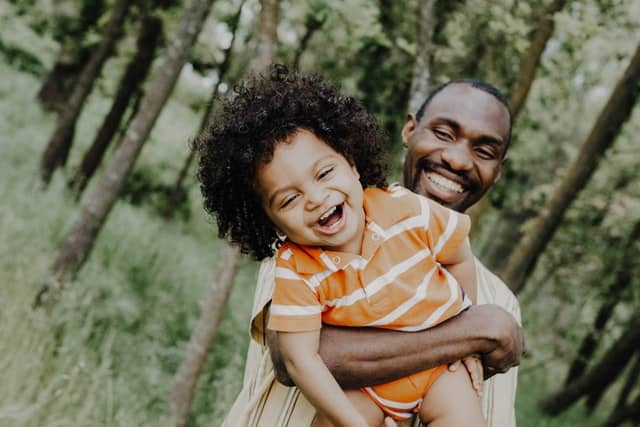
Help your child talk about what is frightening them by asking specific questions.
Often, articulating their fear or frustration can release tension in and of itself. For example, if a child becomes upset at the suggestion of beginning his or her school day on Zoom, you can ask them, “What makes Zoom scary?” Or, “What was difficult about the last time you met your class on Zoom?” These questions can help guide your child toward specific answers.
Once you’ve taken the time to help your child identify the source of their worry, validate the emotion they’re experiencing.
If a child tells you they’re afraid of the dark, and you’ve asked clarifying questions to pinpoint the specific fear, you can say, “I know a lot of children your age who feel afraid of the dark.” Then begin to help your child create a plan to overcome their fear. You may feel compelled to offer a great deal of sympathy or comfort to the child as you discuss their fear of the dark, but it’s best to identify the fear, validate it, and then move on to creating a plan. Too much sympathy can become a reward that reinforces the fear.
After you’ve initiated a conversation with the child, help them create a plan to overcome their fear.
If a student exhibits significant fear of heights, and you’ve helped them identify the fear and validated the fear, such as “I can see you are really afraid of heights,” you can help them plan a way to overcome it.
“How about today you stand at the top of the slide for a few seconds and imagine yourself having a great time going down the slide. By the end of the week, you can give it a try!” Helping children set these goals and then encouraging them along the way lets them know you see them, hear them, and you are willing to support them through difficult emotions and circumstances.
Social and Emotional Learning Helps Children with Stress
NPR recently discussed the importance of social and emotional learning to overwhelmed children.
The author interviewed Olga Acosta Price, director of the National Center for Health and Health Care in Schools. Price says, “Effective social and emotional learning doesn’t happen ‘only at certain times of the day or with certain people,’ it should be reflected in all school operations and practices. With disruptions from the pandemic so widespread, that kind of approach is needed now more than ever.” At Soul Shoppe, we agree.
The best time to help children understand and interact with their emotions–and the feelings of others–is while they are experiencing them throughout the day.
Children are still experiencing crises daily (NY Times). It is our responsibility as adults and caretakers to help guide our children through these tumultuous times by helping them survive and thrive. We can do that when we give them the social and emotional tools to face the dangers–either imagined or real–and grow the skills they need to identify, manage, and reframe complicated feelings.
Soul Shoppe provides social emotional learning programs for elementary schools, homeschoolers, parents, corporations, and more. View online courses or contact us for more information.
You May Also Like:
Virtual Social Emotional Learning Activities
Teaching Empathy to Kids and Teenagers
Summertime is here and we realize it’s a different kind of summer. There is a constant urgency in our world. We feel concern and outrage for children and families. We see what happens when government policy lacks compassion. For some Americans, these policies and practices are all too familiar. For others, it’s an awakening. Our hearts ache knowing that people who need our help are instead treated with no regard for their basic humanity. We know that the damage being done to parents and children is devastating. We are inspired by the protests and creative acts of kindness and resistance from across the country. The practices of empathy and compassion are more important than ever, not only in our legislative policies, but in all our circumstances.
It’s important for us to continue to use our voices and the power we have in order to build the communities we want to see. At the same time, we hope that during this summer you find some relief from the pressures of our world. These two ideas can co-exist and thrive together.
We founded Soul Shoppe in 2000 with the core commitment to change school culture through connection and curiosity, teaching empathy and compassion skills in order to eliminate bullying at its roots. The organization has touched the lives of over half a million children through its workshops and Peacemaker program. We know the work that we do is the foundation for deep change in our culture and extends well beyond the classroom.
Summer Resources for Parents
We know that being a parent can be challenging under the best of circumstances. Circumstances are clearly not at their best right now. Where do you go for help? This month, we’re offering some resources to support parents and the adults who want to stand with the youth in their lives. We aren’t affiliated with these organizations and don’t receive anything in return. We’re sharing these links because we think they are potentially useful. Some resources are directly relevant to current events while others suggest ways to build empathy, compassion and listening. And some resources are simply about fun activities to do together, because joy is the foundation from which we can act.
Immigration Resources:
How to Talk to Kids about Immigration and Family Separation
Know Your Rights Information on ICE and Immigration
Building Social Emotional Skills
Soul Shoppe Refresher Videos — building peacemaking skills–a great way to continue your or your child’s Soul Shoppe skills
Parent Resource Guide to Social Emotional Learning blogs, articles, and videos for parents about fostering kindness, empathy, gratitude, resilience, perseverance, and focus in children.
Bullying Prevention Resources
Stop Bullying: What You Can Do
The Consequences of Bullying – Fact Sheet
A Snapshot of Bullying in America (infographic)
Un Vistazo al Acoso Escolar en America
Cyberbullying Facts (infographic)
Datos Sobre El Acoso Cibernetico
“What Parents Should Know About Bullying”
Ideas for Preventing Summer Slide
Summer Fun with the Brain in Mind
Preventing Summer Slide: Why Not Try Internet Research?
Parents: Inspiring Readers Through the Summer Slump
Preventing Summer Slide (on a Budget)
Encouraging Science at Home Is Easier Than You Think
General Resources for Parents
Parent Toolkit – Support for parents on many topics: Academics, Social/Emotional, Health & Wellness, Financial Literacy, College & Career.
Parents Guide to Student Success – to see what your child will be learning at each grade level
If you’re a parent or teacher, you know your small kids experience big feelings. Sometimes they seem to come out of nowhere, while other times, your kids have emotional responses that you can easily trace to some prior moment in the day. Regardless of how their feelings are stirred up, we must normalize talking about them.
Children who are taught that talking about feelings is healthy will learn not to bottle up their life experiences. Instead, they’ll learn to share them and process them. Just like adults, when kids begin to understand their emotions and name them, they have a fighting chance of working through their feelings.
This article will discuss talking about feelings and teaching your child to identify and express them.
Talking About Feelings
What Is The Difference Between Emotions And Feelings?
While emotions and feelings are used interchangeably, they are slightly different. Emotions are bodily reactions that occur through neurotransmitters and hormones in the brain (iMotions). Feelings, on the other hand, are a conscious experience.
Talking About Feelings Helps Children Process
Though emotions can be as unique as the children who experience them, there are generally four big emotions in which everyone’s feelings are grounded: anger, sadness, fear, and loneliness. We could easily break down each of these big emotions into resulting feelings, but for the sake of this article, we’ll focus on the main ones.
Suppose you are looking for a more extensive representation of the full array of emotions to help teach your child that talking about feelings doesn’t have to feel overwhelming or frustrating. In that case, you can check out our feelings poster.
The Big Four Feelings and Emotions for Kids
Let’s discuss the big four feelings and emotions for kids and how you can help your child identify them.
Anger
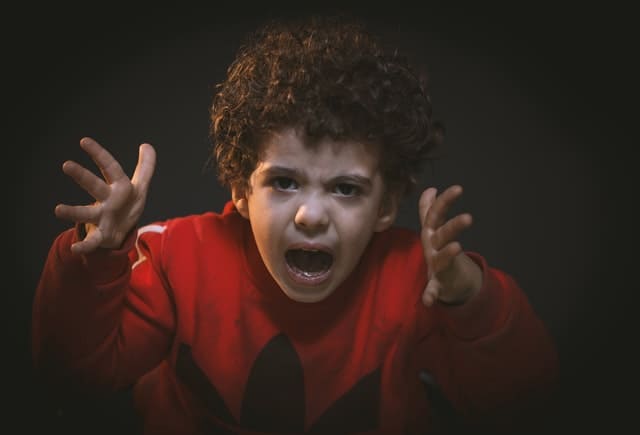
In general, anger is secondary to hurt, fear, frustration, or injustice. Sometimes your child will feel triggered to anger by one of these emotions, and sometimes they will feel all four of these emotions at once.
Anger is an uncomfortable emotion for both adults and children. It’s also an uncomfortable emotion to witness in another person. Anger for children often manifests itself as a temper tantrum, hitting, grabbing another child’s toy, or having an emotional outburst such as crying coupled with screaming.
It’s important to understand that anger triggers your child’s fight or flight response. Jaclyn Shlisky, PsyD, writes, “Anger may seem irrational, but for a child that hasn’t yet learned how to regulate emotions, it’s an immediate natural reaction to some sort of wrongdoing your child feels” (Parent.com). To help your child recognize and self-regulate when talking about the feelings and emotions that are stirred up by anger, you can do the following:
- Identify and explain the feeling using age-appropriate language and materials, such as songs, movies, pictures, or facial expressions.
- Teach your child different ways they can deal with their feelings.
- Praise your child when they talk about their feelings.
- Reinforce your child’s attempts to discuss their feelings by incorporating feelings into game time, car rides, when you’re sharing a meal, etc.
Using anger as an example, you can help your child identify and explain the emotion. For instance, if your child doesn’t want to follow their bedtime routine one night and begins to have a temper tantrum, you might say, “It seems like you’re feeling angry about having to brush your teeth tonight. You are crying, and your face looks like this. What can you do? I think you can ask for help or take some deep breaths and try again.”
Acknowledging your child’s emotions not only helps them identify their feelings using self-awareness skills, but also helps them understand how they can deal with them. The next step is to praise your child when they acknowledge the emotions they’re experiencing. Additionally, praise them when they decide how to handle that emotion. While at the beginning, you might provide examples of solutions for them, they will eventually learn to come up with solutions on their own.
Later, when their emotions have settled–this could be an hour later or even a couple of days later–you can reinforce your child’s attempts to discuss their feelings. You can also discuss the choices they made to process the emotions. For example, “Last night, you seemed angry about brushing your teeth. I was so proud of you when you figured out you were feeling anger and then took some nice, deep breaths before finishing brushing. You handled your anger so well!” This kind of reinforcement lets kids know what they did well, and it can help build their confidence during future moments with difficult emotions.
Sadness

When you’re teaching your child to identify and express emotions, sadness is one of the first you will want to explore. We all experience sadness at one point or another, and children tend to present sadness in similar ways to adults.
The Center on the Social and Emotional Foundations for Early Learning at Vanderbilt University suggests playing the game Make a Face to begin conversations about emotions with your child or student.
This is a great way to open a conversation with a child who feels sad. The game begins when you say, “I am going to make a face; guess what I am feeling by looking at my face.” This game helps the child assign a name to the feeling and then allows the adult to reinforce their connection in the moment. Once the emotion is established, you can ask the child what has caused their sadness and then follow the steps above (identify and explain, teach them ways to deal with their emotions, praise the child, and reinforce their attempts).
When children deal with difficult emotions, it’s essential to let them know that while their feelings belong to them, they are common among children and adults alike. They are not alone.
Fear
In most educational materials on feelings and emotions for kids, fear is at the top of the list. The reason for this is obvious–just think back to when you were a child. Perhaps you had a fear of the dark, or big animals, or loud noises. Much of this fear is rooted in feelings of uncertainty and the vastness of “the unknown.” Often, children express fear in uncertain ways and this can lead to anxiety later in life.
If your child or student is having a hard time identifying and expressing fear, here are some tools you can give them to help them express it more productively:
- Encourage them to ask for help.
- Invite them to say the emotion instead of showing it. (For example, “I am feeling scared,” instead of crying, hiding, or throwing a tantrum.)
- Relax and try again. (For example, if a child fears reading aloud in class, invite them to take some deep breaths and try again.)
- Tell a grown-up.
Teaching your child to identify and express emotions allows them to connect with you and with others in a way that keeps them safe and gives them a greater sense of confidence when they are not with you. It also builds camaraderie and community because it teaches them that we are all in this together.
Loneliness

The final emotion we’ll discuss here is loneliness.
Research shows that children form attachments to other people right from the start. Children who have a secure attachment with at least one adult experience benefits and learn that connection to others is a positive thing. Conversely, when children feel disconnected from others, they can experience loneliness.
Unfortunately, loneliness in kids has skyrocketed as a result of the pandemic. As you might imagine, kids attending classes online or being taken out of their normal activities has resulted in an epidemic of loneliness.
Loneliness is a complex emotion but helping your child identify it in themselves and then process it, benefits them greatly. Bethany Vibert, PsyD, a clinical psychologist at the Child Mind Institute, suggests some helpful strategies to talking about the feeling of loneliness with your child. Dr. Vibert writes:
Ask open-ended questions. For example, if your child says they miss spending time with someone they used to see a lot, you can ask questions about that. “What did you really like doing with her? What do you miss the most about seeing her?”
Make observations. Sometimes comments are a good alternative to questions. So, if you notice that your child isn’t spending time with people as much as they used to, you might point that out. Then leave space for them to talk.
Validate their experiences. Showing genuine interest goes a long way. Do your best to listen without judgment (or visible panic) to whatever they have to say. Try also to avoid overreacting with too much sympathy or emotion, since that might make them feel even worse. You can show that you’re listening by reflecting back on what they’re saying (“It sounds like you’re having a hard time”), or saying supportive things like “That sounds tough. Would you tell me more about that?”
Talking about feelings and emotions with your children or students teaches them that their experiences are valid, they can manage their feelings, and that you care about them.
Soul Shoppe supports parents and school communities by creating and facilitating dynamic social-emotional learning programs, parent workshops, and more. For more information on how to talk about feelings with the kids in your life, please contact us.
You May Also Like:
Self Care Activities for Students
Virtual Social Learning Activities
Teaching Children How To Self-Soothe
Setting boundaries is important in leading a successful and emotionally rewarding life. (HarvardBusinessPublishing) Sometimes, when we feel uncomfortable we instinctively know when our boundaries are crossed. However, both children and adults often have trouble understanding what’s happening on an intellectual level at times when they have that instinctive sense that their boundaries are being crossed. Additionally, children might not always have a clear idea about how to process and respond to uncomfortable situations that result from violations of their sense of autonomy, however large or small those experiences are. (GSE)
A well-rounded education built with social-emotional learning can include learning opportunities that help children with boundaries. In order to develop into confident and well-rounded members of society, children need to learn how to define their boundaries, and subsequently, how to maintain those boundaries.
In order to create activities that incorporate teaching boundaries, it’s important to first define boundaries. Once you define these boundaries it also gives children an idea of different kinds of boundaries that need to be respected.
Here’s a brief overview of the seven (7) types of boundaries:
Seven Types of Boundaries
1. Physical Boundaries
People generally require physical boundaries in order to maintain a basic sense of safety. Everyone has different thresholds and triggers that give them a sense that their physical boundaries are not respected. Some examples include:
- Unwelcome touching of any kind
- How close a person is to their personal space (for example someone might be standing too close)
- Sanctity of their things–is their lunch, school supplies, jacket, etc., respected?
It is important to recognize that different kids have different levels of comfort with physical boundaries. Some might need you to stand further away. Some don’t mind if their classmates touch their backpacks. Some kids love hugs and others don’t like to be touched at all. With this You Belong poster, kids come into the classroom in a line and touch the symbol of what they prefer – a hug, a high five, a handshake, or a fist bump.
Children need to be aware of what their preferences are when it comes to their physical boundaries. Then they can be encouraged to vocalize those boundaries.
2. Emotional and Mental Boundaries
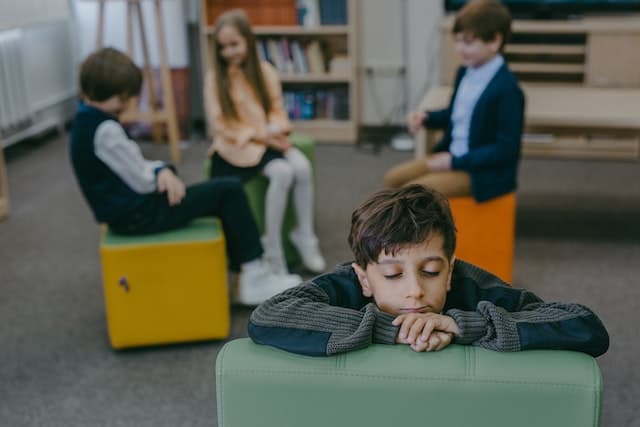
Children might not always recognize that their emotional and mental boundaries aren’t being respected because they haven’t yet developed the tools to recognize and articulate their feelings about what makes them emotionally and mentally uncomfortable. Therefore, with younger kids, especially, look for clues like:
- If the child has trouble talking about a particular subject
- If the child is showing signs of embarrassment
These kinds of signs can mean the child is sensing that someone has crossed their mental or emotional boundaries.
3. Spiritual or Religious Boundaries
This is sometimes a challenging subject to approach in a classroom setting, but it might come up. Classrooms are full of kids with many different backgrounds. Educators will have to prepare themselves to moderate situations arising from a need for spiritual and religious boundaries.
4. Time Boundaries
School is an ideal learning environment to help children figure out how to create and defend their schedules. Adults, more than children, tend to have trouble setting boundaries with their time. Therefore, it’s valuable for children to learn how to recognize when people are taking advantage of their time so they can set boundaries in adulthood. For example, when a student is trying to complete an assignment and someone is distracting them, they can learn to say, “I’ll talk to you later. I need to do my work right now.”
5. Financial and Material Boundaries

Children won’t need to worry about placing boundaries around finances in elementary school. Financial boundaries have more to do with adulthood. However, class stores and using play money can be introduced in elementary school to help them become aware of financial priorities.
6. Sexual Boundaries
It is never too early for children to develop an understanding of having and respecting bodily boundaries. While the youngest grades might not be the ideal environment for conversations about sexual boundaries, it is an ideal environment to start talking about respecting the physical comfort and safety of themselves and other people.
7. Non-negotiable Boundaries
Boundaries are about safety and comfort. Therefore, violation of those boundaries can seriously compromise a person’s sense of well-being. Because every child comes from a different background, every child will have unique ideas and situations that will inform personal non-negotiable boundaries. Both parents and educators can help children figure out those boundaries.
Boundaries for Kids
Kids will test boundaries. They will test their own boundaries, trying things to see how uncomfortable those things leave them. Their peers will have boundaries, and kids will test those, figuring out how the community will react to them. Teachers and parents will set boundaries, and kids will push against those boundaries to figure out how far they can be pushed. It’s not only natural to do it, but kids will learn a lot about how boundaries work by checking out how pliable the boundaries around them are. (UsableKnowledge)
As a result, one effective way to teach boundaries in a safe way is through demonstration. (ChildMindInstitute) Boundaries correlate with responding to actions, feelings, and social interactions. Therefore, children will look to their peers and the important adults in their lives to learn how to create appropriate boundaries.
Teaching Boundaries Activities
Here are a few suggestions for creating activities that will create more intentional learning experiences for children:
-
- Board games and yard games. These are great ways to simulate life’s boundaries. Talk about why the rules are important. What happens when a rule is broken? etc.
- Class discussions. Moderated conversations about the different types of boundaries help relate abstract ideas to experiences.
- Role-playing. Children learn a lot from acting out complex scenarios. (HowtoAdult)
- Value assessment. When children have to articulate what they find important they will also start thinking about protecting those values.
- Reading with subsequent guided conversation.
Soul Shoppe encourages building healthy boundaries in children. Whether helping in the classroom or assisting parents at home, Soul Shoppe provides tools to help teachers and parents teach social emotional skills to children. Click for more information on SEL Programs for Elementary Schools or our parent support programs.
You May Also Like:
Social Emotional Virtual Activities
When it comes to learning about diversity, children have a huge advantage over adults. If a child encounters something new, they tend to accept it as a part of life with limited judgment. The natural impulse for most people when encountering something confusing is to label it as weird (Qian). When we’re children, we have two ways to develop context clues to support value judgments. One way is through explicit means, like explanations from parents and teachers. The other way is by implicit means, such as pop culture depictions and witnessed interpersonal interactions (Harvard). Educators should be aware of both means of developing value judgments when teaching children about diversity. Even though we can’t control the implicit formation of prejudice, it’s important to understand how your teaching choices explicitly affect a child’s developing understanding of diversity.
Teaching Children About Diversity
Unlearning Biases
People can develop implicit biases as early as four years of age (Harvard). That doesn’t mean it’s impossible to teach acceptance of diversity to children. It’s important to know what you’re up against when you start. From an early age, we develop instincts to think of people similar to us in “good” terms and people who are different in “bad” terms. According to Dr. Miao Qian, a postdoctoral research fellow with the Inequality in America Initiative, the way forward out of this pattern is a persistent effort to unlearn subconscious habits of stereotyping. Qian and her team are developing an app game designed to retrain people to new subconscious habits. Qian’s hope is to begin a trend of no longer equating different with bad.
According to Qian, unlearning bias will be the most effective tool in helping future generations grow up with better acceptance of diversity. The fact of the matter is that we inadvertently imbue children with subconscious prejudices. With care and vigilance, we can foster circumstances that will encourage new subconscious habits. The key to the future is unlearning biases.
There are a few things you can do, as educators, through teaching diversity in classroom activities. In addition, Soul Shoppe can help with online courses such as Respect Differences and Allies Against Racism.
Incorporate More Diversity into Reading Lists

Reading can be a powerful tool and diverse books are important.
The good news is that the need for diverse books is a known problem. Recently, writers and publishers have been doing a hard push to give less-represented voices a bigger platform (Harvard). The question, “Why aren’t there more people in these books like me?” can guide you. We’ve been using stories as a safe place to try out hard thoughts and feelings since we worked out how to light campfires.
It can be a powerful thing to strive for more diverse representations of racial backgrounds, sexual orientations, etc., in the literature you incorporate into curricula. Children tend to form a lot of biases from literature. Normative depictions of characters with diverse backgrounds can be a powerful influencing factor in how children develop or redefine biases (Harvard).
Diverse representation in reading lists creates more opportunities for conversations about prejudice. It’s difficult to judge what has influenced kids in their lives outside of the classroom. It’s equally difficult to anticipate what they will encounter that will influence how they develop biases. What an educator can do is set reading lists and know what’s on them.
It’s important to incorporate teaching about diversity in classroom activities because we’re dealing with largely subconscious biases developed from implicit influences. Relearning biases requires similarly implicit and subconscious tools.
Talking about Prejudice – Explicit Tools for Implicit Problems
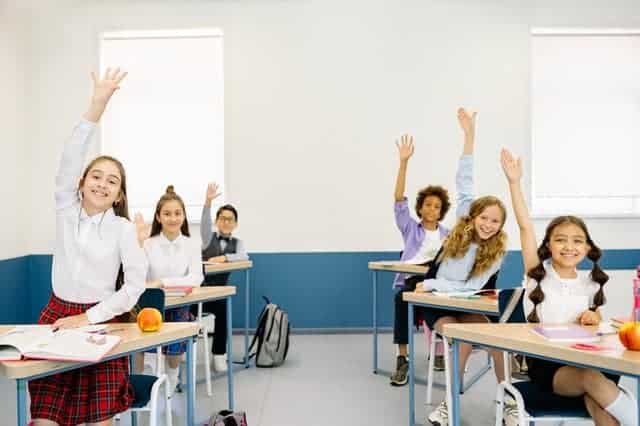
Fear is an influencing factor in developing biases about anyone with a different background than yourself. A powerful tool to help with uncertainty and fear is creating a safe place to talk about hard subjects.
It’s important to talk about prejudice (Harvard). Children sometimes lack the vocabulary to talk about or make decisions about new things they haven’t encountered yet. Supervised conversations in a classroom setting can give children a sense that it’s safe to ask hard questions and that their views matter (Harvard).
In a classroom setting, children can think about questions they might not encounter explicitly in their daily lives. Questions like:
- What does discrimination look like?
- Have you ever been impacted by discrimination?
Conversations about prejudice and discrimination are difficult, but supervised conversation nurtures communication skills–both speaking and listening. Listening is an important step in accepting diverse perspectives.
How to Teach Diversity in the Classroom through Classroom Activities
As mentioned above, when diversity is taught through activities it can be extremely effective. Here are some ideas:
- Say hello each day in various languages
- Serve a snack from different cultures around the world
- Create art inspired by different cultures
(WGU.edu)
Intolerance rests on a foundation of biases gained by both implicit and explicit influences. Addressing prejudices isn’t impossible, but it takes patience and persistence. Learning to accept diversity requires an effort to relearn subconscious biases, some of which we might not know are there. By incorporating more tools for empathizing with and normalizing diverse perspectives and backgrounds, it’s possible to make curricula that aid in teaching children about diversity.
Soul Shoppe provides social emotional learning programs for teachers and parents. Our Respect Differences online curriculum helps children learn about diversity. Click for more information.
You May Also Like:
Conflict Resolution Activities for Kids
Reading social cues is an essential part of being a caring member of society at every age. Sometimes, people learn these cues naturally. In other cases, they must be taught.
Children who struggle with social skills sometimes have trouble picking up on social cues, which can lead them to misunderstand people or situations. For this reason, it’s important to teach children how to read social cues.
Reading social cues can be taught through a series of activities. This article will discuss social cue examples and teaching social cues.
Reading Social Cues
Social Cue Examples
There are four categories of social cues–facial expressions, body language, vocal pitch and tone, and personal space (also referred to as physical boundaries).
Facial Expressions
According to the US National Library of Medicine, “The expressions we see in the faces of others engage a number of different cognitive processes.” For this reason, assigning one’s facial expression to their emotional state and intention helps us make educated choices about how we interact with others.
For example, if a child sees that a classmate is frowning and, as a result, intuits that child is sad, they will take their sadness as a cue, telling them how to interact with their classmate. An empathetic child may ask their friend what’s wrong. A child who enjoys making people laugh may try to cheer their friend up.
Understanding what someone else is feeling helps us know how to best interact with them. If a child doesn’t have this ability, they may act in a way that is perceived as lacking boundaries or being uncaring, when that isn’t the case at all.
Just like facial expressions, body language is an example of a social cue.
Body Language
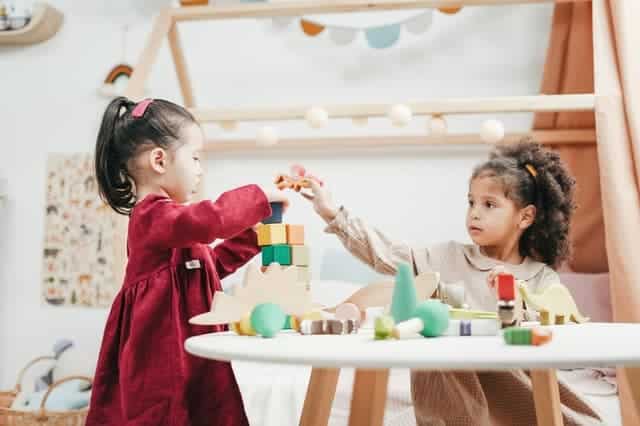
Body language is the science of nonverbal signals such as gestures, facial expressions, and eye gaze that communicate emotions and intentions (Science of People). People use their bodies to communicate all the time. Sometimes we purposely use our body language demonstratively. Other times our body language reveals our internal intentions without our awareness.
When children are good at reading social cues, it gives them confidence socially. When they have difficulty understanding body language, they may feel they are experiencing rejection or encounter confusing situations without knowing how to communicate the experience.
For example, if a group of three classmates is huddled together and speaking in whispered tones with their faces creating a small circle, the cue is clearly that this group needs privacy. If a child steps into the circle and asks, “Do you want to play?” they will likely be rebuffed. In this example, the child did not do anything wrong but may receive a response that makes them feel uncomfortable.
Reading body language is important to social interactions and social-emotional development. Another of these critical social cues is vocal pitch.
Vocal Pitch and Tone
Vocal pitch and tone fall under the category of nonverbal communication. Such communication has been studied extensively in the context of impression formation because people’s opinion about another person is not only based on what a person says (verbal cues) but also to a large extent on visual and vocal cues (Sporer & Schwandt). When children miss social cues reflected in another person’s voice, they may fail to understand the relationship between themselves and another person.
Furthermore, changes in vocal tone can change the meaning behind what someone says. For example, if a teacher asks a student if they completed their homework, a student might say, “Yes, I completed my homework?” in a high-pitched voice and with an upward inflection at the end of the sentence. This vocal cue might alert the teacher that the student did not finish their homework.
When a child misses social cues in terms of vocal pitch, they may take words too literally and end up missing jokes or another child’s intentions.
Vocal pitch is a social cue example, as is personal space.
Personal Space (Or Physical Boundaries)
In general, we tend to move close to those we are interested in knowing further or with whom we are comfortable, and we move away from those with whom we haven’t reached a high level of comfort. When a child misses a personal space social cue, they may stand too close to someone they are just meeting, or they may choose to stand at a great distance, thus sending a confusing signal to a friend.
Identifying personal space is important for children for various reasons–including safety, healthy social interactions, building accurate impressions of others, and feeling a general belonging within their communities.
Teaching Social Cues
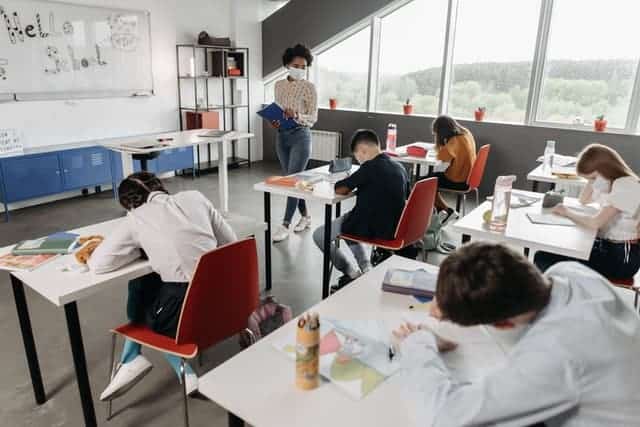
There are several activities teachers and parents can use to teach social cues to the children in their lives. The following three activities were tested over time, and when they’re practiced often, can vastly improve a child’s ability to read social cues.
Reading Social Cues Activities
1. Monkey See, Monkey Do
This activity allows students to practice eye contact and recognize facial expressions. The objective is for students to mirror another person’s facial expressions. For example, you can furrow your brow and frown and have your students imitate you.
Other ideas for expressions or actions include smiling and puckering your lips or winking. Once students have successfully imitated your facial expression, you can ask them how they think you feel when making that face.
2. Emotion Charades
This activity teaches students how to interpret emotions. First, write down what you feel on small pieces of paper. Examples could include happy, angry, frustrated, confused, or sad. Fold the pieces of paper in half and place them in a hat.
Divide the class into two teams. A student from the first team picks a piece of paper from the hat and acts out the word written on the paper. Their teammates have one minute to guess the emotion. If they do, they get one point. The game continues, and a student from the other team picks a word and acts it out. When there are no words left, the game is over. (Study.com)
3. One Word Story
This activity helps students learn to stay on topic during conversations and understand others’ facial expressions during conversations.
Have your students sit in a circle and tell a story one word at a time. For example, the first student might say, “The,” then the second student could say, “boy,” the third could say, “played,” etc. The game’s objective is for the group to tell one cohesive story.
If you are looking for creative and innovative ways to teach children to read social cues, we invite you to reach out to our team!
In addition to working with students, Soul Shoppe supports the entire school community through the creation and facilitation of dynamic programs that give teachers and parents the necessary tools to foster social-emotional learning. Find out more about Soul Shoppe’s social-emotional learning programs, peacemakers certification, and more by contacting us.
You May Also Like:
Teaching is a challenging job. Creating an environment where children can develop comes with a range of obstacles.
As educators, the best-case scenario is to recruit the children, in the long run, to help in their own education. Where it is appropriate, it’s not only valuable to help children take ownership of their own education, it is a mark of successful education.
Self-soothing is a particularly important area to give children tools to take care of themselves. Teachers and parents won’t be present every time a child feels worried or anxious. In the long run, it would not be helpful to a child’s development if they came to rely on the adults in their lives to fix their problems. To ensure balance in development, it’s essential for children to learn how to self-soothe.
Teaching Children How To Self-Soothe
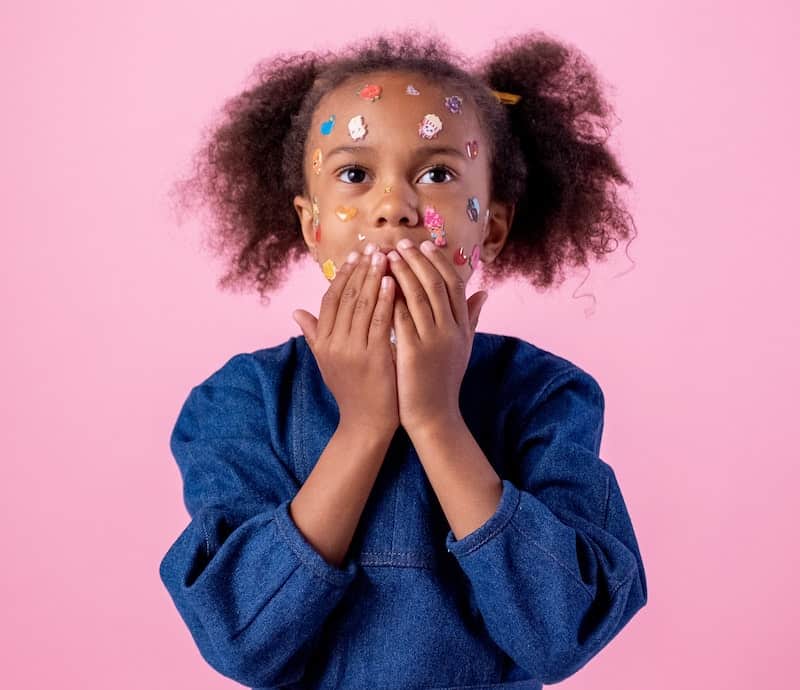
What is Self Soothing?
People instinctively try to soothe their own stress. In children, this instinct to self-soothe can often look like fidgeting. Thumb-sucking, biting fingernails, and sucking on clothes, are all examples of potential self-soothing habits that children sometimes use to help them cope with stressful situations. Children might develop many other habits and behaviors to self-soothe as they grow. As a result, their instinctive behaviors might evolve or change.
Self-soothing can take many forms. Not all of them are clear and external, and not all of them are healthy or helpful. In fact, some children have trouble developing mechanisms for soothing their own stressful emotions. As children age, it becomes more important to teach children how to self-soothe, since some of the behaviors that small children use to self-soothe grow less socially appropriate.
In cases where children have developed potentially unhelpful self-soothing methods, or in situations where they have trouble developing self-soothing strategies of any kind, it might be prudent to teach better self-soothing techniques.
How to Teach an Older Child to Self-Soothe
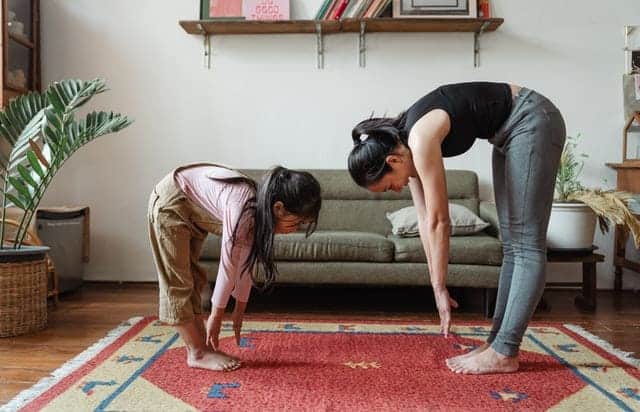
Because coping with stress is the goal of self-soothing, children might instinctively resist learning new or different self-soothing strategies. An attempt to teach alternative self-soothing habits might look to children like taking away their coping mechanisms. As a result, educators must approach teaching new techniques with delicacy.
At the same time, it can be important to help children learn better self-soothing strategies as they grow. Stressors increase as children age. The self-soothing techniques that may have come instinctively to children may grow insufficient as they age.
The self-soothing techniques might also contribute to the stress and anxiety of the child if the technique attracts ridicule from other children. This might end up sabotaging their technique because a child might grow self-conscious about their instinctive technique, try not to use it, and then grow more and more agitated. Therefore, they need to replace the self-soothing technique with another soothing strategy.
When deciding how to teach an older child to self-soothe, there are two stages an educator should go through.
The first stage of teaching a new strategy for self-soothing is identifying any self-soothing techniques a child might already have a habit of using to cope with stress. For example:
- Biting nails
- Thumb sucking
- Picking at cuticles
- Sucking on clothing
- General fidgeting
This is far from an exhaustive list. Educators and parents need to get to know their children’s habits. Once they do, it will become possible to identify which behaviors manifest to cope with stress. Identifying the self-soothing habits adopted by children will also mean gaining an idea of what causes them stress and gives them a need to use self-soothing strategies.
After working with the child to learn more about their self-soothing habits, then it’s possible to help them learn other self-soothing techniques. Some self-soothing techniques that might be useful to suggest include:
- Changing their environment or something about their environment
- Doing some stretches
- Imagining soothing imagery
- Focused breathing or counting breaths
- Butterfly hugs–or the practice of gently patting themself on the chest with their hands crossed and telling themself they are safe
These self-soothing techniques are valuable tools to add to an educator’s or parent’s toolbox. There are a lot of legitimate and valuable self-soothing techniques out there. When deciding how to teach an older child to self-soothe, there are several options. Teaching these techniques prepares them for strong childhood development and long-term success in life.
Soul Shoppe provides social emotional learning programs and can help you learn how to create a safe space in the classroom or at home. Soul Shoppe encourages empathy and emotional awareness in children. Click for more information on SEL Programs for Elementary Schools. Click to learn how to create a peace corner for self-soothing.
You May Also Like:
Conflict Resolution Activities for Kids
How to Teach Empathy to Kids and Teenagers
Confidence-Building Activities for Kids
Making judgment calls as a well-adjusted person of any age requires complicated assessments of the pros and cons behind each choice. It is a process largely informed by life experiences, risk assessments, and desires. In order to create the best possible outcome for children to lead rewarding, successful lives, it’s important to provide them with opportunities to develop strong decision-making skills.
Teaching Decision-Making Skills
Activities that encourage students to practice decision-making should supplement the rest of their education since decision-making skills are part of everyday life. (Harvard). Therefore, decision-making activities for students will constitute an important part of any social-emotional learning curriculum. Activities that encourage students to learn decision-making skills don’t need to be bland. You can even incorporate them into fun games.
Teaching decision-making skills to students will help them navigate challenging opportunities independently in the future. Educators will find it valuable to tailor their teaching activities to their specific students. Here are some ideas to start the process.
Decision-Making Activities for Students
Providing students with opportunities to learn decision-making skills will help with everything else in the classroom. Many decision-making activities for students involve opportunities to learn other important life skills since decision-making is a feature of many experiences. When students improve their decision-making abilities, they are essentially improving their own agency.
Let’s explore some activities that encourage students to practice decision-making skills. They might look like activities with other purposes, but they include valuable tools for students to practice making decisions.
Board Games

Board games are perfect tools for practicing decision-making skills. The more complicated the game, the better. With rules to remember and objectives to plan for, it’s almost like board games were designed as decision-making laboratories. They randomly generate scenarios where children have to weigh options and plan ahead within a set of designated parameters.
Board games are like miniaturized life experiences, including opportunities to make cost-benefit analyses. In board games, children are also faced with decisions concerning each others’ feelings and determinations.
An additional way of using board games to create decision-making opportunities is by asking students to play them in teams. If they play team-focused board games, they are faced with further opportunities to make decisions about cooperation, team building, and how to operate in a community.
Outdoor Games
A surefire way of encouraging children to learn anything is getting them to move around and learn actively. Outdoor games of any kind rest on twin foundations of rules and goals. A structured environment with risks and rewards gives children ample opportunity to practice decision-making.
Team activities, such as kickball or capture the flag, help students practice rapid decision-making while teaching them to see how they affect their group in real-time. Other activities, like Simon Says or Hide-and-Seek, provide opportunities for children to practice some self-aware decision-making, improving their sense of individuality.
Role Playing
Dramatic plays or other role-playing activities are great decision-making learning tools. Even if the role-play scenario is scripted, children are still getting an opportunity to practice imagining the world around them from a perspective beyond their own. Furthermore, whether the situation is scripted or not, students get to imagine the result of decisions they might not make otherwise. Students can even create their own role-playing scenarios with prompts.
Reading
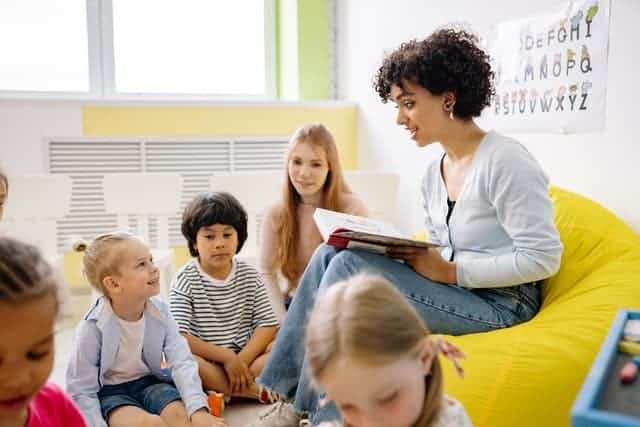
The ultimate tool for engaging a student’s imagination is reading. Books are a perfect tool for students to see decisions play out, good or bad, as well as their consequences. Through the insights of literature, students will be able to have conversations about how and why someone might make certain decisions. As an educator, you can bring decision-making questions to the forefront of discussion.
Friendly Debate
In a moderated setting, debating different perspectives creates chances for students to think critically about the strengths and weaknesses of different courses of action. Students can articulate their own views on a given subject, and evaluate reasons against that view with moderation. This exercise helps students practice weighing the costs and benefits of decisions.
Decision-Making Skills in the Classroom
Creating tools for students to practice making decisions is important. Educators should build intentional environments where their students can hone their decision-making skills in safety. Then they can impress upon students that these skills practiced through games or activities can be implemented outside of the classroom too.
When educators need assistance with building lessons that create decision-making opportunities, Soul Shoppe helps with online SEL programs. Soul Shoppe encourages agency, empathy, conflict resolution, and more. Click for more information on SEL Programs for Elementary Schools or our parent support programs.
You May Also Like:
Confidence-Building Activities For Kids
Conflict Resolution Activities for Kids
Children need to develop Emotional Intelligence for a variety of reasons. It helps them understand their feelings and thoughts about themselves and others, but its effects go much deeper than that. Emotional Intelligence can even have a profound effect on their ability to obtain better job opportunities later in life.
In this article, we will detail what Emotional Intelligence is and explore its benefits. Then we will discuss parenting tips to help children develop this skill.
What is Emotional Intelligence?
Emotional Intelligence, often referred to as EQ, is a psychological theory that measures a person’s ability to recognize, manage, and understand their emotions. It emphasizes an awareness of how our emotions affect our behavior, and learning to manage both.
It is essential that children gain these abilities and awareness in their journey to becoming empathetic, balanced adults who are capable of handling difficult situations. The five main components of one’s EQ are:
- Empathy – The ability to understand the feelings and emotions of others.
- Self awareness – The ability to recognize one’s own emotional state and give an accurate self assessment. This skill is necessary for emotional growth.
- Self regulation – The ability to manage thoughts and emotions, as well as consider long term consequences.
- Internal motivation – Behavior that is driven by intrinsic rewards. This skill helps people attain goals they set and achieve in every area.
- Social Skills – Behaving in ways that are socially acceptable. In addition, knowing how to communicate with others.
Emotional Intelligence comprises a skill set with enormous benefits. With some effort, it can be learned by both children and adults.
Benefits of Teaching Emotional Intelligence
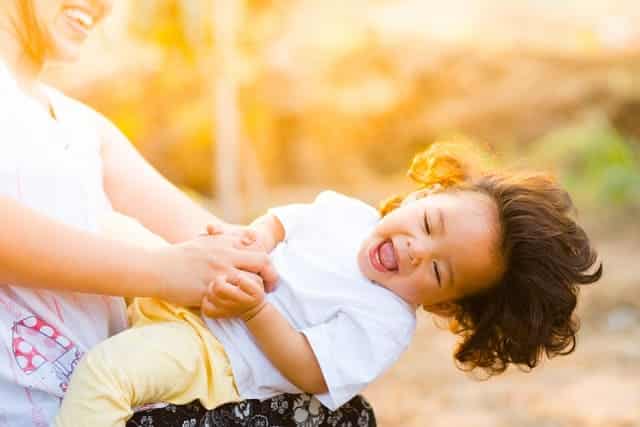
There are many benefits to teaching Emotional Intelligence. Primarily, it helps children perceive, manage, and regulate their own feelings and emotions. Beyond that, it also helps them understand the feelings of others. Together, these give children a lowered risk of depression and other mental illnesses (Stratford).
At the same time, high Emotional Intelligence, also known as an emotional quotient (EQ), allows a student to make better connections with others, which improves their friendships, their ability to work in teams, and their conflict resolution. In fact, people with higher Emotional Intelligence are more likely to get promoted at work and earn better salaries (Latrobe University). A study by the American Journal of Public Health found that students with high EQ were more likely to obtain college degrees (Stratford). For these reasons, teaching EQ gives children a better chance at career success and a better life in general.
Parenting Tips to Raise Emotionally Intelligent Children
Children begin developing their Emotional Intelligence through interaction with their parents or caregivers. Therefore, it is important that parents show children how to successfully manage their emotions. Here are some parenting tips that will help raise your child’s EQ.
- Talk about feelings with your child. Children learn from adults modeling behaviors, and constructively expressing emotions is a healthy practice. Express how you are feeling to your child and allow them to see how to show the feeling in a productive way. For example, tell your child you are happy they are home from school, or you are frustrated that you had to work late. By doing so, you give them the chance to learn how to articulate feelings (Stratford).
- Listen to your child. Listen to the emotions your child expresses, without trying to fix them. Instead, validate their feelings as real even if you don’t understand them (Penn State).
- Recognize moods in the house. Help your child identify moods by asking, “What does it feel like to be in the house now?” Give hints if the child needs them. Gradually, children won’t need hints and will easily express the mood. Try this at different times, such as right before bedtime when it is quiet, or first thing in the morning when it is busy (Stratford).
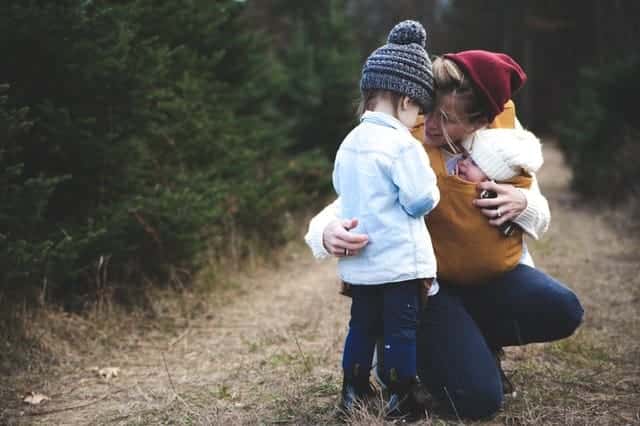
- Model How to Appropriately Express Feelings. It is important that you consistently demonstrate how to express feelings in healthy ways. Children learn early on from their caregivers about what is appropriate when expressing emotions, so begin as soon as possible. Show them that as an adult, you are responsible for how you express your emotions, even during stressful times (Penn State).
- Identify the feelings of others. Encourage children to recognize when others have big feelings. For example, if another child falls down on the playground, ask your child, “How do you think they feel?” Or, while children run happily in the park, ask, “How do you think they feel to be here?” Noticing others’ feelings and how they are like their own is an important part of your child’s developing empathy. (Stratford).
- Label Feelings. Help your child label their feelings and empathize with why they feel that way. This will help them articulate their emotions. Offer words to help them do so, such as, “Do you think you’re feeling confused and disappointed, or just sad?” (Penn State).
- See emotions as a way to connect and teach your child. Children’s emotional episodes should not be viewed as sources of frustration for you. Instead, re-frame them by seeing them as ways to connect and strengthen your relationship. By coaching your child through their tough or poorly timed emotions, your bond grows. And, over time, they will have fewer outbursts. It’s a worthwhile investment to improve both your relationship and their emotional control. (Gottman).
- Help your child solve problems with limits. While all emotions are acceptable, some behaviors are not. Teach your child problem-solving skills to help them cope with big emotions. Also, be clear about how children can express their feelings. While screaming and shouting are not acceptable, expressing sadness and frustration are. Be consistent about your expectations and have patience. Sometimes, having your child set goals with rewards can be helpful. Goals can include special time with parents and caregivers. (Gottman).
Soul Shoppe provides social emotional learning programs, including SEL programs for elementary schools, and programs on Emotional Intelligence, mindfulness, inclusivity, allyship, conflict resolution strategies for students, and more.
You May Also Like:
Self-Control Games & Activities for Parents and Teachers
Embodiment Practices For Kids in Home or At School
Teaching Empathy to Kids and Teenagers
Sources:
Gottman, Latrobe University, Penn State, Sonoma State University, Stratford
While the focus in school is often on literacy and STEM subjects, emotional intelligence is an important part of learning. However, often there isn’t time to focus solely on emotional intelligence when already on a tight schedule. Fortunately, leading by example is one aspect of teaching emotional intelligence, especially the concept of empathy. Teaching empathy to kids is a matter of creating a safe environment for children to express themselves and ask questions. In other words, both teachers and parents can teach empathy through example and daily activities.
What Is Empathy?
Empathy is the ability to understand the thoughts, feelings or experiences of others. It is an action that requires being aware of or being sensitive to other people’s emotions. There are two aspects of empathy: affective empathy and cognitive empathy (UC Berkeley). Affective empathy is when you feel what another person is feeling and mirror them. Cognitive empathy is understanding the emotions of others. In this article, we’ll focus on cognitive empathy.
Empathy is a key ingredient in relationship building. Studies have shown that it helps to reduce prejudices, leads to greater happiness, and even improves health (UC Berkeley).
Teaching Empathy To Kids Through Daily Tasks

Parents or guardians can teach empathy to kids when conducting daily tasks such as catching the bus or when you’re at the store. Pointing out body language and explaining how someone else might be feeling enables young people to begin identifying a world outside their own. It is also important to encourage children to ask questions. When they ask questions, you know they are internalizing your explanations and can start to think for themselves, rather than relying on external guidance.
Mistakes
Teaching empathy to elementary students requires that they are given the opportunity to make mistakes. Younger children learn better from mimicking behavior. Therefore, being patient and allowing them a chance to make errors enables them to adopt this kind of behavior in the future when they are supporting their friends. It will also help them when resolving conflicts of their own. They begin to build a picture that emotions aren’t about expectations and planning, but about reacting to life as in unfurls before them. This will enable them to build healthy relationships with those around them. Especially in cases where the other children and people they come into contact with are different from them.
Listening
It is also crucial that you teach kids empathy by encouraging them to listen. This is not just listening to your explanations, but listening to their own thoughts of feelings and that of others. In these conversations, they have the opportunity to understand differences and develop the ability to put themselves in other people’s shoes. Asking your children to think about their own thoughts and feelings is a starting point. Then they’ll need to apply that to how others may be thinking and feeling. A greater self-awareness develops a deeper understanding of emotions more generally.
How To Teach Empathy To A Teenager

Teenagers are different from younger children as they stop mimicking behavior they learn from their teachers and parents or guardians. Instead, they begin to find their own way. Often these choices can seem like an act of rebellion. However, this is just a matter of trying to figure out the world in their own way. It is vital that you continue to allow teenagers to make mistakes as you would any young person, and that you continue to lead by example. As a role model, you can recall times you have also made mistakes and teach them empathy by practicing it yourself.
At times, you may need to call out behaviors that are inappropriate; more so with teenagers than you would with younger children. However, this should not come as punishment. Instead, you must check and balance their reactions with your own response. Contextualize the situation and create space for them to express themselves freely. By listening and responding accordingly, you are demonstrating empathy in your own actions. So, it is therefore reasonable that you ask them to do the same. This helps them to develop their conflict resolution skills as you aren’t shying away from more difficult conversations. At home or in school, they can practice empathy in a safe environment. Then they can apply this to situations they face in the real world.
Activities To Teach Empathy
There are many ways to actively teach empathy that supplement day-to-day interactions. Empathy activities for kids include stories, role-playing, and even creative writing or art. Here are a few:
Read. According to research, children who read fiction are more likely to understand other people’s emotions and intentions.
Study facial expressions. Children can learn to identify other people’s emotions by studying facial expressions. You can find a variety of worksheets and games online to help children better identify expressions and emotions.
Play games. When children compete in games they are creating a mental model of other people’s intentions and thoughts.
Play music in a group. A recent study showed that playing music together, such as in a band, increases empathy.
Sports. Sports and team activities provide children with knowledge of how others behave and why they behave in the ways they do in conversation with their own. In these instances, it is important to emphasize teamwork and sportsmanship above competition and winning.
Active Imagining. Activities where children are actively imagining situations involving others is another great way to boost empathy.
Check out Soul Shoppe’s Pinterest board for activities on emotional intelligence and empathy. Experience the emotional intelligence online course for children in 4th and 5th grade.
Soul Shoppe creates cultures of compassion, connection and curiosity. We teach social emotional development to children, teachers and professionals across the U.S.
You May Also Like:
Forgiveness is one of the most powerful tools we can teach children, not as a rule they must follow, but as a skill they can develop. Teaching kids forgiveness gives them the emotional tools to move forward after conflict, disappointment, or hurt. When we approach forgiveness not just as a moral directive but as a healing practice, we open the door to empathy, accountability, and growth.
Forgiveness isn’t about forgetting or excusing poor behavior. It’s about helping kids understand how to navigate complicated emotions, restore relationships, and continue building a supportive community. In this post, we’ll explore practical ways to begin teaching forgiveness and offer supportive strategies for what comes next, because forgiveness is only part of the journey.
Why teaching kids forgiveness matters
When a child feels wronged by a classmate, sibling, or even an adult, the emotional fallout can be confusing. They might hold onto resentment or feel unsure about how to respond. That’s where teaching forgiveness activities come into play.
Through object lessons on forgiveness, group discussions, and reflective practices, students begin to see forgiveness not as weakness but as strength. Forgiveness supports:
- Emotional regulation and healing
- Restoring peer connections after conflict
- Reduced classroom tension
- Growth in empathy and accountability
This is especially important in school settings where relationships are constantly forming, shifting, and sometimes breaking. A foundation in social emotional learning gives students the skills to manage these experiences thoughtfully.
Forgiveness is not a one-time event
Many children believe forgiveness means pretending something never happened. But when we take the time to explore how to teach kids forgiveness, we can model that forgiveness is a process—one that involves naming hurt, taking responsibility, and creating space to heal.
Forgiveness also doesn’t guarantee the relationship returns to what it was. And that’s okay. Children can learn to forgive and still set boundaries.
To help students walk through this process, educators can use the Peace Path, a simple yet effective tool that guides students through restorative conversations. It fosters accountability and makes space for forgiveness in an age-appropriate way.
Activities to teach forgiveness in the classroom
Looking for ways to incorporate activities to teach forgiveness into your daily classroom flow? Here are some ideas that gently introduce the concept and help students practice:
1. Forgiveness journal
Have students write about a time they felt hurt. What happened? How did they respond? How would they like to move forward? This activity builds emotional literacy and perspective-taking.
2. “Let it go” balloon activity
Inspired by Soul Shoppe’s Empty Balloon Exercise, students can write a hurt or grudge on a small piece of paper, place it inside a balloon, inflate it, and then pop it as a symbolic release.
3. Forgiveness craft
Create “forgiveness cards” with students—cards they can write when they’re ready to make amends or express forgiveness to a peer. These can be used voluntarily and kept private.
4. Games that teach forgiveness
Conflict resolution games—like role-playing apology and forgiveness scenarios—can help kids practice without the emotional weight of a real disagreement. Explore our full collection of activities through the Peacemaker Training, which gives educators a full toolkit for resolving conflict through empathy and repair.
Examples and scenarios: making forgiveness real
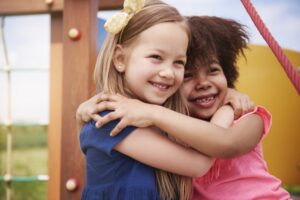
Here are a few forgiveness scenarios students may encounter:
- A friend says something unkind during recess.
- A peer refuses to share supplies during group work.
- Someone excludes them from a game or lunch group.
These may seem minor, but to students, they can feel deeply personal. Teaching forgiveness through real-life situations helps students process and respond in ways that maintain their emotional integrity.
By linking these moments to growth mindset and emotional regulation skills from our Elementary SEL Curriculum, students learn that relationships can mend—and even grow stronger—after rupture.
What happens after forgiveness?
After a child chooses to forgive—or is forgiven—there’s often still emotional residue. They may feel uncertainty, anxiety, or hope. Adults can help by naming this and supporting post-forgiveness healing.
Some things to remind students:
- Forgiveness is not approval of harmful behavior.
- It’s okay to take time before feeling ready.
- Setting boundaries after forgiveness is a healthy next step.
Adults can guide students through these stages using empathy tools, reflective writing, and gentle check-ins. And, of course, by modeling forgiveness in their own interactions.
Supporting forgiveness through Soul Shoppe
Forgiveness becomes more accessible when it’s part of the larger culture of the classroom. At Soul Shoppe, we believe in building schools where compassion and accountability go hand in hand. Our programs support this through:
- Peace Path: A structured framework for conflict resolution.
- Peacemaker Training: SEL-focused training that equips schools with tools to guide peer mediation and peaceful problem-solving.
- Social Emotional Learning: The foundation of our programs, designed to help kids understand emotions, build healthy relationships, and thrive.
By making forgiveness part of daily SEL practice, we prepare students to navigate life’s challenges with grace and connection.
Forgiveness is a skill for life
Teaching kids forgiveness isn’t just about fixing classroom conflicts. It’s about equipping young people with the tools to process hurt, express empathy, and rebuild trust throughout their lives. From a simple forgiveness craft to transformative conflict resolution practices, students thrive when they’re given the chance to understand forgiveness from a place of strength and choice.
With the right support, guidance, and tools like Soul Shoppe’s Peace Path and Peacemaker Training, students become not just more peaceful but more powerful, resilient, and connected.
You May Also Like:
Boundaries Activities for Kids
Teaching Assertiveness vs. Aggressiveness
Teaching Diversity in the Classroom
The importance of teaching kindness to elementary students cannot be overstated. (Harvard) Students rely on two aspects of the classroom to learn valuable life lessons. Overtly, students rely on lessons and planned curriculum. On a more subtle, but no less important level, students learn from interpersonal interactions with their teachers and fellow students.
When it comes to teaching kindness in the classroom, both overt and subtle strategies can come into play. Kindness activities for kids can be incorporated into the curriculum. Furthermore, a general policy promoting kindness through action is important.
Teaching Kindness in the Classroom
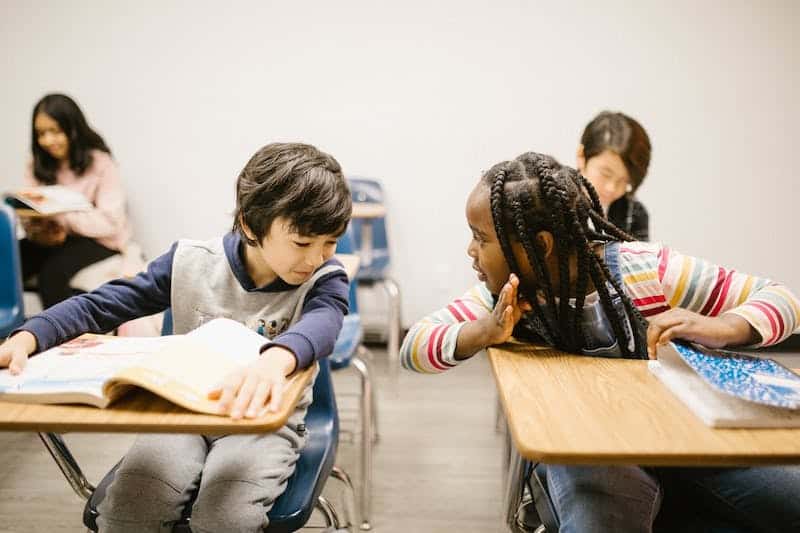
When educators teach kindness, they will need to pay attention to their own behaviors. Since kindness is a learned behavior, children will watch the way their teachers, parents, and fellow students act. Children will also look for cues in their communities to show them how to behave in different social situations. Kids constantly observe and mimic adults. They understand when adults are only saying they value kindness and empathy when in reality, they are making selfish decisions. (Today) Therefore, it’s important to display genuine kindness.
The minds of children are sponges. Everything they see will guide and reinforce their behavioral choices. Here are some recommendations (PBS):
- Model kindness: Think through the regular interactions during a day that students might see (e.g. waiting in line for a drink, borrowing a pencil), and be careful to approach those interactions with kindness.
- Intentionally teach empathy: Whenever possible, incorporate intentional messages of empathy into discussions of social interactions, for example, when addressing conflict in the classroom.
- Celebrate acts of kindness: Rewards help reinforce behaviors. If students learn to associate acts of kindness with positive reinforcement in the classroom, it will help them to learn to associate kindness and positive outcomes.
- Regular meetings: Since kindness is a learned behavior, facilitating opportunities for students to take ownership of their actions reinforces positive behaviors. Educators can incorporate class meetings with regular conversations that prompt students to discuss acts of kindness. This creates a tool for students to encourage each other and reinforces lessons.
- Emphasis on friendship: Children might not all be best friends with one another, but they can learn solidarity and care for one another. Students can learn that communities should watch out for each other and take care of each other. Recognizing that friendship means caring is a valuable lesson for children to help them lead rewarding lives.
Teaching kindness in the classroom has to be approached holistically. Many lessons in kindness will be incidental to behaviors and interactions throughout the day.
Kindness Activities for Kids
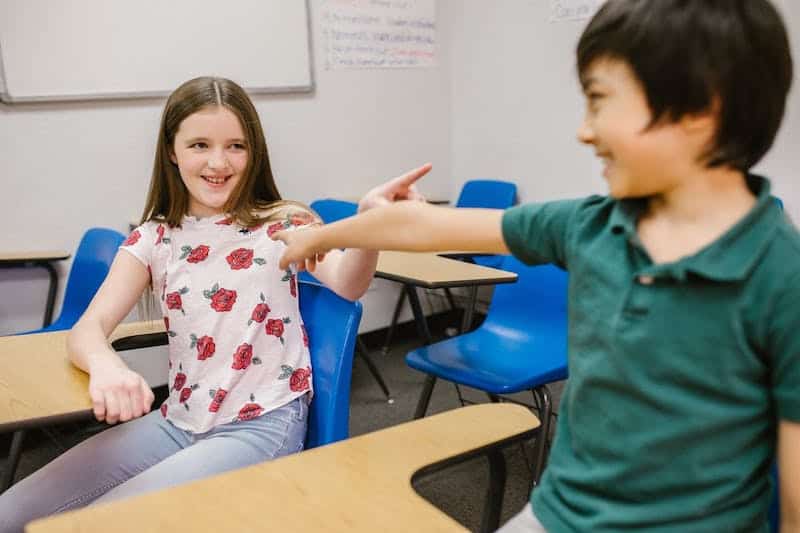
It’s valuable to reinforce lessons learned through interactions with more intentional learning activities.
There are many resources available to educators that promote teaching kindness. Soul Shoppe’s Tools of the Heart is a comprehensive online program that teaches social emotional skills, including kindness, empathy, and connection.
Here are some additional ideas to get you started (NaturesPath):
- Cooperative activities: Activities that require cooperation between students in order to achieve goals provide ample opportunities for children to practice kindness, especially if educators are there to moderate and guide interactions. Activities like outdoor team sports or playing board games on teams put students in situations where they can practice kindness.
- Volunteering opportunities: Field trips to volunteer at animal shelters, homes for the elderly, or food banks give children chances to practice kindness in immersive contexts.
- Write letters to soldiers on active duty. Writing letters to cheer up soldiers who are deployed away from their families and friends promotes writing skills and demonstrates an act of kindness.
- Bake cookies for local heroes: Firefighters, local police departments, EMTs, first responders, nurses, etc. all work long shifts. Bringing them sweets, whether baked or bought, is a simple act of kindness to brighten their days.
- Engage in community fundraising for charity: Students can write letters to local businesses asking them for donations to a specific charity, for example, Rise Against Hunger. This helps students take an active role in raising funds for charities and teaches them to utilize the community resources that are available, rather than just their own means to enact kindness.
- Practice compassion through the power of role play: Create a group assignment where students write and produce a play about an act of kindness. Teaching kindness to kids is powerful when educators guide them in a way that ultimately helps kids teach themselves.
- Reading: There are a lot of books out there about kindness. (ReadBrightly) Never underestimate the power of stories as teaching tools. Find a book list with kindness as its central theme and assign some reading.
When it comes to teaching kindness in the classroom, educators must approach it from an understanding that children learn by both watching and participating. If an educator would like assistance with teaching kindness in the classroom, you can receive help with virtual social learning activities. Soul Shoppe provides social emotional learning programs for children and educators that are available online and in schools.
Soul Shoppe strategies encourage kindness in children. Whether helping in the classroom or assisting parents at home, Soul Shoppe brings kindness to the forefront of the discussion. Click for more information on SEL Programs for Elementary Schools or our parent support programs.
You May Also Like:
When you have respect for someone, you admire them for their abilities, qualities, and achievements. Respect is something that individuals crave. Both inward respect, toward self, and outward respect, toward others are essential in creating thriving environments.
Respect can be taught in an emotionally positive way at home and in a classroom setting.
According to the Stanford Encyclopedia of Philosophy, “Respect has great importance in everyday life.” (Stanford). Respect for oneself and for the community can have a profound determining effect on a child’s development. The Stanford Encyclopedia of Philosophy goes on to say that, “how our lives go depends every bit as much on whether we respect ourselves.” As educators, it’s of high importance to include learning opportunities in curricula that give students tools to learn to respect themselves and their communities.
Teaching respect in the classroom through activities is worth the effort. When children learn to respect differences, it benefits them for the rest of their lives. At Soul Shoppe, we have an entire curriculum available online for grades K-6 that’s dedicated to teaching how to respect differences. Click for more information.
In addition, we’ve put together a list of games to help get you started.
Respect Games for Students
Everybody is Unique (EducationWorld)
This game is appropriate for grades K-8. The basic premise is to create positive emotional relationships with the things that make people different from each other.
Materials:
- Paper
- Art supplies
Method:
- Begin by writing the word “Unique” in some prominent place in your classroom–chalkboard or on a big piece of paper on the wall.
- Students write down positive aspects of other people that are different from themselves. Emphasize choosing unique characteristics that they like.
- Lead a discussion on these unique characteristics. Talk about why differences are important and good.
Compliment Journal (Drake)

For this game, students will systematically get in the habit of using positive language in their interactions and will try to find positive features in other people.
Materials:
- A journal for every student.
Method:
- Every day for a week, students will give a sincere compliment to someone.
- They will create a weekly planner with the provided journal and track their progress.
- Every day they track who they complimented, who complimented them, and how they reacted.
Simon Says “Who are You?” (Education World)
This game encourages students to celebrate their differences and similarities.
Material:
- None
Method:
- Play Simon Says, but form Simon’s Instructions by mentioning some features people sometimes share.
- “Simon says, everyone with long hair, stand up.”
- “Simon says, everyone who likes cats, touch your head.”
What Respect Sounds Like (AliciaOrtega)
The purpose of this game is to encourage children to imagine respectful behaviors in their lives outside the classroom.
Material:
- Flashcards
- Markers
Method:
- Prepare cards ahead of time with words corresponding to respectful human traits and behaviors:
- Saying, “Thank you.”
- Sharing your chips.
- Asking to leave.
- In the classroom, ask your students to sort the flashcards into two piles:
- What respect sounds like.
- What respect looks like.
Respectful Stories (Drake)

Movies and books are good teaching tools if they’re used right. Stories are places where children can interact with hard ideas in a safe environment.
Materials:
- A book or half-hour TV show
- Notebook and pencil (optional, but useful for keeping discussion organized)
Method:
- Watch the show or read the book with the students.
- Take notes during the show or book.
- After watching the show or reading the book, have an organized discussion.
- Ask, “who was respectful?” “Who wasn’t respectful?”
Respectful Vocabulary (Drake)
Understanding more words about a subject helps students comprehend and use the lessons to a higher degree. In this game, students will learn synonyms for and terms related to “respect.”
Materials:
- Dictionary
- Construction paper
- Markers
Method:
- All students look up the word “respect” in a dictionary.
- They will find at least ten synonyms or terms related to the word “respect” or “respectful.”
- Everyone writes down the terms they’ve looked up on strips of construction paper.
- Now make a chain from all the strips. Celebrate every foot in length the chain accumulates.
Teaching Respect in the Classroom
This is far from an exhaustive list of respect activities for elementary students that educators might incorporate into curricula. Games like these take time, but they engage students on multiple levels and encourage them to internalize ideas and practices encouraging respect in and outside of the classroom. These activities can also be used by parents when homeschooling.
Teaching respect helps to promote cooperation and acceptance. The classroom is the place that children associate with learning important lessons to prepare them for success in life. Therefore, it’s the perfect place to incorporate activities on respect.
Soul Shoppe provides social emotional learning programs. For more than twenty years they’ve been devoted to creating tools and empowering educators of all stripes to incorporate emotional intelligence into their curricula. Their strategies are effective in encouraging empathy and emotional awareness in children. Click for more information on SEL Programs for Elementary Schools. Click here for the respect differences online program.
You May Also Like:
Conflict Resolution Activities for Kids
Virtual Social Learning Activities
How to Teach a Child to Take Responsibility for Their Action
How To Teach Empathy To Kids and Teenagers
How To Express Your Feelings in Words
|
We made it to June, and the end of another school year is here! In these busy days before we launch into summer, there seems to be an endless list of work to be done, meetings and events to attend, and people wanting to have important conversations. When we are pressed for time, our communication may not be at its best. Miscommunications and misunderstandings happen. We move so fast that it’s a challenge to think about what we are feeling and what we really need from others. It’s even a bigger challenge to take the time express these thoughts and feelings to someone to get clarification and, ultimately, connection. At Soul Shoppe we use a tool to help us express our feelings and needs in a way that helps us keep our relationships healthy. It supports us to be heard so there can be more understanding with the people in our lives. Too often we don’t take the time to identify the words needed to share our true feelings about an experience. That can lead to resentment, unexpressed hurt, sadness or anger — and these feelings create a wall of separation between ourselves and the people we care about.
Welcome to the I-Message. The I-Message tool consists of four steps, each with its own small risk, where you have to get a little bit vulnerable and do things slightly differently in order to build stronger connections –both to ourselves and to others. I feel … (usually a feeling word) And here’s how it might work in real life. We recently talked with a person who was having some challenging feelings with their spouse. They were upset that their spouse was sitting on the couch doing nothing. Initially, what they wanted to say was, “Will you get off the couch?!?” in a voice filled with attitude and accusation. We asked this person to talk more about what they were really feeling and what they needed, and they shared that they wanted connection. With that in mind, they created this I-Message: I feel lonely Imagine that request came to you. Would you be receptive to that message and open to building connection? Probably. Entering into this process is about taking responsibility for ourselves. When we own what we feel and ask for what we need, we empower ourselves without disempowering someone else. That’s so much better than getting surprised by what we are feeling and not getting what we need! We invite you to try out the I-Message the next time you feel yourself in a reaction. Take a step back and pause to notice and name what you are feeling. What happened just before the feeling? What do you need now? Then put it in the frame of an I-Message and say it to someone. Notice the response you get and how connection opens up. Most of all, notice the difference you feel within yourself. Every time we take the time to get in touch with our own feelings and have the courage to voice our needs, we take a step closer to creating the connected, loving relationships we want in our lives. |
Spotlight on a Champion
Got Soul Shoppe?
Scheduling Now for the 2018-19 School Year
Are you thinking about bringing Soul Shoppe’s award winning programs to your school? Get in touch! Contact us for more information or to book for the 2018-19 school year. Find out what others have to say about the impact our programs have had.
Dear Wonderful Peacemakers,
Hello!! Missing you all!! Thinking of you, and hoping you and your loved ones are all well and safe at home.
• Normally at this time of year, you would be having your End-of-Year Peacemaker Party with your Principal and Peacemaker Liaisons. Since that is not possible this time, we Peacemaker Trainers have a little something for you, by video instead. Whether you had Dara, Arek or Jill as your Peacemaker Trainer this year, all three of our vidoes are for ALL of you, below…and your entire family, too! 🙂
Arek shares stories and useful home practices for CHECKING IN WITH FAMILY, to help everyone get along wonderfully well.
Jill and some adorable friends share the benefits of DROPPING YOUR STORY, to help people (and puppets!) get back to peace and fun at home.
Before you watch the next video, grab some paper and things to draw and color with! Dara shows how to make your very own PEACEMAKER CELEBRATION CERTIFICATE, plus how to set up a Peacemaking Station or Peace Corner for the whole family to use and enjoy.
Whatever grade you are in, whatever peacemaking you have done, and whatever peace you continue to bring into the world, we are so proud of each and every one of you. You have worked so hard, with so much courage, dedication and love. You make this world a more beautiful, happy and peace-filled place for everyone.
Thank you, Peacemakers!!!!!
A positive teacher-student relationship is the cornerstone of a supportive and effective learning environment. When teachers and students connect meaningfully, it fosters trust, mutual respect, and open communication. These relationships create a foundation where students feel safe, valued, and empowered to succeed both academically and emotionally.
This article will explore the importance of teacher-student relationships, the key elements of a strong teacher-and-student relationship, and actionable strategies to build inclusive and safe spaces that nurture these bonds.
Why Positive Teacher-Student Relationships Matter
The importance of teacher-student relationships goes beyond classroom performance. Research shows that students who have strong connections with their teachers are more likely to engage in their learning, show improved behavior, and experience better emotional well-being. A meaningful student and teacher relationship contributes to:
- Increased Academic Engagement: Students are more motivated to participate in their education when they feel supported and understood by their teachers.
- Improved Emotional Well-Being: Strong relationships provide students with a sense of security and belonging, reducing anxiety and stress.
- Better Social Skills: Teachers can model and reinforce respectful communication, collaboration, and empathy, shaping how students interact with their peers.
Creating Safe and Inclusive Spaces
Building a positive teacher-student relationship begins with creating safe, inclusive environments where all students feel welcomed and respected. Teachers can do this by fostering diversity, promoting anti-bullying initiatives, and integrating social-emotional learning (SEL) into their classrooms.
1. Addressing Bullying and Promoting Kindness
Anti-bullying programs, such as Soul Shoppe’s Free to Be Online Course, empower students and teachers to recognize and respond to bullying behaviors. By actively addressing bullying, teachers demonstrate their commitment to creating a safe and compassionate environment.
2. Embracing Diversity and Respecting Differences
A classroom that celebrates diversity strengthens the teacher-student relationship by ensuring every student feels seen and valued. Soul Shoppe’s Respect Differences Program equips educators with tools to teach empathy, acceptance, and respect for cultural differences.
3. Integrating Social Emotional Learning
SEL programs, like Soul Shoppe’s Tools of the Heart Online Course, provide teachers with strategies to enhance emotional intelligence, empathy, and communication skills in students. These skills are essential for cultivating healthy teacher-student relationships and supporting students’ overall growth.
Key Elements of a Positive Teacher-Student Relationship
 To build a positive teacher-student relationship, educators can focus on the following key elements:
To build a positive teacher-student relationship, educators can focus on the following key elements:
- Mutual Respect: Show students their voices matter by listening actively and validating their experiences. This reinforces the importance of teacher-student relationships built on trust and mutual understanding.
- Consistent Communication: Open lines of communication help students feel comfortable expressing their thoughts, concerns, and ideas.
- Empathy and Understanding: Take the time to understand students’ backgrounds, strengths, and challenges. Empathy fosters stronger connections and reduces barriers to learning.
- Positive Reinforcement: Acknowledge students’ efforts and celebrate their achievements to build confidence and a sense of belonging.
Practical Strategies for Building Positive Teacher-Student Relationships
- Start Each Day with Connection: Greet students warmly, ask how they’re feeling, and create an inviting atmosphere that promotes open communication.
- Personalize Learning Experiences: Tailor lessons and interactions to meet individual students’ needs and interests. This shows students that you care about their success.
- Use Collaborative Activities: Encourage teamwork and peer learning to foster camaraderie among students while strengthening the teacher-student relationship.
- Encourage Student Voices: Involve students in decision-making and provide opportunities for them to express their ideas and opinions.
The Lasting Impact of Teacher-Student Relationships
When educators invest in building positive teacher-student relationships, the benefits extend far beyond the classroom. Students carry the lessons of respect, empathy, and effective communication into their future relationships and communities. Strong student and teacher relationships can transform a classroom into a place of inspiration, growth, and lifelong learning.
By prioritizing the importance of teacher-student relationships and creating inclusive spaces, teachers play a vital role in shaping well-rounded, confident, and compassionate individuals.
Build Stronger Connections with Soul Shoppe
Soul Shoppe’s innovative programs provide educators with the tools to create safe and inclusive environments that strengthen teacher and student relationships. Explore the Free to Be, Respect Differences, and Tools of the Heart curriculums to equip your classroom with resources that foster meaningful relationships and emotional well-being.
Let’s work together to create classrooms where teachers and students thrive.
You May Also Like:
“The things that make me different are the things that make me.” – Winnie The Pooh
_________________
We’re all different in our own unique ways. We have different appearances, talents, and abilities. We all think, feel, behave, and believe differently. That’s what makes life so interesting!
Sometimes we celebrate these differences. We heap praise on people like Steve Jobs, Serena Williams, and Greta Thunberg who break the mold and challenge the status quo. But sometimes we exclude, judge, or disparage people because we think they aren’t like us.
At Soul Shoppe, we show kids that if we just take the time to look beneath the surface, we’ll find that we have a lot more in common than we think. But how do we learn to really see beyond our outer appearances and get to know someone for what’s inside?

We can play the Same Same Different Game.
Last week, over 350 students joined us to play what we call the Same Same Different Game! How does it work? Well, we asked kids to look at two different people –me and our big-hearted facilitator Arek – and describe the differences and similarities they saw.
They pointed out that I’m a girl and Arek is a boy. They noted that we both have dark hair, though mine’s long and his is short. But our gender and our hair don’t make us who we are! There’s so much more that makes us unique, and these young people know it. They understand how to find the things we all have in common, whether it’s a love of dancing or a distaste for brussel sprouts.
But learning to appreciate and honor our differences takes practice. That’s why we created Respect Differences.
Respect Differences is an online course designed to teach K-6th grade kids how to recognize and appreciate all the things that make us unique. In this on-demand course, kids are guided through lessons that will help them build up their self-esteem so that they can show more empathy toward people with ideas, appearances, likes, and dislikes different from their own.
We show kids how they can play the Same Same Different Game to celebrate differences all the time. Visit our website and learn more. Or, you can click the button below.
You May Also Like:
| Soul Shoppe has been working hard to adapt to this “new normal” so we can continue providing your kids with the tools to thrive, even in the face of profound challenges. As a result, we’re proud to announce our first entirely digital course. Tools of the Heart combines breathing techniques, sharing exercises, art projects, and interactive videos to teach kids problem-solving and communications skills they can actually use in their everyday lives, whether they’re in the classroom or at home. This course was specifically designed by our SEL experts to help kids overcome isolation and strengthen their relationships in these challenging times. So far, the results speak for themselves! If you haven’t had a chance to test it out yet, we urge you to check out the free demo and learn more about how social emotional learning can empower your kid to share courageously and listen with compassion. Here’s what one parent had to say about our online classes last Spring: “Your online classes are a godsend right now as we find our way through educating our children at home. Thank you for doing this! My son is 9. [Soul Shoppe] is his FAVORITE thing to do EVERY DAY since you started. He LOVES it. He is literally peacemaking for our family. THANKS.” |
For some kids, classrooms might be the only safe place they know. Unfortunately, some children have had traumatic experiences in their past, and some are experiencing trauma at home in the present. According to the US Department of Veterans Affairs, somewhere between 14% and 43% of all children live through traumatic experiences, and between 1% and 15% of those children develop PTSD. (USDVA) Children can suffer psychological, physical, or sexual abuse; although most traumatic experiences children live through relate to neglect. (USDVA) Trauma-informed teaching strategies will prepare educators to build classroom environments that nurture and welcome all children.
Trauma-Informed Teaching Strategie
Repairing trauma is a lengthy process, and generally, it requires attention from specialists in order to treat its effects. That being said, it is of the utmost importance for educators to create classroom environments that provide a sense of safety and security to students of all ages. (Harvard)
Creating a trauma-sensitive classroom checklist and gathering trauma-informed teaching resources will help educators to design strategies and classroom activities. These strategies will need to be adapted to the specific needs of each classroom. However, there are some trauma-informed teaching strategies that will help educators to develop trauma-informed curricula for their classrooms.
Trauma-Sensitive Classroom Checklist
It’s impossible to plan for every possible trigger that might affect a child who is coping with a traumatic experience. However, it is possible to prepare teachers and faculty to notice the signs of trauma and cultivate a classroom environment that students experience as a safe place.
One effective tool in adopting trauma-informed teaching strategies is developing a trauma-sensitive classroom checklist. Examples of these trauma-sensitive checklists vary for the practical reason that different classrooms have different needs.
Here are some approaches worth considering in developing a trauma-sensitive environment:
- Communicate expectations of students in clear terms and in a positive tone. For example, saying “Please walk,” instead of “Don’t run.”
- Foster an environment where individual student strengths are encouraged and rewarded.
- Structure activities in a predictable and safe way.
- Provide opportunities for students to practice emotional regulation and modulation. Examples include using Soul Shoppe’s Stop & Breathe technique or Emptying Emotional Balloons exercises.
- Create positive feedback policies for good behavior.
- Review lessons and ensure they account for multiple learning styles.
- Design activities that provide students with opportunities to practice effective community interaction.
- Design activities that provide students with opportunities to practice effective planning and see how their plans can come to fruition.
When developing trauma-informed policy at your school, here are a few things to consider:
- Leadership, faculty, teachers, etc. should adopt a strategy to implement a trauma-sensitive action plan.
- Include clearly communicated expectations of predictably safe environments accommodating transition and sensory needs.
- Encourage educators to assess the effect of trauma as a learning obstacle and adjust curricula accordingly.
- Adopt balanced discipline strategies that include trauma in measuring accountability.
- Assess the support available to teachers and educators, e.g., on-staff counselors or off-campus counseling services.
- Are there channels for confidential discussions about students?
- Ensure the creation of protocols and procedures for cooperating with safety planning, including court orders and confidential transfer and storage of records.
There is a lot to consider when designing a trauma-sensitive plan. However, creating this kind of checklist is a strong tool in developing trauma-informed teaching strategies and programs. So, while there is a lot to take into account, it’s an important effort in fostering a safe learning environment.
Trauma-Informed Teaching Activities

Implementing classroom activities is a powerful way to reach students. Developing trauma-informed teaching activities is a great way to help students who are coping with trauma.
Here are a few suggestions to get started:
- Schedule classroom circle or community discussion time to build relationships, and strengthen classroom culture.
- Share affirmation statements and then engage in positive discussion. This creates a space for students to talk about themselves and about other people in a positive way. A variation on this is the compliment circle where students sit in a circle and find things to compliment each other about.
- Journaling can be a powerful tool for students to develop self-awareness. Provide students with opportunities to write down their thoughts with writing prompts.
- Relationship-building activities, such as playing board games and working as a team, are powerful ways to give students the opportunity to practice emotional learning.
These are just a few to get educators started. There are a lot of trauma-informed teaching resources available. Soul Shoppe provides social emotional learning programs in the classroom and at home. Soul Shoppe encourages safe places and emotional growth for children. Click for information about SEL Programs for Elementary Schools.
You May Also Like:
Conflict Resolution Activities for Kids
How to Teach Empathy to Kids and Teenagers
Confidence-Building Activities for Kids
Teaching Kindness in the Classroom
In a recent blog, we talked about using trauma-informed teaching strategies to foster a safe learning environment for all students. The unfortunate fact is that some children have past or current trauma that they’re dealing with. (USDVA) Since it’s not always possible to know which students have a traumatic experience in their backgrounds, especially when they are new to a class, educators just have to assume that they will have some students dealing with trauma in their classes. (CDC)
It might not always be possible to prepare for individual cases of trauma, but it is possible to incorporate trauma-informed activities for students into a lesson plan. Trauma-informed lesson plans help students recognize their classrooms as safe places to learn and ask questions. Educators are a large part of a child’s developmental process. With a deft understanding of the realities of recovering from trauma, a teacher can be part of a child’s healing process. (GSE)
Take a look at this overview of a few trauma-informed activities for students.
Trauma-Informed Activities for Students
Trauma-Informed Icebreakers
For a lot of kids, trauma has the most pronounced effect on their ability to integrate socially. (SDLab)
Trauma-informed icebreakers have a twofold positive impact on the lives of students.
Firstly, effective trauma-informed icebreakers provide a more comfortable way for students to be welcomed into a classroom.
Secondly, in the long run, using trauma-informed icebreakers will provide children with tools to carry into their later lives. Children with trauma in their backgrounds will be prepared with effective icebreakers to use in future social interactions. Additionally, children without trauma in their backgrounds will be better prepared for interactions with people coping with traumatic experiences in the future.
There’s been a lot of ink spilled on the subject of icebreakers and there are many resources available to help design them. (IQA) However, ensuring icebreakers are trauma-informed requires one more layer of review.
Approach creating icebreakers with these five things in mind:
- Encourage positive relationships.
- Create a safe and welcoming physical space.
- Use positive priming, i.e., set the tone.
- Identify and encourage character strengths.
- Encourage resilience with affirmative language tactics–I can do this, I am capable of this, etc.
Creating trauma-informed icebreakers with these things in mind will help prepare children for new social experiences.
A great example of this is Beach Ball Bonding. (SCS) This is where you toss the beach ball around the room and the person who catches it shares something about themselves. For younger children, prompts can be as simple as “What’s your favorite candy?” For older students, you might ask social-emotional questions like, “What do you do to calm yourself when you’re upset?” Or, “Tell us about something you’d like to see improved in the school.”
Circles: Compliment, Affirmation Language, and Community
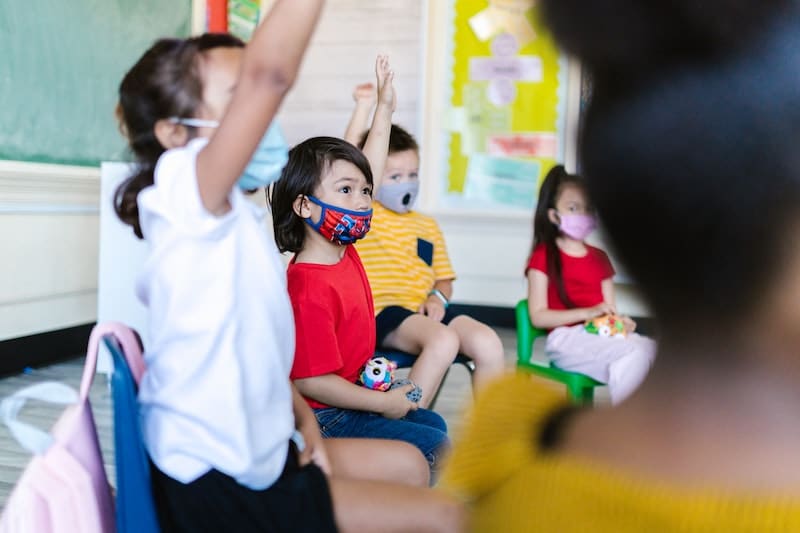
Mediated conversations where all students get to participate in a subject with positive intent help to create a safe sense of belonging among all students. Particularly students with trauma in their backgrounds who may find it difficult to feel at ease in a group setting.
In the pursuit of creating a safe and nurturing environment for all students, but particularly for those students with traumatic experiences in their backgrounds, it might prove valuable to incorporate classroom conversations. (KickBoard) Some examples include:
- Compliment circles. Everyone in class gets a chance to pay a compliment to everyone else in the class.
- Affirmation language circles. Everyone gets a chance to say something affirming or encouraging about everyone in the class, for example, that they are capable of overcoming something challenging.
- Community circles. Everyone in class gets a chance to exchange something that builds community, for example finding things they have in common that they might not have known they shared.
Conversations like this can go a long way toward making all students feel like the classroom is a safe and inclusive place.
Journaling
Sometimes writing down thoughts feels less intimidating than talking about them out loud. When children have intense emotions, such as those related to trauma, sometimes ensuring they have quiet time to journal helps with self-soothing.
Reading
In many cases, books can create opportunities for children to think about difficult subjects in a safer way than other activities. Books can lay out the realities of a tough emotional state in a way that makes it possible to consider that state and its repercussions constructively.
There are a lot of trauma-informed reading materials out there, including teaching resources and books appropriate for students to read. (Lee&Low) Incorporating titles from a trauma-informed reading list into school curricula creates a tool for dialogue. Children might not always know what questions to ask, or they might not know how to describe the context of their questions. However, books can inspire questions, sometimes unexpected ones. They also create a context for a focused and productive conversation.
Other Trauma-Informed Tools

Students can inform educators about how they are feeling and what they need each day with a feelings and needs poster. They simply refer to the poster by writing down one of their feelings and needs at the beginning of the day. Younger students can tap the poster to show the teacher, instead of writing it down. Order the feelings poster here.
Additionally, it’s helpful to have a corner where students can go when they are feeling overwhelmed or just need time away. A peace corner is a place where students can empty their emotional balloons. Click here to find out how to build a peace corner.
Safe, Positive, and Encouraging Lesson Plans
Creating trauma-informed activities for students should include encouraging positive relationships and developing a safe environment. Teachers can set the tone in their classrooms by identifying strengths and by encouraging resilience through positive language–you can do it!
At Soul Shoppe we provide social emotional learning programs. Click for information about SEL Programs for Elementary Schools.
You May Also Like:
Trauma-Informed Teaching Strategies
Coming off a year when classes were largely online, the need for social learning is at an all time high. Online learning has created obstacles for many families. Several parents are left needing to provide some form of home education on top of distance or remote learning for their kids, especially if they have children who need more attention in the classroom already.
So, how can students learn social skills online or in the home? There are many virtual social learning activities that can help students refine their social skills while staying remote. These practices can be modified to fit the needs of any age group and are easy for students, teachers, or parents to participate in. Here are four social-emotional learning activities that can be done from home:
Virtual Social Learning Activities
1. Find A Penpal
A fun way to get students socially involved in others’ lives while staying at home is connecting with a penpal. Some schools and communities have sponsored programs that safely and securely connect students (with parental consent) to penpals around the same age. If your community doesn’t have a program like this, you could ask your student to make a list of friends or family members they want to try to write to. It is important that students do not contact strangers or give out personal information for safety reasons. Fortunately, there are many penpal connection sites, but ensuring your student uses one through a trustworthy program (like a school or government agency) is key for this virtual social learning activity.
Having a penpal not only helps with writing and grammar skills, but also builds social skills. It also helps them learn about another community or culture. Writing is a fun way to practice socializing from afar.

2. Word and Image Association Games
Games designed to build associations between different situations and the emotions they involve have been used by K-12 teachers for decades. There are a few different ways to put them into practice. All forms of these exercises will help students pick up on social and emotional cues from themselves and the people around them.
The most commonly used method involves showing a student an image of a face and asking them to name the emotion the face is expressing. For example, a smiling face might be labeled as “happy” or “excited.” Check our Pinterest boards for social learning worksheets! Once the student becomes comfortable with that portion of the exercise, move on to asking the student how they would express certain emotions. As an example, a teacher or parent could say the word “worried” and see what facial expressions and body language the student expresses. These types of exercises are helpful in regulating social-emotional awareness.
3. Decision Making Scenarios
A step up from the word and image association game are decision making scenarios. These exercises involve having students decide what the morally right thing to do is in a given scenario. Teachers or parents can read the scenario out loud and then ask the student what the “right thing to do” is. Typically, the scenarios in question involve moral decisions such as returning lost items, reporting dangerous situations, and not giving into peer pressure.
To take this a step further, give students scenarios in which someone did something wrong. Then they answer the question “how should the antagonist in this scenario apologize to that person?” or “how could this person voice their feelings to the person that hurt them?”. I Message is a great tool for this. Virtual social learning activities like these give students the opportunity to recognize and practice navigating through challenging social interactions they will likely encounter at some point in their lives.
4. Writing Prompts About Emotions
One of the more common virtual social learning activities practiced is writing. Some behavioral specialists call this method “tracking and unpacking”. It entails writing about one’s emotions as they come up and then taking an inventory of them later. Ask students to turn their feelings into creative projects like songs, poems, or stories for additional excitement. But, if your student prefers traditional journaling, that works just as well and is potentially more straightforward of an approach.
5. Play Social Skill Games Online
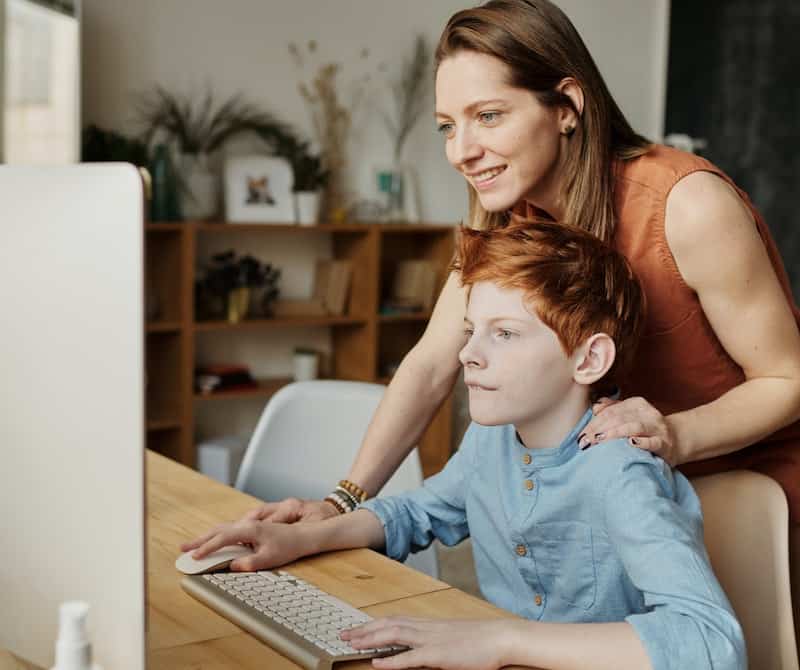
There are websites that will provide social skills games when you sign up. However, you could also facilitate group time with video chat through platforms like Zoom to connect to friends and family. Plan social skill games for these times. One easy game that will encourage social behavior, is to throw ideas the student enjoys talking about in a cup and draw them at random to have all participants engage in conversation about the chosen topic. The topic could be anything from a place they like to go, to games they like to play, etc. Be as specific as possible with the topic such as Minecraft, Harry Potter, etc. to encourage detailed discussions and reciprocity.
There are so many virtual social learning activities to try. One of these is bound to help your student thrive.
Organizations That Can Help With Social Learning
Soul Shoppe has been recognized by many educational institutions for bringing students together and effectively training them in social and emotional intelligence. From in-person assemblies and workshops with students of all ages to online learning, staff members are trained in “activating empathy” and encouraging social positivity among students of all walks of life. Soul Shoppe uses research-based and psychologically-backed models of learning to “integrate more love” into everyone’s social inventory.
Programs You May Like:
Social Emotional Learning for Elementary
Articles You May Like:
Last month we took some time to share appreciation and gratitude for educators everywhere with our first ever virtual event. If you were on call, you know how surprisingly connected we all felt thanks to Adorable’s guided meditation and the musical talent of our special guest,
We also learned how to empty our over-full balloons. There is so much happening in the world, in our classrooms, and in our homes that sometimes we can forget to take a breath. Having a chance to just slow down and feel, then share our feelings was a powerful and healing experience.
Thank you to those of you that joined us, and if you didn’t have the chance to participate, you can watch our recap video here.
SOUL SHOPPE IS HIRING!
Earn $200/session while making an impact in the lives of parents and their kids.
Soul Shoppe is an award-winning Oakland-based program that delivers live workshops and trainings to elementary schools throughout the Bay Area and beyond. Our in-school programs focus on developing students’ social-emotional skills, bullying prevention strategies and peace-building tools. Our Parent Nights bring the fundamentals of our programs empowering parents with more empathy and better communication skills. We are looking to fill Parent Night facilitator/trainer positions for the 2018-19 school year.
Parent Night Workshop Facilitator Job Description
● PN trainers facilitate 60-90 minute sessions teaching core communication and empathy skills for children aged 5-12. Groups range from 20 – 100.
● PN trainers need to learn the script/flow for the evening, basics of Soul Shoppe programs/core skills, and must be able to engage large audiences with warmth, compassion and fun!
● Teaching, training, educational and/or performance experience a plus
● Must have a car and be able to travel to different schools sites in the morning or evening.
● Must be available to train for up to 10 hours in August 2018 (we’ll create training based on your availability) and attend group audition/interview on August 14th from 6-8:30pm.
All Soul Shoppe facilitators work part time, 1-2 trainings per week (Sept-May). The bulk of parent evenings happen September to December. We train facilitators thoroughly in August to prepare for the school year. Facilitators are assigned to specific schools based on school needs and location and have a special relationship with each school they serve throughout the Bay Area.
Learn more at http://www.soulshoppe.com/
Stand & Deliver (group interviews/auditions) Tuesday, August 14, 6pm-8:30pm at our office in Oakland.
NEXT STEPS: By Thursday, AUGUST 9, 2018 Send your resume and cover letter to: amy@soulshoppe.com
Include in cover letter:
1. Why this position speaks to you 2. Your experience with facilitating either communication skills or empathy building skills 3. Your experience with elementary school parents and kids
Most adults understand that gratitude is more than saying thank you when receiving a gift or compliment. Gratitude is an attitude of the heart.
Some parents may ask, “What is gratitude for kids?” It’s one thing to teach children to say thank you–express gratitude–and it’s another to live with an attitude of gratitude.
This article will discuss how to teach gratitude to kids. We’ll also share some great gratitude activities for kids.
What Is Gratitude For Kids?
When some of our team members were on-site at a school just before the pandemic hit, they discussed gratitude with a group of children. One child said, “Gratitude means you’re happy when your parents give you something.” The team smiled at the child and used their response to discuss further.
Webster’s dictionary defines gratitude as “A feeling of appreciation or thanks.” Children experience feelings–or attitudes–of thanks many times throughout their days. When a teacher calls on them in class–thus expressing an interest in their thoughts–or when a classmate compliments them. Other instances can include when someone lets them borrow a pencil, or someone else plays nicely with them at recess.
All these examples help children connect the idea of gratitude to the feeling of thanks.
When we talk about what gratitude is for kids, we need to remember not to focus on material goods but on the actions of others and whatever provision we have in our lives.
A child in one of our online sessions explained gratitude this way, “It is how I felt when my mom smiled at me when I was nice to my sister.” At 9-years old, this child expressed a social-emotional response that led to them feeling warm and accepted.
Another student in high school described gratitude as “Recognizing the fact that someone else truly sees me.” This response indicates a more developed understanding of the complex nature of feelings and interpersonal relationships. It also describes an internal response to an outward stimulus.
We share these examples, in particular, to highlight the fact that how you explain gratitude to a child will vary in terms of their ages. Fortunately, most children have experienced this and therefore, can relate to definitions of the words and actions that exemplify what it feels like internally.
The children’s entertainment organization PBS reminds us that children imitate the adults in their lives. To that end, we can show children what gratitude looks like when we consistently thank others for both big and small acts of kindness.
PBS writes, “Encourage your child to follow suit. When you write a thank you note to someone they know, let them add a picture or dictate a few words. As they get older, encourage them to write their own thank you cards or make thank you gifts for people who have touched their lives, such as teachers, coaches, or community helpers.” Showing gratitude in front of your children and then involving them in expressions of appreciation helps them make the connections between what gratitude looks like and how it feels.
There are several activities teachers can use in their classrooms, and parents can use at home to teach gratitude to kids.
Gratitude Activities for Kids
These activities can bring gratitude to life and help kids celebrate the positive feelings associated with such a fantastic attitude!
Each of the following gratitude activities for kids can be modified to your child’s level of development.
Create a Gratitude Jar
All you need to create a gratitude jar is a large clear container, a stack of sticky notes, and a pen (or brightly colored markers if you’re feeling creative).
Each evening, invite everyone in the family to write or draw something they are grateful for. They can depict something that happened that day or a mainstay in their lives, such as their pet, a favorite food, or a special friend. On Fridays, read the gratitude notes as a family and celebrate each one with smiles, applause, etc.
Create a Gratitude Vision Board
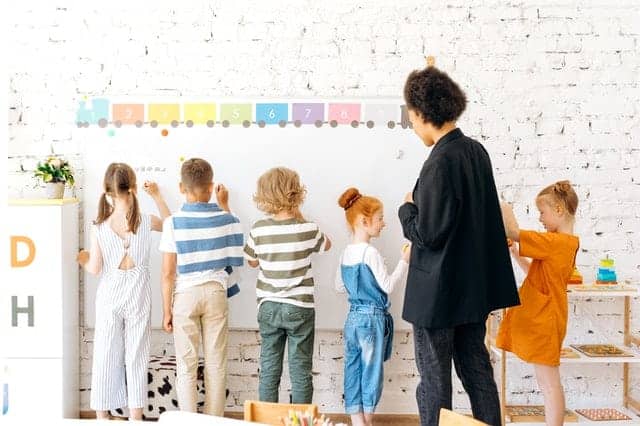
Vision boards are an excellent way for children to keep the positive aspects of their lives in front of them so when they’re feeling down, isolated, or sad, they can quickly reference their vision boards and remind themselves how much they have to be grateful for.
Gather magazines, construction paper, stickers, and any other media to help children describe what it means to be grateful. Have them create a list of things, people, or places for which they are thankful. Then have them fill their vision boards with words or photos that represent the items on their list.
Gratitude Prompts
Gratitude prompts are a great way to help children begin a consistent gratitude practice. All they need to do is consider each prompt and then fill in the blanks. The goal is to identify at least three things in each category they are thankful for. Then have them share.
The prompts can include:
I’m grateful for three things I hear:
I’m grateful for three things I see:
I’m grateful for three things I smell:
I’m grateful for three things I touch/feel:
I’m grateful for these three things I taste:
I’m grateful for these three blue things:
I’m grateful for these three animals/birds:
I’m grateful for these three friends:
I’m grateful for these three teachers:
I’m grateful for these three family members:
I’m grateful for these three things in my home:
Etc.
Writing Thank You Notes
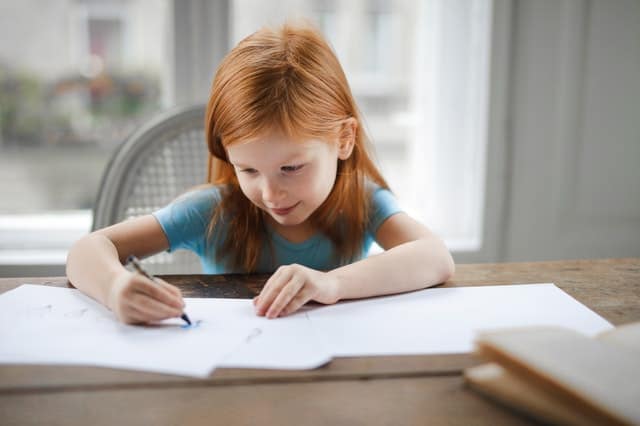
Have children choose three people in their lives who have treated them with kindness or consistently made them feel seen and heard. Then invite them to write a thank you note to each of the people they’ve chosen. The notes should include three ways in which the person made them feel loved or cared for and three ways in which they learned something about gratitude due to the person’s kindness.
Ask the students to send these notes via email, mail, or in-person with their parents’ help.
Teaching gratitude to kids helps them recognize what thankfulness feels like and looks like, as well as how it can improve the lives of those who give it and receive it. Gratitude is a powerful tool in teaching children that they can recognize beauty and kindness in the world and offer it to others.
Soul Shoppe’s mission is to create safe environments that bring forth a culture of compassion, connection, and curiosity. Our innovative, interactive, and highly effective social emotional learning programs give parents, homeschoolers, teachers, and corporations important lifelong skills. Our online programs include the Peacemakers Program, Respecting Differences, Tools of the Heart, and more.
For more information on how we can help you, contact us today.
You May Also Like:
Teaching Emotional Intelligence
Every child will face a moment when they feel like giving up. Whether it’s struggling to solve a math problem, trying to make a new friend, or missing the mark on a goal they cared about, setbacks can feel heavy. And in those moments, what they need most isn’t pressure to push harder—it’s support, reflection, and encouragement to keep going.
That’s where teaching perseverance comes in. It’s not about powering through at all costs. It’s about helping kids recognize their feelings, reframe the challenge, and rediscover their inner strength, with guidance from the caring adults around them.
In this article, we’ll explore strategies for teaching perseverance to kids, offer activities and games to keep motivation alive, and share how Soul Shoppe’s Elementary SEL Curriculum, such as Tools of the Heart, supports students as they build resilience, one step at a time.
Why Perseverance Matters
When we discuss perseverance for kids, we’re talking about more than just grit. We’re talking about confidence, emotional stamina, and the belief that trying again is always worth it.
Through social emotional learning, students begin to understand that mistakes are part of learning and that effort is something to be proud of. The result? A generation of learners who feel empowered, not discouraged, by life’s challenges.
What Perseverance Looks Like in Real Life
To a student, perseverance might sound like:
- “I didn’t get it the first time, but I’ll keep trying.”
- “This is hard, but I can ask for help.”
- “I felt like giving up, but I took a break and came back to it.”
These small moments are huge—and they’re often sparked by a teacher’s patience or a classmate’s encouragement.
If you’re wondering how to encourage perseverance, it starts with recognizing it in everyday actions.
Teaching Perseverance in the Classroom
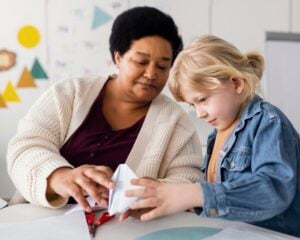 Let’s break it down into three pillars: mindset, motivation, and emotional support.
Let’s break it down into three pillars: mindset, motivation, and emotional support.
1. Reframe the Mindset
Kids sometimes believe that struggling means they’re not smart or capable. We can gently shift that mindset by introducing:
- Growth mindset language: “You can’t do it… yet.”
- Stories of perseverance: Share examples of perseverance for students, like athletes, artists, or inventors who failed before succeeding.
- Personal reflections: Talk about a time you struggled and what helped you keep going.
Encourage students to see challenges as part of the journey, not the end of it.
2. Coach the Emotion, Not Just the Behavior
When a student says, “I can’t,” don’t just cheer them on—listen. Name what they’re feeling. “It sounds like you’re frustrated because it’s not working yet.” This creates space for them to process their emotions and find their footing again.
Soul Shoppe’s Tools of the Heart program gives students the language and self-awareness to pause, breathe, and regroup—essential steps for building resilience.
3. Set Small Goals
Big goals can feel overwhelming. Help students break them into steps:
- “What’s one thing you can try next?”
- “Who could you ask for help?”
- “Let’s focus on effort, not perfection.”
This builds momentum—and that’s what perseverance thrives on.
Activities on Perseverance
Looking to bring these ideas to life? Try one of these teaching perseverance activities designed for elementary students:
Perseverance Circle Time
Ask students to share a time when something was hard but they didn’t give up. Then reflect:
- What helped them keep going?
- How did it feel to succeed (or try again)?
This builds empathy and normalizes struggle as part of learning.
Puzzle Challenge
Break students into small groups and give each team a puzzle or challenge that’s just beyond easy. Let them practice patience, teamwork, and asking for help. This is one of our favorite perseverance team-building activities.
Games That Teach Perseverance
Try conflict resolution and perseverance games for kids that include trial and error, like timed building challenges or partner trust activities. Celebrate the process, not just the result.
How to Build Perseverance Every Day
Here are a few quick practices to weave into your routine:
- Morning mantra: Begin the day with affirmations like “I can do hard things” or “Mistakes help me grow.”
- Perseverance jar: Invite students to write about a time they persevered and read them aloud weekly.
- Anchor words: Let students create cards with reminders like “breathe,” “try again,” or “ask for help.”
These small habits reinforce a powerful message: We believe in you—even when things get tough.
Teaching Perseverance – Social Emotional Learning Brings Real Growth
Perseverance isn’t just about pushing through. It’s about knowing when to pause, how to ask for support, and how to keep going when things feel hard.
Soul Shoppe’s Elementary SEL curriculum, including Tools of the Heart, teaches students to name their feelings, find calm, and connect with their inner strength. That’s the heart of teaching perseverance to kids.
Keep the Door Open
When a child wants to give up, our first job isn’t to make them keep going—it’s to remind them they’re not alone. Then, step by step, we can help them rediscover their courage.
Whether through words of encouragement, classroom routines, or SEL strategies, teaching perseverance is one of the greatest gifts we can give. And it starts with one simple truth:
You don’t have to get it perfect. You just have to keep going.
You May Also Like:
How SEL Supports Neurodiverse Students
Challenging Behaviors in the Classroom
As children grow into their voices and identities, they start to test how they can communicate their needs. In these moments, it’s important to help them understand the difference between assertiveness vs. aggressiveness. While both may appear confident on the surface, they carry very different intentions and impacts.
At Soul Shoppe, we believe that teaching students to express themselves respectfully and clearly is essential for building inclusive classrooms and lifelong social-emotional skills. Let’s explore how to support students in speaking up, without overpowering others.
What is the difference between assertiveness and aggressiveness?
Children often confuse being assertive vs. aggressive, especially when they’re learning how to stand up for themselves. At a glance, both behaviors might seem like forms of speaking boldly. But understanding the difference between aggressive and assertive behavior helps students learn how to express their needs while also showing respect for others.
| Behavior | Definition | Focus | Impact |
| Assertiveness | Clear, respectful communication of one’s thoughts and needs | Self-respect and mutual respect | Builds trust, encourages collaboration |
| Aggressiveness | Forceful, sometimes hurtful expression that violates others’ boundaries | Control or dominance | Causes fear, resistance, or conflict |
When children understand this distinction of aggressive vs. assertive communication, they can practice it in real-life scenarios, especially when things get tense.
Teaching assertiveness in the classroom
Assertiveness is a skill, and like all skills, it needs to be taught, modeled, and practiced. Here’s how to begin:
1. Define it with age-appropriate examples
Give clear, relatable examples of what being assertive sounds like:
- “Please stop, I don’t like that.”
- “I’d like a turn when you’re done.”
- “I feel left out. Can I join you?”
Contrast this with aggressive phrases:
- “Stop it now or I’ll tell!”
- “Move! That’s mine!”
- “You’re being mean!”
Helping students reflect on the difference between assertiveness and aggressiveness builds both empathy and self-awareness.
2. Use role-play and scenarios
Practice makes it real. Create assertiveness vs. aggressiveness role-play activities where students choose how to respond in common social situations. Let the class reflect on how each response feels, for both the speaker and the listener.
3. Model respectful expression
Students learn what they see. When adults calmly and clearly assert themselves, especially during moments of disagreement, students learn that respect and strength can go hand in hand.
Soul Shoppe tools that support assertiveness
We integrate assertiveness training into many of our social-emotional learning resources to help students express their needs and resolve conflict peacefully.
- Peace Path: This tool walks students through conversations about feelings, needs, and boundaries in a structured way, modeling respectful dialogue.
- Peacemaker Training: Designed to give educators and students alike the tools for assertive conflict resolution, this training empowers students to become community leaders.
- Elementary SEL curriculum: A foundation for teaching emotional intelligence, empathy, and effective communication in every classroom.
Each of these resources help students develop emotional literacy, build strong relationships, and speak up from a place of calm clarity.
Activities to practice assertive communication
Use these classroom activities to reinforce assertive vs. aggressive communication:
“Say It with Respect”
Give students sticky notes with different phrases and have them identify which are assertive and which are aggressive. Then, challenge them to rephrase the aggressive ones using assertive language.
Feelings & Needs Circles
Invite students to share a time when they had a need that wasn’t met. Use sentence starters like “I felt ___ because I needed ___.” This teaches kids how to express needs directly, a key part of assertiveness.
“Voice Volume” Meter
Use a visual scale (e.g., whisper, calm voice, shout) to help students monitor how they’re communicating. This helps them associate calm, firm speech with assertiveness.
Helping students navigate emotional triggers
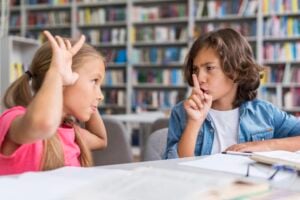 Often, aggressive communication is a reaction to strong emotions like anger, embarrassment, or fear. When we address the emotion underneath, we can support students in shifting from reactivity to intention.
Often, aggressive communication is a reaction to strong emotions like anger, embarrassment, or fear. When we address the emotion underneath, we can support students in shifting from reactivity to intention.
Here’s how to support that:
- Normalize big feelings and teach calming techniques before responding (like breathing or taking a moment).
- Encourage students to notice how their body feels when they’re upset—this is the first step to choosing how to respond.
- Validate the need or feeling while guiding them to a more respectful way of expressing it.
Soul Shoppe’s Social Emotional Learning programs help students build these self-awareness muscles over time.
Why it matters: long-term benefits of assertiveness
Children who learn to be assertive without being aggressive tend to:
- Form stronger friendships
- Set healthy boundaries
- Resolve conflicts more peacefully
- Feel more confident expressing their needs
These are lifelong skills. When we make space for this kind of learning in our classrooms, we’re not just reducing conflict—we’re cultivating future leaders who lead with integrity.
Final thoughts: teaching voice and respect
Helping students navigate assertiveness vs. aggressiveness is about more than classroom behavior. It’s about giving them the tools to honor themselves and others at the same time. By practicing respectful communication, learning to manage big emotions, and embracing self-expression, students grow into thoughtful, confident communicators.
Using tools like the Peace Path and programs like Peacemaker Training, we can teach assertiveness not as dominance, but as a balanced, respectful, and empowered voice.
You May Also Like:
Teaching Children About Reading Social Cues
Our young people are speaking up. At March for Our Lives rallies across the country, they showed up to hear and hold each other, and to work toward a simple dream of safe schools. Their message, their leadership and the community they have built is inspiring. By sharing their feelings and their needs, these young people have found common ground in their experiences, whether they come from Florida or Chicago or Los Angeles or anywhere in between. Because they are listening and actually hearing each other, they have been able to build a movement.
We know the power and healing that comes from being heard. We know that we need allies who will help us to express our feelings in healthy ways. Allies give us the support we need. With the help of our allies we can create a safe environment so that everyone can speak their truth – even when we don’t understand or when it’s hard to hear. Allies help us to work toward solutions that serve the best interests of all. This is the role our Peacemakers have on school playgrounds across the country.
Peacemakers are 3rd, 4th and 5th grade students who are trained to help their classmates resolve conflicts that occur on the playground, in classrooms, or the cafeteria. They learn conflict resolution skills, communication tools and leadership. When a conflict arises, two peacemakers literally walk their peers through the Soul Shoppe Peace Path. They use our seven-step process and work through the problem until it’s resolved.
While the process is important, the Peacemakers themselves and the qualities they embody are the heart of the program. They are allies to one another in facilitating the peace process and allies for their classmates to ensure that each person is heard. Peacemakers come to every interaction with ally strategies that change the dynamic from punishment or shame to mutual understanding.
One of the strategies they use is “dropping the story.” Every one of us has the impulse to form an opinion about a person whether we know them or not. To be an ally, it’s important to let go of assumptions and judgments. Peacemakers learn to counteract that impulse by telling themselves, “I’m dropping the story.” This is easier said than done! Try it for yourself. For the next five people you see, actively interrupt your thoughts by saying, “I’m dropping my story.” You might be surprised at how quickly we create stories about everyone we encounter. Notice what changes in your interactions when you let go of them.
The next ally strategy is “open mind.” An open mind includes actively listening with ears, eyes and heart. Peacemakers look for feelings that aren’t explicitly voiced, but can be read from body posture, from the tone of someone’s voice, from the look in their eyes or from a gut feeling they have. Our bodies are sensitive to other people’s emotions, and we can generally read other people well when we take the time to do it. Taking a moment to stop and breathe and tune in to someone else allows the Peacemakers to see what is going on. As a result, the person feels genuinely heard, and being deeply heard is sometimes all a person needs. Having someone stop and listen is powerful medicine.
A third ally strategy is “listen to all sides.” Peacemakers remain neutral, not taking sides or deciding who is right or wrong. As an ally, the goal is to understand the needs of each person. Right/wrong is not an important concept. Peacemakers listen, not to decide or to judge, but to help each person speak and be heard.
These are a few of the tools that Peacemakers put into action. As you can imagine, when schools have Peacemakers, the entire culture of conflict shifts. Disagreements are settled not by who can yell the loudest or run away the fastest or with a quick punishment, but by listening deeply to one another’s needs. When students receive the tools/support to solve problems themselves, they learn that conflict can be an opportunity to build connection.
We’re inspired by the power of our young people. Let’s continue to give them opportunities to step into leadership in our classrooms, schools and communities. Let’s support our next generation of leaders by sharing our skills, resources and knowledge. Most importantly, let us be allies to them by listening deeply and hearing what they truly need.
Would you like more Soul Shoppe in your home? We’ve put together a special package for you! Our new Peacemakers @ Home Kit contains two of each of our highly coveted peace path (laminated, 8 1/2″ x 11″) and peace keys. Instructions on how to get started are included. Order between now and April 20th and use code PMAPR to receive free standard shipping. Click here.
Contact Amanda to find out how to bring our Peacemaker Program into your favorite elementary school.


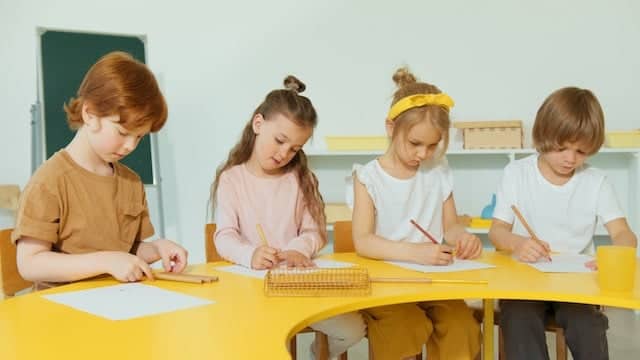
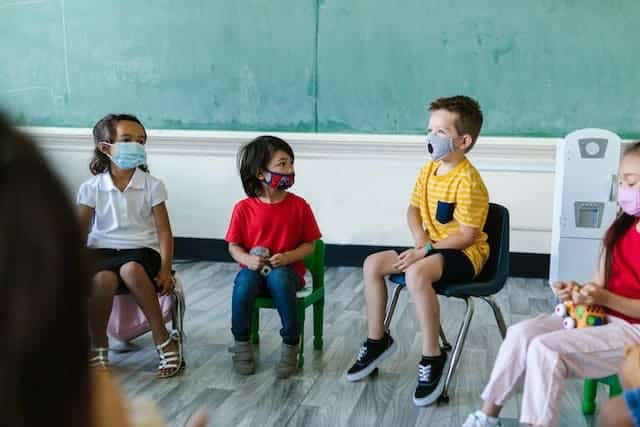
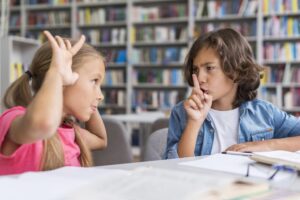 Let’s walk through student-centered strategies that give kids the tools to navigate tough moments themselves, with adult support when needed.
Let’s walk through student-centered strategies that give kids the tools to navigate tough moments themselves, with adult support when needed.


 When it comes to helping kids
When it comes to helping kids 